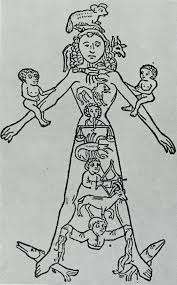
Going to - or coming back from those hills?
"The esoteric function of the nome in the body of Egypt is revealed through the character of the nome spirit. For instance, at the 8th nome of Upper Egypt, the nature spirit of the region was 'Khentiamenti', a figure that both guarded and led the way to ''the hidden land'' of the departed, 'Amentet'. It was believed in ancient times that the entrance to Amentet, over which Osiris presided, was physically located in the region between Thinis and Abydos, ''between the two hills'' {'horizon' link?}, a reference to the 'shoulders' of Khentiamenti. Thinis, the earlist burial place of royal persons known in Egypt, was later {evolution of?} incorporated with the town of Abydos and assumed a nome standard called ''the shrine of the head'', identical to that of the Osirian relic depicted in the reliefs at the Abydos temple, where the head of Osiris was said to be enshrined. Khentiamenti, the earthly govenor of the area, assumed the form of Osiris as a shadowy, mirror image of the celestial power with which he was associated. But more importantly, Abydos as the ''head'' of the terrestrial body of Osiris represented the place where the neter's form spread itself northward over the Nile." [From the book by Rosemary Clark].
Question. Why should that be ''more important''?
'Diamond of Virgo'
'Waters of the Gap'. Feet first or head first?
Something to ponder on: {From the temple of Osiris at Denderah}: "The Great One 'falls' upon his side....You shall reach the sky as Orion....remove yourself from upon your left side, put yourself upon your right side....for you belong to the stars who surround Re." [' The Death of Gods in Ancient Egypt' / Jane Sellers].
Question 2. Was 'Alexandria' {at its 'conception'} also laid out in 'human form'? If so, where would the 'head' be represented?
Question 3. ''Shoulders'' in relation to defining something {aspects of} within Homer's Illiad?
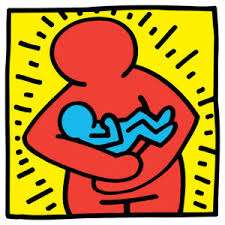 A side step: "This is a true story, about a boy king born through an ''immaculate conception'' on the banks of the Nile, more than 3000 years ago. He taught his people the science of the 'sun'....when he died they say he went to the 'stars'. They called him the feathered snake. But first i need to tell you about the boy king of Mexico. He too, was born through an ''immaculate conception,'' more than 1250 years ago in the jungles of Mexico. He taught his people the science of the 'sun'. When he died he too went to the 'stars'. They called him the feathered snake." [Introduction to the book, 'The Tutankhamun Prophecies' {The sacred science of the Mayas, Egyptians and Freemasons} by M. Cotterell]. See anything? [After 'pooling' together all the available information....by way of...objective reasoning / analysis].
A side step: "This is a true story, about a boy king born through an ''immaculate conception'' on the banks of the Nile, more than 3000 years ago. He taught his people the science of the 'sun'....when he died they say he went to the 'stars'. They called him the feathered snake. But first i need to tell you about the boy king of Mexico. He too, was born through an ''immaculate conception,'' more than 1250 years ago in the jungles of Mexico. He taught his people the science of the 'sun'. When he died he too went to the 'stars'. They called him the feathered snake." [Introduction to the book, 'The Tutankhamun Prophecies' {The sacred science of the Mayas, Egyptians and Freemasons} by M. Cotterell]. See anything? [After 'pooling' together all the available information....by way of...objective reasoning / analysis].
Question. Why ''feathered''. Clue. Horizontal / vertical link. Enlarged elsewhere.
"For after all, as he himself noted, all the religions are like different colored stones in the 'crown' of The One King." [Introduction to the book 'The Presence of Other Worlds' / Emanuel Swedenborg]. Try "crown".
Golden 'child', in relation to a ''golden shield,'' in relation to a ''golden throne,'' relative to Venus, with an understanding in mind, i.e.,...........
"So Shishak king of Egypt advanced on Jerusalem and carried off the 'treasures of the Temple' and the treasures of the royal palace. He took everything away, including the golden shields that Solomon had made. [II Chronicles 12:9]. Extract from page 140, 'A Test of Time' by David Rohl.
"The dating of the Venus observations, recorded on British Museum Tablet K.160, to the reign of Ammisaduga can be ascertained by the appearance of the phrase 'Year of the Golden Throne' before the astronomical observations which it records for 'year 8', Other tablets from the Old Babylonian period have demonstrated that the phrase 'Year of the Golden Throne' was the date formula for the eighth regnal year of....etc." [Page 289, same book].
To understand that ''information'' understand this subject. The author uses such biblical 'narratives' [or negates them] to determine new 'dates' for that epic biblical tale, therefore predicting that such remnants of such buildings as Solomons will be found. To understand that tales true purpose, understand this subject. Found within.
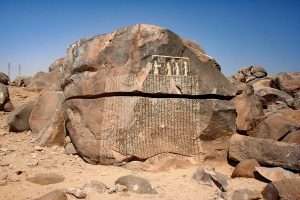
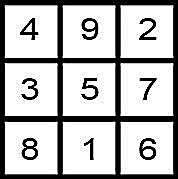 "More than fifteen centuries have passed since the appearance of St. Augustine's great work 'The City of God' [Civitas Dei]. This work represents the first comprehensive survey of world history, as far as it could be known at that time, reaching beyond the political, social, and economic aspects. This history of the world embraces not only the conflicts and struggles between various human interests, but also - and especially - the workings of a providence that transcends them... It was the first work of philosophical history in the West that was intended at the same time to be a further pursuance of the biblical method of approach. Augustine learned from the Bible to distinguish the essential from the inessential, and to perceive the relationships of essential significance between events in the course of the destiny of humanity. Making use of this method that he had learned from the Bible, he also applied it to a consideration of post biblical times. Thus arose in the occident the first work that had something to say about the meaning of world history." [Chapter 3, 'Lazarus Come Forth'. Mentioned elsewhere].
"More than fifteen centuries have passed since the appearance of St. Augustine's great work 'The City of God' [Civitas Dei]. This work represents the first comprehensive survey of world history, as far as it could be known at that time, reaching beyond the political, social, and economic aspects. This history of the world embraces not only the conflicts and struggles between various human interests, but also - and especially - the workings of a providence that transcends them... It was the first work of philosophical history in the West that was intended at the same time to be a further pursuance of the biblical method of approach. Augustine learned from the Bible to distinguish the essential from the inessential, and to perceive the relationships of essential significance between events in the course of the destiny of humanity. Making use of this method that he had learned from the Bible, he also applied it to a consideration of post biblical times. Thus arose in the occident the first work that had something to say about the meaning of world history." [Chapter 3, 'Lazarus Come Forth'. Mentioned elsewhere].
'Mans Search for Meaning' / Viktor Frankl.
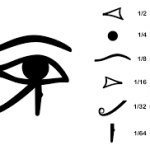
64 aspects?

Pressed flowers found in the 'middle' of the forehead.
A working example of ONE method: ''Aztec rulers were fascinated by a particular variety of 'starfish' - whose orange and brown coloration resembled one their most venerated symbols of 'power' the Jaguar {higher or 'lower'?}....onehundred and 'sixtyfour' found in a ritual offering - in the Temple Mayor complex - at the Aztec capital {'Center'?}, Tenochtitlan.....A female Jaguar, lying in a bed of thousands of seashells and pieces of coral...with fragments of starfish. Most had become decomposed with the exception of one, which had remained intact, because it had been flattened into the soil like a pressed flower: ''Its coloration looks like a Jaguars fur, which is what probably attracted the Aztecs to it....Aztec rulers kept them alive in shallow pools, but never this many in one place.'' ['Archaeology' / SEP/OCT 2022].
''Still Waters''?
'Stamp' of the feminine?
'Clover' to enlarge.
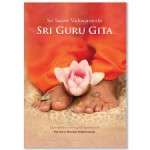
'Spirit' or 'Soul'? Male or female feet.

Essence?
Side note: ''Once in a courtyard cafe in Khan el Khalil, i caught the scent of the body of heaven, the intoxicating perfume of pressed flowers. What were those bright petals crushed in the embrace of form? What were the names of her children? On the way to Giza a splash of red petal had streaked past the car. ''What was that flower?'' i asked the driver. 'Zu-hoor. All are zu-hoor. Flower is for woman to know. Dont ask me i'm a man.' In Khan el Khalil essence of zu-hoor wafted across the table, mingled with the aroma of thick, black coffee.'' [ Page 335 'Dreams of Isis'].
''Ethiopia is Africa's leading producer of coffee...Originates in Yemen.''
Land of Punt?
'The Shipwrecked Sailor'.
"Khan el-Khalili (Arabic: خان الخليلي) is a famous bazaar and souq (or souk) in the historic center of Cairo, Egypt. Established as a center of trade in the Mamluk era and named for one of its several historic caravanserais, the bazaar district has since become one of Cairo's main attractions for tourists and Egyptians alike. It is also home to many Egyptian artisans and workshops involved in the production of traditional crafts and souvenirs. The name Khan el-Khalili historically referred to a single building in the area; today it refers to the entire shopping district."
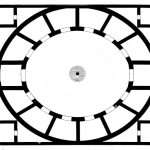
Chester to enlarge.
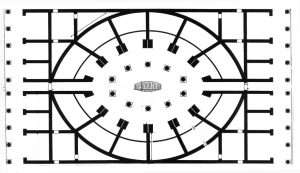
'Bathing' to enlarge.
"Cairo was originally founded in 969 CE as a capital for the Fatimid Caliphate, an empire which by then covered much of North Africa and parts of the Levant and the Hijaz. Jawhar Al-Siqilli, the general who conquered Egypt for the Fatimids, was ordered to construct a great palace complex to house the caliphs, their household, and the state's institutions.[2] Two palaces were eventually completed: an eastern one (the largest of the two) and a western one, between which was a plaza known as Bayn al-Qasrayn ("Between the Two Palaces"). The site of Khan el-Khalili today was originally the southern end of the eastern Fatimid palace as well as the location of the burial site of the Fatimid caliphs: a mausoleum known as Turbat az-Za'faraan ("the Saffron Tomb").[3][4][2]: 57 Also located here was a lesser palace known as al-Qasr al-Nafi'i (today the site of the 19th-century Wikala of Sulayman Agha al-Silahdar)....
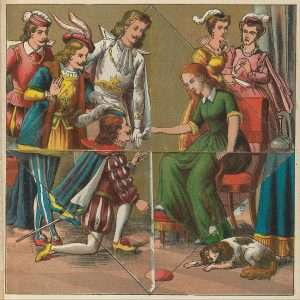
'Lozenge'?
About one quarter of the palace to the northeast was taken up by a great square called Rahbat al-Eid ("Festival Square"), measuring 157 by 105 meters, which was the starting point for the caliph's processions through the city.[4] One of the eastern gates, called Bab al-Zumurrud ("Emerald Gate"), opened off this square and gave access to the part of the palace known as the Emerald Palace, the private residence of the caliph.[4] Another gate opening off the southern side of the square was called Bab al-Eid. An arsenal hall, called Khizanat al-Bunud (roughly the "Arsenal of Banners/Flags"), lay to the east of the palace, as did a gate known as Bab Qasr al-Sharq ("Eastern Palace Gate").[4] The southeastern gate, Bab Daylam ("Gate of the Daylamites"), led to the monument that later became the shrine of al-Husayn (see below), while the southwestern gate was called Bab Turbat al-Za'faraan (or Bab al-Za'faraan), after the name of the adjacent royal mausoleum (see below).[4][7]
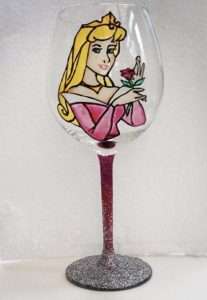
'Glass' of wine or water? Half empty or half full?
The southwestern part of the palace was occupied by the kitchens, which also provided food for the poor during the fasting month of Ramadan. The southernmost of the western gates, located here, became known as Bab Zuhuma, named after the odours of food emanating from the kitchens.[4] The only northern gate of the palace, Bab al-Rih ("Gate of the Wind"), was the entrance used by the da'is. This gate may also have been the last one to disappear in the post-Fatimid period, having survived at least until 1408 and having been seen by Maqrizi."
"Tombs found in Nubia belonging to the Kings and Queens. Both have military symbols of bows/arrows and spears. Pyramid shape but very 'steep'. Over the years the women's tombs start at the periphery of the central kings pyramid tomb. Surrounding it. Until eventually {'spiritual evolution'} it's the Queens tomb that becomes the central feature with others surrounding it. From external to internal. That central 'sacred space' being surrounded by miniature 'colonnades' in triangular form. ['Mysteries From Above: Nubia' / S1 EP5].

Spirt/Soul. Which and why?
Macro or Micro?
Peristyle to enlarge.
'Court'.
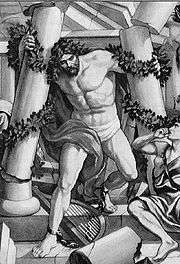 A work in progress: "The difference between a 'castle' and 'palace': Tintagel was a castle, the mans place, wherein the woman's quarters were confined to one part - The Bower, which is a miniature palace wherein the man enters and the women come forward and unhelm him and take charge of his armour and weapons and there entertain him with the arts of peace, thus refreshing him. They tend his wounds and minister to him the graces, the tendernesses and the arts of life. Thus is civilisation born and nurtured. The Bower is a secluded haven of peace in a world of war. It is like the Arc of the Covenant in which the holy vessels are preserved during the sojourn in the wilderness. To each man his home should be a bower whether he returns from his war with the world, which is his formula for rest and comfort of body and refreshment of spirit....The formula of Camelot is the formula of the cultivation of a high civilisation in times of peace, in an ordered environment, and it is a Queens formula as Tintagel is a King's formula." [Page 62/3 'The Arthurian Formula' ].
A work in progress: "The difference between a 'castle' and 'palace': Tintagel was a castle, the mans place, wherein the woman's quarters were confined to one part - The Bower, which is a miniature palace wherein the man enters and the women come forward and unhelm him and take charge of his armour and weapons and there entertain him with the arts of peace, thus refreshing him. They tend his wounds and minister to him the graces, the tendernesses and the arts of life. Thus is civilisation born and nurtured. The Bower is a secluded haven of peace in a world of war. It is like the Arc of the Covenant in which the holy vessels are preserved during the sojourn in the wilderness. To each man his home should be a bower whether he returns from his war with the world, which is his formula for rest and comfort of body and refreshment of spirit....The formula of Camelot is the formula of the cultivation of a high civilisation in times of peace, in an ordered environment, and it is a Queens formula as Tintagel is a King's formula." [Page 62/3 'The Arthurian Formula' ].
The Vine?
Imhotep.
And/or: "Rid me, and deliver me from the hand of strange children, whose mouth speaks vanity, and their right hand is a right hand of falsehood: That our sons may be as plants grown up in their youth; and that our daughters may be as corner stones, polished after the similitude of a palace....Happy is that people who is in such a state." [Psalm 144 :11-15].
To know one's onions?
#The flower of youth?
Side note: The first cartoon/film in technicolor was called "Flowers and Trees" - July 30th 1932. {'How Disney Built America' / S1 EP2}.
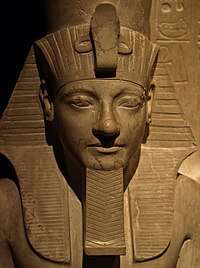
Inscription found within: "Hereditary Prince." At a later time the image of a snake had been 'added'. "Sculptor" to enlarge. Question. 'Right hand' of Tutankhamun or Tutankhaten?

The man in Venus or Venus in the man?
Continued: "The Memphite Tomb of Horemheb is located in the Saqqara necropolis, near Memphis, Egypt.[1] It was constructed before Horemheb ascended to the throne and was never used for his burial, since he later built the Theban tomb KV57 for this purpose. His two wives Mutnedjmet and Amenia were buried within the structure.
The tomb was discovered by art robbers at the beginning of the 19th century. Looted reliefs were acquired by a number of European and American museums. The tomb's location was then lost, it was relocated in 1975 and excavated in 1979.
The tomb was built in three phases, as Horemheb's status rose. The first design consisted of an entry pylon into forecourt, a colonnaded court containing the burial shaft and three chapels or offering rooms. Intrusive burials were found in the side chapels. The forecourt was then walled to produce two small chapels, one at each side. They were entered by two new piercings through the pylon. A new walled forecourt was constructed in front of the pylon. To make this extension a 5th–6th Dynasty mastaba was demolished and the burial shaft with a burial chamber some 17m below incorporated into the new forecourt. Burials from the 19th Dynasty were found at 9m depth. Finally the forecourt was closed by a pylon some 7m high and colonnaded to form the first peristyle open court. The narrowed original forecourt was covered with a vaulted roof and contained statues while the chapels became storage rooms."
Shadow / Light.

'Tomb' or gateway?

'Three and Four' = ''two in one''?
A work in progress: "Poliphilo tells that he saw remarkable things in a dream - 'the strife of love in a dream'. He represents himself as having seen many ancient things worthy of memory....He describes point by point in the appropriate terms: pyramids, obelisks, huge ruins of buildings, the varieties of columns {collonade'?}, their measurements, capitals {Ionic/Doric?}, bases, epistyles or straight beams, bent beams {Bent pyramid?}, zophori or friezes {scroll?}, and cornices with their ornaments....
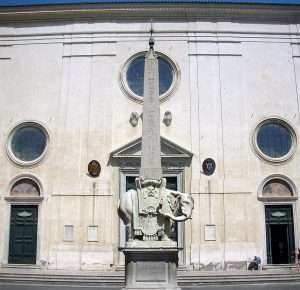
Round the corner from....?

The Colossus of Rhodes: “To you, O Sun, the people of Doric Rhodes raise this bronze {'copper'?} statue which reaches Olympus after calming {'cooling'?} the waves of war and crowning their city with the spoils of the enemy. Not only over the seas but also on land they light the sweet torch of freedom. “ 'Joy'?
Votive inscription on the Colossus.
There is a great horse, an enormous elephant, a colossus, a magnificent portal with its measurements and ornaments, a fright, the five senses represented with five nymphs, a remarkable bath, fountains, the palace of the queen who is 'Freewill', and an excellent royal feast. He tells of the variety of gems or precious stones, and their nature; a game of chess in a ballet with music in triple time; three gardens, one of glass, one of silk and one a labyrinth; which is human life; a peristyle of brick in whose center the trinity was expressed in hieroglyphic figures, that is, in the sacred engraving of the Egyptians; the three portals before which he tarried; Polia, her apperance and behaviour. Then Polia leads him to watch four wonderful triumphs of Jupiter, the women loved by the gods and by poets, the various affects and effects of love; the triumph of Vertumnus and Pomona; the sacrifice to Priapus, in ancient style; a marvelous temple, artistically described.....
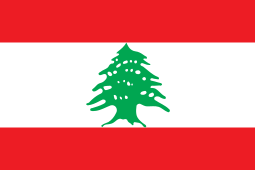
Lebanon.
Side note: The use of the word "symbolic" may be misleading. Symbols demand an interpretation, whereas in all these examples the meander itself is an explanatory sign that was understood immediately. The winding stairways leading to the temple terrace were characterized as labyrinths by the meander pattern. Here we have at least two elements clarifying the nature of the labyrinth : the staircase is a spiral, a winding path, and this path leads upward. Of the painted vases that Wolters cites from the fifth and sixth centuries, three are particularly instructive......
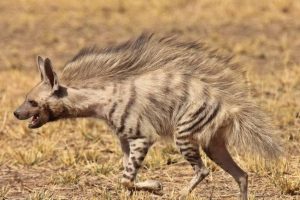
The striped Hyena. Lebanon's national animal.
The painter Aison's bowl shows Theseus dragging the Minotaur out from the background with the help of the goddess Athena. The meander appears not only in the vertical stripe surrounding the labyrinth in the background, but also on the Ionic columns of a vestibule evidently built in front of the labyrinth." {Page 91 'Dionysos: Archetypal Image of Indestructible Life' / C. Kerenyi}.
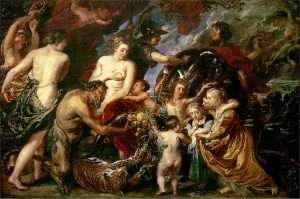
Minerva protecting Peace from Mars or Peace and War is a painting by Peter Paul Rubens. It shows Minerva (goddess of war, wisdom and crafts) fighting off Mars, with the nude figure of the goddess Pax (commonly known as "Peace" in English) in the centre.
Continued: Then how he went with Polia to await Cupid at the shore, where there was a ruined temple, at which Polia persuades Poliphilo to go inside and admire the antiquities. Here he sees many epitaphs and an inferno depicted in mosaic. How he was frightened, and left them to return to Polia. And as they were standing there, Cupid arrived with the boat rowed by six nymphs, on to which they both went, and Amor made a sail with his wings. Honours were made to 'Cupid' {female animus?} by the gods, goddesses, the nymphs and monsters. They reached the island of Cytherea {Cyprus}, which Poliphilo describes fully as divided into groves, meadows, gardens, streams and springs....
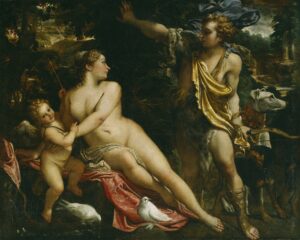
Venus/Cupid/Adonis. Any 'triangles'?
Presentations were made to Cupid, and he was welcomed by the nymphs, then they went on a triumphal chariot to a wonderful theatre, all described, in the middle of the island. In its centre is Venus's fountain with seventy precious columns. He tells of all that happened there, and how when Mars {Ares} arrived they left and went to the spring where Adonis's tomb was; and there; and there the nymphs tell of the anniversay that Venus kept in his memory. Then the nymphs persuade Polia to tell of her origins and her falling in love; and that is the first book. In the second, Polia tells of her ancestory, the building of Treviso {Northern Italy}, the difficulties of her falling in love and their happy conclusion.....Then at the song of the nightingale he awakes." [Pages 5-6 'Hypnerotomachia Poliphili' ].
Cytherea is a genus of bee flies (flies in the family Bombyliidae).
 Continued: ''There was a storm. And thousands and thousands of starfish were washed up on the shore. And there was this beautiful little girl running down the beach and she was picking up the starfish, she was frantically throwing them back into the ocean. When I saw her doing this I said to her, 'Why are you doing that? You can only save a few before they die, what difference does it make?' And she looked at me and she said, 'To THAT one, it makes a difference.' To THAT one, it makes a difference, that little girl said. And she was right and at that very moment she was making a difference for that starfish and she was making a difference for herself too because she was connected, to that starfish. And that's what 'life' is all about, connecting. In fact that's the only time you're ever alive, really, is when you're connecting.''
Continued: ''There was a storm. And thousands and thousands of starfish were washed up on the shore. And there was this beautiful little girl running down the beach and she was picking up the starfish, she was frantically throwing them back into the ocean. When I saw her doing this I said to her, 'Why are you doing that? You can only save a few before they die, what difference does it make?' And she looked at me and she said, 'To THAT one, it makes a difference.' To THAT one, it makes a difference, that little girl said. And she was right and at that very moment she was making a difference for that starfish and she was making a difference for herself too because she was connected, to that starfish. And that's what 'life' is all about, connecting. In fact that's the only time you're ever alive, really, is when you're connecting.''
THAT universal 'bit'?
''A starfish does not have a centralised brain.''
Mummification? {i.e., what happens to the brain}.

Blind date - with Venus?
 "Like the hexagram, the origins of the pentagram lies in the mists of time, long before the Solomonic period. The symbol is also referred to as a pentalpha, pentangle, or pentacle. Some of the earliest archeological discoveries that reveal the use of a pentagram figure have been found in the area of the Middle East...The symbolism attached to the use of the pentagram appears to have varied depending on the culture in which it was used. In the past, it has symbolized the 'five' elements of earth, fire, water, air and ether, with ether being associated with the 'spirit'. It is also seen as representing the five senses of sight, hearing, smell, touch, and taste...According to some researchers, the use of the pentagram dates back to at least the epoch of a ruler in Mesopotamia named Uruk IV, around 1300 BC. Around that time the pentagram apparently symbolized 'heavenly quarter' or 'direction' {as one example S/W?}. Through this we can see that an early symbolic definition {intention?} provided a link with astronomy.....
"Like the hexagram, the origins of the pentagram lies in the mists of time, long before the Solomonic period. The symbol is also referred to as a pentalpha, pentangle, or pentacle. Some of the earliest archeological discoveries that reveal the use of a pentagram figure have been found in the area of the Middle East...The symbolism attached to the use of the pentagram appears to have varied depending on the culture in which it was used. In the past, it has symbolized the 'five' elements of earth, fire, water, air and ether, with ether being associated with the 'spirit'. It is also seen as representing the five senses of sight, hearing, smell, touch, and taste...According to some researchers, the use of the pentagram dates back to at least the epoch of a ruler in Mesopotamia named Uruk IV, around 1300 BC. Around that time the pentagram apparently symbolized 'heavenly quarter' or 'direction' {as one example S/W?}. Through this we can see that an early symbolic definition {intention?} provided a link with astronomy.....
Side note: "Although the name Punjab is of Persian origin, its two parts (پنج, panj, 'five' and آب, āb, 'water') are cognates of the Sanskrit words पञ्च, pañca, 'five' and अप्, áp, 'water', of the same meaning.[2][12] The word pañjāb thus means "The Land of Five Waters", referring to the rivers Jhelum, Chenab, Ravi, Sutlej, and Beas.[13] All are tributaries of the Indus River, the Sutlej being the largest. References to a land of five rivers may be found in the Mahabharata, which calls one of the regions in ancient Bharat Panchanada (Sanskrit: पञ्चनद, romanized: pañca-nada, lit. 'five rivers').[14][15] Persian place names are very common in Northwest India and Pakistan. The ancient Greeks referred to the region as Pentapotamía (Greek: Πενταποταμία),[16][17][18] which has the same meaning as the Persian word......
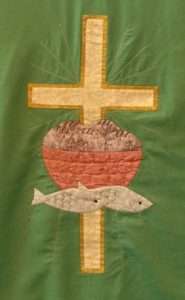
Bread/fishes.
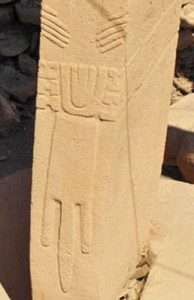
Belly?
Punjab (/pʌnˈdʒɑːb, -ˈdʒæb, ˈpʊn-/; Gurmukhi: ਪੰਜਾਬ; Shahmukhi: پنجاب; Punjabi: [pə̞ɲˈdʒäːb] ⓘ; also romanised as Panjāb or Panj-Āb)[b] is a geopolitical, cultural, and historical region in South Asia. It is specifically located in the northwestern part of the Indian subcontinent, comprising areas of modern-day eastern-Pakistan and northwestern-India. Punjab's major cities are Lahore, Faisalabad, Rawalpindi, Gujranwala, Multan, Ludhiana, Amritsar, Sialkot, Chandigarh, Shimla, Jalandhar, Patiala, Gurugram, and Bahawalpur.
Punjab grew out of the settlements along the five rivers, which served as an important route to the Near East as early as the ancient Indus Valley civilization, dating back to 3000 BCE,[3] and had numerous migrations by the Indo-Aryan peoples. Agriculture has been the major economic feature of the Punjab and has therefore formed the foundation of Punjabi culture, with one's social status being determined by land ownership.[3] The Punjab emerged as an important agricultural region, especially following the Green Revolution during the mid-1960s to the mid-1970s, and has been described as the "breadbasket of both India and Pakistan."
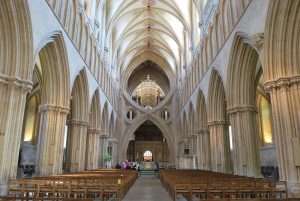
Next level up. Glastonbury to enlarge.
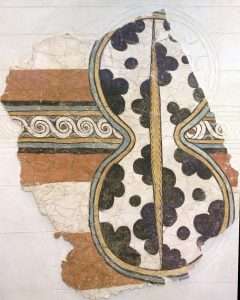
Mycenaean Shield. 'Heraldry'?
Continued: This may be significant because the pentagram is often connected with the planet Venus. This connection seems to emanate from an esoteric astrological belief that suggested that various conjunctions of that planet with the sun will result in observing 'five' distinct patterns, each of 8 years of duration, which describe the pentagram pattern in the sky over a period of 40 years {5x8}. This pattern was, apparently, so regular that the 40 year cycle became a stellar clock for ancient peoples who had noted that the planet returned to the same relative position in the sky after each 40 year cycle...References in the Bible to various periods of '40 days and 40 nights' derives from an allusion to the cyclical passage of Venus as it was understood by ancient civilizations. Although modern astronomers deride this ancient concept of the cyclical passage of Venus, it still held sway until very recent times..." [From the book by K. Gest. All emphasis, this readers].
A representation of something ONLY. Question. Which - ''action {'metal'?} of the mind'' - came first - this subject, astronomy or observations of the night sky? AND why?
Side note: ''The mind is more like a butterfly, to be caught in a gossamer web {'net'?} rather than a hard steel trap.'' [Page 130 'The Path Through the Labyrinth' / M. Green].
''origins'' - in relation to 'seven' and 'twelve' {enlarged elsewhere} - and NOW 'five' - leading to an understanding of what 'forty' may represent. Question. Illiterate pagan mathematicians?
'The Celtic Latin Tradition of Biblical Style' by D. Howlett.
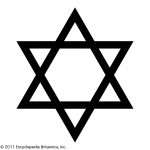
What would the Celtic equivalent be?
"This book has grown out of an inquiry into the structure of works written in Latin and Old English at the court of King Alfred the Great in Wessex at the end of the 9th century. To account for features in them which seemed odd i examined other Old English verse composed before the end of the 9th century. After finding the same features i examined Anglo-Latin prose and verse from the 7th century onward, then Celtic Latin prose and verse from the 5th century onward, then the Bible in Latin, in Greek and finally Hebrew, with which i should have begun." [Prologue to the above book by D. Howlett].
''Odd'' in relation to 'peculiar'. Anything?
REFRESHER: "The children of Seth [Set] first possessed that peculiar sort of wisdom, which is concerned with the heavenly bodies."

Synchronistic?
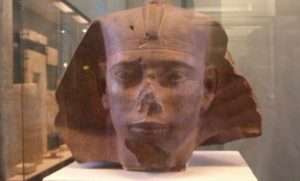
Djedefre.
As one example: "The hidden mystery of Mabon, son of Madron is that of the Youth, Son of the Mother - a universal archetypal pattern of which all peoples have some knowledge, but which has particular native variants depending on the culture and time scale involved. Within British tradition, 'Mabon is not only the Great Prisoner, he is also the Immemorial Prisoner, the Great Son who has been lost for aeons and is at last found.' And if he is without a personal name, what might that name be? {Alfred?}...There is an archetypal mystery pattern underlying the Mabinogion in which many of its 'heroes' can be seen as types of Mabon..." [Page 152 'Mabon and the Mysteries of Britain' / C. Mathews].
'Sir pots a-lot' {Stephen Henry - 'Would i Lie to You' / bbc1}.
''Aeon means literally 'age' but it also stands for the spirit of an age or period of time personified as a 'god'...'' [Page 299 'Magi: The Quest for the Secret Tradition'].
Side note: Funniest 'put down' in history: Tom Hanks visiting DiCaprio in prison - ''Frank, would you be interested in working for the F.B.I. ?'' DiCaprio: ''I'm going to have to think about it - i've already got a job in here....'' ['Catch Me if You Can' / 2002].

“Most certainly, I tell you, one who doesn’t enter by the door into the sheep fold, but climbs up some other way, is a thief and a robber."
Continued: Neil Oliver investigates the possible burial site of same: Hyde Abbey = last known site, until it was replaced by a 'prison'. A Mr 'Page' {'Keeper of the Prison'} tells an amateur historian that some bones were found by the local inhabitants of prison while digging the 'foundations' - ''A lead coffin within a Stone One'' - eventually 'smashed' - bones 'scattered' . Later on the story embellished with the word ''spring''. Nothing found. ['The Search for Alfred the Great' / Satellite TV]. Try ''gathering'' / ''lead'' etc.
Question. Was Mr Page or any members of the Council that purchased the land in order to grant planning permission - 'participants' in any ''mystery clubs'' and/or ''Christians''?
Try ''Herod'' for analogy on ''same theme''.
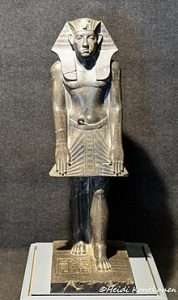
'Joy'?
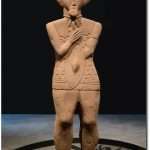 And/or: Same question to the 'origin' of the {folklore?} of such tales as: "The Old Religion and its current adherents are all seekers after joy. It is a religion of personal experience and of ceremonies that bring companionship and happiness to the people who share them. They do not see the CAKES AND WINE of their communion as the blood and body of a slain god, but as tokens of the harvest from the Earth Mother and her Lord. There should be no idea of 'sacrifice' {altar link} - for the corn is grown to be harvested." [Page 67 'Magic for the Aquarian Age' / M. Green].
And/or: Same question to the 'origin' of the {folklore?} of such tales as: "The Old Religion and its current adherents are all seekers after joy. It is a religion of personal experience and of ceremonies that bring companionship and happiness to the people who share them. They do not see the CAKES AND WINE of their communion as the blood and body of a slain god, but as tokens of the harvest from the Earth Mother and her Lord. There should be no idea of 'sacrifice' {altar link} - for the corn is grown to be harvested." [Page 67 'Magic for the Aquarian Age' / M. Green].
Burnt cakes?
 Practical/working example: ''Hello everyone. Hope you are all well. You may be asking yourself while you are watching this: 'Why is Callie so happy and smiling? How can she be so in the cold freezing Artic. Should'nt she be cold and miserable? Well i have a secret - its K. G. Sparkle'. I have a sister who is amazing and hilarious. Those are magic words....whenever she hears them she laughs hysterically for a good twenty minutes. So if i think of K.G. Sparkle i hear her laugh - and that makes me so happy. So if i ever get down i just sprinkle a little K.G. Sparkle on it and it becomes all good." {Callie/'Alone'/2020}.
Practical/working example: ''Hello everyone. Hope you are all well. You may be asking yourself while you are watching this: 'Why is Callie so happy and smiling? How can she be so in the cold freezing Artic. Should'nt she be cold and miserable? Well i have a secret - its K. G. Sparkle'. I have a sister who is amazing and hilarious. Those are magic words....whenever she hears them she laughs hysterically for a good twenty minutes. So if i think of K.G. Sparkle i hear her laugh - and that makes me so happy. So if i ever get down i just sprinkle a little K.G. Sparkle on it and it becomes all good." {Callie/'Alone'/2020}.
"Gudea made offerings of honey and butter when the foundations were laid; when the building was finished an auspicious day was waited for, and when it came the image of the god was removed to the new temple, and Gudea sprinkled the ground with oil, and set out offerings of honey, butter, wine and dates, grain mixed with milk, food untouched by 'fire', for the gods." [ Chapter 3, 'The Sacred Bee'].
Understand that connection to give a possible burial location {Altar of Witness?}.
REFRESHER: "The children of Seth [Set] first possessed that peculiar sort of wisdom, which is concerned with the heavenly bodies."
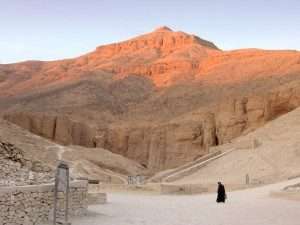
From a different perspective: ''To tackle the medieval pilgrims route of St Olav's Way to the cathedral at Trondheim {Norway}...one has to descend the 'Hill of JOY' to set eyes for the first time on the cathedral - the worlds most northerly medieval one.'' [Page 88 'Readers Digest' / July 2022].
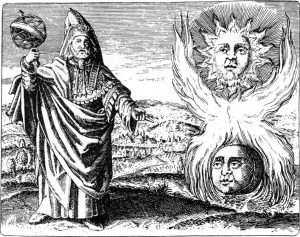
Figure of eight?
A working example: Many speculate about the demise of the pyramid builders. Why? The final one being Pepi 2nd. Pyramid texts written inside - all in green. Thereafter all buried deep within a NATURAL feature - the ''beginnings'' of which originate with Thutmose and his daughter - Hatshepsut. ['Lost Treasures of Egypt' / Nat Geo / 19/3/21].
'Fire' and soul as a means....
''And the beautiful lady has come." Try Akhenaten {as one example}.
''The name Thutmose - makes a reference to a moon deity, Thoth {Egyptian Djehuti}.'' [Page 14 'Hatshepsut' / Metropolitan Museum of Art].
Side note: "Horeb" is thought to mean glowing/heat, which seems to be a reference to the Sun, while Sinai may have derived from the name of Sin, the Ancient Mesopotamian religion deity of the Moon,[2][9] and thus Sinai and Horeb would be the mountains of the Moon and Sun, respectively.''

''Man shall not live by bread alone but....." Continued {2:1}.
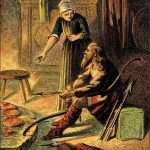
Did Alfred eat those cakes?
Something extra: ''Chapter 26 {the author M. Ashby defines it as chapter 13}, relates to affirming self control. Once again there is a negative reference to the east, the eating of 'cakes' - on the eastern side of the lake of flowers - symbolic of desires and thoughts of worldly life; and reincarnation....the heart is a metaphor for the mind, when the mind is overpowered by negative or unrighteousness i.e., lying, cheating, neg. behaviour, hypocrisy etc. - it is not able to envisage the 'higher' reality of the spirit....therefore enslaving the 'soul'....This reference relates to the understanding of life as related by the journey of Ra {'spirit'}. Every day 'Ra' in the form of the sun disc is metaphorically consumed by Nut {'soul'} and she gives birth to him every morning. THEREFORE the east represents rebirth, the new life or the process of reincarnation. Reincarnation implies having to once again being born into the world of time and space, to suffer the limitations of youth etc.....it is to be understood as a separation from 'divine' consciousness....To reincarnate is not being able to remember the True Self....This is a kind of forgetfulness. A forgetfulness of the 'higher' self." [Pages 214/7 of the book by M. Ashby].
East/West at Thebes/Karnac?
And/or: ''Do not travel on those western waterways. Those who travel thereon do not come {towards Ra}. Walk, O thou Pepi Nefer-ka-Re, upon these eastern waterways among the followers of Ra of the sublime arm {right one?], who is in the east.'.....These words open the door to the Royal path, also called the direct way. It is the mysteries story of the resurrection of Being without passing through lives and reincarnation; mysteries because its genesis is invisible although spiritually commanded by the same laws. 'Being' is created as Tum, it is liberated, from earth by Horus, it is purified by spirit and animated with the Horian fire {living fire' i,e., subject material}- it has assimilated all the qualities within an hour {i.e., not 'quantities'} - whereas on the western path.....'' [Page 218/9 'Sacred Science' / R. A. Schwaller de Lubicz].
 Refresher: ''As has been said, Ra is not the sun itself, but rather the solar energy {'spirit'?} which, during the course of its daily cycle, animates all the organic {'soul'?} functions of the human body, one after the other, at each hour of the day and night. It is in this way that we are subject to it.''
Refresher: ''As has been said, Ra is not the sun itself, but rather the solar energy {'spirit'?} which, during the course of its daily cycle, animates all the organic {'soul'?} functions of the human body, one after the other, at each hour of the day and night. It is in this way that we are subject to it.''
Try 2:3 to connect. And/or: 'remember/forgetting' And/or: Mr Jones, Miss Smith {5:9}. And/or ''wantonness'' {this page} to understand ''flower'' in its context. etc.
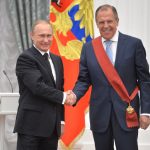
The War of Innocents. Are they taking Mother Russia UP or Down a path?
And/or: "This predicament of being caught up in a world of illusion {i.e., 'forgetfulness'} and being 'fed' situations {fate} against ones True Will is what the Egyptian Book of the Dead terms 'eating excrement' {''dung'' link?}. ''I do not eat it, it is abominable to my Ka. It does not go into my body. I live in accordance with the 'knowledge' of the gods and goddesses {i.e., ''food'' of the gods}. Hence: 'I live and am empowered through their bread. Powerful am I 'eating' it....under the hair, within Hathor, my Lady {'soul' link}, I make a great offering. I make bread in the city of Djedu {i.e., where the pillar of Osiris is found}. And obligations in the city of Anu. [Page 217 same book].
Try ''bristle'' {3:10} to understand ''hair'' and Isiah 19:19 for the ''pillar'' quote. In order to attempt a MIND SET.
Or if you feel like a further head scratch try ’Sacred geography of the ancient Greeks’. By J. Richer. Great maps. A link to those different landscapes of different cultures...but with the same keys.
That same link to the book... ’Hero with a 1000 faces’. By J. Campbell. Or the Egyptian / Greeks / Romans.. etc ‘gods/goddesses’ equivalent. Those so called polytheism cultures. Only polytheism to those who are not aware. Monotheism to those who are. In relation to the individual. Each individual. In their opinion, [by way of implication].
Understanding that principle gives a deeper more correct meaning to such publications as 'Gods of the New Millennium' by A. Alford.

''Ghost'' the dire Wolf.
"The Mystery gods were not immaterial ghosts in human guise, nor were they material idols. They were spiritual essences. They were part of the 'One God' as a wave is part of the ocean. [Chapter 2, 'The Forgotten Mage']. Recall what the 'ocean' represents within this subject.
''A river of thoughts' - where good deeds are ships on which to ride the waves''.
Side note: "The author of the Romance of Taliesin evidently knew Amathaon as Llew Llaw, A Brythonic title of Hercules, since he says in the 'Song Concerning the Sons of Llyr' : 'I was at the Battle of the Trees with Llew and Gwydion, he who transformed {'finger' link?} timber, earth and plants'. The case is complicated by occasional bardic reference to Beli and the sea which at first sight suggest that he is a sea god: 'the waves are his horses, the brine, his liquor'...." [Page 60 'The White Goddess' / R. Graves].
Continued: i.e.,"In speaking of the Pantheons of the gods, it was noted that each god stood for a spiritual principle of a natural force...with one exception, the Sacrificed god, and he stands for the soul of the initiate, to whom he is also the great initiator."[Chapter 12, 'The Training and Work of the Initiate' by D. Fortune]. That link to those many 'illicit' affairs between 'father', 'daughter' and/or 'brother' / 'sister', indicative of same, i.e.,as a representation of something ''outside of the obvious'' i.e., symbolic....relative to the individual.
Side note. ''Sacrificed god'' in relation to ''untouched by fire'' {found elsewhere}. One relates to top/down the other bottom/up. One to S/W the other S/E. Which and why?

Present day ones. R.I.P.
 Or chapter nine of 'The Synchronicity Key', explaining in full detail the concept of the 'hero' throughout mythology and in to the present, in relation to a 'journey', [chapter eleven]. That same journey that has been constantly written about; within this subject; since the written word came into common use. That 'hero' taking many forms, explained within.....
Or chapter nine of 'The Synchronicity Key', explaining in full detail the concept of the 'hero' throughout mythology and in to the present, in relation to a 'journey', [chapter eleven]. That same journey that has been constantly written about; within this subject; since the written word came into common use. That 'hero' taking many forms, explained within.....
"Egyptian religious writings reflect a consistent 'pantheism', and frequent references to those spiritual beings from whom life originates, the Neteru. This term as traditionally been translated as the ''gods,'' the Neter being the individual deity of a place or action."......" some scholars have proposed that the apparently complex cosmological system of Egypt that contain the vast array of 'gods' and 'goddess' figures, animal totems, and celestial asterisms - was the 'language' of Sacred Science.... The Neteru represent the sacred notation of the system, incorporating principles and functions into composite figures, each expressing a realm of action and experience as well as an idea." ......

'Thimble' shape? Figure of 'eight'?
"The sacredness of the Neter does not set them apart from us, but binds all things together." [Chapter one, 'The Sacred Tradition in Ancient Egypt']. Try ''re-union''. Question. Agree or disagree?
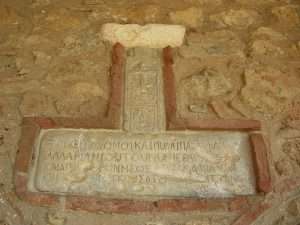
"First i will explain the great meaning: wrap up the beginning and end {'swaddling'?}, cap the start and finish {'gold'?}." The meaning is broad and hard to see; now i will treat it in terms of 'five' aspects: awakening the great mind {'Amun'?}, cultivating the great practice {'vine'?}, experiencing the great result {'synchronicities'?}, rending the great net {'153'?}, and returning to the great abode." [First paragraph, first page 'Stopping and Seeing: A Comprehensive Course in Buddhist Meditation' / Chih-i / Translated by T. Cleary]. Imhotep to enlarge.
"By examining their individual aspects in detail...as well as their places in the cosmological scheme...insights may be gained into the possibilities of human consciousness that the ancients understood through these symbolic devices." [Chapter two, same book].

Broad back? Being led to water. Fresh water?
"These things are not easy to express in words, they are more feelings than concepts, nor can they be grasped rationally, but we can perhaps intuitively sense something of this kind as being the essence or significance of the experience which lay behind the expression: ''I have borne the sacred vessel. I have entered into the bridal chamber."

'Prince' link? 'Bobbin' for a pedestal?
Nevertheless the relation which the ancients sought to establish between men and the gods they themselves called the 'Mysteries'. The experience is a mystery which can be understood only when it is recognized that the ''gods'' are not beings external to man but are rather psychological forces or principles which have been projected and personified in ''the gods.'' They overshadow man, but their roots are buried in the hidden depths of the human psyche." [Chapter 10, 'Woman's Mysteries: Ancient and Modern'. Mentioned elsewhere].
Understanding that universal ''framework'' in relation to the 'divine bit' defines those ''principles'. It also explains why the subject of 'psychology' becomes its main 'teaching' aid.
As it does {or at least gives clues} to understanding the following...A teutonic {knight?} found within a sealed lead 'shroud' within a wooden coffin, within a stone vault in the South West corner of St. Bees Priory. An Irish princess {St. Bega} associated with same. St. Bees being the most N/W point of England. The body being covered in bees wax ; as was the body of Alexander the Great. Together with...

“Most certainly, I tell you, one who doesn’t enter by the door into the sheep fold, but climbs up some other way, is a thief and a robber.
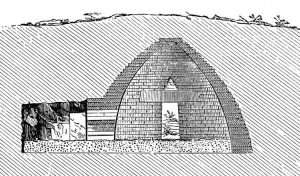
A beehive tomb, also known as a tholos tomb (plural tholoi) (Greek: θολωτός τάφος, θολωτοί τάφοι, "domed tombs"), is a burial structure characterized by its false dome created by the superposition of successively smaller rings of mudbricks or, more often, stones. The resulting structure resembles a beehive, hence the traditional English name. ..In Greece, the vaulted tholoi are a monumental Late Bronze Age development. Their origin is a matter of considerable debate.
A work in progress: ''I now found something else that seemed to clinch the connection between Commagene and Gurdjieff's Sarmoung {Samsung?}. On that day when the sun is in the middle of Cancer - it stands directly below the cluster of stars known as the Bee Hive. Since the word Sarman {Sarmoung in Gurdjieff's Armenian dialect} means both those 'who preserved the doctrine of Zoroaster' and 'bee' in old Persian, then it is quite clear that in 62 BC the 'hive', the place of gathering of the bees was Commagene.'' [Page 154 'Magi: The Quest for a Secret Tradition'].
''The Beehive Cluster (also known as Praesepe (Latin for "manger" or "crib"), M44, NGC 2632, or Cr 189), is an open cluster in the constellation Cancer. One of the nearest open clusters to Earth, it contains a larger population of stars than other nearby bright open clusters holding around 1,000 stars. Under dark skies, the Beehive Cluster looks like a small nebulous object to the naked eye, and has been known since ancient times. Classical astronomer Ptolemy described it as a "nebulous mass in the breast of Cancer". It was among the first objects that Galileo studied with his telescope.''

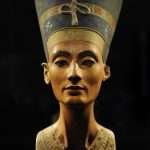
Spirit or soul? Stretched?
"And i saw in my sleep a certain little man, a barber, wearing a red robe and royal garments, and he stood outside of the place of the mortifications and said ' What are you doing?' I said to him, 'I stand here because i have missed every road and am lost. He said 'Follow me'. And going out, i followed him. And being near to the place of the mortifications {embalming place}, i saw the little barber man leading me, and he cast into the place of mortifications and his whole body was consumed by fire. Seeing this, i fled and trembled from the fear and i awoke and said to myself, 'What is this that i have seen?' And again i took thought and determined that this barber man is the man of copper {i.e.,that he had seen in a previous dream}. It is necessary for the 'first step' to throw him into the place of mortifications. My soul again, desired to ascend...again i fell asleep...and again, alone, i went along the way, and as i drew near the place of the mortifications, again i got lost, losing sight of the path...And again i saw the same man. And i questioned him saying, 'Why do you lie there?' And he opened his mouth and said, 'I am the man of lead and i am withstanding an intolerable force.' And then i awoke out of fear and sought in myself the cause of this fact. And again i reflected and said to myself, 'I understand well that this one must cast out the lead - truly the vision is concerning the combination of liquids...And again i fell asleep for a while...and i saw one with a sword {'two edged'?} in his hand coming out of the East. And i saw another with a disc in his hand {Aten?}, white and shining... and it was called the meridian {'zenith of something} of the Sun, and i approached the place of the mortifications...And waking, i said, 'I understand well that these matters concern the liquids of the art of the metals.' {wet/dry}. And the one who held the sword said,' You have fulfilled the seven steps beneath. And the other said at the same time as the casting out of the lead by all the liquids, 'The work is completed.' " [Extract from the 'Vision of Zosimos': Taken from the book 'The Magister'. Mentioned elsewhere].
'Stretching the cord' ceremony?
Question. What 'stage' is lead - a beginning/middle or end? or does it matter?
Question 2. Any lead coffins found in Tut's tomb?
Defining those keys - regardless whether ''studied'' or a dream sequence - gets the reader {'initiate'?} closer to what is being implied. All being an 'aspect' of the individual. Question. What aspect {of the individual} is the barber ''playing''. Higher or lower? Spirit or Soul {recall the colour associated with same}. Same with the ''high priest'' as mentioned elsewhere in a similar example, from the same author.
Side note: ''mortifications'' {funerary} in relation to cakes {burnt ones} gives clues to something about Alfred. Enlarged elsewhere.
Refresher: ''St Cuthbert died alone in his remote refuge on the Farne Islands but his relics were buried at Lindisfarne...He became a medieval cult figure inspiring pilgrims from all over britain, including Alfred the Great, who claimed to have been inspired to unite Britain by a dream of the saint.'' [Page 94 'Readers Digest' / July 2022].
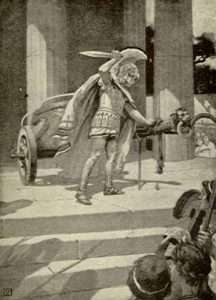
Thinking outside of the 'box'. Boundaries/Dionysus links.

Large or small?
From a different perspective: ''Midas, now hating wealth and splendor, moved to the country and became a worshipper of Pan, the god of the fields and satyrs.[21] Roman mythographers[22] asserted that his tutor in music was Orpheus. Once, Pan had the audacity to compare his music with that of Apollo, and challenged Apollo to a trial of skill (also see Marsyas). Tmolus, the mountain-god, was chosen as umpire. Pan blew on his pipes and, with his rustic melody, gave great satisfaction to himself and his faithful follower, Midas, who happened to be present......

"The impressive look is called the “squash blossom whorl”, a traditional hairstyle for unmarried girls. At the onset of puberty, historically young girls went through challenging initiation ceremonies, marked by a day of grinding corn at the paternal grandmother’s house. She would receive a new name and assume the squash blossom hairstyle, the sign of marriageability and fertility." 'Flower of youth'?
Then Apollo struck the strings of his lyre. Tmolus at once awarded the victory to Apollo, and all but one agreed with the judgment. Midas dissented, and questioned the justice of the award. Apollo would not suffer such a depraved pair of ears any longer, and said "Must have ears of an ass!", which caused Midas's ears to become those of a donkey.[23]
The myth is illustrated by two paintings, "Apollo and Marsyas" by Palma il Giovane (1544–1628), one depicting the scene before, and one after, the punishment. Midas was mortified at this mishap. He attempted to hide his misfortune under an ample turban or headdress, but his barber of course knew the secret, so was told not to mention it. However, the barber could not keep the secret. He went out into a meadow, dug a hole in the ground, whispered the story into it, then covered the hole up. A thick bed of reeds later sprang up from the covered up hole, and began whispering the story, saying "King Midas has an ass's ears".[24] Some sources[which?] said that Midas killed himself by drinking the blood of an ox. ''
Sais in the Nile Delta to enlarge.
Eyes/Ears/Nose and Tongue as a means.....
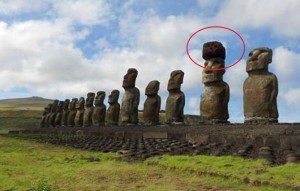
Eye of the horizon? As a means...?
And/or: "Hair is a metaphor for tree branches; mystically it relates to the 'tree of life' which is the body of the goddess, from which she imparts sustenance and nourishment both physical/spiritual - {depending on karma?}." [Page 217 'Egyptian Book of the Dead' / M. Ashby. Emphasis, this readers].
And/or: Hair can 'cover' the forehead - especially the 'middle' of it {minds eye}.
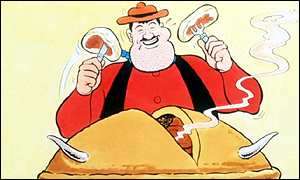
"Desperate Dan and his friends will be celebrating with plenty of cow pie this week as the Dandy enters The Guinness Book of Records as the world's longest running comic. The record-breaking 3007th issue will be out on 10 July {1999} and Desperate Dan will be headlining it for the very last time. After that the superhuman cowboy from Cactusville, the only survivor from the comic's early days, will be relegated to the inside pages, making way for new stars such as Cuddles and Dimples."
One of the reasons for monastic {disciplines?} - for ''short back and sides''?
Recall Sampson and Delilah. ''Nourishment'' given only in the external {physical} sense of the word. Recall the ''help'' section.
A working example {i.e., something hinted at}: "The Essenes 'invoked' angels in their mysteries. Here is something odd: that the 'Hounds of Herne the Hunter', or the 'dogs of Annwn' - in British folklore are called 'Gabriel Hounds'. Why Gabriel?....Gabriel and Herne are equated in the early 13th century carvings around the church door at Stoke Gabriel in South Devon. Gabriel looks down from above {aspect of 'higher self'. Potential of?}, towards a figure on the right of a wild hunter, his teeth barred in a grin and a wisp of hair OVER his face, with a brace of his hounds close by..." [Page 151 'The White Goddess'].
Watling Street?
And/or: Hebrew children’s prayer: "In the name of the Lord God of Israel, may Michael, the protection of God, be at my right hand, and Gabriel, the power of God, at my left, before me Uriel, the light of God, behind me Raphael, the healing of God, and above my head Shekhinat El, the presence of God."{Page 283 'The Western Way' / C + J Matthews}.

A feather in the CAP or just pine needles?
Side note 2: Joann Fletcher talks about proof of ''beauty products'' being used by Neolithic man - after examining one of the recently discovered bog bodies that are constantly found in wet lands {marches}. His hair tied in a knot {topknot?} above the head - pine resin used - which could only be got from either Spain or France. To understand a mind set ATTEMPT to 'see' something other than the obvious. Inner rather than outer i.e., besides the highlighted '{keys'} try ''wet/dry'' / S/E - N/W i.e., most bodies are found within that parameter {'line of sight'?}.
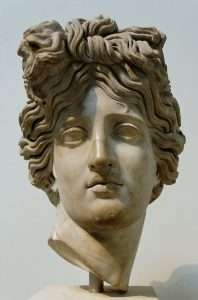
Curl or knot?
For ''pine'' start at 2:10
Pinewood studios ?
- And/or: "Don't forget now: 1:15 am, Twin Pines Mall."
- —Doc on the phone new DeLorean time machine he had invented.
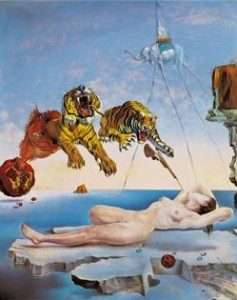 And/or: ''By the time he had reached the comparative safety of the pine trees, the land all around was being drained of darkness, leaving a residue of a grey dull light which prefigured the dawn of the shortest day of the year. Tom threw himself down on a cushion of pine needles....he felt like a black void was enveloping him....he lay on his side with kness to his chest {'child/rebirth' link?}....he did not blink even when the reluctant sun opened its indifferent eye on the horizon, shooting its level beams the length of the valley {Stonehenge causeway?} Beyond the plantation of firs and pines, was the small forest of oaks which extended to the rear of the 'hotel'....
And/or: ''By the time he had reached the comparative safety of the pine trees, the land all around was being drained of darkness, leaving a residue of a grey dull light which prefigured the dawn of the shortest day of the year. Tom threw himself down on a cushion of pine needles....he felt like a black void was enveloping him....he lay on his side with kness to his chest {'child/rebirth' link?}....he did not blink even when the reluctant sun opened its indifferent eye on the horizon, shooting its level beams the length of the valley {Stonehenge causeway?} Beyond the plantation of firs and pines, was the small forest of oaks which extended to the rear of the 'hotel'....
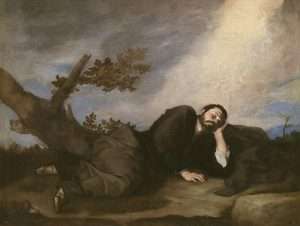
Pine, Oak, or Cedar tree?
Apart from midsummer, the winter solstice was Hannah's favourite day....Today the sun was in its last decline...Tomorrow would bring not just a new day but a New Year when the reborn sun would begin to 'loop' higher in the sky and lengthen the days downhill towards summer...The beauty of the morning suggested to Hannah that the sun was hastening joyfully towards death, eager for its resurrection the following day....It was still early in the day, but already the waning moon was as high in the pale sky as the declining sun. The winter solstice was drawing to a close. The last of the tall pines threw long shadows across Winston Powell's fields....the road gleamed dully like gunmetal in the dying light.'' [Pages 164/170/173/188 'The Serpents Circle'].
A shot across the bow or ''snapshot'' of something?
Wandlebury to enlarge.
'On Having No Head: Zen and the Rediscovery of the Obvious' / D. E. Harding.
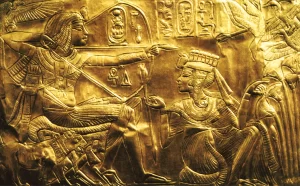
Giving directions?

Positive or negative.
From a different perspective: "I was sitting alone in my bedroom, enwrapped in these unaccustomed fires, and behold! I was suddenly astonished to see a chariot that passed through the open window, going very fast and making a violent and terrifying noise. It was all of crystalline ice, drawn by two white horned stags, harnessed with chains of grey lead. On the vehicle there sat a furious goddess crowned with a wreath of agnus castus, with an unstrung bow and an empty quiver, who turned a frightful countenance on me, burning with the desire to wreak cruel vengeance. Suddenly another chariot followed behind, pursuing the first one: it was all flashing with fire, harnessed with golden cords to two white swans. On this there sat triumphantly a powerful and divine lady, her starry brow crowned with roses, having with her a winged boy with blindfolded eyes: he was holding a flaming torch and chasing away the cold and listless goddess who was menacing me with her hatred.
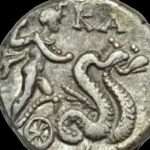
Victory chariot.
He pursued the cold chariot through the air until it all melted in the heat of his own, then both dissolved and vanished. After watching this whole scene with the courage of love, I discovered my lap and the whole floor of my bedroom strewn all over with fragrant red roses and twigs of flowering green myrtle. I lost all fear and felt justifiably secure because this child had appeared and come to my aid, supporting my cause, defending me from the furious avenger, and, as my lord, fighting invincibly to prtect me....
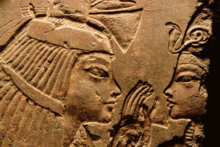
Tut's nurse.
Being brought to such a pass by the love I had banished, and driven by desire, I resolved with firm and determined mind to go forward with this delectable adventure, this sweet campaign, this voluptuous duty. But before anything else, purging myself of all objections and resigned and determined in everything, I thought over the sincere advice and precepts of my faithful nurse: I would fulfil them to the utmost, and begin by going without fail — spurred on by Cupid-—to the venerable altar of the divine Mother, because I was now well aware of the hidden fire that was eating away at me, pricking my heart all over, like a thistle with its sharp, overlapping, hooked needles. I decided to make ready without delay for its leaping and impatient flames, and to make up for the time that had been fruitlessly and unprofitably wasted. The hour so much desired had now arrived, when I should place my soul inalienably beneath another, like the head-cushion that softens a burden. As I entered excitedly, with undaunted heart, into the sacred threshold, I saw my caring and cared-for Poliphilo, who appeared to be praying that I be restored to him. And while my keen sight went straight to its expected goal, I did not approach Poliphilo, but first followed the advice of my nurse and presented myself humbly before the holy priestess. I had the greatest faith that she could propitiate and turn away the celestial wrath, and fit my soul for the love it had spurned.

"Amazon preparing for battle" (Queen Antiope or Hippolyta) or "Armed Venus", by Pierre-Eugène-Emile Hébert, 1860, National Gallery of Art, Washington, D.C. 'Bended knee'?
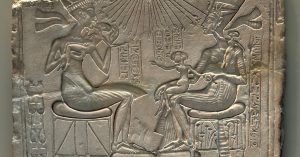
House Altar depicting Akhenaten, Nefertiti and Three of their Daughters, c. 1350 B.C.E. On limestone. Question. What are EACH sat on? And/or: 'Cushion' for a footstool?
After telling her about all the upsetting and horrible events and the apparitions I had seen by night and by day, I recounted my own inhumanuity: how I had been more fierce and cruel than a tigress, more deaf to his lamentations, his heavy sorrows and amorous pains than the ears of an adder immobilized by enchantment, and more displeasing than Diétyna was to Minos. I had made light of his prayers and miserable tears; I had acted toward my Poliphilo with hateful hostility and rage, being slow to mercy, void of kindness, indifferent and alien to human feelings, and unmoved by compassion. The priestess was shocked to hear that I .had committed such rebellion, and scolded me severely, while I was repentant and disgusted with myself; but it seemed futile to dwell on the miseries of the past. For I was affected and impelled by a great agitation in my heart, and the heat was spreading through meas I began again to yearn ever more with love for my Poliphilo.

THE NOBEL PEACE PRIZE {1994}. Why does Trump feel the need to beg for one? What's missing within? Can a piece of metal fill a void?
Side note: Knee caps {on 'silk cushions'} belonging to Arthur and his wife Guinevere supposedly found in the grounds of the Abbey in Glastonbury together with their skulls. {'Weird Britain: Somerset' / S1 EP5}
As for him, as soon as he had seen me come in, his eager eyes had been fixed on me with unwavering and piercing gaze. Like a celestial arrow sped by the drawn bowstring, it entered my ready and welcoming heart, so that I felt my whole being crackling and seething with amorous delight.
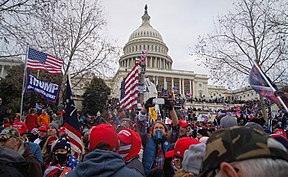
''A land is only as good as its leaders." {'The Kid Who Would be King." / 2019}.
Then, gentle nymphs, I bowed before the reverend presence, begging forgiveness for the past and support in my present struggle, and offering myself with firm faith as a true and undaunted devotee of the venerable lady Mother. I would never rebel, never fail or disobey any command of her mighty Son, nor would I ever refuse any concupiscent desire of my loving lord Poliphilo, but would treat him with goodwill, kindness, obedience and graciousness, and never part from him. I would be quick in the observance of all his amorous wishes, and devoted to him alone, and would live with him in peace and in sincere concord exceeding even that of the Geryons. As soon as my irrevocable vows were made, the holy Priestess summoned Poliphilo into her presence. ['Hypnerotomachia Poliphili: The Strife of Love in a Dream'].
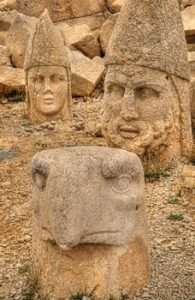
Bearded/UNbearded? As a means....? Question. What does the 'eagle' represent? Try ''Scorpion'' for clews.
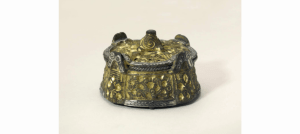
"The island developed a wholly unique set of female jewelry, most epitomized in the box brooch (Swedish: dosformat spänne). This brooch style, worn just under the chin to centrally clasp a cloak, was produced throughout almost the entirety of the Viking Age. It reflected the various evolutions of Viking art throughout the time period, but essentially retained the same basic shape: a large round drum, hollow, with a pin on its backside. The uniqueness of these objects to the island cannot be stressed enough; of the approximately 850 brooches found, less than 30 (or roughly three percent) have been found outside of Gotland.... Gotland would have occupied a strategic position, situated as it was between the Baltic states, Finland, Russia, and the Middle East, as well as mainland Scandinavia and western Europe. Utilizing its position as a middleman between the eastern and western worlds, Gotland became perhaps the most silver-rich region of Viking Age Scandinavia, with over 700 known silver hoards." 'Smelling salts'?
AND/OR: {refresher} ''The ancient Celts carefully distinguished the poet, who was originally a priest and judge as well and whose person was sacrosanct, from the mere gentleman. He was in Irish called a seer { 'fili' }; in Welsh an Oak-seer, which is the probable derivation of 'Druid'. Even kings came under his moral tutelage....The rediscovery of the lost rudiments of poetry may help to solve the question of theme, {i.e., the esoteric stuff, i.e.,what this author defines as the ''Theme''. Enlarged elsewhere} - The Welsh poet Alun {Alan?} Lewis who wrote just before his death in Burma {1944} of 'the single poetic theme of Life and Death....the question of ''what survives of the beloved'....Perfect faithfulness to the theme affects the reader of the poem with a strange feeling, between delight and horror, of which the purely physical effect is that the hair literally stands on end. A. E. Houseman's test of a true poem was simple and practical: does it make the hairs of one's chin bristle if one repeats it silently while shaving? But he did not explain why the hairs should bristle.'' [Pages 21/4 'The White Goddess' / R. Graves].
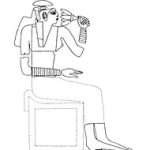
Working example: ''The painting, of the pharaoh Ramesses II (reign circa 1279 B.C. to 1213 B.C.), is in the tomb of an official named Nakhtamun, who was buried near Thebes (modern day Luxor). In the painting, the pharaoh has some stubble on his face and is facing a figure whose features cannot be seen well, according to a new study published Wednesday (July 12) in the journal PLOS One....The team found that Ramesses II is actually facing Ptah, an ancient Egyptian god associated with craftspeople. The scan "shows that Ramesses II [stands] under a cult canopy {'shadow' / 'dappled'?}, while the enthroned figure in front of him is clearly the god Ptah, not his deceased father Seti I," the team wrote in the study.
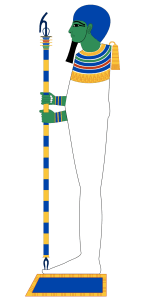
Ptah. Static or dynamic. Anchored? In what? Earth or water? Horizon line?

long or short?
The team also found that Ramesses II was depicted with a "protrusive Adam's apple," the team wrote, noting that this is "a detail that is interestingly never shown in ancient Egyptian art."
Moreover, the pharaoh was originally depicted wearing what the ancient Egyptians called a "shebyu collar," which consists of "several voluminous chains of gold formed by large and heavy lenticular beads," the researchers wrote in the study. This collar was popular in the 20th dynasty (circa 1186 B.C. to 1070 B.C.) but was not used during Ramesses II's reign, the team said. According to the researchers, the shebyu collar was painted over and replaced with a "wesekh" necklace, a flat piece of jewelry that was worn during Ramesses II's rule.
''Based on the necklace discovery, the team thinks the painting was originally drawn in the 20th dynasty, decades after Ramesses II died. It's likely that when the artists realized they had painted the wrong type of necklace on Ramesses II, they corrected it, the study authors wrote. The protruding Adam's apple on Ramesses II may have been added during this repainting, possibly by mistake, study first author Philippe Martinez, a molecular archaeologist at Sorbonne University and the French National Center for Scientific Research (CNRS), told Live Science in an email. It's unclear why Ramesses II is depicted with stubble on his chin. This is uncommon as a pharaoh would usually be shown shaven or with a beard.
'Bristle'?
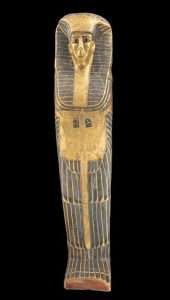
Made from two tree trunks. Lower {Sycamore}. Higher {Tamarisk}. Longwoo? Flat or round?
Peter Brand, a history professor at the University of Memphis and author of the book "Ramesses II: Egypt's Ultimate Pharaoh" (Lockwood Press, 2023), who was not involved in the study, disagreed with some of the findings. Brand said his own research indicates that shebyu collars were worn during Ramesses II's reign, and he thinks the painting dates to late in Ramesses II's tenure. The tall proportions of the king's blue crown and his rather 'chisel'-shaped nose are consistent with the later years of his reign as seen in reliefs at Karnak," a temple complex in Thebes that was dedicated to the god Amun-Ra, Brand said. He also disagreed with the authors about the protruding Adam's apple in the painting, saying it is not unique in ancient Egyptian portraits.'' ['Livescience'].
''Beloved'' {as examples} in relation to Hebrew Shulamite or the Egyptian Nefertiti.
Try Mr Jones or Miss Smith to take ''of what survives of the beloved'' further.
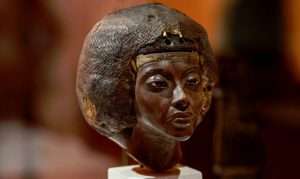
Hairs bristling?
Working example: ''We have briefly met Kiya, the other known wife of Akhenaten, noting that she held a title, Greatly Beloved Wife of the King, that appears never to have been borne by any other individual in Egyptian history. Her origins are wholly unknown, although, like Nefertiti, there have been speculations that she might have been a foreigner....'' [Page 50 'Nefertiti' / A. Dodson].
Question. Which sounds the 'Greater' title: The ''beautiful lady has come'' OR ''greatly beloved''?
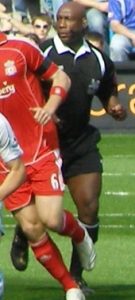
Uriah Duddley Rennie. He was the first black referee to officiate in the Premier League. R.I.P.
Side note: ''The modern tendency to turn what is black or shadowy into evil and what is white into good prevents us from fully understanding the khaibit....a type of shadowland....the 'dark brother' of primitive peoples or the ghost freed at death, or the Jungian 'unconscious' including the collective unconscious. To some degree khaibit resembles all three, but ONLY to a degree....No negative associations were placed on the Egyptian shadow...As its hieroglyphic determinative, Khaibit uses the plumed ostrich feather sunshade that accompanied the pharaoh in his temple processions and tours of the land...most notably the name for the temple Akhenaten built on the dusty, treeless desert of Amarna - 'The Shadow of Ra'....'' [Page 163 'Dreams of Isis'].
Lotus / blinkers to enlarge.
'50 Shades of Grey'? {i.e., in the metaPHYSICAL sense of the word - not the literal one}.
'Birds of a feather flock together'.
''The umbrella was actually invented to protect people from the sun. The origin of the word “parasol” comes from the French “para,” for “stop,” and “sol,” for sun. And “umbrella” originates from the Latin “umbra,” which means “shade” or “shadow.”
................
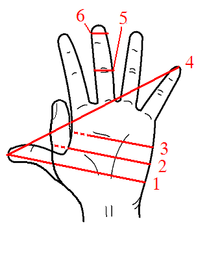
"Hands" may be abbreviated to "h", or "hh". The "hh" form is sometimes interpreted as standing for "hands high".[4][5][6] When spoken aloud, hands are stated by numbers, 15.0 is "fifteen hands", 15.2 is alternately "fifteen-two" or "fifteen hands, two inches", and so on.[5][6][7]

Round the corner from....?
On the 20th of Siwan, that is the 7th day of Phamenoth, the year 38 of King Artaxerxes - at that time, 2 Meshullam son of Zakkur, a Jew of the fortress Elephantine, of the detachment of Arpakhu said to the woman Tapmut (as she is called), 3 his slave, who has on her right hand the marking "Of Meshullam", as follows: I have taken kindly thought of you 4 in my lifetime. I hereby declare you released at my death and likewise declare released the daughter Yehoyishma' (as she is called) whom 5 you have borne to me.
No son or daughter, close or distant relative, kinsman, or clansman of mine 6 has any right to you or to the daughter Yehoyishma' whom you have borne to me; none has any right 7 to mark you or to deliver you as a payment of money. Whoever attempts such action against you or the daughter Yehoyishma' 8 whom you have borne to me must pay you a fine of 50 karsh of silver by the king's weights. You are released, with your daughter Yehoyishma', from the shade for the sun, and no other man is master 10 of you or your daughter Yehoyishma'. You are released for God. [ 'ARAMAIC PAPYRI FROM ELEPHANTINE'].

 A working example: ''I recently met a down-home, practical fellow who was a maintenance man at Liberty Hall, one of the historic Southern homes in the town where i live. This house reputedly has multiple ghosts....the most active being the locally infamous Grey Lady, an aunt of John Brown, who built the house over 200 years ago....He declares he has never seen the ghost but feels her presence as a cold CLOUD about him.'' [Page 164/5 same book].
A working example: ''I recently met a down-home, practical fellow who was a maintenance man at Liberty Hall, one of the historic Southern homes in the town where i live. This house reputedly has multiple ghosts....the most active being the locally infamous Grey Lady, an aunt of John Brown, who built the house over 200 years ago....He declares he has never seen the ghost but feels her presence as a cold CLOUD about him.'' [Page 164/5 same book].
Anima/Animus?
'Cloud of Unknowing'.

Sahu or khaibit?
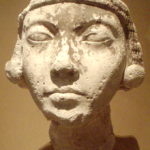
Sunshade?
''Sahu is the transfigured self....the highest vibration of subtle body, it works in unison with the ba {the soul on the spiritual plane}, and the ab {the the heart on the astral plane}. As Jean Houston once explained it to me, 'Sahu, is your deepest coding, your archetypal self where the BELOVED lies at one with the entelechy'. I understood sahu to be the last remnant of the physical form and the first evidence of Eternity to come. At the crossroad between local time and cosmic time, it is the local and eternal self {'guardian of the gate'?}. Sometimes the hieroglyph for sahu appears as the tanned panther skin worn by the high priest {Imhotep?}, an outward visible sign of an inner transformation, the sort of transformations that attend birth, death and rebirth experiences. The Old Kingdom sarcophagi were illustrated with same...etched upon the coffin LIDS.'' [Page 168 'Dreams of Isis'].
Entelechy?
Abu Simbel?
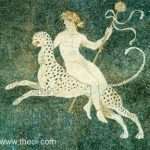
Panther? Spotted?
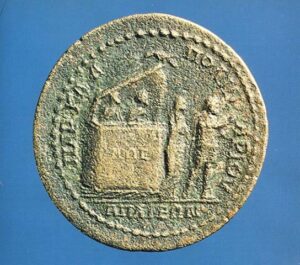
"This large bronze medallion was struck 1700 years ago at Apamea Kibotos in Asia Minor (modern Turkey) near the mountains of Ararat where, it is said, Noah’s Ark came to rest after the flood." Open lid?
Continued: Proving the viability of studying the subject. The results are the same - and in some cases quicker to assess; depending on what is known. Including interpreting ones own ''dreams''. After all, we all dream do we not on whatever we are interested in. Whatever we may be thinking about - regardless of subject or topic - in our waking {conscious} state - is still there in our unconscious {nightly} one. Train spotters, {as an example}. Do not ''train spotters'' dream about trains - or anoraks? -{joke}. The only difference is, this subject has more ''keys'' ''images'' and/or ''archetypes'' to assess because of its broadbase of {interests?}. But the main key to it all - is the fact that they are UNIVERSAL - and not general specific, i.e.,train spotting. Try ''Dream Stele'' and/or ''Fulcanelli'' to define similar {archetypal?} keys - in order to 'see' the parts within the whole.
A working example: {i.e.,from a day-to-day point of view}: "Back in 2004, England played a football game against France in the European championships, and England were 1-0 ahead. I think it was Frank Lampard who scored a header from a free kick. At 90 minutes England were winning 1-0. When the final whistle blew we had lost 2-1. France had not only equalised but they'd scored the winning goal all in the last 4 minutes. When I went to bed and woke up the next morning, I immediately realised that I had not only gone to bed thinking about those 4 minutes of football and dreaming, and waking up still thinking about it - but that it was the first night in quite a few years that I had not gone to bed thinking, dreaming and waking up about a murder." [Andy Hough/ Detective Chief Inspector, from the documentary 'Gun number 6' / BBC2].
Question. Did those dreams give him an 'insight' to anything?
![102255_cpp0KBee0FWp2Zyhwmvh47mWP18YQ9OFaWD2cFPNJjk[1]](https://esotericbasics.co.uk/wp-content/uploads/102255_cpp0KBee0FWp2Zyhwmvh47mWP18YQ9OFaWD2cFPNJjk1-300x225.jpg)
Created by a ''trickster''?
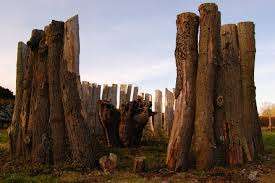
'Sleeping like a log'?
He had an abstracted look, and was dressed in vaguely medieval clothes. A tall knightly {'angel'?} figure in gleaming armour {'Achilles'?} was standing looking down at him, who turned and spoke to me. 'Ah, there you are', he said. 'It's high time you arrived and did something about this fellow.' 'Why, who is he?' I said. 'What has he got to do with me?' 'Don't you recognize him?' said the knight. 'He is an old master and mentor of yours, {Phoenix - of the Iliad link?} and very famous in his day'. 'I don't think i can place him,' I said, 'although he has a vaguely familiar look'. 'Of course he has,' said the knight, 'you were as thick as thieves once {'trickster' link?}. Even though you wandered the streets twanging a battered lute and he sang sophisticated songs in court {'city'?}'. 'You don't mean... Chretien?' 'Yes, Chretien de Troyes. The Arthurian romancer.' 'Why is he looking so abstracted,' I asked, 'gazing vacantly into space?' 'We were hoping you could answer that,' said the knight. 'Or at least find a way to prod him out of it. You once had his ear, in your rustic {'rural'?} way.' Memory began to stir..."
'The Inner Reaches of Outer Space' by Joseph Campbell.
SIDE NOTE: "With patient ears attend..." [Opening lines to 'Romeo and Juliet / Shakespeare].
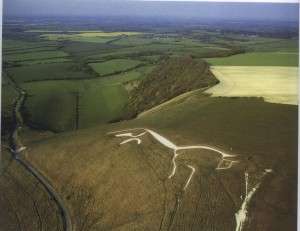
Refresher...''It is not that the sense life is to be negated or outwardly discontinued, as impractically taught by some Sankhyas. It is an inner withdrawal that is to be practiced, a withdrawal to 'higher levels' that will in itself bring that outer harmonization which is essential if the buddhi is to be attained. In the old symbol of the chariot, the horses of the senses are to be held back [ nigrihita] by the reins of the mind, but it is not intended that they be unyoked from the chariot or that their movement should be stopped altogether...'' Enlarged throughout. Question. Where would the 'chariot' be found? Answer in the ''Constellations''?

'flat'?
Continued..."Sitting there dreaming of past glories. He's been on that log for some 800 years... Sitting there in permanent bemusement. It's time to move him along. You did it once - in your own fashion.
See if you can do it now.'' 'But how am i supposed to do that'? 'You see up there?' said the knight, pointing towards a broad low hill {'Tor'?} that rose from the plain towards us. Upon its summit was a strange device. It looked something like a green biscuit tin, low in height {'flat'?}, almost featureless. I saw now that it was upon this object that Chretien's gaze was fixed. 'What ever is that?' i asked. 'The sum total of his work,' said the knight. 'The edifice of his brain. It is he who made it, and now he can't break free.' {subjective/objective link?}. 'Why ever not?' 'Because he did not finish it {unfinished link?}. How can you write something that is going to last until the end of Christendom if you have not finished it. That's what's bothering him...Gazing on the reflection of his art......

Remedy: ''The whole work of 'turning the light around' uses the method of reversal. The 'beauties' of the highest heavens and the marvels of the sublimest realms are all within the heart: this is where the perfectly open and aware spirit concentrates. Confucians call it the open center {Amarna?}, Buddhists call it the pedestal of awareness {'horizon'?}, Taoists call it the ancestral earth, the yellow court {'sand'?}, the mysterious pass {'Place of Rowing'?}, the primal opening. The celestial mind is like a house; the light is the master of the house {'Evening Star'?}. Therefore once you turn the light around, the energies throughout the body all rise.'' Expansion / Contraction. And/or: "Saffron is a shade of yellow or orange, the colour of the tip of the saffron crocus thread, from which the spice saffron is derived.[2] The hue of the spice saffron is primarily due to the carotenoid chemical crocin."
Tartessian Ferret?

Hard shell. 'Triple' aspect?
He knows that, but cannot think how.' 'SO?' 'You who showed him much of what is in there - despised jongleur - though you were at the time. He took them, changed them, transformed them into poetic jewels to titilate the fancy of lords and ladies of his time. Even if he did not understand half of what they were about, it was you who started him off on that tack. Now is your chance to help him finish it off.' 'How am i supposed to do that?' 'Take him back into himself - into the past - into his work. Take him back through it, and out of the other side.'...{'Phoenix' link, i.e., subjective/objective its pro's and con's - enlarged elsewhere}…
''Not out but through.'' {C. Jung}.
That ''potential'' is within sight, {'horizon' link} but ahead of 'time'. That link to K. Godels book and quotes on same. Enlarged elsewhere.
'Being and Time' / Martin Heidegger.
'On Having No Head: Zen and the Rediscovery of the Obvious' / D. E. Harding.
Tartessos to enlarge.
"Green carapace'' in relation to: " A papyrus of the 21st dynasty says of the Bennu that it is 'the one who came into being by itself'. It symbolizes the anticipated rebirth of the soul in the Underworld and was carved onto the backs of scarab amulets buried with mummified bodies. This ensures that the heart..." Enlarged elsewhere. Try ''Scarab''.

Astro ceiling in Senenmut bare tomb chamber.
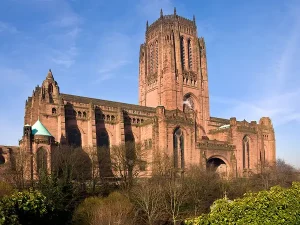
And/or: "I was working as a project manager at the Louvre Museum, in charge of the restoration of Greek papyri preserved in the Department of Egyptian Antiquities. I came across a small TIN box {"in the basement"}, bit like a BISCUIT tin, that contained an assortment of things: papyri, but also objects found here and there on an excavation site, bits of newspaper, a cigar butt etc. It all looked like rubbish with the exception of one particular piece that did not look like the others. It was folded with music notation on it {"music score"}. Papyrus is a plant, so fibre, and when dry it becomes brittle.

Narrow or broad?
It had been folded for 2000 years. It had to be moistened {'wetted'} in order to UNFOLD it strip by strip. All the folds had to be flattened out one by one. Some lines were tightly spaced others more widely spaced which is very unusual. And between these more WIDELY spaced lines were 'letters' written here and there which didn't make up a word. It was these that turned out to be a music score of Ancient Greece {threnody}. The first papyrus with Greek music found in France." ['Discovering the Music of Antiquity' / BBC4].
Question. Was it placed there deliberately expecting it {some day} to be found?
Nefertiti.
A music score is a written representation of a musical work123. It is usually written in a standard form of notation, which uses lines and symbols to show the pitches, rhythms, and other elements of the music1. A score can contain the part for a solo work or the parts for different instruments in an ensemble or orchestral work24. A score may also have vertical scoring lines that connect related staves....
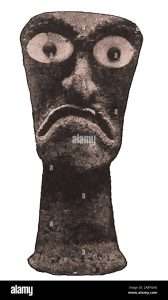
What's the remedy for mad, bad or sad?
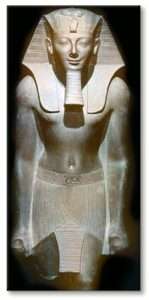
Recovered? Good health? New year?
A threnody is a wailing ode, song, hymn or poem of mourning composed or performed as a memorial to a dead person. The term originates from the Greek word θρηνῳδία (threnoidia), from θρῆνος (threnos, "wailing") and ᾠδή (oide, "ode"),[1][2] the latter ultimately from the Proto-Indo-European root *h₂weyd- ("to sing") that is also the precursor of such words as "ode", "tragedy", "comedy", "parody", "melody" and "rhapsody".
Similar terms include "dirge", "coronach", "lament" and "elegy". The Epitaphios Threnos is the lamentation chanted in the Eastern Orthodox Church on Holy Saturday. John Dryden commemorated the death of Charles II of England in the long poem Threnodia Augustalis, and Ralph Waldo Emerson wrote a "Threnody" in memory of his son....
Monday, Tuesday, Wednesday, Thursday, Friday?
Threnody encompasses all genres. There are great threnodies in prose (such as the lines from Charles Dickens’ Bleak House upon the death of Little Jo: "Dead, your Majesty. Dead, my lords and gentlemen. Dead…."), in poetry (as in W. H. Auden’s "Funeral Blues": "The stars are not wanted now: put out every one, / Pack up the moon and dismantle the sun…."), and in music (Giovanni Pergolesi’s "Stabat Mater," for one). Threnody, which we borrowed from the Greek word thrēnōidia (from thrēnos, the word for "dirge"), has survived in English since the early 1600s. Melody, tragedy, and comedy are related to threnody through the Greek root that forms their ending-aeidein, which means "to sing."

'Grandmother' as a means....
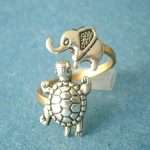 A work in progress: ''The question of the origins of Nefertiti has been a matter of debate since she first became known to scholarship during the 19th century. Nowhere are her father and mother named....although such a lack of parentage is shared by the vast majority of ancient Egyptian queens - with the exception of her mother-in-law, Tiye - both parents named in a series of large scarabs issued by her husband, Amenhotep III. a type of commemorative item that is all but unique to his reign.''
A work in progress: ''The question of the origins of Nefertiti has been a matter of debate since she first became known to scholarship during the 19th century. Nowhere are her father and mother named....although such a lack of parentage is shared by the vast majority of ancient Egyptian queens - with the exception of her mother-in-law, Tiye - both parents named in a series of large scarabs issued by her husband, Amenhotep III. a type of commemorative item that is all but unique to his reign.''
Libyan Sibyl?
Canary Islands?
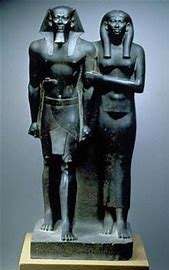
Wednesday's child. Akhenaten?
And/or: ''The first record of Nefertiti's existence comes on blocks {talatat's} from a vast new temple complex at Karnak East, by Amenhotep IV {Akhenaten}, dedicated to the Aten. The buildings of which were demolished by Tutankhamun onward and were taken to form the fillings {foundations?} of Pylons II, IX, AND X at Karnak {built by Horemheb}....'' [Pages 8/16 'Nefertiti' / A. Dodson].
Question. Who began that new 'religion' {of a single god}. Father or Son?
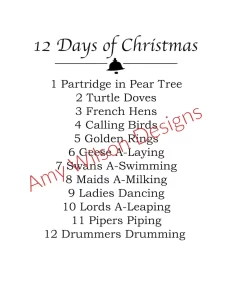
Some variants have "juniper tree" or "June apple tree" rather than "pear tree", presumably a mishearing of "partridge in a pear tree".
N.B. Amenhotep III identified with the colour blue. And/or: ''The large mosque opposite the Hagia Sophia in Istanbul is known as the Blue Mosque.'' ['The Chase' / 2019].
Refresher: ''East a beginning. West its ending.''
Side note: Krishna is represented with 'blue' skin.
And/or: ''Where gods have gathered, the heart grows still. A procession of jabiru walk, laying the eggs of other lives, of blue souls in another time. Incense rises where gods gather. Heaven and earth are long dreams weighed in the balance. A man is known by his words and deeds. Beautiful is the new sun sailing in a river of sky in the boat of morning.'' [Page 44 {Kindle} 'Awakening Osiris' / N. Ellis].
Continued: ''Talatat: from a term used to describe their size - 'Three Handspans'....''
Odd/Even. Male/Female. Light / Heavy - as a means....?
''Westward leading, still proceeding, guide us to thy....?
The heavy gate of Jaffer in relation to the light brick at Amarna.
Side note: On the navel of king Tut was found a scarab. 'Middle' of the human form - as with the senet board game - ''the middle way'' {or 'passing game'}.
''In {'Pop'} music - the 'middle eight' = eight bars.'' ['The Chase' / 10.1.22].

Inner/outer?

Impartial?
From a different perspective: ''It is the UNseen Seer, the UNheard Hearer, the UNthought Thinker. Other than 'IT' there is no Seer, no Hearer, no Thinker. It is the inner self, the Inner ruler, the deathless. It supports everything in the SENSE that 'IT' holds all forms within its embrace, and were its support withdrawn, even for a moment, all things would collapse at once. Witnessing all, it is attached to naught, so that experiences of pleasure and pain are as one to 'ITS' impartial gaze. Although it is the enjoyer of all 'qualities' yet IT itself is free from quality {nirguna}. In fact, this qualitylessness or NEUTRALITY is, notwithstanding the views of certain theologians, one of the first aspects to be noticed. Though the light shines in the hearts of men, and it is in the heart that it is first percieved, it would be a mistake to supose that it is only there and not in the outer world as well.'' [Page 127 'The Yoga of the Bhagavat Gita'].
The heart of Cancer? {i.e., praesepe}.
Nippur to enlarge.
 And/or {as ONE example}: ''Great dramatic art {i.e., as one example Greek drama/plays} shows us we often don't feel exactly what convention tells us we should feel....we are purged by catharsis.....In some respects giving an audience an experience which is similar to initiation.....Our animal body has become corrupted. It has become hardened and carries something like a protective carapace. We become comfortable with this carapace....We even grow to rely on it.....It has to be opened and exposed that few can face." [Pages 141/269/270 'The Secret History of the World'].
And/or {as ONE example}: ''Great dramatic art {i.e., as one example Greek drama/plays} shows us we often don't feel exactly what convention tells us we should feel....we are purged by catharsis.....In some respects giving an audience an experience which is similar to initiation.....Our animal body has become corrupted. It has become hardened and carries something like a protective carapace. We become comfortable with this carapace....We even grow to rely on it.....It has to be opened and exposed that few can face." [Pages 141/269/270 'The Secret History of the World'].
5:7 to enlarge.
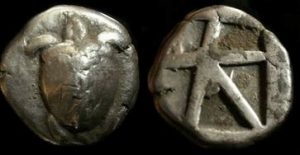
Anything inscribed on those 'backs''? What does 'five' represent?
Side note: The first coinage ever - came from a small island in the Aegean Sea. The Silver Stater. In the form of a turtle {made of 'electrum' - ''green gold''}. Years later the form changed from turtle into a tortoise . From a 'sea' animal into a 'land' one. Wet and Dry. No one really knows why. That external shell that hides something internal. Like the shell of an egg or seed. To get closer to the truth and/or mind set add this subject to those possibilities. ['Pawn Stars' / History channel].
Try ''egg''.
Amenhotep III to enlarge.
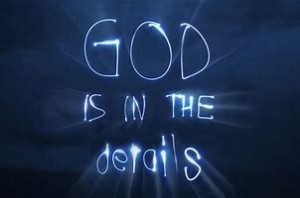

Culinary activities, especially bread production, were generally reserved for women. Throughout history and in the history of art, we have seen this female figure working with grain, as reflected in Egyptian figurines. The biblical world is no exception; the gospel also describes this feminine activity in a more eschatological context: "There will be two women grinding together; one will be taken and the other left" (Lk. 17:35, Mt. 24:41).
Another mention of these stones is: "If anyone causes one of these little ones who believe in me to stumble, it would be better for them if a large millstone were hung around their neck and they were thrown into the sea" (Mark 9:42). A popular tradition among pilgrims to Galilee is to visualize this passage with the animal driven stone (which are bigger); however, we do not know exactly what image the author of the gospel intended to evoke in their readers.
These passages invite us to reflect on the connection between the tangible reality of the gospel and the daily experiences of the inhabitants of ancient Galilee and Magdala.
Continued..."It does not sound easy'. 'I never said it was. But if you are going to be of any use in the sub-lunary worlds before the Final Trump comes, there is a missionary challenge for you. To save the soul of a poet, what more could a once low life street entertainer ask?' 'What do i have to do?' 'Take him up to the top of the hill. He considers it the pinnacle of his achievement, {higher of the lower?} - even if it is really a millstone around his neck {'zodiac' link but in the unaware sense of the word}. 'And when we get there what then?' 'All will be revealed. You will find a polygonal structure {enlarged elsewhere}, at each one of its walls a gate, and at each gate a sentinel {archetype?} you will recognize...Chretien de Troyes!' he said, in a voice as sepulchral as it was commanding, 'Go where the boy shows you. He will tell you how to finish your task'...'Follow him, lead him,' said the knight, to me in the same commanding manner. There was something vaguely familiar about this figure that seemed as ambivalent as his last command. His appearance seemed to change like an image in a haze. One moment clear and shinning, almost like St Michael or St George. At another having a coarser, bloodier look, like a Carolingian hero. And then again superimposed by a an older frailer figure {aspects of?}. 'One thing. Tell me your name before you go,' I said. His eyes glowed swiftly like blown coals. 'I see you have not forgotten the power of names,' he said. 'The old lore and memory returns to you. But that is not for me to reveal {nickname and/or new name link?} - as yet. Perhaps you would do better to consider the name of my horse. And that is a riddle that i leave you with. I give you two clues. Is it Pegasus or Rosinante?' With these words the figure faded, and i turned to follow the shambling form of the poet as he ascended the hill..." ['The Faery Gates of Avalon'].
Question. Dream symbolism {lucid?} - ONLY ? Try ''Pegasus''.
'Lucid Living' / T. Freke].
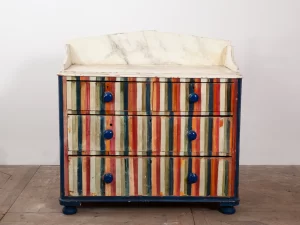
''Belongs to a wonderful group of Bohemian artists and intellectuals - based around Bloomsbury Square in London {1904-1940} - but had a country retreat in Sussex called Charleston. Sort of a wacky group rebelling against the Stuffy Victorian upbringing - so much so they were quoted as the group who 'lived in squares, painted in circles, and loved in triangles'...Some items had a makers mark, it was like a circle within a square - the circle looking like the Latin for Omega'' [ 'Salvage Hunters' / S13 EP3].
''In Greek mythology, Hippocrene /hɪpəˈkriːniː/ (Greek: Ἵππου κρήνη[1] or Ἱπποκρήνη or Ἱππουκρήνη[2]) was a spring on Mount Helicon.[3] It was sacred to the Muses and formed when the winged horse Pegasus struck his hoof into the ground, whence its name which literally translates as "Steed/Horse's Fountain".[4] The water was supposed to bring forth poetic inspiration when imbibed.''
Try ''Caroline'' for something further.
''The Charleston, a famous dance of the 1920's, is named after South Carolina.'' ['Reddiculous'].
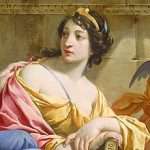
{C}alliope - Chief muse.
Question 2. {And/or exercise}: ''Sepulchral'' in relation to 'transcendent third' {i.e., ''flesh eater''}. Which 'character/s' {or archetype/s?} represents two thirds and one third? And why? Try ''tomb''.
Understanding that gives clues {because of that MIND SET} as to the purpose of the sarcophagus in the Gt. Pyramid - relative to the whole, i.e., coming in or going out ? - in relation to those ''shafts''. As a means.....?
Death/rebirth.

 Side note: ''Omega (/oʊˈmiːɡə, oʊˈmɛɡə, oʊˈmeɪɡə, əˈmiːɡə/;[1][2] capital: Ω, lowercase: ω; Ancient Greek ὦ, later ὦ μέγα, Modern Greek ωμέγα) is the twentyfour{th} and final letter in the Greek alphabet. In the Greek numeric system/isopsephy (gematria), it has a value of 800 {'eight'}. The word literally means "great O" (ō mega, mega meaning "great"), as opposed to omicron, which means "little O" (o mikron, micron meaning "little")....Ω was not part of the early (8th century BC) Greek alphabets. It was introduced in the late 7th century BC in the Ionian cities of Asia Minor to denote a long open-mid back rounded vowel [ɔː]. It is a variant of omicron (Ο), broken up at the side (
Side note: ''Omega (/oʊˈmiːɡə, oʊˈmɛɡə, oʊˈmeɪɡə, əˈmiːɡə/;[1][2] capital: Ω, lowercase: ω; Ancient Greek ὦ, later ὦ μέγα, Modern Greek ωμέγα) is the twentyfour{th} and final letter in the Greek alphabet. In the Greek numeric system/isopsephy (gematria), it has a value of 800 {'eight'}. The word literally means "great O" (ō mega, mega meaning "great"), as opposed to omicron, which means "little O" (o mikron, micron meaning "little")....Ω was not part of the early (8th century BC) Greek alphabets. It was introduced in the late 7th century BC in the Ionian cities of Asia Minor to denote a long open-mid back rounded vowel [ɔː]. It is a variant of omicron (Ο), broken up at the side (![]() ), with the edges subsequently turned outward (
), with the edges subsequently turned outward (![]() ,
, ![]() ,
, ![]() ,
, ![]() ).[4] The Dorian city of Knidos as well as a few Aegean islands, namely Paros, Thasos and Melos, chose the exact opposite innovation, using a broken-up circle for the short and a closed circle for the long /o/....''
).[4] The Dorian city of Knidos as well as a few Aegean islands, namely Paros, Thasos and Melos, chose the exact opposite innovation, using a broken-up circle for the short and a closed circle for the long /o/....''
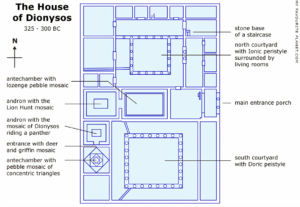 Food for thought: "The disciples of the feminine faculty, called at first Pallis, the Shepherds, having taken for symbol of their cult the distinctive sign of this faculty, called in Sanscrit Yonz, were surnamed, in consequence, Yonzjas, Yawanas, Ioniot, that is to say, Ionians, and as for mysterious reasons that it is useless to explain here, they had taken for ensign the colour red inclining to yellow, the name of Pznkshas or Phenicians, which signifies russet, has been given them. All of these names, offensive in the mouths of their adversaries, became glorious in their own and were received or translated among all the nations where they triumphed and became quite as much titles of honour.’
Food for thought: "The disciples of the feminine faculty, called at first Pallis, the Shepherds, having taken for symbol of their cult the distinctive sign of this faculty, called in Sanscrit Yonz, were surnamed, in consequence, Yonzjas, Yawanas, Ioniot, that is to say, Ionians, and as for mysterious reasons that it is useless to explain here, they had taken for ensign the colour red inclining to yellow, the name of Pznkshas or Phenicians, which signifies russet, has been given them. All of these names, offensive in the mouths of their adversaries, became glorious in their own and were received or translated among all the nations where they triumphed and became quite as much titles of honour.’
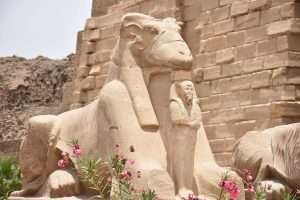
Karnac-Luxor.
On their side the Hindus, their antagonists, remaining faithful to the cult of the masculine faculty in the Divinity, had also their particular appellations; but as they triumphed more rarely in Europe these appellations and symbols became much less common. However, one can recognize on certain monuments their most striking symbol, which was, by opposition to those of their enemies, the distinctive sign of the masculine faculty: This sign called Linga in Sanscrit, Phallos or Phallus in Greek and Latin, is recognized although disfigured in the order of Doric architecture in opposition to the Ionic. This symbol transforms itself ordinarily into the head of a ram. The Yoni takes also the form of a violet and this is why this flower consecrated to Juno was so cherished by the Ionians. ['The Hermetic Interpretation of the Social Origin of Man'].
Continued: The Ionians (/aɪˈoʊniənz/; Greek: Ἴωνες, Íōnes, singular Ἴων, Íōn) were one of the four major tribes that the Greeks considered themselves to be divided into during the ancient period; the other three being the Dorians, Aeolians, and Achaeans.[2] The Ionian dialect was one of the three major linguistic divisions of the Hellenic world, together with the Dorian and Aeolian dialects.

Curl or knot?
When referring to populations, "Ionian" defines several groups in Classical Greece. In its narrowest sense, the term referred to the region of Ionia in Asia Minor. In a broader sense, it could be used to describe all speakers of the Ionic dialect, which in addition to those in Ionia proper also included the Greek populations of Euboea, the Cyclades, and many cities founded by Ionian colonists. Finally, in the broadest sense it could be used to describe all those who spoke languages of the East Greek group, which included Attic.
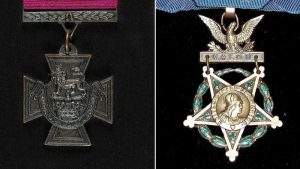
Starfish?
The foundation myth which was current in the Classical period suggested that the Ionians were named after Ion, son of Xuthus, who lived in the north Peloponnesian region of Aigialeia....
The etymology of the word Ἴωνες or Ἰᾱ́ϝoνες is uncertain.[6] Frisk isolates an unknown root, *Ia-, pronounced *ya-.[7] There are, however, some theories:
-

Scroll?
From a Proto-Indo-European onomatopoeic root *wi- or *woi- expressing a shout uttered by persons running to the assistance of others; according to Pokorny, *Iāwones could mean "devotees of Apollo", based on the cry iḕ paiṓn uttered in his worship; the god was also called iḕios himself.[8]
- From an unknown early name of an eastern Mediterranean island population represented by ḥꜣw-nbwt, an ancient Egyptian name for the people living there.[9]
- From ancient Egyptian jwn "pillar, tree trunk" extended into jwnt "bow" (of wood?) and jwntjw "bowmen, archers."[10] This derivation is analogous on the one hand to the possible derivation of Dorians and on the other fits the Egyptian concept of "nine bows" with reference to the Sea Peoples.
- From a Proto-Indo-European root *uiH-, meaning "power."
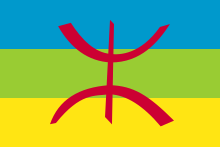 A working example: While Cleopatra has become a staple of modern culture, her daughter Princess Cleopatra Selene II is much less well known. Born in Egypt around 40 BC, Cleopatra Selene was brought to Rome after her parents committed suicide following her father Mark Antony’s defeat in the Battle of Actium. Some 10 to 16 years later, she was married to Juba II, a Berber prince from modern-day Algeria....
A working example: While Cleopatra has become a staple of modern culture, her daughter Princess Cleopatra Selene II is much less well known. Born in Egypt around 40 BC, Cleopatra Selene was brought to Rome after her parents committed suicide following her father Mark Antony’s defeat in the Battle of Actium. Some 10 to 16 years later, she was married to Juba II, a Berber prince from modern-day Algeria....
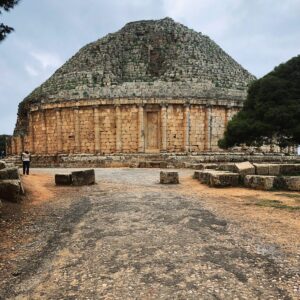 Over the last two centuries, the mausoleum has been repeatedly ransacked and attacked by treasure seekers and military strongmen. Cleopatra and Juba’s human remains, in fact, were removed from the burial site long ago, most likely by looters. In 1555, an Ottoman admiral by the name of Salah Rais ordered the mausoleum destroyed. Upon entering the monument, however, Rais’ men were met with a massive swarm of black wasps, which promptly attacked and stung many of the would-be saboteurs. The attack was so fierce that several of the men actually died from their stings. Seeing this as a sign that the mausoleum shouldn’t be disturbed, the project was abandoned. Many years later, the occupying French Navy used the site for target practice, resulting in some minor damage to the structure.
Over the last two centuries, the mausoleum has been repeatedly ransacked and attacked by treasure seekers and military strongmen. Cleopatra and Juba’s human remains, in fact, were removed from the burial site long ago, most likely by looters. In 1555, an Ottoman admiral by the name of Salah Rais ordered the mausoleum destroyed. Upon entering the monument, however, Rais’ men were met with a massive swarm of black wasps, which promptly attacked and stung many of the would-be saboteurs. The attack was so fierce that several of the men actually died from their stings. Seeing this as a sign that the mausoleum shouldn’t be disturbed, the project was abandoned. Many years later, the occupying French Navy used the site for target practice, resulting in some minor damage to the structure.
In 1866, Emperor Napoleon III visited the mausoleum. Thoroughly impressed with the structure, he righted the French Navy’s wrongs and demanded that the building be preserved and protected, allowing modern visitors a chance to wonder at the ruin and remember the life of a princess that may have otherwise been forgotten by time.
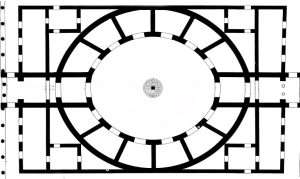
Chester to enlarge.
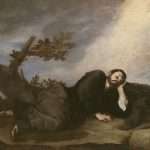 Queen Cleopatra Selene and King Jubba {Mauretania} were buried in a circular mausoleum known as the Grave of the Noble Lady by the Muslims and the Tomb of the Christian by the French {both 'orphans' raised by the 'victor'}...The tomb has a square base which supports a large squat cylinder surrounded by sixty Ionic columns. Perched on top of this is a conic pyramid, which has not been smoothed out {hewn/unhewn?} but rather forms a series of small steps to the very top of the cone. [Page 15 'Cleopatra to Christ' / Ralph Ellis].
Queen Cleopatra Selene and King Jubba {Mauretania} were buried in a circular mausoleum known as the Grave of the Noble Lady by the Muslims and the Tomb of the Christian by the French {both 'orphans' raised by the 'victor'}...The tomb has a square base which supports a large squat cylinder surrounded by sixty Ionic columns. Perched on top of this is a conic pyramid, which has not been smoothed out {hewn/unhewn?} but rather forms a series of small steps to the very top of the cone. [Page 15 'Cleopatra to Christ' / Ralph Ellis].
'Foster'?
Conqueror: a person who has overcome or defeated an adversary; conqueror. a winner in any struggle or contest.
And/or: Sixty, one of the central numbers in the systems of the an¬ cient Near East, still influences our lives when we count min¬ utes and seconds. It has also been used in other counting units, such as the old German measure called a Schock, which was mainly used for counting eggs but originally related to the placing of sheaves of grain at harvest time.

''The Birth of the New Man.'' 'Egg/Incarnation' to enlarge
 The relation of 60 to the 360 degrees of the circle and its use in the construction of geometrical figures such as the equilateral triangle may have played a role in the development of the sexagesimal system. Nor was its importance limited to ancient Babylonia: it was also considered a round number in ancient China, with 60 years as the normal lifespan of the individual. In ancient Greece, 60 was similarly used as a round number, and Plato's "marriage number," 12,960,000 = 60^, is derived from it. Sixty in the fourth power is the length of a world year (3,600 X 3,600 years), and every world day contains 36,000 years of human time. Plutarch claims that crocodiles lay 60 eggs, hatch them for 60 days, and live for 60 years; he adds that 60 is the first measure for those interested in heavenly appearances.
The relation of 60 to the 360 degrees of the circle and its use in the construction of geometrical figures such as the equilateral triangle may have played a role in the development of the sexagesimal system. Nor was its importance limited to ancient Babylonia: it was also considered a round number in ancient China, with 60 years as the normal lifespan of the individual. In ancient Greece, 60 was similarly used as a round number, and Plato's "marriage number," 12,960,000 = 60^, is derived from it. Sixty in the fourth power is the length of a world year (3,600 X 3,600 years), and every world day contains 36,000 years of human time. Plutarch claims that crocodiles lay 60 eggs, hatch them for 60 days, and live for 60 years; he adds that 60 is the first measure for those interested in heavenly appearances.
Sixty is also the product of 3 X 4 X 5, and the Kaaba in Mecca has recently been interpreted in these terms by the American musicologist and numerologist E. G. McClain, who relates its proportions to those of the Sumerian ark (60^) or its double (2 x 60^), the number of the sacred mountain, the world's center. ['The Mystery of Numbers'].


The Colossus of Rhodes: “To you, O Sun, the people of Doric Rhodes raise this bronze statue which reaches Olympus after calming the waves of war and crowning their city with the spoils of the enemy. Not only over the seas but also on land they light the sweet torch of freedom. “
Votive inscription on the Colossus.
And/or: Classical legend says the Greek Io was a priestess of HERA at Argos, desired by Zeus and turned into a heifer — either by Hera to hide her from Zeus, or by Zeus to hide her from Hera. In fact, she was the pre-Greek Moon-cow and barley goddess of Argos, after whom the Ionians were named before the patriarchal Achaean conquest. Her father, the river god Inachus, was turned into a legendary King of Argos. Graves (The White Goddess, pp.233, 337, 411) says she found her way to Egypt and became ISIS. Io is also sometimes associated with Europa, who gave her name to the continent of Europe. [

'Gleam of gold' = ''Acceptance-with-Joy.'' {Hannah Hurnard}.
Continued: "The other talent is that of the ability to be astonished or enlightened. To crack open the structures of the concrete mind {Athene?}, the sepulchres of preconceived ideas, to let in a little inspiration. To bring release to the spirits in prison, all those truths that have been ignored, rejected or suppressed." [ from the book by G. Knight].
Famine stela?
A working example: ''Like the Gnostics of old before him, so Jung also was accused of being gloomy and pessimistic in his outlook {'melancholy'?}. Perhaps the best illustration of his attitude is found in the dream of the woman patient - who saw herself submerged in a pit filled with a dangerous substance and who then perceived Jung pushing her right down into the pit with the words: 'Not out but through!'. It has been reported that whenever Jung discussed this particular dream in public or before friends he showed visible enjoyment, delighted in the fact that such a clear recognition of his essential attitude should have emerged from the dream of his patient.'' [Page 197 'The Gnostic Jung' / S. Hoeller].
Seti 1st tunnel to enlarge.
Side note: A ''poisonous'' substance found UNDER a Mayan/Aztec temple. The hypothesis is: ''a booby trap for intruders''. ['Blowing Up History'].
From a different perspective: ''In this place in Hebron- through Moses - God brought the Hebrews out of Egypt BACK to Israel by way of Abraham, Isaac, Jacob and Joseph: ''Out of Egypt i will call my Son and set my people free.'' [From the tombs of the Patriarchs in Hebron / 'Pilgrimage: Lent / Day 2 / Magdala / 2023].

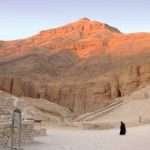 Continued: A work in progress: ''The way i look at it is i don't think i will be able to truly understand where i was in my own head in that period of time. I just wanted peace, and at the back of my mind i knew what that meant.... i just wanted a break from my own mind.....I was saying things out loud that i hadn't comprehended in my own head before ...and once out of my mouth - out in the world so to speak....i could see the reality of the situation i had been in....until eventually i could explain to the family what had happened....and that truthfulness helped me to come through to the other side happy. [Fergus: 'Roman Kemp: A Silent Emergency' BBC3 / 2021].
Continued: A work in progress: ''The way i look at it is i don't think i will be able to truly understand where i was in my own head in that period of time. I just wanted peace, and at the back of my mind i knew what that meant.... i just wanted a break from my own mind.....I was saying things out loud that i hadn't comprehended in my own head before ...and once out of my mouth - out in the world so to speak....i could see the reality of the situation i had been in....until eventually i could explain to the family what had happened....and that truthfulness helped me to come through to the other side happy. [Fergus: 'Roman Kemp: A Silent Emergency' BBC3 / 2021].
''Into the light''?
Aquae Sulis to enlarge.
''Gleam of gold.'' {Pages 65 -70 'Hinds Feet in High Places' / Hannah Hurnard}.
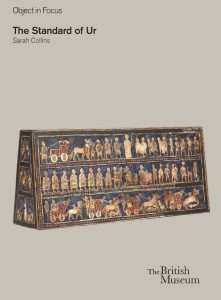
Also found near the neck.
''Millstone around his neck'' in relation to : At Gordion {of Gordian knot fame} - at the time when the Celts were in charge - is found in one burial - two skeletal females older/younger {the elder on top} - the younger in fetal position - with two quern stones on top of both. BOTH placed at the neck joint to the head i.e., TOP OF THE SPINE. Animal bones found nearby. ['The Celts: Blood, Iron and Sacrifice' / A. Roberts and N. Oliver / BBC 4].
'Quern' and 'younger' / 'child' to enlarge.
Hamlets Mill / G. Santillana.
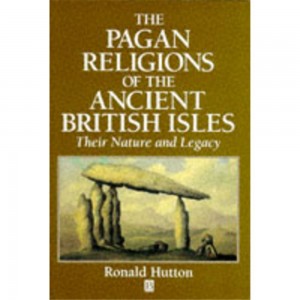
"Purposely slanted. Over time some were covered with earth and then became long mounds ...''Error runs... And/or: Any 'flowers' on top?
"Error runs down an inclined plane, while truth has to laboriously climb its way up hill".
Side note: Approaching Stonehenge - all up hill - as it is up to the cave/manger TOWARDS the birth of the Jesus child {i.e., from the ''Shepherds fields''}. Coincidence?
Side note: "Perhaps we shall fare better when enquiring after the 'deity' or deities in whose honour the tomb - shrines might have been raised. One means of approach to this question is to examine the orientation of the tombs, for if it can be demonstrated that they point towards the sun or moon, then a sky cult of some sorts is implied. At once it can be seen that many tombs are disqualified from inclusion. The earthen long barrows of Cranborne Chase, Dorset, are laid out along ridges, while those of the Yorkshire Wolds were apparently designed to overlook river valleys. The simple passage graves clustered at Carrowkeel, County Sligo, all face between north and N/W, and if they seem to be pointing to anything then it is the great cemetery at Carrowmore, nearby. At least one Orkney passage grave was sited to look at a neighbouring tomb. A tomb of the Clyde tradition on the Isle of Arran faces the midsummer sunrise fairly exactly, but there are nineteen other specimens of the same style on the same island which point in quite different directions. So the ONE midsummer alignment could be a an accident {Micro?}. But having said all this, a majority of the Irish court cairns, of the Cotswold - Severn tombs, of the earthen long barrows and of either the mounds or the passages of the northern.....
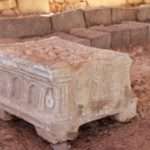
Incline?
.......Scottish monuments, face between north east and south west {Macro?}. Aubrey Burl, who has taken more interest in this aspect of the tombs than any other scholar, made a survey of the Wiltshire long barrows. He discovered that although most could be said to have faced the sun's span, a significant majority were aligned upon points outside of it, but within that of the moon...This may well be correct; but another significant majority of these long barrows, as of the Cotswold - Severn tombs, the court cairns and the Scottish sites, point outside the range of either or both of the great heavenly bodies... Perhaps they just pointed toward the warmest {S/E?} and least windy {S/W?} direction...So sky gazing has not achieved anything conclusive, and we have instead to turn our attention to the earth, and to confront the question of the Goddess..." ['The Pagan Religions of the Ancient British Isles'. All emphasis, this readers].
And/or: ''Sandbanks is a peninsula on the south coast of Dorset.'' ['The Chase'].
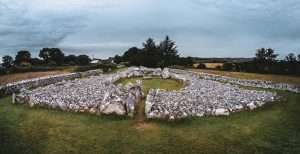
External = triangular {'pyr'} = 'fire'. Inner =?

Colonnade / Peristyle to enlarge.
"The court cairn or court tomb is a megalithic type of chambered cairn or gallery grave. During the period, 3900–3500 BC, more than 390 court cairns were built in Ireland and over 100 in southwest Scotland. The Neolithic (New Stone Age) monuments are identified by an uncovered courtyard connected to one or more roofed and partitioned burial chambers. Many monuments were built in multiple phases in both Ireland and Scotland and later re-used in the Early Bronze Age. Court cairns are characterized as having an uncovered courtyard area connected to one or more covered burial chambers. The boundaries of this open area were typically lined with large standing stones. A narrow, stone lined entry extended from the main area into one or more roofed burial chambers. Courtyards were generally oval or circular in shape, with U-shaped and semi-circular courtyards being the most common layout. Large, standing stones were used to make the walls and roof of burial chambers, normally located at one end of the cairn. Burial chambers are typically divided by jamb stones or jamb and sill stones into consecutive burial compartments."
N/W 'TIP' OF EUROPE.

The Olmec head. A 'laughing' one? Look it up as well as H/V {i.e., head band} - before those first impressions say something else.
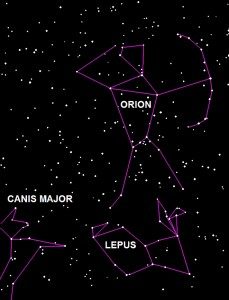
Hare nome?
Side note: Attempting to 'define' the above gives us the chance to get into the heads of such individuals and groups as: "Around 9000 years age mainland Europe underwent a social and technological revolution...the Neolithic era. Characterized by farming and permanent settlements, the new culture and its ideas slowly expanded west, before they finally crossed into Britain around 4000BC....Long Barrow burial tombs....the funeral practices of which were peculiar....They had de-fleshment and cutting off of heads. Heads were treated completely different to other parts of the body....The whole Barrow was then covered with earth dug from large pits...." ['Operation Stonehenge: What lies Beneath' / BBC 1. Episode 1].
From the 'bowels of the earth'? {i.e., 'fire' link}.
Question. What were those 'pits' then used for?
Refresher: "Not out but through."

'Overhang' in the S/W.
Side note: ''You've changed, Bilbo Baggins. You're not the same hobbit that left the Shire. ''I was going to tell you, i found something in the Goblin tunnels,'' replied Bilbo {while searching for the 'ring' inside his right pocket}. ''Like what,'' said Gandalf, ''What did you find!'' ''My courage {keeping the ring inside his pocket}. ''Good you'll need it. I'll see you at the overlook, before the SLOPES of Erebor.'' ['The Hobbit'].
From a different perspective: ''The National Wallace Monument is a 67 metre tower on the shoulder of the Abbey Craig, a hilltop overlooking Stirling in Scotland. It commemorates Sir William Wallace, a 13th- and 14th-century Scottish hero. The tower is open to the public...'' [Wiki].
Question. Did the author belong to any ''mystery'' club?
Recall the 'middle' pyramid overlooking the Sphinx and the shadow they both project towards the Sphinx temple - ''from the shoulder of the Sphinx'' - at a certain time of the year - inside of which are found statues in black granite of Khafre buried upside down in purposely dug out 'pits'.
Refresher: "Many years ago the English psychologist, F. W. H. Meyes, suggested that - ''hidden in the depth of our being is a rubbish heap as well as a treasure house''.
Question. Did those ancient Egyptians ever travel to the Southern Hemisphere - where Orion is seen in the night sky - upside down?
Imhotep?
Side note: 'Vase' found upside down in a Longbarrow at Stonehenge and at a sacred site belonging to Atilla {enlarged within}.
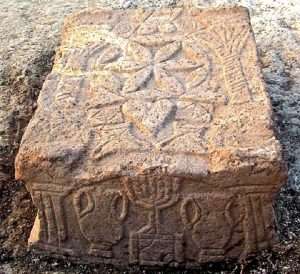
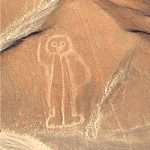 Analogy: ''Tolkien's Catholicism was a significant factor in C. S. Lewis's conversion from atheism to Christianity, although Tolkien was dismayed that Lewis chose to join the Church of England.[87] He once wrote to Rayner Unwin's daughter Camilla, who wished to know the purpose of life, that it was "to increase according to our capacity our knowledge of God by all the means we have, and to be moved by it to praise and thanks."[88] He had a special devotion to the blessed sacrament, writing to his son Michael that in "the Blessed Sacrament ... you will find romance, glory, honour, fidelity, and the true way of all your loves upon earth, and more than that".[T 3] He accordingly encouraged frequent reception of Holy Communion, again writing to his son Michael that "the only cure for sagging of fainting faith is Communion." He believed the Catholic Church to be true most of all because of the pride of place and the honour in which it holds the Blessed Sacrament.[T 10] In the last years of his life, Tolkien resisted the liturgical changes implemented after the Second Vatican Council, especially the use of English for the liturgy; he continued to make the responses in Latin, loudly, ignoring the rest of the congregation.[80]
Analogy: ''Tolkien's Catholicism was a significant factor in C. S. Lewis's conversion from atheism to Christianity, although Tolkien was dismayed that Lewis chose to join the Church of England.[87] He once wrote to Rayner Unwin's daughter Camilla, who wished to know the purpose of life, that it was "to increase according to our capacity our knowledge of God by all the means we have, and to be moved by it to praise and thanks."[88] He had a special devotion to the blessed sacrament, writing to his son Michael that in "the Blessed Sacrament ... you will find romance, glory, honour, fidelity, and the true way of all your loves upon earth, and more than that".[T 3] He accordingly encouraged frequent reception of Holy Communion, again writing to his son Michael that "the only cure for sagging of fainting faith is Communion." He believed the Catholic Church to be true most of all because of the pride of place and the honour in which it holds the Blessed Sacrament.[T 10] In the last years of his life, Tolkien resisted the liturgical changes implemented after the Second Vatican Council, especially the use of English for the liturgy; he continued to make the responses in Latin, loudly, ignoring the rest of the congregation.[80]
REFRESHER: ''In its entire history EIGHT people have only been made Honorary citizens of the U.S.A.''
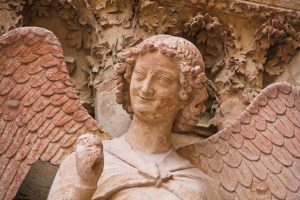
''The Smiling Angel (French: L'Ange au Sourire), also known as the Smile of Reims (Le Sourire de Reims), is a stone sculpture of the cathedral of Reims which was carved between 1236 and 1245.[1] This figure is in the north portal of the west facade of the cathedral.'
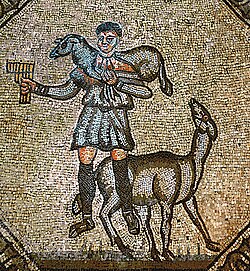
On the shoulders of giants?
AND/OR: The Achavanich Beaker Burial refers to the remains of a prehistoric woman who lived around 4,000 years ago in the area of present day Achavanich, Caithness, Scotland. Ava, as she is now known, was discovered in 1987 by William and Graham Ganson and excavated by regional archaeologist Robert Gourlay, from the Highland Regional Council, and two assistant archaeologists: Gemma Corcoran and Sarah Hargreaves. Ava was found interred in a burial cist with a beaker, flints, a cow scapula, and possibly flowers.[1]

Resting on ones shoulders?
It has been interpreted that Ava would have been lying on her back and turned slightly to her right with her knees close to her chin. Both the beaker and the flints that were found buried with her were believed to have been placed up by her head. The ox scapula was likely placed upon Ava's left shoulder by the people who buried her. It is possible that she was also laid to rest with flowers due to the beaker showing evidence of pollen residue. Although there is no physical trace of clothing, Ava would have likely been wearing some type of covering made from animal hide.[3]
Approximately 41–60% of the skeleton remains intact today, including a majority of the skull, left femur, and some thoracic and lumbar vertebrae. Most of the missing bones belong to the mid to upper left section of the skeleton, such as the entire left arm, left ribcage, and mandible.[4].....The beaker was found in the burial cist nearly completely intact. It measures 16.5 cm in height and is decorated with comb incisions that form horizontal lines, herringbone, triangular and criss-cross impressions......
'Lozenges'?
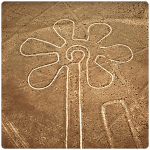
" Behold, I am against you, O Gog, chief prince of Meshech and Tubal. I will turn you around, put hooks in your jaws and bring you out with your whole army—your horses, your horsemen fully armed, and a great horde with large and small shields, all of them brandishing their swords." Ezekiel 38:4
Further analysis of the beaker revealed the presence of multiple different types of pollen, including meadowsweet, pine, and birch. Although there was not enough pollen residue to conclude what, if anything, was held in the beaker at the time of burial.
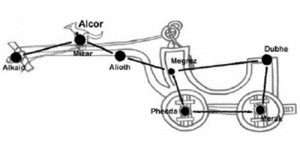
In North Germany Alkor, as there written, has been der Hinde, the Hind, or Farm Hand; in Lower Germany, Dumke; and in Holstein, Hans Bumken, Hans the Thumbkin, — the legend being that Hans, a wagoner, having given the Saviour a lift when weary, was offered the kingdom of heaven for a reward ; but as he said that he would rather drive from east to west through all eternity, his wish was granted, and here he sits on the highest of the horses of his heavenly team. A variant version placed Hans here for neglect in the service of his master Christ ; and the Hungarians call the star Oontzol, with a somewhat similar tale. Another Teutonic story was that their giant Orwandil, our Orion, having frozen one of his big toes, the god Thor broke it off and threw it at the middle horse of the Wagon. where it still remains.
Also found buried with Ava was an adult left cattle scapula. There were dry breaks to the bone which were likely a result of postmortem influence, either by the people who killed the cow or from natural breakage. The scapula shows no evidence of human manipulation for tool use, allowing for the conclusion that it was likely placed in the tomb with flesh still present on the bone as a food offering to Ava.[4] There were three separate flints buried with Ava: two flakes and the other a thumbnail scraper. Unfortunately these pieces were lost sometime between their discovery in 1987 and the recent reinvestigation of the burial site.[13]
And/or: This was spoken of as a discipline, not simply as an idea, and it has also been described as a specific antidote to pride. Saint Therese of Lisieux speaks of the same thing in a quite distinctive way when she tells of how, in preparing for her first communion, she spontaneously formed something similar. She had been given a devotional passage written for her, and wrote about her response to it: “Of course, I’d been preparing my mind for a long time beforehand, but it needed a fresh impetus—it had to be garnished, as it were, with fresh flowers, to make our Lord feel at home. The flowers were the many pious practices which I adopted at the time, only the buds from which they sprang were the aspirations and acts of love, even more numerous, which you’d written down for daily use in my little book."

Pressed flowers found in the middle of the forehead.
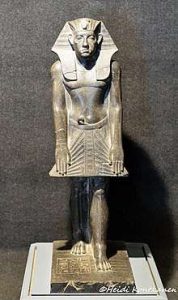 On the monastic path, prayer and liturgy fill this place and drive out the sadness with the sweetness of the Spirit. Here, theory is not enough: in the formation of the magnetic center we must discover our own ways of transforming this bitterness, first by turning it positive and so releasing the energy trapped in it, and finally by mneme Theou: by finding our own inner communion in remembrance of God, and then by bringing it to a strength sufficient to transmute the negative feelings....
On the monastic path, prayer and liturgy fill this place and drive out the sadness with the sweetness of the Spirit. Here, theory is not enough: in the formation of the magnetic center we must discover our own ways of transforming this bitterness, first by turning it positive and so releasing the energy trapped in it, and finally by mneme Theou: by finding our own inner communion in remembrance of God, and then by bringing it to a strength sufficient to transmute the negative feelings....
The actual experience of this renunciation is described in different ways by different Fathers. One valuable description is given in Gregory of Nyssa’s book The Life of Moses, where he speaks of the bitter waters found by the Israelites in the desert—described in Exodus 15:22-25—as being sweetened by wood, “the wood of the cross.” This wood is symbolic of a higher form of love: a higher emotional love which combines with itself a special kind of knowledge that is gnosis. On the monastic path, the monk must die to the world. {'A Different Christianity' / R. Amis}.
Zenith of summer?
Sweet/Bitter to enlarge.
Recall the ''wooden bowl'' being produced from underneath Rosslyn Chapel.
And/or: ''Archaeologists from the University of the Highlands and Islands Archaeology Institute were astonished last week when they unearthed a 2,000-year-old wooden bowl from an underground chamber beneath The Cairns broch, South Ronaldsay, in Orkney....The bowl has been confirmed to be made from alder and the dating is known from the location within the subterranean chamber which the archaeologists on site have termed the “Well”. [2018].
Side note: ''Notre-Dame de Reims (/ˌnɒtrə ˈdɑːm, ˌnoʊtrə ˈdeɪm, ˌnoʊtrə ˈdɑːm/;[2][3][4] French: [nɔtʁə dam də ʁɛ̃s] (![]() listen); meaning "Our Lady of Reims"),[a] (known in English as Reims Cathedral), is a Roman Catholic cathedral in the French city of the same name, the archiepiscopal see of the Archdiocese of Reims. The cathedral was dedicated to the Virgin Mary and was the traditional location for the coronation of the kings of France.''
listen); meaning "Our Lady of Reims"),[a] (known in English as Reims Cathedral), is a Roman Catholic cathedral in the French city of the same name, the archiepiscopal see of the Archdiocese of Reims. The cathedral was dedicated to the Virgin Mary and was the traditional location for the coronation of the kings of France.''
''Twentytwo'' to enlarge{?}.
''The cathedral church is thought to have been founded by the bishop Nicasius in the early 5th century. Clovis was baptized a Christian here by Saint Remigius, the bishop of Reims, about a century later. He was the first Frankish king to receive this sacrament.''
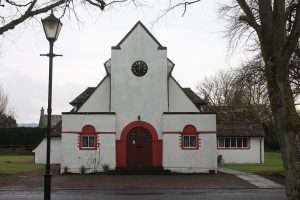
Village HALL. Question. Where have you seen that shape before?
Continued: ''Forteviot (Scottish Gaelic: Fothair Tabhaicht) (Ordnance Survey grid reference NO052175) is a village in Strathearn, Scotland on the south bank of the River Earn between Dunning and Perth. It lies in the council area of Perth and Kinross.''
Side note: ''Perth became Scotlands seventh city in 2012.'' ['The Chase'].

The rose that blooms at the center of the.....?
Continued: ''Perth has been known as The Fair City since the publication of the novel Fair Maid of Perth by Scottish writer Sir Walter Scott in 1828. During the later medieval period the city was also called St John's Toun or Saint Johnstoun by its inhabitants—a reference to its principal church, which was dedicated to St John the Baptist. This name is preserved in the name of the city's football club, St Johnstone F.C. The city often refers to itself using the promotional nickname "Gateway to the Highlands", a reference to its location.[8] Perth is twinned with Aschaffenburg, in the German state of Bavaria, and there are several places in the world named after Scotland's Perth, including Perth in Western Australia, Perth in Tasmania, and Perth in Ontario, Canada.''
'Middle Earth' {The Hobbit}.
This old word 'Cist' is preserved in the Nordic languages as "kista" in Swedish and "kiste" in Danish and Norwegian, where it is the word for a funerary coffin.[7][8][9] In English it is related to "cistern" {i.e.,water link}.
Refresher: ''Many years ago the English psychologist, F. W. H. Meyes, suggested that - ''hidden in the depth of our being is a rubbish heap as well as a treasure house''.
Medway Gap.
Side note: Granny Smith {Maria Smith} apples {a variety of green apple} named after an ''elderly woman'' whose first seedlings came from the remains of some Tasmanian crab apples.''
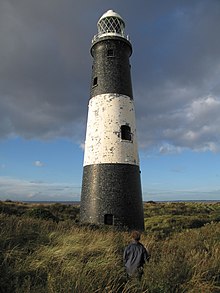
''Glastonbury'' for a different take on the same ''Theme'' {I.e., 'Tor' V 'Lighthouse'}. S/W V S/E?

S/E 'T'urkey. Collective or individual?
And/or: A work study of 250 individuals - using DNA from teeth. All taken from known Beaker People burial sites {''signature Beaker burials''}. The beginning of Individual burials as opposed to the previous collective ones: ''Was it the new ideas that travelled throughout these islands or the people as well.'' 50% are found to have made there way to the Yorkshire Wolds. ''Some as far a field as Scotland.'' ['Digging For Britain' /S1 EP2].
Most towards the east side.
Refresher: ''East is a beginning, West its ending.''
''This is Spurn, one of Yorkshire Wildlife Trust's most iconic nature reserves. It is a wildlife-rich mosaic of beach, mudflats, saltmarsh, dunes, grassland, open water, saline lagoons and native sea buckthorn scrub.''
Spurn Head was known to classical authors, such as Ptolemy as Ocelum Promontorium (Ancient Greek: Ὀκέλον ἄκρον).
Linear A/B?
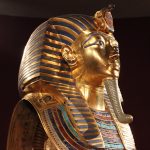 The author {'Pagan Religions'} using his 'pagan' knowledge in the same vein as Plato and Gurdjieff {enlarged elsewhere} as his ''method'' of enticing the reader to understand the {Micro} within the {Macro}, i.e.,''Nineteen plus the ''one'' = 20 symbolism. And/or ''face on'' in relation to 'in profile'. And/or ''outside'' / 'inside' as defined {that very first one?} in Homer's Secret Iliad - those 'boundaries' that are defined as inside/outside the Milky Way or Zodiac. All as a means...? Together with...
The author {'Pagan Religions'} using his 'pagan' knowledge in the same vein as Plato and Gurdjieff {enlarged elsewhere} as his ''method'' of enticing the reader to understand the {Micro} within the {Macro}, i.e.,''Nineteen plus the ''one'' = 20 symbolism. And/or ''face on'' in relation to 'in profile'. And/or ''outside'' / 'inside' as defined {that very first one?} in Homer's Secret Iliad - those 'boundaries' that are defined as inside/outside the Milky Way or Zodiac. All as a means...? Together with...

Flat top?
Refresher: ''On many Russian churches the crosses on the domes often have a slanting support bar underneath the cross. This is a Russian tradition that Christ was lame...'' [Page 266 'Russia: Past, Present and Future' / R. Steiner].
"Through Christ, there can enter into the winter cold {S/W?} of knowledge a warmth which in no way obscures or corrupts it, but gives it life; and into the stormy creative chaos of the instinctive life {'Ptah'?} he brings a light {S/E?} which does not lame it, but purifies and redeems it." ['The Flaming Door'].
'Strong' or 'weak' legs?
''Life'' in relation to 'Goddess'. ''Lame'' in relation to a 'Blacksmith' {i.e.,as one example Hephaestus}.
And/or: M/ F / S/W - S/E / top down or bottom up?
N.B. Imhotep = Son of Ptah.
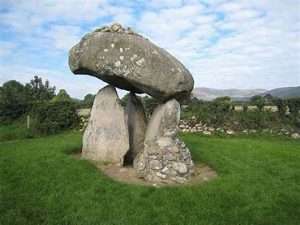
From behind - line up those 'three points' with the horizon - to attempt a MIND SET.
And/or "Error runs down an inclined plane {'fall'?}, while truth has to laboriously climb its way up hill." Top/down / Bottom/up. Which and why?
Side note: Approaching Stonehenge - all up hill - as it is up to the cave/manger TOWARDS the birth of the Jesus child {i.e., from the ''Shepherds fields''}. Coincidence?
A {practical} example: ''The road ahead will be long - the climb steep.'' [Election victory speech/ Barack Obama].
Herders/Herding?
And/or: "According to the Guinness Book of Records, the steepest street in the world is located on the South Island of New Zealand and is Baldwin Street, with a slope of nineteen degrees. Can you imagine what it must be like to live at the top?....
The livestock industry is one of the main industries in the country, particularly sheep. Did you know that for every person living in New Zealand there are at least 10 sheep?" ['Magazine Civitatis'].
'Horizon / Sheep decans' to enlarge.

in situ ?
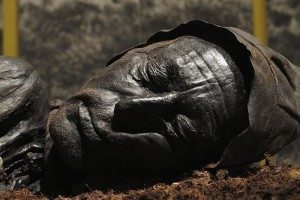
Lindow Man to enlarge.
A {deeper?} read: "He bases it on the Apocryphal Gospel of Nicodemus or Acts of Pilate which treats at some length the role of Joseph of Arimathea - who is mentioned briefly in the Gospels as getting permission for custody of the body of Jesus from Pontius Pilate and burying it in his own sepulchre. There does in fact seem to be strangely little written or thought about Joseph of Arimathea, apart from latter stories of receiving the blood of Christ in the 'Cup' of the Last Supper, which we owe to Robert de Boron. Even going by the bare bones of the Gospel narratives, if it had not been for Joseph of Arimathea there would have been no empty tomb, and no traditional story of the Resurrection! He plays a crucial role in the drama of the Passion. Again we see how neglected aspects of orthodoxy tend to spring up with many accretions about them." ['Experience of the Inner Worlds'].
Question. Same as question 2 {four/five paragraphs back}. See it?
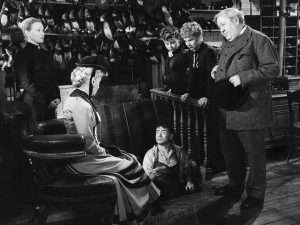 And/or: "The Wandering Jew is a mythical immortal man whose legend began to spread in Europe in the 13th century.[a] In the original legend, a Jew who taunted Jesus on the way to the Crucifixion was then cursed to walk the Earth until the Second Coming. The exact nature of the wanderer's indiscretion varies in different versions of the tale, as do aspects of his character; sometimes he is said to be a shoemaker or other tradesman, while sometimes he is the doorman at the estate of Pontius Pilate."
And/or: "The Wandering Jew is a mythical immortal man whose legend began to spread in Europe in the 13th century.[a] In the original legend, a Jew who taunted Jesus on the way to the Crucifixion was then cursed to walk the Earth until the Second Coming. The exact nature of the wanderer's indiscretion varies in different versions of the tale, as do aspects of his character; sometimes he is said to be a shoemaker or other tradesman, while sometimes he is the doorman at the estate of Pontius Pilate."
'Station of no station'?
'Commissionaire'?
G. Croly to enlarge.
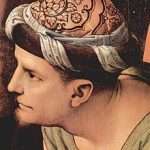
A covering for those ''bare bones''?
''Bare bones'' in relation to: "Awareness adds 'flesh' to those dry bone/s. Link to the meaning of ''garment'' symbolism. And the same keeps the door open. Knowledge keeps all things open; never shut. AND THEREFORE THE {METHOD?} used. Final link to the word 'Gnosis' - {mechanics of}.
''Bones of my bones and flesh of my flesh'' [Gen.ii.23].
And/or: "...nothing is covered that will not be revealed, or hidden that will not be known." [Matthew X, 26].
"...symbols are not obstacles that must be eliminated in order to arrive at knowledge of the truth, but rather means for receiving 'revelation'. The "clothes" - the symbols - of truth are for each not what hides it, but rather what reveals it." [Extract from the book by Tomberg].
Swaddling cloth?
A {working?} example {i.e., if only in the Old Testament sense of the 'word'}: "I will deliver thee into the hand of them that thou hatest, into the hand of them from whom thy mind is alienated. And they shall deal with thee hatefully, and shall take away all thy labour - and shall leave thee naked and bare...." [Ezekiel 23:29].
Try Gog/Magog.
"O children of Adam. Indeed, we have given you garments to cover your 'nakedness',[key] and as a thing of beauty;...but the garment of god-consciousness is the best of all. This is one of gods messages....that human beings might take it to heart". [Quran 7:26].

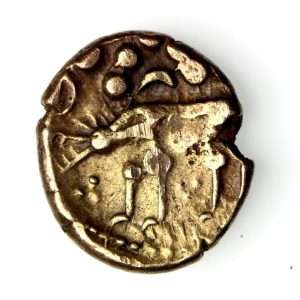 From a different perspective: "At the very end of The Voice of Experience - the author Laing narrates one of his unmatchable vignettes. One of the fascinating aspects of this case history is that it manifests so many of the traditional shamanic elements, particularly with the woman involved becoming an animal. Laing mentions hound but i suspect a wolf was more likely to have been the case. What is particularly important - is the lesson that Laing learned: 'the distinction between possibility and impossibility is usually among the first to go' and the openmindedness that this leads me to have towards the next thing that my next patient will say to me. It begins on Good Friday. She lived in a remote house. It was empty until Monday. She was expecting nobody. At three o'clock {'zenith'?} in the afternoon she was meandering aimlessly through the house when a fierce white heat began to pierce the middle of her back behind her solar plexus...It was the same as ten years ago. She had a few seconds to decide whether to resist {she felt if she did she would perish} or to go along with it {if she did she might go mad}. She decided to go along with it. As soon as she made the decision she became calm and lucid. She observed she was not moving herself, but that she was being moved by her solar plexus {'belly'}. She looked on calmly as she was moved to go to the bedroom to bring down a blanket, to make a lair as for a dog under the kitchen table. Why she was moved to do that, she had no idea at the time. "
From a different perspective: "At the very end of The Voice of Experience - the author Laing narrates one of his unmatchable vignettes. One of the fascinating aspects of this case history is that it manifests so many of the traditional shamanic elements, particularly with the woman involved becoming an animal. Laing mentions hound but i suspect a wolf was more likely to have been the case. What is particularly important - is the lesson that Laing learned: 'the distinction between possibility and impossibility is usually among the first to go' and the openmindedness that this leads me to have towards the next thing that my next patient will say to me. It begins on Good Friday. She lived in a remote house. It was empty until Monday. She was expecting nobody. At three o'clock {'zenith'?} in the afternoon she was meandering aimlessly through the house when a fierce white heat began to pierce the middle of her back behind her solar plexus...It was the same as ten years ago. She had a few seconds to decide whether to resist {she felt if she did she would perish} or to go along with it {if she did she might go mad}. She decided to go along with it. As soon as she made the decision she became calm and lucid. She observed she was not moving herself, but that she was being moved by her solar plexus {'belly'}. She looked on calmly as she was moved to go to the bedroom to bring down a blanket, to make a lair as for a dog under the kitchen table. Why she was moved to do that, she had no idea at the time. "
Many other 'keys' mentioned i.e., from cellar to attic / naked / three times / 'full moon shone through open windows'. Finally: "She awoke at dawn on Easter Monday, naked, curled up on the kitchen table in a blanket."
Subjective/Objective. Origins of. Purpose of.
Cro-magnon man v Neanderthals to enlarge.
Nazca lines.

It was the 'wall' that made him. Will it be the wall that breaks him? Humpty-dumpty?
Those positive and negative aspects we all contain, [ 'vices/virtues'. New testament ] which; in their opinion; we can be constantly at odds with. We 'struggle'/ ’wrestle’ with, [ Keys ]...in order to strike that middle ground. That inner balance. By way of that 'inner landscape’.[ Explained elsewhere ]. Indicating amongst other things the benefit of being open minded to new ideas...as opposed to mental blocks. Represented as ‘walls’. As in the "Walls of Jericho". Or represented as short/high walls and in part as ‘false’ doors as indicated in all the surrounding ‘boundaries’... [key word. Egyptian equivalent = ‘Chambers’ ]...of temple complexes, including those now found in the Orkney islands.
A 'working' example: "It is impossible to describe in full the way work in a group is conducted," continued G. ''One must go through it. All that has been said up to now are only hints, the true meaning of which will only be revealed to those that go on with the work and learn from experience what 'barriers' mean and what difficulties they represent." ['In Search of the Miraculous'].
Follow the title of the book to 'see' it in its broader context - to see it beyond those first impression ones {'walls'?}.
A more practical example... a quote in relation to a friend. Namely Mr A. M. Young, author of amongst others 'Consciousness and Reality'...to Mr R. Temple, author of the 'Sirius Mystery'...."To Bob, who went through the door". Question. How far through the door? i.e., does he really believe that 'life' exists on Sirius. Does he not at the very least, consider it to be a Shamanic 'experience'? If so, what does that imply? Explained elsewhere.
Those complexes [in reference to those found on the ''Orkney Islands''] that predate Stonehenge. North of this overall island. North / South two more key words. The beginning of the overall picture will always be represented in any cultures monuments north of that particular landscape, [ as in the above example ]. The return journey always depicted from the south. As well as the 'start' of something new. The start of a new phase/ progress within that overall journey.
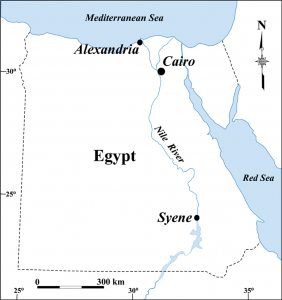
Boundaries = ''buffers''? What does 90 degrees represent? What about the hypotenuse?
A {working?} example {i.e.,''buffers'' in relation to ''walls''}: "A very important moment in the work of oneself is when a man begins to distinguish between his personality and his essence. A man's real I, his individuality, can grow only from his essence. It can be said that a man's individuality is his essence, grown up, mature. But in order to enable essence to 'grow up', it is first of all necessary first of all to weaken the constant pressure of personality upon it, because the obstacles to the growth of essence are contained in personality. If we take an average cultured man we shall see that in the vast majority of cases his personality is the active element in him while his essence is the passive element. The inner growth of a man cannot begin so long as this order of things remains unchanged. Personality must become passive and essence active. This can only happen if 'buffers' are removed or weakened, because 'buffers' are the chief weapon by the help of which personality holds essence in 'subjection'. " ['In Search of the Miraculous'. Emphasis, this readers].
Follow the title of the book to 'see' it in its broader context.
"...And he gave you life. Then will he cause you to die; and will again bring you to life. And again to him will you return." [Quran 2 : 28].
South West corner / 'boundary' of Egypt is the location of Jebel Uwainat, as speculated and researched by such individuals as R. Bauval and T. Brophy, within the book 'Black Genesis'. That same anchor point that has along its East / West alignment both Nabta Playa and Abu Simbel. All South of those main 'monuments'. South West in relation to North East. Uwainet in relation to the Nile Delta. 'Eyes' in relation to 'ears'.
Nose?
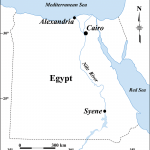
Right angle therefore 90 degrees? S/W ? Where would 180 be represented and why?
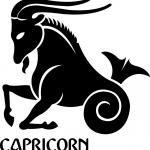 Nabta Playa, what the author calls a ''miniature Stonehenge.'' The 'stones' of which no larger than 'knee' height. Both hewn / unhewn. One of its 'larger' stones however, may resemble a 'cow'. Formed at the base of a prehistoric lake. [Chapter six]. 'Large' in relation to 'small';. [and / or visa- versa, i.e, the Macro within the Micro]. Cow in relation to 'bull'. Sirius in relation to the 'Big Dipper' [Thigh]. South relative to North. Hathor in relation to the 'House of Horus', [by way of 'Orion']. More specifically... 'churning' in relation to a 'grinding'. All of which are found within that countries 'wasteland'. Something unknown that has the potential to become a 'known', [all of which have to be represented in some 'form']. i.e...
Nabta Playa, what the author calls a ''miniature Stonehenge.'' The 'stones' of which no larger than 'knee' height. Both hewn / unhewn. One of its 'larger' stones however, may resemble a 'cow'. Formed at the base of a prehistoric lake. [Chapter six]. 'Large' in relation to 'small';. [and / or visa- versa, i.e, the Macro within the Micro]. Cow in relation to 'bull'. Sirius in relation to the 'Big Dipper' [Thigh]. South relative to North. Hathor in relation to the 'House of Horus', [by way of 'Orion']. More specifically... 'churning' in relation to a 'grinding'. All of which are found within that countries 'wasteland'. Something unknown that has the potential to become a 'known', [all of which have to be represented in some 'form']. i.e...
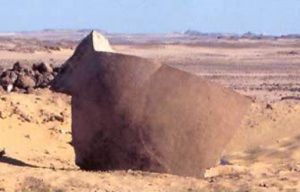
Napta Playa. A mini stonehenge found along the southern border of Egypt. The middle of it. Figure of a cow unearthed within a dried up lake. Coincidence or a meaningful one?
"Proceed to the Western point and face outward. Be aware of the soft contemplative hush of eventide, and of being surrounded by the rich gold of autumn colours and of ripe fruits and nuts, and the gathered corn and all good things of harvest home. See yourself at the border of a still lake...On the horizon before you the setting sun...disappearing below the ground of the purple mountains in the far West, on the other side of the lake, whence you can see far in the distance a winding path leading up to the heights...You notice in the greening azure of the upper sky a few first faint stars, and shinning predominantly amongst them, as herald of them all, the great lamp of Venus, the Evening star. At the same time, be aware of a last flicker of a point of light from Mercury, the 'Messenger' of the gods, and attendant of the 'sun', following its 'master' below the horizon {'W'?}. And then be aware of the mistress of the night sky, the crescent moon, with the evening star between its horns, like a pale lantern in the sky before you {'M'?}. The darkening clouds of the Western horizon almost appear to be like herds of lowing cattle, and you become aware of a great figure of a spotted cow, building over the lake before you. This is Mona, most ancient of sacred symbols..." [Extract from the book by G. Knight].
 "The intriguingly named hamlet of Ratfyn is immediately north of Amesbury, and on its western side is bordered by the River Avon (running north-south), between Durrington to the north and Amesbury to the south.
"The intriguingly named hamlet of Ratfyn is immediately north of Amesbury, and on its western side is bordered by the River Avon (running north-south), between Durrington to the north and Amesbury to the south.
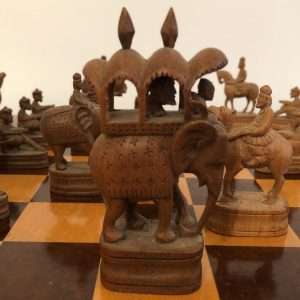
Antique Indian elephant chess piece representing the king. AND/OR: The Vikings played a variety of board games, including Hnefatafl, which was a war strategy game similar to chess. The game was played on a square board with 64 squares arranged in an 8x8 grid 1. The objective of the game was to capture the king game piece ." What about the Bishops?
In Stonehenge, A Temple Restor’d to the British Druids, written by William Stukeley and published in 1740, the antiquarian wrote of the Stonehenge Avenue (which he also discovered), ‘the eastern branch goes a long way hence, directly east pointing to an ancient ford of the river Avon, called Radfin and beyond that the visto of it bears directly to Harradon Hill beyond the river.‘ He was unaware at that time that, following the Avenue eastwards from the top of King Barrow Ridge, it quickly bears sharply south to West Amesbury and West Amesbury Henge on the banks of the River Avon, the south-eastern terminal point of the Stonehenge Avenue, and does not travel east to the Ratfyn fording point.
However, I do find it interesting that William Stukeley links the Ratfyn fording point of the River Avon with the Stonehenge landscape here, and perhaps his bewilderment hints in fact to a more ancient pathway across the Stonehenge landscape pre-dating even the Avenue. Could this ghost pathway be the route of the Harroway?....
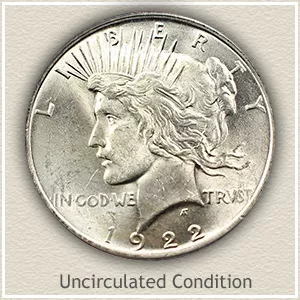
1922 Silver Peace Dollar Coin: "A West wind originates in the west and blows in an eastward direction. In European tradition, it is usually considered the mildest and most favourable of the directional winds. In Greek mythology, Zephyrus personified the west wind and brought light spring and early summer breezes." Stretched neck?
In Aubrey Burl’s ‘Stonehenge‘, published in 2006, he writes: ‘The Harroway led for miles westwards from Dover, Canterbury and Rochester, past Farmham and Basingstoke to Amesbury, then near to Bulford, across a ford whose marshy banks were pink with ragged robin flowers. Then the way rose to Salisbury Plain and Stonehenge. Marvelling bishops and passers-by stared at the impossibly high, weathered pillars understanding nothing about them.’ Aubrey Burl also suggests that the Cuckoo Stone (a sarsen stone west of Woodhenge) marked the route of the Harroway on the western side of the River Avon. He writes that the Cuckoo Stone ‘may have once been used as the builders of the Cursus to become a venerated pointer to the river’, the western terminal of the 1.7 mile Stonehenge Cursus, which was constructed between 3630 and 3375 BC is to the west of the Cuckoo Stone. Burl adds, ‘Similarly, the Heel Stone, once one of a series of antique signposts on the Harroway, was integrated into the Stonehenge complex....
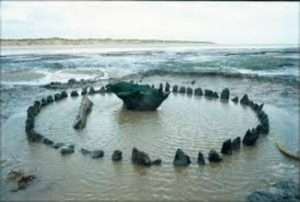
Wooden map?
Side note: New interdisciplinary research from the University of Aberdeen has suggested that Holme I – a Bronze Age timber circle in north Norfolk that is also known as ‘Seahenge’ – was created as a response to a period of climatic deterioration. The monument – comprising fiftyfive closely fitted oak posts and a central upturned trunk – was first identified in 1998, when shifting sands on Holme Beach revealed some of its remains (CA 167). Following excavation, some of its timbers are now displayed at the Lynn Museum in King’s Lynn, but Seahenge’s purpose has long been the subject of debate. It has previously been suggested that Holme I and its sister-site Holme II (a contemporary but more complex monument that was found 100m away and remains in situ; see CA 294) had a funerary role, but recently published research by Dr David Nance proposes an alternative interpretation.....
 As for what the rituals at Holme I and II may have involved, Dr Nance’s paper delves into folkloric beliefs relating to the changing of the seasons, linking these to the solid wall formed by the original arrangement of Holme I’s posts, and explores ideas of the symbolic significance of the penned cuckoo, and of sacral kingship. He also highlights the monument’s alignment with the sun during the summer solstice. The full paper is published at https://link.springer.com/article/10.1007/s10708-024-11088-5.
As for what the rituals at Holme I and II may have involved, Dr Nance’s paper delves into folkloric beliefs relating to the changing of the seasons, linking these to the solid wall formed by the original arrangement of Holme I’s posts, and explores ideas of the symbolic significance of the penned cuckoo, and of sacral kingship. He also highlights the monument’s alignment with the sun during the summer solstice. The full paper is published at https://link.springer.com/article/10.1007/s10708-024-11088-5.
Continued: "William Stukeley observed of Ratfyn and its fording point on the River Avon that ‘This Radfin-farm seems to retain its Celtic name: meaning a ford or passage for chariots, the old way of carriage here used. Rhedeg currere, rhedegsain cursitare, in Irish reathaim. Fin in the old Irish, is white. It regards the chalky road which went up from the ford. ’Tis a pretty place, seated in a flexure of the river, which from hence seems to bend its arms both ways, to embrace the beginning of the avenue"
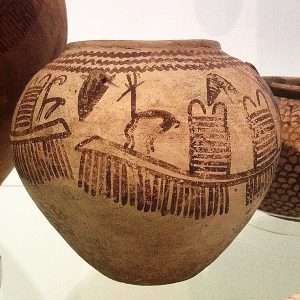
A 'leap' across a GAP?
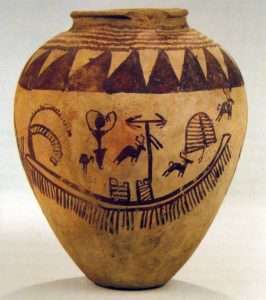
When the north wind blows. Heading south? S/E OR S/W?
A working example: ''Buried beneath Stonehenge are found many shards of bones from wolfs, ravens, dogs, foxes and pigs. Skulls from cattle and horns from bison. In the ditches {trench'?} surrounding the stones, hundreds of deer antlers, and at the monuments southern exit are found buried beneath {'facing each other'} - two individual jaw bones belonging to the now extinct wild cow, called an auroch {with horns}. Placed in a symbolic position.'' ['Blowing Up History: Ghosts of Stonehenge' / S2 EP5].
The hypothesis is: ''The hunting of the giant auroch up to the wind swept plateau - that had been a sacred place for thousands of years - even prior to the construction of Stonehenge.''

'Fire' in the belly? AND/OR: The mother-cows were said to have been made pregnant by the 'light of heaven' or the moonlight, and could never conceive again. They were kept with the Apis at Memphis and buried in their own catacomb, the Iseum, under a kilometre (0.6 mi) north-east of the Serapeum.[35]
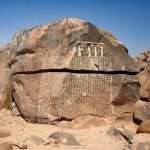
'Fracture'?
The Book of the Heavenly Cow (Arabic: كتاب البقرة السماوية Kitab al-Baqarat al-Samawia), or the Book of the Cow of Heaven, is an Ancient Egyptian text thought to have originated during the Amarna Period and, in part, describes the reasons for the imperfect state of the world in terms of humankind's rebellion against the supreme sun god, Ra. Divine punishment was inflicted through the goddess Hathor, with the survivors suffering through separation from Ra, who now resided in the sky on the back of Nut, the heavenly cow. With this "fall", suffering and death came into the world, along with a fracture in the original unity of creation.[1] The creator god now changes into many heavenly bodies, creates the "Fields of Paradise" for the blessed dead, perhaps appoints Geb as his heir, hands over the rule of humankind to Osiris (Thoth ruling the night sky as his deputy), with Shu and the Heh gods now supporting the sky goddess Nut.[2]: 75, 77
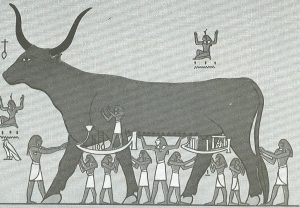 The earliest known copy of the Book of the Heavenly Cow was discovered in the outermost gilded shrine of Tutankhamun; however, the ancient text was incomplete. Three {complete?} versions of the ancient text were discovered on the walls of the tombs of Seti I, Ramesses II, and Ramesses III. Each version of the texts was found in a subsidiary room of the sarcophagus chamber exclusively designed for the Book of the Heavenly Cow. Ramesses VI did not have a subsidiary room, but an excerpt from the book was inscribed in a niche in his tomb. Another excerpt is written on a papyrus from the Ramesside period, now in Turin.
The earliest known copy of the Book of the Heavenly Cow was discovered in the outermost gilded shrine of Tutankhamun; however, the ancient text was incomplete. Three {complete?} versions of the ancient text were discovered on the walls of the tombs of Seti I, Ramesses II, and Ramesses III. Each version of the texts was found in a subsidiary room of the sarcophagus chamber exclusively designed for the Book of the Heavenly Cow. Ramesses VI did not have a subsidiary room, but an excerpt from the book was inscribed in a niche in his tomb. Another excerpt is written on a papyrus from the Ramesside period, now in Turin.
The title of the work has been translated as the Book of the Cow of Heaven, the Book of the Celestial Cow, The Destruction of Mankind, and The Destruction of Humanity. Since it was composed before the Atrahasis (c. mid-17th century BCE) or the Great Flood story from the Book of Genesis (earliest date of composition 15th century BCE, latest 6th century BCE), the Book of the Heavenly Cow may have inspired these later works as all deal with a strikingly similar theme.
Side note: ''Away in a manger, No crib for a bed, The little Lord Jesus, Laid down His sweet head, The stars in the bright sky, Looked down where He lay, The little Lord Jesus, Asleep on the hay, The cattle are lowing, The Baby awakes, But little Lord Jesus, No crying He makes.''
'Cancer' {the Crab} to enlarge.
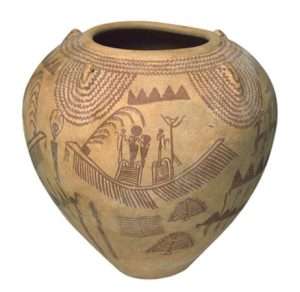
Observing what? A mountain range? Front or back? Above or below the horizon line?
''What is a Poop Deck on a Ship? A poop deck is a short, high deck of a ship, located in the aft (back) of a ship. It was traditionally used to provide a high point for observations and navigation. Most modern ships don't have a poop deck, as it is no longer needed.''

'Fracture'? Something coming awake?
Continued: From a different perspective {flip side?}: "Miserable and starving his crew spot some tasty looking 'cattle' at the next 'island' {wet/dry link}. They move in for the kill even though warned not to by Odysseus. As they belong to the god of the sun. But while he 'sleeps' they defy him, gorging themselves on the forbidden flesh: 'The gods then all at once showed forth portents, the hides crawled. The meat, both roast and raw, bellowed upon the spits. AND THEIR WAS A LOWING AS THOUGH OF CATTLE. Odysseus and his men will pay a high price for their barbeque. Back at sea the gods smashed their 'ships' to pieces. All 'die' except Odysseus'..." [Gods and Monsters: Homers Odysseus' / Simon Armitage].
''Sleep'' in relation to 'forgetting/remembering'? And/or: Crew = 'lower' ? Odysseus = 'higher'?
Nabta Playa?

''Traditionally, Brownie leaders are named after an owl.'' ['The Chase']. Question. What about Scouts?
 ''Plain'' in relation to 'valley' therefore 'horizon'? Question. What would ''vertical'' be represented by?
''Plain'' in relation to 'valley' therefore 'horizon'? Question. What would ''vertical'' be represented by?
Bull of the sky? Enlarged elsewhere.
Apis Bull?
Question. If ''horses'' relate {represent} the 'emotions' - what do ''cattle'' represent?
Lord of the Herd?
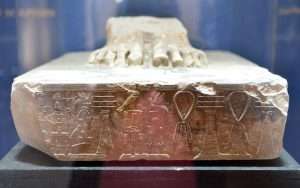
Static or dynamic?

On the shoulders of 'giants'? Resting on ones shoulders?
And/or: ''Ihy is deeply connected to the renewal of the solar cycle - involved with the process of rebirth. According to Spell 334 [Coffin Text}. He has laid motionless in the state of death , has been an 'inert one in the Nun', {watery abyss into which the sun god sinks each night for regeneration}. There he has 'rotted' and 'smelt'....his body blackening and decaying. But eventually in this place of dissolution and decay, when all seems lost, something stirs within its depths, as the sound of Ihy is heard. Out of this stench and foulness {'dung gate'?} rises up this miraculous shining child; fragrant like the goddess Hathor , his mother, her power residing deep within his bowels....This 'child of Gold' - the splendid lotus flower' - beside his mother, is much sought after by those in quest of a new life at dawn. As with Amenhotep 3rd at the end of his Sed Festival 'He has fled with Ihy. He has fled to the horizon as a great hawk {Edfu?}....Now this 'zest for life' drives out all 'fear' as shown in an Old Kingdom relief as a HERDSMAN FORDING A STREAM WITH HIS CATTLE....he carries on his SHOULDERS a bull calf....A representation of driving out this fear {i.e., to overcome his cattles fear of WATER where unknown perils of danger lurk}.'' [Pages 31/2 'Hathor Rising' / A. Roberts].
"Emptiness" to enlarge.
Baptism?
N.B. 'Herding' in relation to cattle but not PIGS?
4:1 to enlarge.

Use the minds eye to 'see' something!
Side note: ''The Inca's referred to gold as the 'sweat of the sun'...'' ['Pawn Stars' / 2020].
''In science Archimedes is said to have cried out ''i have found it'' after determining the means of finding the purity for GOLD.'' ['Weakest Link' / BBC].
"Eureka" comes from the Ancient Greek word εὕρηκα heúrēka, meaning "I have found (it)", which is the first person singular perfect indicative active of the verb εὑρίσκω heurískō "I find".[1] It is closely related to heuristic, which refers to experience-based techniques for problem-solving, learning, and discovery.''
And/or: ''Pig remains have been found throughout Egypt at sites such as Hierakonpolis, Maadi, Abydos, and Armant, near graves belonging to the poorer classes, indicating that pork was an element in their diet, at least at the Predynastic period. Cattle bones were found in graves belonging to more elite burials....During Ptolemaic Egypt, Shai, as god of fate, was identified with the Greek god Agathodaemon, who was the god of fortune telling. Thus, since Agathodaemon was considered to be a serpent, and the word Shai was also the Egyptian word for pig, in the Hellenic period, Shai was sometimes depicted as a serpent-headed pig, known to Egyptologists as the Shai animal.'' [Wiki].
'Fortune favours the brave'.
''Knucklebones, also known as scatter jacks, snobs, astragalus, tali, dibs, fivestones, jacks, or jackstones, among many other names,[1] is a game of dexterity played with a number of small objects that are thrown up, caught, and manipulated in various manners. It is ancient in origin and is found in various cultures worldwide.

Famine Stela.
The name "knucklebones" is derived from the Ancient Greek version of the game, which uses the astragalus (a bone in the ankle, or hock) of a sheep or deer etc.[2] However, different variants of the game from various cultures use other objects, including stones, seashells, seeds, and cubes....Both Herodotus and Plato ascribe a foreign origin to the game. Plato, in Phaedrus, names the Egyptian god Thoth as its inventor, while Herodotus relates that the Lydians, during a period of famine in the days of King Atys, originated this game and indeed almost all other games, with the exception of draughts.[4][7] Both the Iliad and the Odyssey contain allusions to games similar in character to knucklebones.''
Side note: {exercise}: Alice Roberts and company find animal 'hybrid' skeletons in a pit. Lower parts of a pig and the head {'higher'} part of a cow. Understand subject material to get closer to an answer and/or mind set beyond 'ritual' stuff. [Series 4. Episode 1].
''A circular cut of lean pork is called a medallion.'' ['The Chase' / 2018].
'Fat of the land'?

Another 'legend' ?
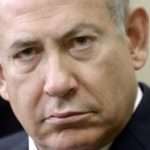
Obsessed or possessed?
Side note: 'Swinehead' - a link to one of the places that King John visited along the route where his personal belongings and 'treasures' were lost. The daily record of which - minute by minute - is still untranslated in Latin. The reason given for all that minute detail - ''An obsessive person who could use it to control his neighbours and enemies etc.''
And/or: ''At the threshold Odysseus's rescue and return is overseen by Athena , who helps him disguise himself as a beggar to enter Ithaca. His 'resurrection' occurs before the swineherd, Telemachus, the nurse, and Penelope. The contest of the bow and the killing of the suitors comprise the threshold struggles.'' [Page 84 'The Hero and the Goddess: The Odyssey as Pathway to Personal Transformation' / J. Houston].
''Telemachus's name in Greek means "far from battle", or perhaps "fighting from afar", as a bowman does.''
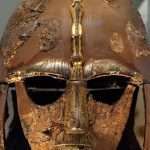
Minds eye?
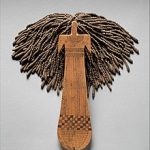
Paddle dolls are made of thin pieces of wood which depict the torso of a woman with truncated arms and no legs. Thick "hair" is represented by small beads strung along string, which are often made from black mud.
Side step: ''Saint Telemachus (also Almachus or Almachius) was a monk who, according to the Church historian Theodoret, tried to stop a gladiatorial fight in a Roman amphitheatre, and was stoned to death by the crowd.''
Continued: ''The word Hetheru {Hathor} literally means the house or dwelling place of Heru {Horus}. Heru is the 'spirit' living within creation. She is the manifestation of the life force emanating from Ra's brow...."
AND/OR: ''Meh-urt means literally ''Mighty fullness''. She is the cow goddess {aspect of above} from which the universe arose according to one myth." [Pages 189/194 'Egyptian Book of the Dead' / M. Ashby].
Male/female / 'Spirit'/'soul' as a means....?

Truncated at the 'knees'.
Side note: "He was carried to the weir of Gwyddno Garanhair near Dovey and Aberystwyth, in Cardigan Bay, and rescued from it by Prince Elphin, the son of Gwyddno and nephew of king Maelgwyn of Gwynedd {North Wales}, who had come there to 'net fish' {'153' of them?}....

Made from volcanic ash. Heavy brow?
Elphin, though he caught no fish, considered himself well rewarded for his labour, and renamed Gwion 'Taliesin', meaning either 'fine value' or 'beautiful brow' - a subject for punning {sacred ones?} - by the author of the romance." [Page 28 'The White Goddesss' / R. Graves].
''In the 2017 film 'Justice League' - the character Wonder Woman has an alter ego with the surname Prince.'' ['Impossible' / S6 EP4].
Refresher: ''Nine is the single number with the HIGHEST value.''
'Muses' to enlarge.

Gobekli-tepe.

'T' shape? Scota to enlarge.
The moai are monolithic statues, and their minimalist style reflects forms found throughout Polynesia. Moai are carved from volcanic tuff (solidified ash). The human figures would be outlined in the rock wall first, then chipped away until only the image was left.[13] The over-large heads (a three-to-five ratio between the head and the trunk, a sculptural trait consistent with the Polynesian belief in the sanctity of the chiefly head) have heavy brows and elongated noses with a distinctive fish-hook-shaped curl of the nostrils. The lips protrude in a thin pout. Like the nose, the ears are elongated and oblong in form. The jaw lines stand out against the truncated neck. The torsos are heavy, sometimes, the clavicles are subtly outlined in stone too. The arms are carved in bas relief and rest against the body in various positions, hands and long slender fingers resting along the crests of the hips, meeting at the hami (loincloth), with the thumbs sometimes pointing towards the navel....

Collective or individual?
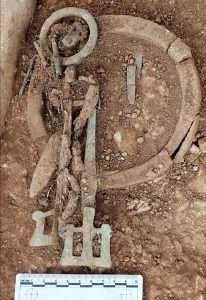
Generally, the anatomical features of the backs are not detailed, but sometimes bear a ring and girdle motif on the buttocks and lower back. Except for one kneeling moai, the statues do not have clearly visible legs...........
Though moai are whole-body statues,[14] they are often referred to as "Easter Island heads" in some popular literature. This is partly because of the disproportionate size of most moai heads, and partly because many of the images for the island showing upright moai are of the statues on the slopes of Rano Raraku, many of which are buried to their shoulders, which has led to a popular misconception that they don't have bodies.[15][16] Some of the "heads" at Rano Raraku have been excavated and their bodies seen, and observed to have markings that had been protected from erosion by their burial.
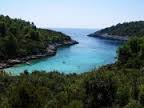
Dalmatian island. Full of vines and olive trees. Question. Bitter or sweet? Question 2. How could that NATURAL feature be represented within a subject and why?

"Desperate Dan and his friends will be celebrating with plenty of cow pie this week as the Dandy enters The Guinness Book of Records as the world's longest running comic.
The record-breaking 3007th issue will be out on 10 July {1999} and Desperate Dan will be headlining it for the very last time.
After that the superhuman cowboy from Cactusville, the only survivor from the comic's early days, will be relegated to the inside pages, making way for new stars such as Cuddles and Dimples."
Continued: Question. Coincidence or a meaningful one? Either way you begin to 'see' why certain symbols/keys/archetypes are {enacted?} within the so called 'Mystery schools' - in relation to N/S/E/W. Enlarged elsewhere. To many to mention - the obvious ones highlighted, in one form or another. The main talking point however {if only for this reader} is within that final sentence,i.e.,''lowing cattle'' in relation to the 'clashing rocks' and/or ''spotted cow'' in relation to 'spots and stripes' and/or ''Mona'' in relation to the picture of same of which many of the above symbols/archetypes are found within - which leads to the question of there possible connection or even inspiration? {Muses?}.
''Bull'' and ''Milk''?
Side note: ''The island at the center of Druidism was called Mona."
And/or "Indeed deer themselves were regarded as partly 'supernatural' animals in their own right. They were known as ''cattle of the faeries'' and believed capable of conveying souls..." ['The Faery Gates of Avalon']. 'Deers' in relation to 'forests' {trees?}.
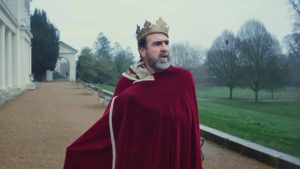
To much seagull poo?
''.....since women played the leading role in the Dionysos cult. It was expressly added that the priestesses of Dionysos were the successors of the daughters of Semachos {i.e., foreign 'hero' - who is speculated to be the originator of the said 'cult' - from a 'mining' region 'S/E' Attica}. Another version mentions only one daughter, who received a 'deer skin' {nebris} from a god as a present. This was more than the gift of a special type of garment. It indicates the bestowal of a rite in consequence of which the deer skin could be worn: nebri-zein also means the rending of an animal. The cult action in which the sacrificial animal was dismembered, however, required at least two persons..."
REFRESHER: 'Sacrifice something of the lower to understand something of the higher'.
''Rending'' = 'something ripped apart, as in lightening splitting a tree' {or 'tower'?}.
Oak? as a means....?
Try ''second/ry'' / ''sea people'' for something further.
'Fisher of Men' and/or archetypes/hieroglyphs?
Try ''lightening''.
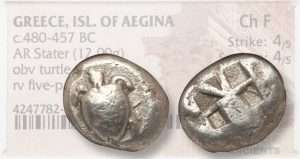 A work in progress: ''When archaeoloists first excavated a 5th century A.D. cemetery in Pannonia, an ancient Roman province in present day Western Hungary - they found a large portion of elongated, oblong heads {purposely 'deformed'}....almost 50% came from outside the local boundaries hence: ''The practice was imported - and not sure as to why skull modifications took hold in this region after the fall of the Roman Empire.'' ['Page 16 'Archaeology' / Jan/ Feb 2021].
A work in progress: ''When archaeoloists first excavated a 5th century A.D. cemetery in Pannonia, an ancient Roman province in present day Western Hungary - they found a large portion of elongated, oblong heads {purposely 'deformed'}....almost 50% came from outside the local boundaries hence: ''The practice was imported - and not sure as to why skull modifications took hold in this region after the fall of the Roman Empire.'' ['Page 16 'Archaeology' / Jan/ Feb 2021].
Try 'Foreign' - as a means....
Synchronistic analogy?..."Otto's book gave rise in 1935 to publication of my first thoughts about Dionysos, which had come to me in a vineyard in southern Pannonia and on the Dalmatian island of Korcula...." [From the book by C. Kerenyi. Emphasis, this readers].
Cow /Dog. Question. Top/down - bottom/up? But whats the common factor?
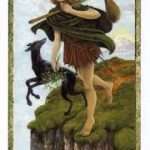
'Spotted'? 'Teen' spirit or soul?
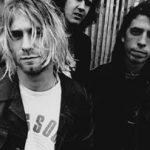
A beginning of something. Dalmatia Hotel.
"The Dalmatian is a breed of large dog, noted for its unique black or liver spotted coat...used as a 'carriage' dog in its early days...Its roots trace back to Croatia and its historical region of Dalmatia." [Wikipedia].
A Wain?
"Korcula is a Croatian island in the Adriatic sea...The island belongs to the central Dalmatian archipelago, separated from the peljesac peninsula by a narrow strait...It stretches in an east to west direction...It is the sixth largest island...Legend says the island was founded by Trojan 'hero' Antenor, who was one of the wisest of the Trojan Elders. [Wiki. All emphasis, this readers}.
Something hinted at: ''Now the Best's can, with the very best quantum catch-it equipment, tune in around the world to what is best and tastiest food being cooked that day. Is it the corn and crab soup served in Hong Kong at the Peninsula Hotel? Is it the barbecued ribs at the Rendezvous in Memphis?....Somebody with a 'cold' is given chicken soup, served in a big glass bowl.'' [Page 289 within the Chapter 'The Feast of Maturity' from the book 'A Mythic Life' / J. Houston].
Head/feet?

Flag of Morocco.

Starfish?
Side note: "The peninsula of Messini, the land of Nestor, the Gerenian charioteer, was associated with five sided Auriga, the constellation of the charioteer." ['Homer's Secret Iliad'].
Question. What strait {if any} could represent N/S? Or would that be represented with something else? {isthmus?}
Eridanus?
Sinai Peninsula - as a means...?
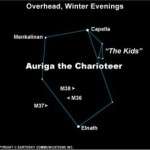 Side note: ''Auriga is a constellation in the northern celestial hemisphere. It is one of the 88 modern constellations; it was among the 48 constellations listed by the 2nd-century astronomer Ptolemy. Its name is Latin for '(the) charioteer', associating it with various mythological beings, including Erichthonius and Myrtilus. Auriga is most prominent during winter evenings in the northern Hemisphere, as are five other constellations that have stars in the Winter Hexagon asterism. The crook of Auriga stood for a goat-herd or shepherd. It was formed from most of the stars of the modern constellation; all of the bright stars were included except for Elnath, traditionally assigned to both Taurus and Auriga. Later, Bedouin astronomers created constellations that were groups of animals, where each star represented one animal. The stars of Auriga comprised a herd of goats, an association also present in Greek mythology.[8] The association with goats carried into the Greek astronomical tradition, though it later became associated with a charioteer along with the shepherd.[9]
Side note: ''Auriga is a constellation in the northern celestial hemisphere. It is one of the 88 modern constellations; it was among the 48 constellations listed by the 2nd-century astronomer Ptolemy. Its name is Latin for '(the) charioteer', associating it with various mythological beings, including Erichthonius and Myrtilus. Auriga is most prominent during winter evenings in the northern Hemisphere, as are five other constellations that have stars in the Winter Hexagon asterism. The crook of Auriga stood for a goat-herd or shepherd. It was formed from most of the stars of the modern constellation; all of the bright stars were included except for Elnath, traditionally assigned to both Taurus and Auriga. Later, Bedouin astronomers created constellations that were groups of animals, where each star represented one animal. The stars of Auriga comprised a herd of goats, an association also present in Greek mythology.[8] The association with goats carried into the Greek astronomical tradition, though it later became associated with a charioteer along with the shepherd.[9]
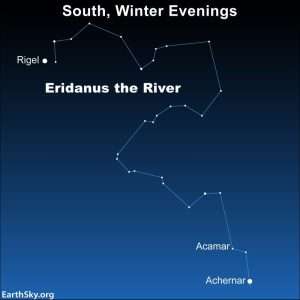
Begins at the left foot of Orion.
In Greek mythology, Auriga is often identified as the mythological Greek hero Erichthonius of Athens, the chthonic son of Hephaestus who was raised by the goddess Athena. Erichthonius was generally credited to be the inventor of the quadriga, the four-horse chariot.''
Sheep decans?

'Wheels' on a first century altar stone found at Magdala in Israel.
''Greek astronomers regarded one star as being shared by Auriga and Taurus. On old star maps this star is shown as representing both the right foot of the charioteer and also the tip of the bull’s left horn. When the German astronomer Johan Bayer came to allocate Greek letters to the stars in the early 17th century he designated this star as both Gamma Aurigae and Beta Tauri. However, since the introduction of precise constellation boundaries in 1930, astronomers have assigned Elnath exclusively to Taurus as Beta Tauri and there is no longer a Gamma Aurigae. Hence, under the modern scheme, the bull has kept the tip of his horn but the luckless charioteer has lost his right foot!''
Side note: "Luck is preparation, waiting for an opportunity." {Brawn: The Impossible Formula 1 Story}.
Refresher: ''My shaykh, the king of his age, Maid al-Din Baghdadi, said in a collection of his writings: 'Glory he to Him who brought together the nearest of the near and the farthest of the far. The human frame belongs to the lowest of the low while the human spirit belongs to the highest of the high...Both have to be brought together to perfection.'' [Page 117 {Kindle} 'Tao of Islam'].
Wide / Narrow.
''Sheikh, also spelled sheik, shaikh, or shaykh, Arabic shaykh, Arabic title of respect dating from pre-Islamic antiquity; it strictly means a venerable man of more than 'fifty' years of age.''
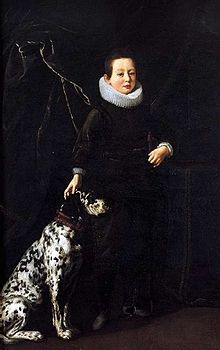
''Native essence'' in relation to - "The swan is white without spot." Dog/Swan - anything? Olmec head?
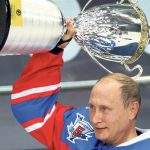
Comrade or dictator? Teamplayer? What would Mother Russia think? -bleeding it dry?
Continued: "Various great Jain teachers of India have been called tirhakaras ''ford makers,'' because they reveal the passage by which bewildered humanity may cross over and beyond the stormy seas of 'Samsara' {the karmic wheel, the recurrence of lives and deaths}. Samsara {literally, ''a flowing with'' the phenomenal flux} induces man to take the line of least resistance. ''Whoever therefore will be a 'friend' of the world is the 'enemy' of god.'' To become a friend of God, man must overcome the demons of his own karma or actions that ever urge him to spine-less acquiescence in the mayic delusions of the world. A knowledge of the iron law of karma encourages the earnest seeker to find the way of final escape from its bonds {gold/silver'?}. Because the karmic slavery of human beings is rooted in the desires of maya-darkened minds, it is with mind control that the yogi concerns himself. The various cloaks of karmic ignorance are laid away, and man views himself in his native essence." [From the book 'Autobiography of a Yogi'].
Ayles-ford / Guild-ford / Bul-ford?
And/or Saint Catherine of the Wheel?
Solstice? OR....
Equinox?
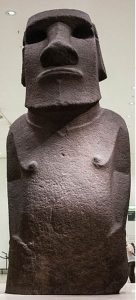
Cloak {'apron'} of initiation?
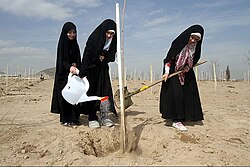
'Tent' to enlarge.
SIDE NOTE:The Jordan River or River Jordan (Arabic: نَهْر الْأُرْدُنّ, Nahr al-ʾUrdunn; Hebrew: נְהַר הַיַּרְדֵּן, Nəhar hayYardēn), also known as Nahr Al-Sharieat (Arabic: نهر الشريعة), is a 251-kilometre-long (156 mi) endorheic river in the Levant that flows roughly north to south through the Sea of Galilee and drains to the Dead Sea. The river passes by or through Jordan, Syria, Israel, and the Palestinian territories.
Several hypotheses for the origin of most of the river's names in modern languages (e.g., Jordan, Yarden, Urdunn), one is that it comes from Semitic 'Yard|on' 'flow down' <√ירד reflecting the river's declivity, possibly appearing also in other river names in the region such as Yarkon and Yarmouk, or it may be related to the Egyptian loanword 'yǝʾor' ('big river', the Nile).[2] According to this hypothesis, "Den" might be linked to the Akkadian word dannum for "powerful".[3] Cognates of the word are found in Aramaic, Hebrew, Mandaic, and other Semitic languages.[4] The first recorded use of the name appears as Yārdon in Anastasi I, an ancient Egyptian papyrus that probably dates to the time of Rameses II.[5] Early Arab chronicles referred to the river as Al-Urdunn.[6]
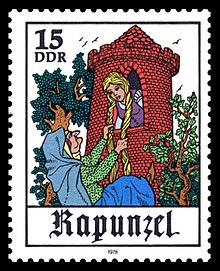
Crone = "Dark side?"

The impressive look is called the “squash blossom whorl”, a traditional hairstyle for unmarried girls. At the onset of puberty, historically young girls went through challenging initiation ceremonies, marked by a day of grinding corn at the paternal grandmother’s house. She would receive a new name and assume the squash blossom hairstyle, the sign of marriageability and fertility.
Messier 99 or M99, also known as NGC 4254 or St. Catherine's Wheel, is a grand design spiral galaxy in the northern constellation Coma Berenices approximately 15,000,000 parsecs (49,000,000 light-years) from the Milky Way.[5] It was discovered by Pierre Méchain on 17 March 1781. The discovery was then reported to Charles Messier, who included the object in the Messier Catalogue of comet-like objects. It was one of the first galaxies in which a spiral pattern was seen. This pattern was first identified by Lord Rosse in the spring of 1846.[10][11]
This galaxy has a morphological classification of SA(s)c,[8] indicating a pure spiral shape with loosely wound arms. It has a peculiar shape with one normal looking arm and an extended arm that is less tightly wound. The galaxy is inclined by 42° to the line-of-sight with a major axis position angle of 68°.[6]

Deer Symbol, also known as “Twin Deer Dharma Wheel”, in almost any main hall entrance of a Tibetan Buddhist monastery, you can see the “Deer Symbol” above. In its center, there is a “golden Dharma wheel,” with a golden deer kneeling on each side, their ears raised and heads tilted as if listening attentively. The male deer is on the right, and the female deer is on the left.
A bridge of neutral hydrogen gas links NGC 4254 with VIRGOHI21, an HI region and a possible dark galaxy. The gravity from the latter may have distorted M99 and drawn out the gas bridge, as the two galaxy-sized objects may have had a close encounter before parting greatly.
It is expected that the drawn out arm will relax to match the normal arm once the encounter is over.
While not classified as a starburst galaxy, M99 has a star formation activity three times larger than other galaxies of similar Hubble type that may have been triggered by the encounter.[12] M99 is likely entering the Virgo Cluster for the first time bound to the periphery of the cluster at a projected separation of 3.7°, or around one megaparsec, from the cluster center at Messier 87. The galaxy is undergoing ram-pressure stripping of much of its interstellar medium as it moves through the intracluster medium.[6]
............................

Spirt or soul? N.B. 'Navel' = middle of human form.

Higher or lower? Real or symbolic?
Continued: Question. What would represent a ''flowing against''?
Christchurch?
'Cathbadh' ?
Gotland to enlarge i.e., silver hoards abundant.
Gathering ones flock?
Manger?
Side note: After the first circle (exoteric) and second circle (mesoteric) we come to the third circle, which is known as the esoteric circle......
These different systems help the essence in understanding its identity and purpose within the realm of matter. Once it comes to understand its nature and the predicament that it finds itself in, it realises that its purpose within creation is not just to live a mundane existence (depicted in the teaching of the wheel of Samsara). When the essence comes to this realisation it comprehends that it has become a mixture of divine and non-divine. This is the sign it is ready to make the transition to the third circle, the esoteric circle.
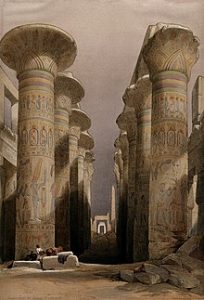
The middle ground.
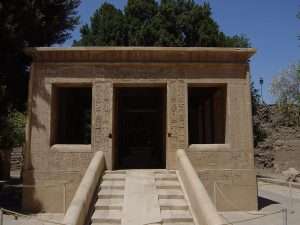
White Chapel. Karnac. Its very first.
The essence comes to understand that if it is to realise its potential within creation and exercise its true purpose, it has to change its nature within the realm of matter. This requires inner self transformation.
Once we make that realisation then we have the ability to encounter the path that will free us from the Wheel of Samsara and return us back to the source we emanated from. The reason we are tied to Samsara is because we are attached to form and matter through the state of ignorance. Once we become aware of the existence of the spirit within us and strive to reconnect with this inner principle, we begin to change our state of our consciousness from one that is unconscious to one that is conscious. In doing so, we begin to free ourselves from the realm of matter and we swap the values of matter for the values of the spirit. We remember our identity as a divine spark and commence the process to free ourselves from the Wheel of Samsara.......There are many paths and many people who are treading those paths. Each of these has values to offer the world and their role to play within this process. Ultimately, though, the individuals treading these paths remain the same, they continue being as they have always been, but perhaps with a spiritual persona. {'Gnosis Canberra' / internet}.
'A Different Christianity' / R. Amis.
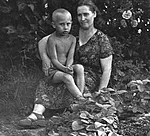
What would his real mother think? Does he make her proud? What about his dad? Was his dad Russian? OR did he give himself a name change while a KGB officer?
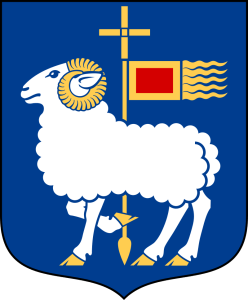
''Gotland was granted its arms in about 1560. The coat of arms is represented with a ducal coronet. Blazon: "Azure a ram statant Argent armed Or holding on a cross-staff of the same a banner Gules bordered and with five tails of the third." The county was granted the same coat of arms in 1936. The municipality, created in 1971, uses the same picture, but with other tinctures.''
Side note: Max Vasmer's etymological dictionary traces the name to the Old East Slavic word козакъ, kozak, a loanword from Cuman, in which cosac meant "free man" but also "adventurer".[6] The ethnonym Kazakh is from the same Turkic root.[7][8][9]
In written sources, the name is first attested in the Codex Cumanicus from the 13th century.[10][11] In English, "Cossack" is first attested in 1590.''
And/or: Atilla the Hun - ''the scourge of god'' {'whip of god'}. Atilla means 'little father'. A burial site of some description found by Russian archaeologists at Altynkazgan in Kazakhstan. A belt made of turquoise glass inlays {lozenge shape} + horse harness with gold/silver bits + ''Two bronze parts of a whip found'' : ''The site may not have been used by the Huns.'' Pannonia is where his court was. Exact location unknown.'' ['Atilla's Forbidden Tomb' ].
Altynkazgan means "Place where gold is extracted."
''Julius Pokorny believed the name Pannonia is derived from Illyrian, from the Proto-Indo-European root *pen-, "swamp, water, wet" (cf. English fen, "marsh"; Hindi pani, "water").[7]
Pliny the Elder, in Natural History, places the eastern regions of the Hercynium jugum, the "Hercynian mountain chain", in Pannonia and Dacia (now Romania).[8] He also gives us some dramaticised description[9] of its composition, in which the proximity of the forest trees causes competitive struggle among them (inter se rixantes). He mentions its gigantic oaks.[10] But even he—if the passage in question is not an interpolated marginal gloss—is subject to the legends of the gloomy forest. He mentions unusual birds, which have feathers that "shine like fires at night". Medieval bestiaries named these birds the Ercinee.''
"There is only one [surviving] written source about Attila's funeral" Zsófia Masek a post-doctoral researcher of archaeology at the Hungarian Academy of Sciences, told Live Science in an email.
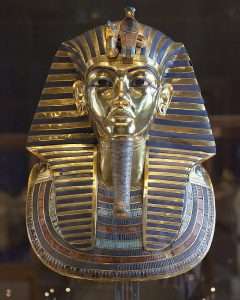

Astro ceiling in Senenmut bare tomb chamber. 'Folded'?
That source is the sixth-century ancient writer Jordanes, who wrote in his book "Getica that Attila was buried in a triple coffin. The innermost was made of gold, the second made of silver and the outermost made of iron. The gold and silver signified the wealth that Attila had gained for the Huns, while the iron signified the Huns' military might.
'Sheep decans'?
Coptos to enlarge.
The servants who helped build the tomb were killed in an attempt to keep its location secret, Jordanes wrote, claiming that he got his information from records written by Priscus, a Roman diplomat who had contact with Attila and others from his court.

Finger width?
Attila was also buried with gems, captured enemy weapons and ornaments and the servants were killed so that these "great riches" may "be kept from human curiosity," Jordanes wrote.''

'She who loves silence'.
Side note: ''Bastet was the goddess of protection, pleasure, and the bringer of good health. She had the head of a cat and a slender female body. Bastet was the daughter of Ra, sister of Sekhmet, the wife of Ptah, and the mother of Mihos. Since the Second Dynasty, Bastet was worshiped as a deity, most commonly in Lower Egypt.''
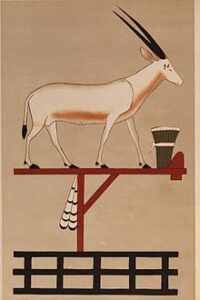
Horizon? The city's Arabic name comes from the Coptic, rendered in as ⲧⲙⲱⲛⲏ in Bohairic and ⲧⲙⲟⲟⲛⲉ in Sahidic, which in turn came from Ancient Greek: μονή, lit. 'stopping-place, station, monastery'.[4]
The modern city of Minya is often identified with the Ancient Egyptian settlement of Men'at Khufu based on the resemblance of two names, although this claim, proposed by Gauthier and Drew-Bear, is denied by modern Egyptology as the former has a clear Greek etymology.[4]
Minya is dubbed by the locals "Bride of Upper Egypt", in reference to its strategic location in Middle Egypt as a vital link between the north and the south of Egypt.
Question. Was Priscus a member of any 'Mystery' club?

Seeing is believing? 32x2?
Continued: : Close to the place that John baptised Jesus and where Elijah was taken upwards in a chariot: ''It was near here as mentioned in the Book of Joshua { i.e., Adams Bridge in the Jordan Valley} that the river ''stopped flowing'' to allow the 'children' of Israel to cross over into the promised land. It backed up from the place they crossed over up to this point. ''This is what it says: 'The water UPSTREAM stopped flowing. It piled up as in a heap a great distance away.'' [Monday. 2nd Week of Advent / Magdala / K. Nichols / 2021].
N.B. Jordan Valley part of the Rift Valley that extends too the Horn of Africa.
Up/Down stream as a means....?

The star of ones being is rising?
And/or: The place name of Peniel that guards {along with Manhanaim} the entry into the Jordan Valley. The place where Jacob 'Wrestles with a 'higher' aspect of himself. The result of which after 'seeing' the face of god = Israel.'' [Genesis:32].
A fording?

Flag of Morocco.
"....he alluded to unexplained structural alterations made to St. Catherine's Chapel. Interestingly, he refers to an account made by Thackeray Turner in 1890 of {same} Chapel, which lies just the south of Guild-ford....A peculiar arrangement whereby the upper windows of the chapel had been blocked {therefore something of the 'lower'?} - and had doors inserted to give access to what he believed had been a gallery {to look 'back on'?}. He also noticed that the doorstops had been designed so that the south door would open inwards and the north door outwards...." [Pages 39/40 'The Pilgrims Way' / Derek Bright].
Try 'Janus' / 'Great step' / 'gallery'.

Secret place?

Face to face?
Something hinted at: " The mystical Way is a trackless path on which the pilgrim seeks to 'encounter' god 'face to face', believing utterly in the promise: 'I will give you the treasures of darkness and the secret places.' {Isaiah 45,7}. Finding ones own inner way is by no means dependent upon how others have travelled, but the length of the journey is considerably diminished if spent in the company of one who is also travelling. In this way, the great mystics of the church have 'companioned' pilgrims from the medieval mystics Julian of Norwich, the author of the Cloud of Unknowing, Thomas a Kempis, and St. Catherine of Siena...." [Page 85 'The Western Way'. Vol 2].

'Wedding' ring?
Side note: ''What does it take to crack us open and discover that our inner treasure is already fully formed.....We have come to the final hour of the of L'horloge gastronomique, and for it i have chosen a marriage of many flavours in one. Thus, at 12 oclock, i offer you a tiny box of phyllo dough containing curried cocont shrimp with a touch of coriander. Here at the place of the end {Isaiah 19:19?}, we have also returned to the beginning, for spices act as a melding of ancient wisdom and new beginnings....These two, shell encased {'carapace'?} - shrimp walking on the bottom of the sea and coconut heady at the top of a tree - come together, both eminently crackable....Together with shrimp and spice, coconut restores our wonder, for often at maturity our enthusiasm begs to be renewed.....Perhaps, after all this you need a respite, an interval, a breath of fresh air {'rain' in the face?} or a stroll around a garden.'' [Chapter headed 'Feast of Maturity' from the book 'A Mythic Life' / J. Houston].
'23' layers to it all?
Gap.
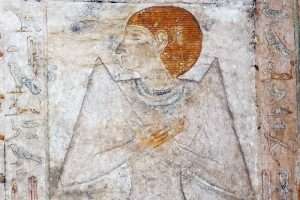
''Ginger/red''?
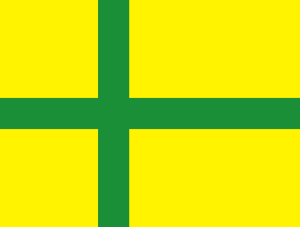
Flag of Gotland. Mineral/Plant? And/or: ''Our purpose is to provide knowledge of the soul, even though knowledge of all its attributes are impossible, for it possesses the characteristics of a chameleon. Moment by moment it displays a new colour, hour by hour another shape. 'He who knows his own soul knows his lord'. Hence Ali said: 'I and my soul are like a shepherd and his sheep. Whenever i gather them from one side, they run off in another direction'....'' [Page 812 {Kindle} 'Tao of Islam'].
''The spice Turmeric is thought to gets its name from the Latin meaning 'deserving earth'....'' ['The Chase'].
''Turmeric is a flowering plant, Curcuma longa, of the ginger family, Zingiberaceae, the rhizomes of which are used in cooking.''
And/or: ''The manna eaten by the Israelites in the wilderness was said to be 'white like coriander seed'....The seeds contain an aromatic oil having a pleasant flavour and are used as a spice, as well as medication for minor stomach ailments.....It grows wild in Egypt as well as in Palestine area.'' [Page 508 'Insight on the Scriptures'].
And/or: Coriander seed found {among other 'seeds'} in Tutankhamun's tomb. Malaria together with a lame left foot - being the cause of his 'death'. ['King Tut Unwrapped' / S.2. E.1].

Footnote?

Mad whirling dance? In spring?
Continued: ''William Kemp an actor who starred as the fool in Shakespeares plays. Had ideas of his own as to what makes good comedy. He fell out with Shakespeare about what was comedic in Hamlet. Went on a mad morris dance between London and Norwich. Took nine days. Expected to entertain people more than a stage could do. 'Kemp the Man' was lost to history. No one knows what happened to him thereafter. A footnote in history.'' ['Britains Most Historic Towns: Tudor Norwich']. Alice Roberts wonders why Norwich.
''Morris dancing came up from the moorish people. Anglo-Saxon word meaning flamboyant and/or energetic.''
And/or: ''Elm Hill . Britains most historic Tudor street. Most thatched houses got burnt down in a great fire of 1507. All slate {'flint'?} thereafter.''
 Norwich known as the town that wool built. Wool in relation to the group of immigrants known as the ''strangers'' that populated Norwich/Norfolk from Flanders. Weavers that made fine cloths that they themselves had copied from the Persian/Turkey textile weavers. Yellow canaries came with them. The male bird sings in competition to the weaving shuttle.
Norwich known as the town that wool built. Wool in relation to the group of immigrants known as the ''strangers'' that populated Norwich/Norfolk from Flanders. Weavers that made fine cloths that they themselves had copied from the Persian/Turkey textile weavers. Yellow canaries came with them. The male bird sings in competition to the weaving shuttle.
''Paisley''?
Side note: Paisley Park - the home of 'Prince'.
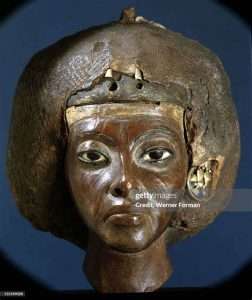
Queen Tiye: "On the edge of autumn, Lubrin's sister was born. The priest-born sounded the Moon Call on the sacred oxhorns that sent the news booming all along the run of the Downs. And that night there was a great feast in the Chieftain's hall. It was a fine thing to have sons, but among the Iceni tribe , kingship and chieftainship did not pass down from father to son, but were carried down by the daughters to the men they married." [Page 21 'Sun Horse, Moon Horse' / R. Sutcliff]. Berber? Question 2. Whose parentage was Djedefre's?
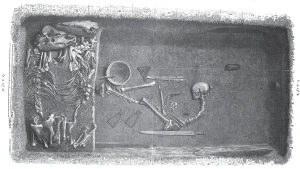
The tomb at the center of the debate is known as Bj 581, after its location when it was excavated at the Birka settlement on the island of Bjorko, which is west of Stockholm, with easy access to the Baltic Sea. (Unesco designated the settlement a World Heritage Site in 1993.)....Not only was her body surrounded by armaments, but on her lap was a chesslike board game known as hnefatafl, or King’s Table. Its placement suggested “that she also made strategic decisions, that she was in command,” Charlotte Hedenstierna-Jonson, the lead author of the paper, said in an interview in her office at the Swedish History Museum.
''Events were spinning like silken threads from a cocoon of longing, and unseen hands were weaving them into an enchanted tapestry. Sitting in front of me was a woman at ease with the spinning of the wheel and the mysteries movements of the shuttle that flew through the loom of life. Here was someone who understood there was meaning in the pattern. Perhaps she even knew the answer.'' [Page 17 'The Book of Shadows' / P. Curott].
Lozenge?
REFRESHER: "The siren heralds a friend - the bee a stranger."
''Truth is stranger than fiction.''
Whirling Dervishers to enlarge.
Side note: Scientists speculate about The Shadow Universe: ''A quarter of it is made of mysterious particles known as dark matter, and the remaining 70 percent a mysterious form of energy called dark energy.''
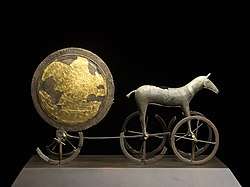
Horse-run = East to west. What about S-N?
Exercise: Can subject material determine whether Cleopatra's stories {myths/legends} are fable or fact? In other words could they be used {primary aim?} - to located the final resting place of herself with Mark Anthony?
Libyan Sibyl?
Carter's canary killed by a snake?
 And/or: Sack is an antiquated wine term referring to white fortified wine imported from mainland Spain or the Canary Islands.
And/or: Sack is an antiquated wine term referring to white fortified wine imported from mainland Spain or the Canary Islands.
The Collins English Dictionary, the Chambers Dictionary, and the Oxford English Dictionary all derive the word "sack" from the French sec, meaning "dry". However, the OED cannot explain the change in the vowel, and it has been suggested by others that the term is actually from the Spanish word sacar, meaning "to draw out", as in drawing out wine from a solera, which led to sacas. The word "sack" is not attested before 1530.
Julian Jeffs writes: "The word sack (there are several spellings) probably originated at the end of the fifteenth century, and is almost certainly derived from the Spanish verb sacar ("to draw out"). In the minutes of the Jerez town council for 1435, exports of wine were referred to as sacas."[Wiki].
Try ''Mistletoe'' for a take on the same THEME.

Some variants have "juniper tree" or "June apple tree" rather than "pear tree", presumably a mishearing of "partridge in a pear tree".
And/or: Elm in relation to Spring/songbirds/Seti I/juniper and alabaster = Fire into soul etc. [Page 135 'Dreams of Isis'].
 And/or: ''In modern Irish 'ailm' {silver fir} has come to mean Elm...Is not native to the British Isles.....In Italy it was used for supporting the young vine and so became the alma mater of the Wine-god. This interdependence of vine and elm was sanctified by a reference in the early Christian book of revelation, The Shepherd of Hemas....The silver fir {ailm} in Old Irish also stood for palm AGAIN not native to the land {i.e., Ireland}.... It is ,however, the BIRTH TREE of Egypt, Babylonia, Arabia and Phoenica... links to the Phoenix which is born and reborn in a palm and/or Osiris at Byblos....Palms thrive close to the sea in sandy soil heavily charged with salt...the sea being the universal Mother...In Orkney mother and child are 'sained' soon after delivery with a flaming fir candle whirled three times around the bed.'' ['Page 184/5 'The White Goddess' / R. Graves].
And/or: ''In modern Irish 'ailm' {silver fir} has come to mean Elm...Is not native to the British Isles.....In Italy it was used for supporting the young vine and so became the alma mater of the Wine-god. This interdependence of vine and elm was sanctified by a reference in the early Christian book of revelation, The Shepherd of Hemas....The silver fir {ailm} in Old Irish also stood for palm AGAIN not native to the land {i.e., Ireland}.... It is ,however, the BIRTH TREE of Egypt, Babylonia, Arabia and Phoenica... links to the Phoenix which is born and reborn in a palm and/or Osiris at Byblos....Palms thrive close to the sea in sandy soil heavily charged with salt...the sea being the universal Mother...In Orkney mother and child are 'sained' soon after delivery with a flaming fir candle whirled three times around the bed.'' ['Page 184/5 'The White Goddess' / R. Graves].
Meritaten?
And/or saining with juniper.
 And/or: Alma mater (Latin: alma mater, lit. 'nourishing mother'; pl. [rarely used] almae matres) is an allegorical Latin phrase currently used to identify a school, college, or university that one formerly attended.[1] The phrase is variously translated as "nourishing mother", "nursing mother", or "fostering mother"....'' [Wiki].
And/or: Alma mater (Latin: alma mater, lit. 'nourishing mother'; pl. [rarely used] almae matres) is an allegorical Latin phrase currently used to identify a school, college, or university that one formerly attended.[1] The phrase is variously translated as "nourishing mother", "nursing mother", or "fostering mother"....'' [Wiki].
As one example: Tut's nurse? and/or Egypt's 'House of Life'?
A working example: "Every spring, on the day after the Beltane fires had burned out, the boys of the clan who had turned nine since last Beltane entered the Boy's House, the long low building at the lower end of the Chieftains forecourt, to begin their warrior training....Skills of the war spear, and the horse herd, and the hunting trail....Lubrin did not mind the hard work, but in the early years he minded very much the never being alone....They mostly ran in packs {'wolf' link?}....His refuge, during those years was a great wych-elm on the edge of one of the forests clearings. He had found it while looking for a bees nest. Three great limbs sprang from its main trunk, making it easy to climb, and up near the top it was antlered like a king stag, with a spreading poll of branches....allowing him to work on his strange picture patterns." [Page 31-2 'Sun Horse, Moon Horse' / R. Sutcliff].
" A stag is said to be royal if it has twelve points on its antlers." {'The Chase' / S13 EP6}.

Twice as wide than long?
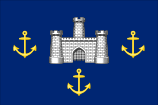
Council flag - Isle of Wight: 'Place of Division'.
And/or: "The barrens give way to the Oaks and rich farming land again, and the first of the Westland signs is seen - a wall, topped with a miniature roof of thatch, or of pantiles blotched with lichen {'Queendom'?}. Hereabouts they build great walls of rammed mud, which stand well so long as the wet can be kept from them; hence the quaint little roofs with their piercing eaves winding along beside the road. Soon we come to the dividing of the ways. One road keeps its course through the rich lowlands, and the other climbs the heights towards the uplands of England's greatest plain. If we are going to Glastonbury we choose the upland way, and presently the fields give place to the WIDE, bare turf of the chalk, and dark, sinister bunches of juniper tell us that we are on the Plain: 'Take two twigs of the juniper tree. Cross them. Cross them. Cross them. Look in the coals of the fire of Azrael!' says the old rune. The dark influences of the juniper overflow the road as the scattered clumps thicken on the slopes. It is indeed the tree of the Dark Angel and the Old Gods." [Page 3 'Glastonbury: Avalon of the Heart' / D. Fortune].

Sequence of trees mentioned on the Great West Road from London to Glastonbury: Elm, Birch, Fir, Heather, Gorse, Oaks, Juniper, Beech, Apple Orchard, Willow.
"Seventyfive per cent of the worlds heather moorland is in the UK. Sixty per cent of that 75% is in Yorkshire." ['Yorkshire Great and Small: Bronte Country'/ CH5].
 Continued: "The Hebrews knew it as Neshr, an Eagle, Falcon, or Vulture; and the Chaldee Paraphrase asserted that it was figured on the banners of Dan; but as these tribal symbols properly were for the zodiac, Scorpio was normally ascribed to Dan....In Abraham's day Scorpio was figured as an Eagle. Caesius said that Aquila represented the Eagle of military Rome, or the Eagle of St. John; but Julius Schiller had already made it Saint Catherine the Martyr; and Erhard Weigel...started a new set of constellations based on the heraldry of the Brandenburg Eagle - made up from Aquila, Antinous and the Dolphin." [ Page 57/58 'Star Names their Lore and Meaning'].
Continued: "The Hebrews knew it as Neshr, an Eagle, Falcon, or Vulture; and the Chaldee Paraphrase asserted that it was figured on the banners of Dan; but as these tribal symbols properly were for the zodiac, Scorpio was normally ascribed to Dan....In Abraham's day Scorpio was figured as an Eagle. Caesius said that Aquila represented the Eagle of military Rome, or the Eagle of St. John; but Julius Schiller had already made it Saint Catherine the Martyr; and Erhard Weigel...started a new set of constellations based on the heraldry of the Brandenburg Eagle - made up from Aquila, Antinous and the Dolphin." [ Page 57/58 'Star Names their Lore and Meaning'].
 Side note:
Side note:

'M'?
The Tolpuddle Martyrs were six agricultural labourers from the village of Tolpuddle in Dorset, England, who were arrested and tried in 1834 for swearing a secret oath as members of a friendly society. Led by George Loveless, the group had formed the Friendly Society of Agricultural Labourers during a labour dispute over wage cuts that reduced their income to near-starvation levels. Such unions were technically legal, but the British government, wary of organised labour, invoked an obscure 1797 law against "unlawful oaths" to bring charges. In R v Loveless and Others the men were convicted and sentenced to penal transportation in Australia.[1] They were pardoned in 1836 after mass protests by sympathisers and support from Lord John Russell, and returned to England between 1837 and 1839. Most of the men later emigrated to Canada.[2]

Oryx: Horizon?
The Tolpuddle Martyrs became a popular cause for the early union and workers' rights movements. Annual events in Tolpuddle honour their legacy.
Continued: Put those keys together to define a mindset. i.e., if Eagle represents something of the higher; what represents 'lower'. Scorpion? therefore redeemed/unredeemed link. While recalling that Aquila is known in some circles as the ''living eye''. { Side note: of which on the end of its claw is the Lyre. That link to the 'Manger'' - The micro AND macro}. Enlarged elsewhere.
Question. How would {say} the Egyptians represent same principles? Falcon?
Abraxas?
'The Gnostic Jung: And the Seven Sermons of the Dead' / S. Hoeller].
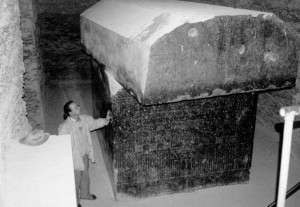
{24 ?} polished stone sarcophagi at Saqqara. Found in a ''Labyrinth''. A 'centering' in? Spotless?
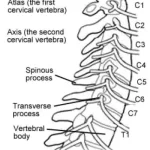
Seven 'stepped' Ladder of the Mind?
"The story of Christchurch Priory goes back to at least the middle of the 11th century, as Domesday says there was a priory of twentyfour {24} secular canons here in the reign of Edward the Confessor. The Priory is on the site of an earlier church dating from 800AD. In 1094 a chief minister of William II, Ranulf Flambard, then Dean of Twynham, began the building of a church. Local legend has it that Flambard originally intended the church to be built on top of nearby St. Catherine's Hill but during the night all the building materials were mysteriously transported to the site of the present priory. Although in 1099 Flambard was appointed Bishop of Durham, work continued under his successors. A mid-12th century account recording the legend of the Christchurch Dragon indicates that by 1113 the new church was nearing completion under Dean Peter de Oglander." [Wiki].
''Christchurch in England and New Zealand both stand on rivers called Avon.''
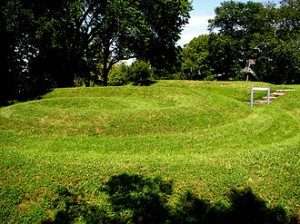
'Snake/Dragon head' on land. 'tail' in the sea.
And/or: The Shipwrecked Sailor: ''The tale begins with a follower (sailor) announcing or stating his return from a voyage at sea.[8][9] He is returning from an apparently failed expedition and is anxious about how the king will receive him. An attendant reassures him,[10] advising him on how to behave before the king, and repeating the proverb, "The mouth {'delta'?} of a man saves him".[11] To encourage his master, he tells a tale of a previous voyage of his in which he overcame disaster, including meeting with a god and the king.

'The star of ones BEING is rising'?
The sailor of a ship manned by 150 {'fifteen' link} sailors, fell overboard when a sudden wind caused the waves to be eight cubits high, and was washed up on an island. There he finds shelter and food (he says "there was nothing that was not there").[12] While making a burnt offering to the gods, he hears thunder and feels the earth shake and sees a giant serpent approach him {Lord of Punt}. The serpent asks him three times who had brought him to the island. When the sailor cannot answer, the serpent takes him to where it lives and asks the question three times more. The sailor repeats his story, now saying that he was on a mission for the king....The serpent tells him not to fear and that god has let him live and brought him to the island, and that after 'four' months on the island he will be rescued by sailors he knows and will return home. The serpent then relates a tragedy that had happened to him, saying that he had been on the island with 74 of his kin plus a daughter, and that a star fell and "they went up in flames through it".[13] In some translations, the daughter survives; in others, she perishes with the rest. The serpent advises the sailor to be brave and to control his heart, and if he does so, he will return to his family.''
Refresher: "Not out but through." C. Jung.
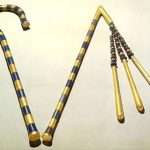 ''Durham is a city in northeast England, south of Newcastle upon Tyne. The River Wear loops around the Romanesque Durham Cathedral and Norman Durham Castle. North of the castle, 13th-century, medieval Crook Hall is home to gardens and a maze. South of the river, Durham University offers a Botanic Garden with woodland and tropical plants, and the Oriental Museum exhibiting Asian, Egyptian and Middle Eastern artefacts.''
''Durham is a city in northeast England, south of Newcastle upon Tyne. The River Wear loops around the Romanesque Durham Cathedral and Norman Durham Castle. North of the castle, 13th-century, medieval Crook Hall is home to gardens and a maze. South of the river, Durham University offers a Botanic Garden with woodland and tropical plants, and the Oriental Museum exhibiting Asian, Egyptian and Middle Eastern artefacts.''
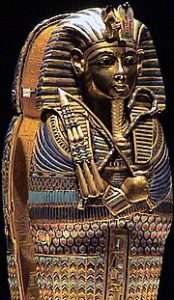
N/E?
And/or: ''Durham is a city in the North-East of England and is well known for its Norman cathedral and 11th-century castle. Durham Cathedral is famous for being the final resting place of Saint Cuthbert and Saint Bede the Venerable, and the castle has been the home of Durham University since 1832.'' [Wiki].
Franks?
''Perched high on the inside of a loop is Durham Cathedral. It was built to house one holy man - Saint Cuthbert. A pilgrimage destination {'NAVIGATOR'?}. On the Gough Map, the position of Durham and the Cathedral is spot on, which is interesting, because of all the rivers on the map IT IS ONLY THIS ONE which is drawn to such accuracy....It became the last Cathedral of the Far North.'' ['In Search of Medieval Britain'].
''The Gough Map was produced to legitimize 'royalty' {i.e., kingship}. [Same].
Original intention = mind set?
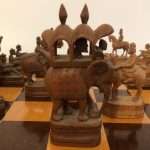
Side note: "The cloth consists of 58 scenes,[note 1] many with Latin tituli, embroidered on linen with coloured woollen yarns. It is likely that it was commissioned by Bishop Odo of Bayeux, William's maternal half-brother, and made for him in England in the 1070s. In 1729, the hanging was rediscovered by scholars at a time when it was being displayed annually in Bayeux Cathedral. The tapestry is now exhibited at the Musée de la Tapisserie de Bayeux in Bayeux, Normandy, France (49.2744°N 0.7003°W).
The designs on the Bayeux Tapestry are embroidered rather than in a tapestry weave, so it does not meet narrower definitions of a tapestry.[5] Nevertheless, it has always been referred to as a tapestry until recent years when the name "Bayeux Embroidery" has gained ground among certain art historians. It can be seen as a rare example of secular Romanesque art."

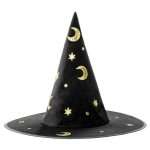 Continued: ''Bishop Auckland (/ˈɔːk.lənd/ AWK-lənd) is a market town and civil parish at the confluence of the River Wear and the River Gaunless in County Durham, England. It is 12 miles (19 km) northwest of Darlington and 12 miles (19 km) southwest of Durham.
Continued: ''Bishop Auckland (/ˈɔːk.lənd/ AWK-lənd) is a market town and civil parish at the confluence of the River Wear and the River Gaunless in County Durham, England. It is 12 miles (19 km) northwest of Darlington and 12 miles (19 km) southwest of Durham.
Much of the town's early history surrounds the Bishops of Durham and the establishment of Auckland Castle's predecessor, a hunting lodge, which became the main residence of Durham Bishops. This is reflected in the first part of the town's name.[5][6][7][8] During the Industrial Revolution, the town grew rapidly as coal mining became its largest industry.[9] Decline in the coal mining industry during the late twentieth century has changed the town's largest sector to manufacturing.''
“There are two kings in England, namely the Lord King of England, wearing a crown in sign of his regality and the Lord Bishop of Durham wearing a mitre in place of a crown, in sign of his regality in the diocese of Durham”.
This was a quote from the steward of Anthony Bek, Bishop of Durham (1284-1311).
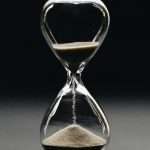
In the form of 'two triangles'. Above/below. Fire/water.
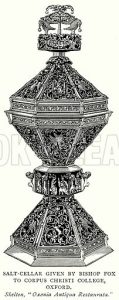
Salt-Cellar given by Bishop Fox to Corpus Christi College.
Prince Bishops of Durham = Bishops of the North = 'Kings' of the North {had there own armies i.e., 'warrior' Bishops}. ['Digging Up Britains Past' / S2 EP3].
''County Durham was once a virtually independent state ruled not by the king, but by powerful ‘Prince Bishops’, who were more or less the ‘Kings of County Durham’....''
Side note: ''Berwick was a ping-pong ball for centuries. It's a trick question, of course. You're not in Scotland, but in the northernmost town in England. This is Berwick-upon-Tweed, a harbour settlement on a hooked-shaped estuary on the sand-blasted Northumberland coast.''
'Peninsula'?
''The town of Berwick in the N/E of England sits on the RIVER Tweed that shares its name with a wollen cloth.'' ['Tipping Point'].
Swaddling cloth?

Swollen?
''Tweed may represent an Old Brittonic name meaning "border".[4] A doubtful proposal is that the name is derived from a non-Celtic form of the Indo-European root *teuha- meaning "swell, grow powerful".
 A work in progress: Merlin’s Grave at Drumelzier (pronounced druh-MEL-yur) is formally documented in Scotland’s National Record of the Historic Environment, but despite its evocative name this site is little more than a nondescript corner of a field {'potters'?}, etched on to the map by local tradition. In 1689, Alexander Pennecuik noted in the draft of his Geographical Historical Description of the Shire of Tweeddale that: ‘a little below the church yeard, the famous prophet Merlin is said to be buried. The particular place of his grave… was shewn me many years ago, by the Old and Reverend Minister of the place…’. The origins of this tradition, the RCAHMS Peeblesshire Inventory speculates, could lie in the discovery of a Bronze Age grave – but, if so, no record of this find survives. While Merlin’s Grave has been marked on maps since the 18th century, no archaeological remains have ever been documented there.
A work in progress: Merlin’s Grave at Drumelzier (pronounced druh-MEL-yur) is formally documented in Scotland’s National Record of the Historic Environment, but despite its evocative name this site is little more than a nondescript corner of a field {'potters'?}, etched on to the map by local tradition. In 1689, Alexander Pennecuik noted in the draft of his Geographical Historical Description of the Shire of Tweeddale that: ‘a little below the church yeard, the famous prophet Merlin is said to be buried. The particular place of his grave… was shewn me many years ago, by the Old and Reverend Minister of the place…’. The origins of this tradition, the RCAHMS Peeblesshire Inventory speculates, could lie in the discovery of a Bronze Age grave – but, if so, no record of this find survives. While Merlin’s Grave has been marked on maps since the 18th century, no archaeological remains have ever been documented there.

Sister?

Thane. Bridge. Rake. Mill. Anything?
How, then, did Drumelzier come to be associated with Merlin? Our story begins with an old medieval tale, the Vita Merlini Silvestris (‘The Life of Merlin of the Forest’), which tells of a wild man of the woods who was banished to the wilderness because of the terrible slaughter he had provoked at a great battle in northern Cumbria: ‘qui Lailoken vocabatur quem quidam dicunt fuisse Merlynum qui erat Britonibus quasi propheta singularis sed nescitur…’ (‘his name was Lailoken. Certain people say that he was Merlin who was regarded amongst the Britons as unique in his powers of prophecy…’)
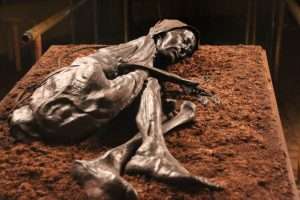 The Vita Merlini Silvestris contained several clues to guide our search. Much of the action takes place in and around Dunmeller, from which the place-name Drumelzier derives, and the Powsail Burn and the Tweed do indeed converge at this location. The modern village is also still overlooked by the prominent ruins of Tinnis Castle, which are commonly thought to represent the remains of Meldred’s ‘lofty throne’ where Lailoken was held captive. Meldred himself is mentioned nowhere outside the Vita Merlini Silvestris, but his description as a sub-king suggests that he was considered to rule a small area under the dominance of another ruler. This high-king may have been considered to be Rhydderch, a known contemporary of St Kentigern in the years around AD 600, who was the king of Alt Clud, the Rock of the Clyde....
The Vita Merlini Silvestris contained several clues to guide our search. Much of the action takes place in and around Dunmeller, from which the place-name Drumelzier derives, and the Powsail Burn and the Tweed do indeed converge at this location. The modern village is also still overlooked by the prominent ruins of Tinnis Castle, which are commonly thought to represent the remains of Meldred’s ‘lofty throne’ where Lailoken was held captive. Meldred himself is mentioned nowhere outside the Vita Merlini Silvestris, but his description as a sub-king suggests that he was considered to rule a small area under the dominance of another ruler. This high-king may have been considered to be Rhydderch, a known contemporary of St Kentigern in the years around AD 600, who was the king of Alt Clud, the Rock of the Clyde....
Side note: "The Dreamtime is the period in which life was created according to Aboriginal culture. Dreaming is the word used to explain how life came to be; it is the stories and beliefs behind creation. It is called different names in different Aboriginal languages, such as: Ngarranggarni, Tjukula Jukurrpa."
And/or: Annwn, Annwfn, or Annwfyn ([ˈanʊn]; Annwvn, Annwyn, Annwyfn, Annwvyn, or Annwfyn) is the Otherworld in Welsh mythology. Ruled by Arawn[1][2] (or, in Arthurian literature, by Gwyn ap Nudd[3]), it was essentially a world of delights and eternal youth where disease was absent and food was ever-abundant.[4][5]

"Yr Hen Ogledd (Welsh pronunciation: [ər ˌheːn ˈɔɡlɛð]), meaning the Old North, is the historical region that was inhabited by the Brittonic people of sub-Roman Britain in the Early Middle Ages, now Northern England and the southern Scottish Lowlands, alongside the fellow Brittonic Celtic Kingdom of Elmet. Its population spoke a variety of the Brittonic language known as Cumbric which is closely related to, if not a dialect of Old Welsh. The people of Wales and the Hen Ogledd considered themselves to be one people, and both were referred to as Cymry ('fellow-countrymen') from the Brittonic word combrogi. The Hen Ogledd was distinct from the parts of Great Britain inhabited by the Picts, Anglo-Saxons, and Scoti." Borderlands?
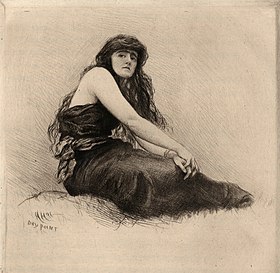
"Gwenddydd, also known as Gwendydd and Ganieda, is a character from Welsh legend. She first appears in the early Welsh poems like the Dialogue of Myrddin and Gwenddydd and in the 12th-century Latin Vita Merlini by Geoffrey of Monmouth, where she is represented as being a figure in the Old North of Britain, the sister of Myrddin or Merlin, and a prophet in her own right. Geoffrey also makes her the wife of the northern king Rhydderch Hael. She was remembered in Welsh traditions recorded in the 16th century by Elis Gruffydd, and even as late as the 18th century. Since the late 19th century she has occasionally appeared as Merlin's sister or lover in Arthurian fiction, poetry and drama by writers such as Laurence Binyon, John Cowper Powys, John Arden, Margaretta D'Arcy and Stephen R. Lawhead." AND/OR: Derived from Welsh gwen meaning "white, blessed" and dydd meaning "day". In medieval Welsh tales this is the name of Myrddin's sister. And/or: Similarly, Oianau refers to her in the phrase "Gwenddydd does not come to me".
Continued: Where did this curious tale come from? The Vita Merlini Silvestris survives in only one 15th-century manuscript (held in the British Library). A truncated version of the same legend was also included in the Scotichronicon, written in the 1440s by Walter Bower, Abbot of Inchcolm Abbey, but the story was probably composed centuries earlier, most likely in the 12th century, when the Life of St Kentigern was being written. The Drumelzier tale appears to have much in common with early medieval Welsh poetry about ‘Myrddin Wyllt’, who was renowned for his gift of prophecy – and, interestingly, this same Myrddin was also called ‘Llallawc’ and ‘Llallogan’ in one of these poems, Cyfoesi Myrddin a Gwenddydd ei Chwaer (‘Conversation of Myrddin and his Sister Gwenddydd’). In turn, Myrddin became the wizard Merlin in the 12th century, when Geoffrey of Monmouth drew various Welsh stories together into his Historia Regum Britanniae (‘History of the Kings of Britain’), from which stemmed the Arthurian legends easily recognised today – and Geoffrey included yet another variant of the Drumelzier story in his own Vita Merlini.
There are no doubts, then, as to the medieval credentials of the Drumelzier legend – but could it have had even earlier origins? The name Lailoken derives from Cumbric, a now-extinct Celtic language that was spoken in southern Scotland during the early medieval period. His gift of prophecy recalls the divination skills attributed to druids by ancient Classical writers such as Dio Chrysostom, Cicero, and Hippolytus, and his triple death reflects the overkill observed among Iron Age sacrificial bog bodies such as Lindow Man (see CA 233 and 375). But was the story simply brought to Drumelzier by a wandering medieval minstrel, or did the Merlin legend actually originate here in Tweeddale? ['The Past' / September 2024].
And/or: ''In order to really understand the unique history of County Durham we must first go back into Anglo-Saxon times, to a period long before England or Scotland existed, when Great Britain was not one kingdom like today, but several kingdoms spread throughout the land. One of the largest and most powerful of the Anglo-Saxon kingdoms was Northumbria which extended from the Humber to the River Forth, making up almost a third of the entire mainland of Britain. During its greatest period in the seventh and eighth centuries, Northumbria was a great centre for arts, learning and early Christianity and was especially noted for the great saints it produced, like Cuthbert, Wilfrid and the Venerable Bede. Northumbria’s downfall was brought about in later centuries, by successive invasion from Vikings and Scots, so by the time of the Norman Conquest, it was reduced to an earldom stretching from the River Tweed to the Tees. This Earldom roughly consisted of the region we now call ‘North-Eastern England’, an area still often referred to as ‘Northumbria’ today.''

'The beautiful lady has come'. Stretched? As in looking over the horizon or borderlands.
Side note: {a work in progress}: ''Full of fear i awoke from sleep, and i thought to myself: 'Is not this the composition of the waters?' And i was assured that i had well understood, and again i fell asleep....i saw a bowl shaped altar...with fifteen steps leading up to it. On the upper part, boiling water and a numberless mulitude of people in it. I went up to percieve the sight and saw an anthroparian, a barber grown grey {i.e., lead link} with age, who said to me: 'What are you looking at?' I replied that i was astonished to see the seething of the water, and men burning yet alive. He answered me thus: 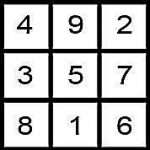 'The sight that you see is the entrance and exit of the transformation....This is the place of the operation called embalming. Those who seek to obtain the art enter here and become spirit by escaping from the body.' As we spoke, the boiling continued and i saw a brazen {bronze} man holding a leaden tablet in his hand and he spoke with a loud voice looking upon the tablet: 'All those undergoing the punishment - be calm - to each take a leaden tablet and write with their own hand, and to keep theirs eyes upraised in the AIR and their mouths open, until their throats SWELL.'' [Page 61 'Alchemical Studies' / C. G. Jung].
'The sight that you see is the entrance and exit of the transformation....This is the place of the operation called embalming. Those who seek to obtain the art enter here and become spirit by escaping from the body.' As we spoke, the boiling continued and i saw a brazen {bronze} man holding a leaden tablet in his hand and he spoke with a loud voice looking upon the tablet: 'All those undergoing the punishment - be calm - to each take a leaden tablet and write with their own hand, and to keep theirs eyes upraised in the AIR and their mouths open, until their throats SWELL.'' [Page 61 'Alchemical Studies' / C. G. Jung].
Taurus is ruled by Venus?
N.B. Copper and Zinc = Brass. Copper and Tin = Bronze {'Pawn Stars' / S15 EP11}.

Horizon line?
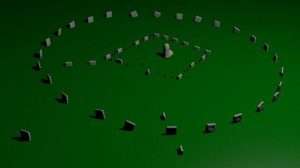
Avebury.
Hence: ''The deed followed the word, and the master of the house said to me: 'You have beheld, you have stretched your neck upward and have seen what is done. This brazen man that you see {i.e., 'barber'} is the priest who sacrifices and is sacrificed, and spews forth his own flesh {'headless'?}. Power is given him over this water and over the 'people' who are punished.'' [Same page].
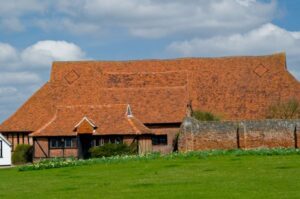
One of the two ancient barns at Cressing Temple. Lozenge shape on roof?
'Living Water'?
'Cage' to enlarge.
'Outstretched'?
Side note: ''Mumps is a virus that features in the full name of the MMR vaccine which commonly causes painful swelling of the salivary glands.'' ['Impossible'].
'Parched' ?
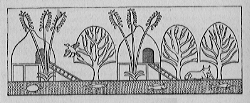
House on stilts? Mind set?
Working example: The idea of Man as a house containing many rooms is a very ancient image.  The inner constitution of a man is compared to a house with rooms on different levels. The 'men in the street' in this narrative represent external sides of Lot. They represent those elements in him which have external understanding based on their external world as given through the senses. The knowledge of esoteric psychology cannot be sown on this side of a man because the outer side contradicts the development of the inner side of a man. A man must realise that there is something else apart from what he beholds in the world. If he takes everything as he sees it happening he will be extremely external and have no inner reflection. Esoteric psychology in its action begins when a man perceives that there must be something else, apart from what his senses shew him, otherwise he will always be dragged down by the events of life and will be unable to form in himself anything that can resist the chaos of outer life. This is why the men 'in the street' must be resisted. The same idea is met with in the parable of the Sower and the Seed: 'The sower went forth to sow his seed: and as he sowed, some fell by the way side; and it was trodden under foot, and the birds of heaven devoured it' (Luke viii.5 R.V.).
The inner constitution of a man is compared to a house with rooms on different levels. The 'men in the street' in this narrative represent external sides of Lot. They represent those elements in him which have external understanding based on their external world as given through the senses. The knowledge of esoteric psychology cannot be sown on this side of a man because the outer side contradicts the development of the inner side of a man. A man must realise that there is something else apart from what he beholds in the world. If he takes everything as he sees it happening he will be extremely external and have no inner reflection. Esoteric psychology in its action begins when a man perceives that there must be something else, apart from what his senses shew him, otherwise he will always be dragged down by the events of life and will be unable to form in himself anything that can resist the chaos of outer life. This is why the men 'in the street' must be resisted. The same idea is met with in the parable of the Sower and the Seed: 'The sower went forth to sow his seed: and as he sowed, some fell by the way side; and it was trodden under foot, and the birds of heaven devoured it' (Luke viii.5 R.V.).

Best foot forward?

Inner / Outer: Which and why?
The truth, the knowledge of this further evolution of Man that is the subject of esoteric psychology, must not fall 'by the way side' in a man. It must not fall on those parts of him that are 'in the street', on those sides of him concerned with outer life only. The most external side of Man is that side of him that deals with the world as he sees it, with the daily tasks, with the effect of appearances on him. Esoteric knowledge must fall more deeply than this. It must touch an inner side in a man. And once it touches a deeper side there will inevitably start a struggle between the inner understanding and the outer understanding. So Lot has to struggle with the men 'in the street' because he has reached a stage in which something quite definitecan happen to him and is at once in the danger of losing what inner understanding he has. In fact, his inner understanding is in great danger of being violated by his outer understanding." {'The Mark' / M. Nicoll}.
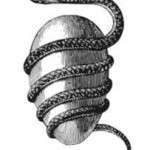
Inner/outer. A beginning or end?
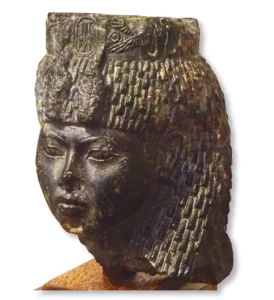
Tiye. Crowned by?
And/or: "The 'house' symbolizes more than just the household. Its for a wider community. These are our countries first pioneers...Out of this landscape they are hueing out there own society....."Is that because they are becoming more settled," asks Alice Roberts: "from hunter gatherers to farmers?".....They are forming more coherent communities AND ONE of the ways that draws these communities together is the collective act - such buildings serves as a symbol of the community {i.e., in this case Longbarrows}....Its a moment of change that people remember for many generations after. So first of all the halls are built, then burnt down to be transformed into long mounds. They inturn attract future activity i.e., pits are dug into them - axe heads placed into them....which is all about remembering that first moment of inception." ['Digging For Britain' / S6 EP1].
Refresher: "Many years ago the English psychologist, F. W. H. Meyes, suggested that - ''hidden in the depth of our being is a rubbish heap as well as a treasure house''.
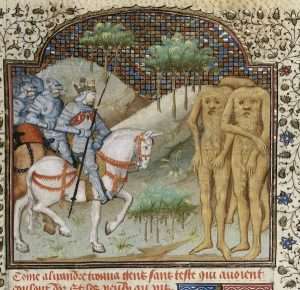
West/ east. Boil/roast.

snake/scalp.
And/or {before those FIRST IMPRESSIONS dictate something else}: ''spews forth'' in relation to what such animals {lower} - as the vulture and jackal do - when processing their food i.e., Mut/Anubis/Wolf.
'Food' of the gods?
Side note: "One of the Kennet's sources is Swallowhead Spring near Silbury Hill in Wiltshire, and others are springs north of Avebury near the small villages of Uffcott and Broad Hinton. These then converge. In these early stages, the Kennet passes close by many prehistoric sites, including Avebury Henge, West Kennet Long Barrow and Silbury Hill....The pronunciation (and spelling) was as the Kunnit (or Cunnit).[4] This is likely derived from the Roman settlement in the upper valley floor, Cunetio (in the later large village of Mildenhall). Latin scholars state Cunetio is very unlikely to be a Latin derivation, meaning it is a Celtic British name, like most Roman town names in Britain.[4][5] The frequent Celtic stem "cun-" means "hound", as in the modern Welsh ci, cŵn “dog”.....One of the Kennet's sources is Swallowhead Spring near Silbury Hill in Wiltshire."
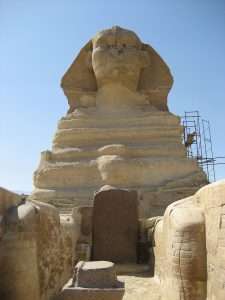
'Father' of terror.
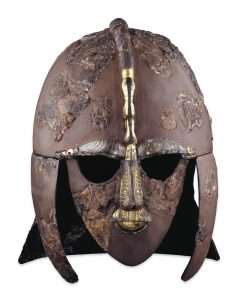
A ''meeting'' in the middle?
And/or: ''Abdul gave him instructions from The Fables of the Ancients: 'When i have recited the spell and thrown the incence on the 'fire' {spice link}, the water will dry up from the river bed and you will be able to 'SEE' a golden door there with two metal rings on it. Give three knocks in rapid succession and you will hear a voice ask, 'Who knocks at the door of the treasure, unknowing of how to solve the secrets'? You must answer: 'I am Judar, the Son of Omar.' And the door will open and there will come towards you a figure with a burning sword in his hand. He will say to you, 'If you be that man, STRETCH forth thy neck, that i may strike off thy head.' Then stretch forth your neck and fear not, for when he lifts his hand and smites you with his sword, he will fall down before you, and you will see in him a body without soul {sans}. But if you gainsay him he will slay you. When you have done this go down the tunnel until you see another door. This door will FLY open and you will see two dragons, which will open there mouths and FLY at you. Put forth both hands and they will each bite each a hand and fall down dead, but if you resist them, they will slay you. Then go to the next door and knock, whereupon your 'mother' will come forth....'How will i be able to endure these terrors'? Fear not for they are semblances WITHOUT life.'' [Page 237 'The Sacred History' / J. Black].
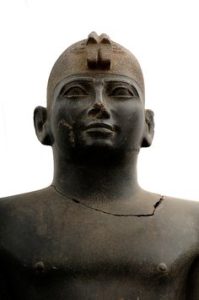
Dragons and serpents: ALL Kushite pharaohs wore two serpents on their brows - as part of royal regalia {i.e., at coronation}. 'Twentyfifth' Dynasty. Melancholy or joy?
A reversal of something.
'Upside down Vases'.
Seti I tunnel in the Valley of the Kings in relation to the Land of Punt.

A solitary fish found in Egypts brand new city. The first of its kind. Salmon?
Continued: ''Tweed is widely recognised as the most prolific salmon river in the North Atlantic. The 2010 rod caught catch was 23,219 salmon. The river is managed by the River Tweed Commission and its sister conservation organisation the Tweed Foundation.''
Side step: "Homer's epic , describes the last few weeks of the siege, nearly ten years after the Greek army, led by Menelaus brother Agamemnon, King of Mycenae {S/W}, first sailed in more than 1000 ships to the stronghold of the Trojans {N/W}."
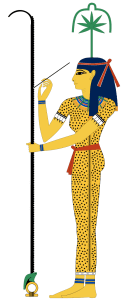
Coincidence?
SIDE NOTE: {working example: In relation to ''spotless'' a few paragraphs back}: "We could call these transitory experiences spots on a fabric, spots that can be removed by totally contradictory impressions {habits?} or modified by impressions that are more or less different {good ones?}. Its the excess of badly defined spots that troubles a consciousness and creates confusion and uncertainty in the behavior of the individual. 'This image of the single fabric is valuable', said Jean Jacques. 'It allows me to better understand the continuity of the human consciousness throughout successive..." ['Journey Into the Light'].
''White without spot''?
Follow the title of the book to 'see' it from a different authors point of view. An author whose family members also answer other 'riddles'.
 Syncronistic link?..."Dear You - I write this letter in the early hours of the morning thinking if my words help one person then that is something. Often i wish i could exchange my mind for another one, a spotless one that is seeped in eternal sunshine , in stead of the dented one that feels chronically polluted. But this is the mind that i have, and i know that there is good within it..." [Q. S. Lam. Enlarged/continued elsewhere].
Syncronistic link?..."Dear You - I write this letter in the early hours of the morning thinking if my words help one person then that is something. Often i wish i could exchange my mind for another one, a spotless one that is seeped in eternal sunshine , in stead of the dented one that feels chronically polluted. But this is the mind that i have, and i know that there is good within it..." [Q. S. Lam. Enlarged/continued elsewhere].
'Strange Life of Ivan Osokin' / P. D. Ouspensky.
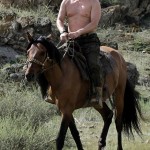
Head in the clouds or somewhere else?
"Son, i have words of warning, i would save you from coming ills, produced by the grinding wheels of cause and effect..."[Same book]. That link to the meaning of Karma - The Old Testaments main principle. Its core theme. Understanding that universal framework especially in the context of what all imply by the ''divine bit'' makes sense of such [puns?] as - ''what goes around, comes round'' and/or ''like attracts like'' in relation to the word ''fate'' and/or the subject of Astrology RELATIVE to freedom of will within those boundaries of ''cause and effect''. See it yet? i.e.,.
Refresher..."The human's progress is that of one who has been given a 'sealed' book, written before he was born. He carries it inside of himself until he 'dies'. While man is subject to the movement of time, he does not know the contents of that concealed book." [ Hakim Sanai]. Taken from the book 'The way of the Sufi' by I. Shah.
'Game of Thrones'?
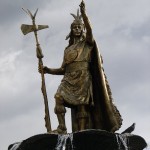
Question. A lily head?
Hence the link to such titles as ''He who overturns space and time." In reference to the most important Incan King = Pachacuti. A person who is described as ''divinely inspired'' and/or ''semi divine''. And/or ''Son of the sun''. See it?
'Ancient Christian Writers: The Literal Meaning of Genesis. Vol 1' / St. Augustine. Translated by J. H. Taylor.
A working example: "Can astrology be considered an exact and infallible science?'...'Certainly, as regards what belongs to nature, but not what belongs to spirit. However, its accuracy depends on certain keys...without which its calculations will amount to probabilities only..." ['Her-Bak'].
Follow the title of the book to 'see' {predict?} it in its broader aspect.
Understanding the above makes sense of the following - before those bigger questions are asked..."Superstitious awe of astrology makes one an automaton, slavishly dependent on mechanical guidance. The wise man defeats his planets - which is to say, his past - by transferring his 'allegiance' from the creation to the 'creator'. The more he realizes his unity with spirit, ['divine bit' link. This readers input] the less he can be dominated by matter...The deeper the self realization of man, the more he influences the whole universe by his subtle spiritual vibrations, and the less he himself is affected by the phenomenal flux..." [Same book]. As it does with...
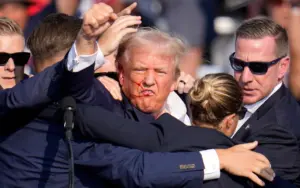
Karma or just fake news?
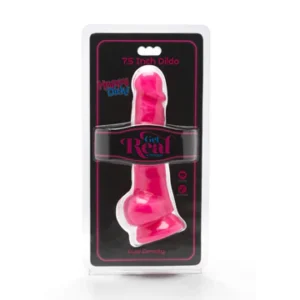
SPOT the difference.
"...It appears that misery, starvation, and disease are whips of our karma that ultimately drive us to seek the true meaning of life." [Extract from the book 'Autobiography of a Yogi'. Enlarged elsewhere].
A {working?} example: "But at the same time, possibilities of evolution exist, and they may be developed in separate individuals with the help of appropriate knowledge and methods. Such development can only take place in the interests of the man himself against, so to speak, the interests and forces of the planetary world {i.e.,what this author defines as ''mechanical''}. The man must understand this: his evolution is necessary only to himself. No one else is interested in it. And no one is obliged or intends to help him. On the contrary, the forces which oppose the evolution of large masses of humanity also oppose the evolution of individual men. A man must outwit them. And one man can outwit them, humanity cannot. You will understand later on that all these obstacles are very useful to a man; if they did not exist they would have to be created intentionally, because it is by overcoming obstacles that man develops those qualities he needs. This is the basis of the correct view of human evolution. There is no compulsory, mechanical evolution. Evolution is the result of conscious struggle..." ['In Search of the Miraculous'].
''Mechanical'' in relation to 'Gnosis' {intent/purpose of}. Spirit in relation to soul. Anything?

Zoroastrian or Paisley pattern.
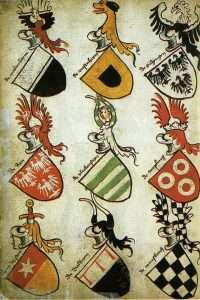
'Shield' pattern.
"Sri Yukteswar smiled. 'There is a deeper astrology, not dependent on the testimony of calendars and clocks. Each man is a part of the 'creator', or Cosmic man; he has a heavenly body as well as one of earth. The human eye sees the physical form, but the inner eye penetrates more profoundly , even to the universal pattern of which each man is an integral and individual part. " [Same book].
Question. ALL nothing more than fantasists?
"In the Pagan Mysteries, beginners were known as 'mystae', meaning 'those with eyes closed', and enlightened initiates were known as 'epopteia' meaning, 'those who can see'." [From the book by T. Freke and P. Gandy].
'Mans Search for Meaning' / Viktor Frankl.
Side note: "Things like Google Translate can match the hidden patterns between different human languages and translate them....AI tools can find these invisible patterns that we cannot see and link them to patterns between languages....It finds the shapes of certain phrases - from billions of data - without the need of a dictionary. It does not even know that it is dealing with a language." ['Royal Institution Xmas Lectures' / 2023].
Could it be used someday for a mindset - within {say} a curriculum?

Creators of widows and orphans? Question. What would Muhammad do/say if he lived in this generation?
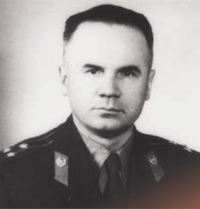
Oleg Penkovsky. The real Russian hero. A TRUE Cossack. A team player - on the WORLD stage. R.I.P.
Something more heavy going; something that requires a firmer headscratch..."Karma is thus seen as the law of evolution, in which the hierarchies are seated and what is called 'unconscious nature' is in reality an aggregate of forces manipulated by 'semi-intelligent beings' {Elementals} guided by high planetary spirits {Dhyani-Chohans}, whose collective aggregate [i.e.,higher/lower link] forms the manifested verbum of the UNmanifested LOGOS."[Extract from the book 'The Magister'. Emphasis, this readers]. Try ''elementals'' before those first impressions dictate {suggest?} something else.
N.B. Dhyani-Chohans = "A Sanskrit Tibetan compound = 'Lord of meditation'. A general term for celestial beings 'beyond' human evolution. They are similar to the Angelic Hosts of the Christian faith and/or the Elohim and 'messengers' of the Hebrews"
"Astrology is how we navigate when we are left to our own devices and our signposts are synchronicity." [Same book].
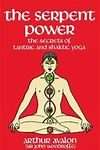

'Spirit' or 'Soul' as a start point?
Refresher: "The Kingdom of Heaven is within you. The time has come for external forms and expressions to be left behind. There is no Temple in the heavenly Jerusalem, for religion has no place in Heaven. Man is his own Temple. A mans heart is the altar of god...." [First chapter,{'The inner Quest'} from the book 'The Mind of Christ' {Meditations on Christian Themes} by Anthony Duncan].
"The world is a bridge; pass over it, but build no house upon it." Enlarged elsewhere.
"Let the 'creator' know himself to be the builder, and not the building...." Quote by A. Bailey.
Analogy of same..."The worker is hidden in the workshop."
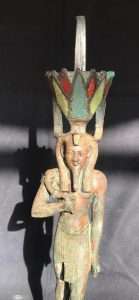
From the 'waters' of creation {Self becoming} - a lotus flower.
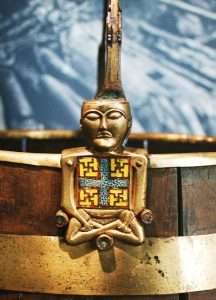
A Viking perspective.
Analogy of same...'Who Is in My Temple' AND 'In The Temple of Silence' ['Cosmic Chants' by Paramahansa Yogananda].
"Thro' many a birth in existence wandered i; seeking, but not finding, the builder of this house. Sorrowful is repeated birth. O housebuilder, thou art seen. Thou shalt built no house again. All thy rafters are broken. Thy ridge pole shattered. Mind attains the UNconditioned. Achieved - is the end of graving." [First utterance of the Buddha].
Inanimate/Animate: Spirit/Soul: STONE/Flower?
Modern / present example? "Work with the building, not against it." Quote by Lee Head of 'Restoration Man' fame. [Channel 4/ January 2016]. The renovation of a Victorian railway station building in Whittingham - Northumberland. The only Island platform along its line. A complete novice - who surprised everyone - except himself. Those inspirations and aspirations; that when applied; regardless of subject; can move mountains. Strangely enough [or synchronistic?] - a familiar feature can be seen along the length of the fronted iron work - Solomon's seal.
'Lengthwise'?

Al-Qurn
"...can move mountains." = {Analogy of?} "The whole purpose of gnostic initiation was to bring initiates to spiritual maturity, where they would experience themselves to be completely free of any external authority and become their own 'Christ' or 'King'. " [From the book 'Jesus and the Lost Goddess' by T. Freke and P. Gandy]. Question. ''ridge pole'' ?
'King' in relation to 'mountain' {'higher' of the 'lower'?} - ALL as a means to an understanding. Try the 'Mona Lisa' for an alternative 'view'.
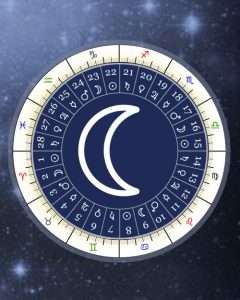
"They understand the legitimacy of every belief and the wisdom behind every knot tied in the fabric of Reality. By excepting each knot for what it is, they learn what it has to teach, and by not allowing themselves to be limited and defined by it, they allow for the untying of every knot. Only by standing in all stations of human possibility and not being defined by any of them can they achieve the Station of NO Station." [ From the book by T. Cheetham. Emphasis, this readers]. Try ''knot''.

Single KNOT: In the form of 'two triangles'. Above/below. Fire/water. That same shape that can be seen on the 'hind quarters' {left} of the 'headless' Sphinx on the east side at Gebel el Silsila. Question. What god/goddess represents ''an hour''?
And/or: ''We have here a small timer, that was used to calculate the speed of a vessel. Still within its 'glass' cage - as when it sank 250 years ago. A twentyeight second timer. When you run a length of rope over the side of the vessel - where there are knots every fortyseven feet - after 28 seconds, the knots were counted, that gave the speed of the vessel. Thats where the word ''knot'' came from.'' [Digging for Britain' / S.7 E.2].
'Ploughing the waves'?
"The Moon completes the full 360° zodiac circle against the stars in about 27.3 days (Sidereal Lunar Month). Lunar Mansions (also called Lunar Stations) are the equal segments of the ecliptic through which the Moon passes in its orbit. Various cultures have used various divisions of the ecliptic. However the most frequent methods were to divide Zodiac into 27 or 28 equal segments, because Moon spends cca 1 day & night in each Lunar Mansion: Division - 27 Mansions:
-

''Eight''?
- Mostly used in: Indian astrology
- Mansion is called: Nakshatra
- Preferred zodiac: Sidereal
- Length of mansion: 360°/27 = 13°20’00’’
- Division - 28 Mansions:
- Mostly used in: Western/Arabic astrology
- Mansion is called: Manzil
- Preferred zodiac: Tropical
- Length of mansion: 360°/28 = 12°51’25’’
It's said, that knowing the Lunar Mansion of your birth Moon can give you vital information about your personality, inner driving forces and purpose.
Question. Pharaoh = 'Great House'. Therefore what does it represent?
"Yin is like a mother-of-pearl image hidden in the deepest recesses of the house." Quote by Dr. Jung. Try ''pearl."
Side note: "The occultist who uses elaborate diagrams of astral planes and etheric bodies liberally sprinkled with Sanskrit words can be as far from Gnosis as can the psychologist who employs clever two-dimensional maps of the psyche with short hand expressions such as the ''shadow,'' the ''anima,'' or the ''wise old man,'' as though these were concrete realities instead of symbolic pointers to incomprehensible mysteries in the vast recesses of the unconscious." [Page 36 'The Gnostic Jung' / S. Hoeller].
 Represented by Orion the 'Hunter', and that 'spark' of a potential....'Sirius'. Start point of which = East, i.e., ''the heliacal rising of the Dog Star'' [i.e.,''lower'' link]. See anything. Hear anything? Or put another way, as one or two of these authors have done..."Knock, knock. Anything dawned"? For this reader, the real question is... Sense or nonsense. A possibility or not? Either way at least an understanding of a subject can be got. No poetic prose intended.
Represented by Orion the 'Hunter', and that 'spark' of a potential....'Sirius'. Start point of which = East, i.e., ''the heliacal rising of the Dog Star'' [i.e.,''lower'' link]. See anything. Hear anything? Or put another way, as one or two of these authors have done..."Knock, knock. Anything dawned"? For this reader, the real question is... Sense or nonsense. A possibility or not? Either way at least an understanding of a subject can be got. No poetic prose intended.
N.B. ''Hunter'' in the spiritual {internal} SENSE of the word. Hence......
In Greek mythology, Orion was a hunting companion of the huntress-goddess Artemis. In some versions of this story, Artemis killed Orion. Then her father, Zeus, the king of the gods, immortalized the giant huntsman by placing him in the sky as a constellation....Accounts of his death vary widely: some legends have him killed by Artemis for trying to rape her, others of Apollo's jealousy over Artemis' love of Orion; still other legends have him killed by a monstrous scorpion.''
'Shepherd' to enlarge.


As seen from a different perspective: "There was also Tros, the son of Alastor - he came up to Achilles and 'clasped his knees' in the hope that he would spare him and not 'kill' him but let him 'go', because they were 'both' of the same 'age'. The implication behind this last remark is that the personal star of Tros {Cetii} is close to the same altitude in the sky as Sirius, and would have appeared on the horizon visible from Greece at about the time Sirius appeared in the sky." ['Homer's Secret Iliad']. Latitude/Longitude link?
"It is he who maketh the stars as beacons, for you, that you may guide yourselves with their help through the dark spaces of land, desert, forest and sea. We detail Our Signs for people who know." [Quran 6:97. Translation, Yusuf Ali].
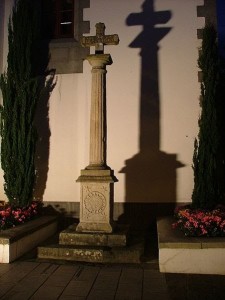
The Hendaye Cross. A 'cube' like structure for a base, on which to ''build'' on?
As in the example of the ‘birth place of Zeus’ [ Explained elsewhere ]. Provence - South France, another example. Some say from where the ’romances’ came. Those ‘tales’ where most had ‘twelve’ members. That link to the symbolism of ’Thirteen’. Explained elsewhere. That same place that has links to Mary/Joseph and the Hendaye Cross. Mentioned elsewhere. Everything has a beginning/end. Which each of those words; independent of each other; can be a representation of.
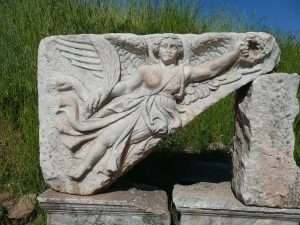
Goddess Nike.
And/or: "On sunny Sunday afternoons in the spring, the tour guides compete with hurdy-gurdy music and the laughter of children as they explain the images on the church front in terms of Hercules’ labors. Few tourists ponder why a Christian church in Provence uses the symbolism of ancient Greek myth, why its saint is called Trophime, or Trophy, or even why both Constantine, founder of the imperial Church in the fourth century, and Frederick Barbarossa, the Holy Roman Emperor in the late twelfth century, chose Arles for their confirmation and coronation."
'Victory'?
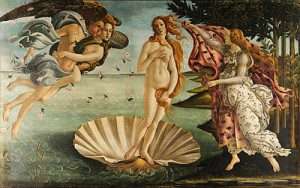
 Continued: "Under the Romans, who called it Arelate, the city retained its commercial status and flourished. Christianity arrived before the middle of the first century, brought, according to legend, by Saint Trophimus, or Trophime. Curiously enough, Saint Trophime dedicated the very first shrine to the Virgin here, even before her death. By the late first century c.E., Arles had become an ecclesiastical center, a position it would retain for the next four centuries, partly on the strength of its legendary cemetery, the Alyschamps.' Perhaps the most famous necropolis of the medieval era, the Alyschamps (from Elisii Campi, or Elysian Fields) owed its fame to Saint Trophime. Built outside the city walls, as were all Roman cemeteries, and along the via Aurelia, the main road to Italy and Rome, the Alyschamps was a perfect location for secret meetings. Saint Trophime soon attracted a following. However, we are not sure exactly who Saint Trophime really was. The Church claims he was the disciple of Saint Paul mentioned in 2 Timothy 4:20.
Continued: "Under the Romans, who called it Arelate, the city retained its commercial status and flourished. Christianity arrived before the middle of the first century, brought, according to legend, by Saint Trophimus, or Trophime. Curiously enough, Saint Trophime dedicated the very first shrine to the Virgin here, even before her death. By the late first century c.E., Arles had become an ecclesiastical center, a position it would retain for the next four centuries, partly on the strength of its legendary cemetery, the Alyschamps.' Perhaps the most famous necropolis of the medieval era, the Alyschamps (from Elisii Campi, or Elysian Fields) owed its fame to Saint Trophime. Built outside the city walls, as were all Roman cemeteries, and along the via Aurelia, the main road to Italy and Rome, the Alyschamps was a perfect location for secret meetings. Saint Trophime soon attracted a following. However, we are not sure exactly who Saint Trophime really was. The Church claims he was the disciple of Saint Paul mentioned in 2 Timothy 4:20.
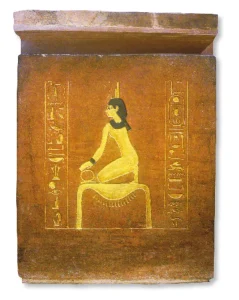
The sarcophagus of Amenhotep II with the image of a kneeling Isis coloured in bright yellow paint created using orpiment.

Truncated at the 'knees'.
This seems impossible, given that our Saint Trophime was in Arles at least a decade before the events mentioned in Timothy’s letter. He apparently didn’t arrive with the Holy Family, although he was close, possibly even related, to the two Marys at Saintes-Maries-de-la-Mer. His devotion to a Mary, possibly the Virgin Mary, but more likely Mary Magdalene, has already been noted. He is reported to have spent years in meditation at his hermitage a little farther outside Arles, beyond the Alyschamps, and in the year before his death or disappearance, probably in 52 c.£., he invoked a blessing on the cemetery. Christ himself was said to have attended the ceremony and left the imprint of his knee on a sarcophagus lid.!
Side note: "Optimally, each chakra is open and moving in a clockwise direction. If chakras are congested, closed or reversed, the energy is unable to flow freely, potentially impacting well-being. There are seven major chakras, starting with the first or base chakra located at the perineum, which informs and supports all others up to the top of the head (called the crown chakra). In addition, there are approximately 23 minor chakras located throughout the body, such as on the palm of each hand, the bottom of each foot, behind the knees, ete. Hundreds of minuscule chakras spread throughout the body are called acupuncture points. All of them contribute to how we act intrapsychically and interpersonally with the world around us. We continuously influence the chakras and are influenced by them throughout our lives through psychological efforts, physical activity, diet, meditation and quality of life." {'Book of Symbols' / Taschen}.
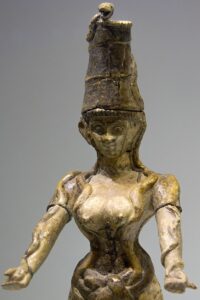
Snake goddess of Knossos. 'Peak'? Tower of a hat?
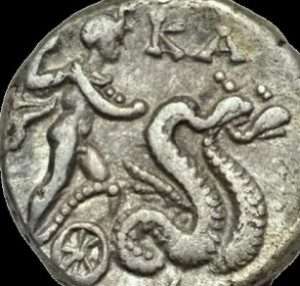
Charioteer? Off to Rhodes or Elephant Island?
'Twentythree'?
Continued: Arles, therefore, is ground zero for whatever version of Christianity it was that swept the region in those early years. In Mystery of the Cathedrals, Fulcanelli also directs us here, to Arles, the Alyschamps, and to the cathedral of Saint Trophime in particular, with several tantalizing references. He points out to us a rose-cross ankh on a sarcophagus lid at Saint Honoré in the Alsycamps and bids us pay close attention to the tympanum on the Great Portal of Saint Trophime ! Built in the mid-fifth century by Saint Hilaire and originally dedicated to Saint Stephan, the cathedral was rebuilt in the eleventh century and the Great Portal was finished a century later, in time for the coronation of Frederick I Barbarossa as king of Arles in 1178. Rededicated to Saint Trophime when the relics of his miracle were moved from the Alyscamps in 1152,” the cathedral failed to retain the sacred cache of its saint’s miraculous status, probably because the Holy Stone, the sarcophagus lid with the knee print, had disappeared. This missing stone, which conferred “knowledge of the Living Christ” to those who beheld it and “certainty of resurrection and eternal life” to those sacred dead who slept in its embrace, according to the 13th century Golden Legends, might just be the origin point of the later Holy Grail legends." ['The Mysteries of the Great Cross of Hendaye'].
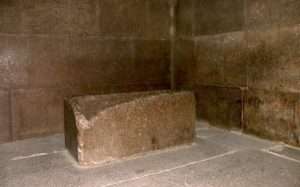
Beginning or end?
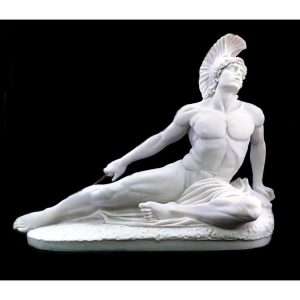
The death of Achilles. Higher or lower?
A more ‘head scratching’ example is the Hebrew tree. Representation of which is ‘North-south’. Top/down as opposed to bottom/up or what later became known as dry/wet way as opposed to wet/dry. [ Explained elsewhere. A link to ‘Sky religion’ ] As ‘explained’ by such authors as G. Scholem or Dion Fortune.
For a more ‘earthy’ representation of the same; if only for this reader; is a publication by Mr William Gray. ’ The ladder of lights’. Only this time in reverse order, i.e., South-north. Only to be read when a good understanding has been achieved. There are however...’nuggets of information’...to be found should curiosity get the better of the predicted ‘head scratch’. If so...wear a hat.
Elephant scalp.
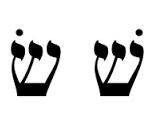
A working example: "When he was preparing to leave the camp on the last day of the war in 1945 the Jews of Brunnlitz wanted to give Oskar Schindler a gift. One prisoner offered his gold teeth and another fashioned them into a ring in which was inscribed an ancient Jewish phrase: 'He who saves a single soul saves the world entire'." {Schindler: The Real Story / 1982}.
Analogy of same; but now from its ''opposite end'',i.e.,from an unknown [unconscious?] aspect and/or 'angle'..."His sons illness also seemed to be affecting Paul. What if Paul became unwell too, who would be there for his son? Each word i wrote seemed feebler than the last and then i realised, despite all the nuggets of perceived wisdom, i was powerless..." [Extract from the book by Q. S. Lam].
''Unknown'' - in the sense that the above author has no connection on any level, concerning this subject and yet those universal archetypes [keys?] are used [unconsciously] - constantly; throughout; within her own internal struggles. Question. Coincidence or a meaningful one? Others elsewhere to access one way or the other, i.e.,.

Coincidence or a meaningful one? Try ''fingers''
"I would like to imagine my brain as a majestic cathedral with stained glass windows. Muli-coloured rays of light streaming through, painting a blue haven in which to create alchemy with my fingers, stirring up boundless energy from within, revitalizing my tired bones, letting me soar with my children, taking them to another place that is magical and safe." [Q. S. Lam].
Side note: ''Finger drains'' written about. Purposely named ''finger drains'' when being constructed on Oak Island.
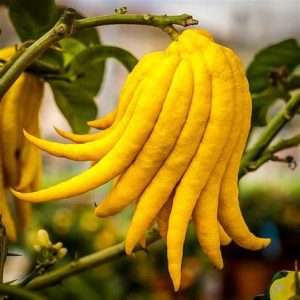
Citrus medica var. sarcodactylis, or the fingered citron, is an unusually-shaped citron variety whose fruit is segmented into finger-like sections, resembling those seen on representations of the Buddha. It is called Buddha's hand in many languages including English, Chinese, Japanese, Korean, Vietnamese, and French.
"In this small circle of light, surrounded by darkness, we are, as Plato says, ''strange prisoners'' and psychology and esotericism both seek the keys to our escape and restoration." [Extract from the book 'The Magister'].
"The truth is that man gets the fruit of his actions from 'above', and the fruits correspond to the nature of his actions." [Part one, 'Play of Consciousness'. Mentioned elsewhere].
Side note: "The mind has no limits; it can reach out beyond any boundanes of time and space we care to set. And it can communicate with others of the like disposition. Telepathy is no figment of the imagination, as many who read this will know already; a universal development of the power to communicate over vast distances is, not be so far off. Above all, we must recognise that there are no limits to what we can achieve other than those we set ourselves, no bolts and bars between the worlds except those we have personally hammered home. The soul is not a bird trapped in a cage; it can and does fly free — returning to its home after long voyaging. All the exercises and techniques in this book will be as nothing to this realization, nor will they work properly without its consent.
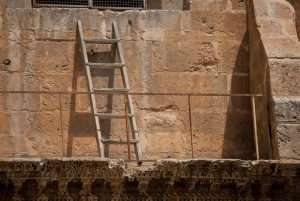
Looking in or out?
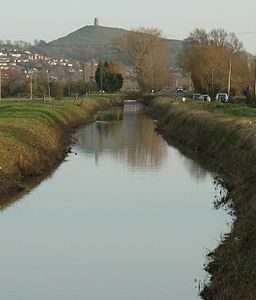
Isle of 'glass'.
The ancients were right to attach so much importance to the idea of the vital spark that sought to rise above earthly confines, and as we have seen repeatedly it is a mistake to believe that this teaching meant that we should despise the body. Through its windows we can catch glimpses of the infinite, which to look upon otherwise would be like looking directly at the sun without protective glasses tor our eyes . We see heaven through a darkened glass indeed, but as much for our own good as for any other reason. This may come as a surprise to those who think that practitioners of esoteric disciplines seek only to transcend the physical. In truth if we are wise we will realize that our physical selves are of the utmost value.

The Colossus of Rhodes: “To you, O Sun, the people of Doric Rhodes raise this bronze statue which reaches Olympus after calming {'cooling'?} the waves of war and crowning their city with the spoils of the enemy. Not only over the seas but also on land they light the sweet torch of freedom. “
Votive inscription on the Colossus.
From their safe harbourage we depart on voyages of discovery and to them we return, as from any joumey, to the welcome of home {'bower'?}. Microcosmically, there is an echo here of the souls longing for the place of its origin, wherever we may personally believe this to be. In our long search for the promised land, the paradisial home of our exiled states, we learn that there must always remain a point of contact with the roots of BEING. While we yet remain in incarnation the body is that point of contact for us. So before flying forth towards whatever infinite realm you seek or are drawn, remember to be in tune with yourself as well as with the infinite. Make friends with your human chariot before you leave it behind, and be sure to return to its welcome embrace at your journey’s end ." {'The Western Way' / C+J Matthews}.
 From a different perspective: For seven years, the Great Army of Vikings led by Ivarr the Boneless and Halfdan 'Wide Embrace' had been ravaging England. Northumbria had been conquered, and their rival kings - Osberht and Aelle - had been slain. East Anglia was also taken, and its king, Edmund, martyred for refusing to abandon Christianity and accept the Viking gods. In the south, Alfred, the young king of Wessex, paid off his enemies as he tried to rebuild his kingdom's armies after years of warfare.
From a different perspective: For seven years, the Great Army of Vikings led by Ivarr the Boneless and Halfdan 'Wide Embrace' had been ravaging England. Northumbria had been conquered, and their rival kings - Osberht and Aelle - had been slain. East Anglia was also taken, and its king, Edmund, martyred for refusing to abandon Christianity and accept the Viking gods. In the south, Alfred, the young king of Wessex, paid off his enemies as he tried to rebuild his kingdom's armies after years of warfare.
Mercia, the great kingdom which spread from the Thames to the Humber, also suffered from Viking raids, and three times King Burgred, supported by his West Saxon allies, withstood the inevitable by 'coming to an agreement' with his opponents.
But, in 874, the Vikings moved their winter quarters from Lindsey to the Mercian royal residence at Repton, and drove out the same Burgred who had appeased them those three times.
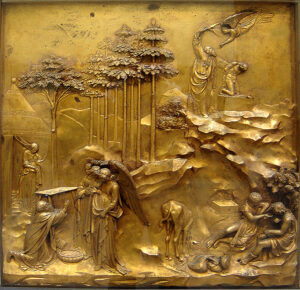 Continued: The Restoration Stela of Tutankhamun: This round-topped stela is an important historical document commemorating the end of the religious iconoclasm of Akhenaten and the official return to the traditional Egyptian religious system under king Tutankhamen. In the lunette (the rounded upper section of the stela), Tutankhamen is shown offering papyrus and lotus flowers (left) and a vase (right) to the gods Amun-Re and Mut. He wears the blue crown on the left and the nemes headdress on the right. Amun-Re wears the double plumed crown and holds an ankh sign in one hand and the was-scepter in the other. Mut wears the double crown and has her arm around Amun-Re. The winged solar disk stretches above the figures. Found in the northeast corner of the Hypostyle Hall, thought to originally have stood in front of the 3rd Pylon.... Made from red granite with traces of blue paste, later erasures are filled with yellow paste ......
Continued: The Restoration Stela of Tutankhamun: This round-topped stela is an important historical document commemorating the end of the religious iconoclasm of Akhenaten and the official return to the traditional Egyptian religious system under king Tutankhamen. In the lunette (the rounded upper section of the stela), Tutankhamen is shown offering papyrus and lotus flowers (left) and a vase (right) to the gods Amun-Re and Mut. He wears the blue crown on the left and the nemes headdress on the right. Amun-Re wears the double plumed crown and holds an ankh sign in one hand and the was-scepter in the other. Mut wears the double crown and has her arm around Amun-Re. The winged solar disk stretches above the figures. Found in the northeast corner of the Hypostyle Hall, thought to originally have stood in front of the 3rd Pylon.... Made from red granite with traces of blue paste, later erasures are filled with yellow paste ......
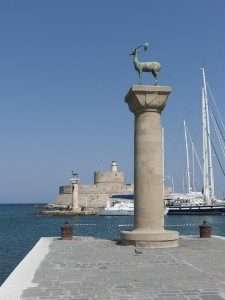
Stag and deer.
The stela’s horizontal lines of text record how the temples of Egypt had fallen into ruin during Akhenaten’s reign and how Tutankhamen had restored them to their former glory....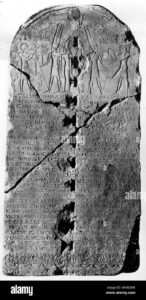 Horemheb usurped the stela, but did not change all of Tutankhamen’s cartouches. The perforations down the center are from a later attempt to split the stela in half.
Horemheb usurped the stela, but did not change all of Tutankhamen’s cartouches. The perforations down the center are from a later attempt to split the stela in half.
Beneath the text, a line of rekhyt birds (symbol of the common people) adore the cartouches of Horemheb (originally those of Tutankhamen).
Does the traditional interpretation of the lapwing bird-symbols found in temples, tombs and on statuary, require a fresh look ? Known as the `Rekhyt’, and recognized by their curved head feather, twisted wings and legs, and human arms extended in what appears to be prayer, they have been described as `the common people’, the subjects of the King of Egypt. However, they are usually accompanied by the 5-pointed star-symbol, which has multiple meanings, most of an esoteric nature, but which, in the Rekhyts’ case has been used to indicate the verbs, `to adore or praise’. They are also shown sitting on the neb-basket (usually reserved for deities and religious symbols), but used to read, `all the people adore’ (the King).
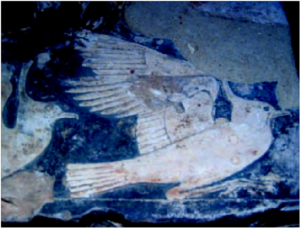
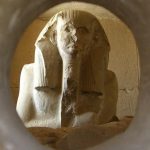 The lapwing (Vanellus vanellus), has, for a period of over three thousand years, been abundantly represented in both Egyptian art and hieroglyphs. The lapwing can be identified by its characteristic short pointed bill, rounded head, long squared tail and especially by the long crest on its head. To the Egyptians the bird was referred to as rekhyt. They were often depicted in Egyptian art in papyrus marshes, perching on their nests. It is generally accepted that the rekhyt people are to be identified as the lowest class of society in ancient Egypt and have been called “subjects”, “common people”, “plebeians” or “mankind”. However, other scholars have suggested that the rekhyt people were actually foreigners who had settled in Egypt.
The lapwing (Vanellus vanellus), has, for a period of over three thousand years, been abundantly represented in both Egyptian art and hieroglyphs. The lapwing can be identified by its characteristic short pointed bill, rounded head, long squared tail and especially by the long crest on its head. To the Egyptians the bird was referred to as rekhyt. They were often depicted in Egyptian art in papyrus marshes, perching on their nests. It is generally accepted that the rekhyt people are to be identified as the lowest class of society in ancient Egypt and have been called “subjects”, “common people”, “plebeians” or “mankind”. However, other scholars have suggested that the rekhyt people were actually foreigners who had settled in Egypt.

Since the lapwing belong to the migratory birds that overwintered in Lower Egypt (Qebehu), a connection was made between the appearance of the Ba birds and the birds from Qebehu. The mention of food has parallels to the Bas in the island of flames in the 56th scene of the Book of Gates, where herbs/vegetables (semu) are also given as food. The home of the lapwing was described as "coming from the distant (cooling) waters (of the sky)". A literal translation of the mythological terms used is not possible. 'Eleven'?
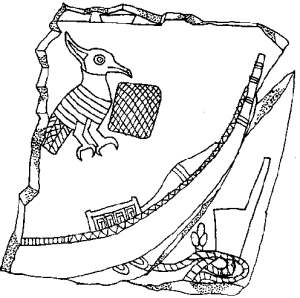
Bound Rekhyt with cage (Lapwing Palette)
The lapwing first made an appearance in Egyptian art during the Protodynastic Period. The bird is depicted on the deck of a boat, on a fragment of slate palette known as the “Plover Palette”, which is housed in the Egyptian Museum in Cairo. From the same period comes the limestone ceremonial mace-head of “king” Scorpion, on which a series of standards with lapwing birds hanging from their necks are depicted. This scene has been interpreted by many scholars as depicting Scorpion’s victories over the people of the Delta, who are depicted as the rekhyt people. However, the scene could also depict the sovereign’s control over all the people of Egypt. The earliest depiction of the rekhyt bird during the Old Kingdom comes from the statue base of the pharaoh Djoser. This base, which is on display in the Egyptian Museum in Cairo, depicts three rekhyt birds, each with their wings intertwined, under the feet of the pharaoh {'footstool'?}. As well as the three rekhyt birds there is also a depiction of the “nine bows”, which were a symbol used to denote the enemies of Egypt; thus the rekhyt people in this instance are closely linked with Egypt’s enemies, a theme that remains until the end of pharaonic history. Depictions of the rekhyt birds with their wings intertwined in an act of sub- mission, were frequent in Egyptian art.....
'Prisoner'?

The Bronze Sphinx of Thutmose III, showing Pharaoh reclining on the Nine Bows. The front of the statuette uses the lapwing Rekhyt bird to say: "all the people give praise", using the hieroglyphs, nb, for all, the lapwing, for the people, and the star, for praising; (this is a rebus). Djed pillars of "Dominion" are on the side. "Under one's feet?" In 'profile' or 'face on'? Above or below?

Birds 'foot' for a 'navel'? lion cloth? Under ''ones belt''? Try ''Running the fields'' or ''Sed Jubilee'' to enlarge. And/or: The alternative name - for the Lynx constellation {now in disuse} was the Tiger - and with others it was the Little Fox with the Goose." [Page 280]. All as a means...? 'Spots and stripes'?
Alternatively, the nine bows may have had a separate or complementary meaning.[3] In Egyptian hieroglyphs, the word 'Nine Bows' is spelled out as a bow and three sets of three vertical lines. The bow, holding the phonic value "pḏ," means "stretch, (be) wide," and the three sets of lines makes the word plural.[3][4] The number nine was used metaphorically to express totality.[2] Using this more literal translation of the hieroglyphs, the nine bows could also refer to endless, innumerable foreign lands or the totality of foreign lands.[2][3]![]()
Ancient Egyptians believed in dualism or that two cosmic forces, order and chaos, governed the universe. While the nine bows stood in for Ancient Egypt's enemies, it is also possible that they stood in for disorder as well.[5]
Instances of the nine bows appeared as early as the late predynastic period (3200-3000 BCE). Discovered in Hierakonpolis or Nekhen, here the nine bows were carved on the head of a scepter.[5] As time progressed, the use of the nine bows expanded to other mediums of art.
Hitting or missing the 'mark'?
When in statuette and statue form, it is typical for the nine bows to be displayed underneath feet.[6] The iconography is similar to a biblical text such as Psalm 110:1 “… until I make your enemies your footstool,”
Left foot of Orion?

The Dàjìng Gé Pavilion (上海古城墙和大境阁) is a museum and ancient temple of Shanghai, incorporating the last remaining portions of the walls of the Old City of Shanghai. Most of the walls were dismantled in 1912, and today only this portion remains.[1] In 1959 the Dajing Ge Pavilion was listed as a cultural relic and put under municipal protection. It was renovated in 1995, and then opened to the public.

Coming or going?
CONTINUED: Images of the rekhyt birds in the mastabas of the Old Kingdom are quite common. In the majority of cases, the birds are depicted in the marshes, either flying or sitting upon their nests {'basket'}. One relief from an Old Kingdom mastaba that does stand out comes from the Fifth Dynasty mastaba of Nefer at Saqqara. Here the tomb owner is accompanied by his wife or daughter who holds a lotus blossom in one hand, while in the other she clutches a rekhyt bird by its wings. It has been suggested by Partick Houlihan that the rekhyt in this depiction was a pet or plaything. He points out that children often carry their pet birds, the hoopoe being the most common, while accompanying their parents. Occurrences of the rekhyt birds from the Middle Kingdom are rare. with only one relief worthy of comment. The relief, which is on display in the Egyptian Museum in Cairo, depicts two images of Amenemhat I seated on his Sed-festival pavilion. Beneath the pavilion there are seven representations of the rekhyt bird in an act of praising. It is likely that there were originally nine birds depicted, but unfortunately the left side of the relief is missing. Nine in ancient Egypt was a significant number, which appears many times. One creation myth revolves around nine deities, known in Greek as the ennead, while the “nine bows” symbolises the traditional enemies of Egypt.
 Side note: ''The fruit man is created from 'nine' kinds of fruit, the flower woman must have been created from nine kinds of flower.....'Not of father, not of mother, was my blood was my body....nine powers of nine flowers, nine 'powers' in me combined, nine buds of plant and tree. Long and white are my fingers. As the ninth wave of the sea.' In Wales and Ireland primroses are reckoned 'fairy' flowers and in English folk tradition represent 'wantonness' {i.e., 'the primrose path of dalliance' / Hamlet} " [ Extract from a Welsh poem 'Hans Blodeuwedd' pages 41/2 'The White Goddess/ R. Graves].
Side note: ''The fruit man is created from 'nine' kinds of fruit, the flower woman must have been created from nine kinds of flower.....'Not of father, not of mother, was my blood was my body....nine powers of nine flowers, nine 'powers' in me combined, nine buds of plant and tree. Long and white are my fingers. As the ninth wave of the sea.' In Wales and Ireland primroses are reckoned 'fairy' flowers and in English folk tradition represent 'wantonness' {i.e., 'the primrose path of dalliance' / Hamlet} " [ Extract from a Welsh poem 'Hans Blodeuwedd' pages 41/2 'The White Goddess/ R. Graves].
''The number nine can be variously interpreted....'' ['The Magnified Sacred Three' from the book 'The Mystery of Numbers' / A. Schimmel].

Male or 'female'?
From a dalliance {'flowers'} - to something on a 'firmer footing' REPRESENTED with trees - BOTH having to come together {'gathering'/'harvest'?} for something to be ''understood'' {i.e., an action of the mind}. Hence that final sentence - which originally came on line 153 - ''as the ninth wave of the sea''. A process beginning. In the unconscious sense of the word {i.e., ''sea''}. Therefore prior to ''fire''. Recall the origins of the 'blacksmith' . Something beginning at the ''back of the head''. Spirit/soul in relation to the objective process therefore minds eye. In order to understand {'see'} something. {Process/mechanics of}. That something that is relevant to the individual.
And/or: ''153'' in relation to ''net'' and/or ''fish'' {i.e., archetype} - ''fishermen catching fish''.
Fishers of Men?
 Understanding all the above gives the reader clues to the ''Melusine'' aspect within subject material as mentioned by G. Knight. Try part 1.
Understanding all the above gives the reader clues to the ''Melusine'' aspect within subject material as mentioned by G. Knight. Try part 1.
That ''M'' letter again. Magdala?
Molly Malone?
Marie Catherine Colvin?
Side note: Onehundred and fiftythree pages to the book - 'The Secret of the Golden Flower' / T. Cleary.
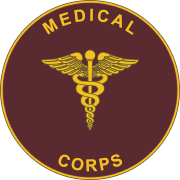 ''Without mRNA, your genetic code would never get used by your body. Proteins would never get made. And your body wouldn’t – actually couldn’t – perform its functions. Messenger ribonucleuc acid, or mRNA for short, plays a vital role in human biology, specifically in a process known as protein synthesis. mRNA is a single-stranded molecule that carries genetic code from DNA in a cell’s nucleus to ribosomes, the cell’s protein-making machinery.'' [Internet].
''Without mRNA, your genetic code would never get used by your body. Proteins would never get made. And your body wouldn’t – actually couldn’t – perform its functions. Messenger ribonucleuc acid, or mRNA for short, plays a vital role in human biology, specifically in a process known as protein synthesis. mRNA is a single-stranded molecule that carries genetic code from DNA in a cell’s nucleus to ribosomes, the cell’s protein-making machinery.'' [Internet].

One of the 'mummies' found belonging to the Cloud People of Peru. Known especially for being white. 'Transforming fingers'? Get into that mindset to determine {find} a treasure.
Continued: A {working?} example: Quote by Rick Lagina of Oak Island fame - looking through a multitude of papers left by an Ex. president of the U.S.A. {F.D.R.} - hoping to find clues as to the purpose {intent?} of its construction: "Sifting through volumes of information to get some little treasure." {Series 4. Episode 11].
Refresher: ''Many years ago the English psychologist, F. W. H. Meyes, suggested that - ''hidden in the depth of our being is a rubbish heap as well as a treasure house''.
The main reason why Mr Gray has been mentioned {several para's back} however is very similar; but now in reverse; as to the example given of Mr I-De-Loyola. If only for this reader. A very plain; no nonsense chap; he explains all in plain English; for this reader at least; even though he had a penchant/fetish for wearing all the available attire. Proud no doubt of his chosen interest.
His life/works depicted in the book ‘The Old Sod’. By A. Richardson. Gives the reader a good idea of such an individuals ‘beliefs’... That they can access what is loosely termed as ‘altered states of awareness’ {'akashic records'?} in order to gain more information about those possible transitions and their ‘environments’. [‘Book Four’. By A. Crowley ]. And/or...

Knotted?
A {working?} example: "The first step along this path is to notice that we live in 'different states of consciousness'. This is not as obvious as it sounds. I am not here referring to moments of happiness in contrast to times of depression, but to a 'state of being' that puts us in touch with a deeper reality. Perhaps you have had moments of experiencing such a liberation that comes from these higher states {eureka moment?} of being. Moments of great joy, or gratitude for being alive, or while standing before a scene of beauty. Moments when our awareness is lifted beyond the knots of normal living...These are higher states of consciousness that opens onto new horizons of understanding and wisdom." ['Wisdom of the 4th Way']. Try ''knots'' and/or ''horizon'' etc. to see same principles in a broader {horizon?} context, i.e.,within the subject material AS A WHOLE _ "since the written word came into common use."
Try ''knot'' for {as?} an example {experience?} of that ''higher state of being''.
Refresher: King Aha - the very first of Egypt. Predates all others. Coincidence or a meaningful one?
''Upon the shoulders of giants''?
 Side note: Practical/working example: ''Hello everyone. Hope you are all well. You may be asking yourself while you are watching this: 'Why is Callie so happy and smiling? How can she be so in the cold freezing Artic. Should'nt she be cold and miserable? Well i have a secret - its K. G. Sparkle'. I have a sister who is amazing and hilarious. Those are magic words....whenever she hears them she laughs hysterically for a good twenty minutes. So if i think of K.G. Sparkle i hear her laugh - and that makes me so happy. So if i ever get down i just sprinkle a little K.G. Sparkle on it and it becomes all good." {Callie/'Alone'/2020}.
Side note: Practical/working example: ''Hello everyone. Hope you are all well. You may be asking yourself while you are watching this: 'Why is Callie so happy and smiling? How can she be so in the cold freezing Artic. Should'nt she be cold and miserable? Well i have a secret - its K. G. Sparkle'. I have a sister who is amazing and hilarious. Those are magic words....whenever she hears them she laughs hysterically for a good twenty minutes. So if i think of K.G. Sparkle i hear her laugh - and that makes me so happy. So if i ever get down i just sprinkle a little K.G. Sparkle on it and it becomes all good." {Callie/'Alone'/2020}.

Quin-tessence.

'The star of ones being is rising'. Which one?
Continued: Abstract definition of same {principle?} - as seen from a different perspective {i.e.,'angle'}: "When we enter the underworld we are not exploring our separated selves or our subconscious, but moving our spirit or true core and source of energy and consciousness into the planetary mind"........"Thus we gain access to those regions defined as unconscious by modern psychology but these are both thresholds and matrices for further changes of awareness and the effects of the underworld initiation do not come exclusively from either an individual or a collective unconscious. To put this another way, the energies liberated by earth light ['divine' bit link] resonate through the so called unconscious, which can give them either individual of collective pattern and form."[i.e., archetypes]. Chapter three 'Power Within the Land'. R. J. Stewart. [Words in brackets, this readers].

Starfish?
From a different pespective {something new learned}: ''Air itself needs to breath, to renew its vitality. The air of caves and caverns that is not renewed is no longer vitalizing....The true source of life is the absolute material vacuum - the 'void' - which is pure energy. The temple of Luxor teaches us that after...." [Page 26 'The Egyptian Miracle' / R. A. Schwaller de Lubicz].
Try ''void''.
A practical example: ''I hate emptiness''. Eric Cantona ['Rise of the Premier League' / 13.2.21].
Understanding this subjects overall framework gives an understanding to those 'implications'. More importantly that same understanding that can be got from objectivity and research, gives the same result.
'On Having No Head: Zen and the Rediscovery of the Obvious' / D. E. Harding.
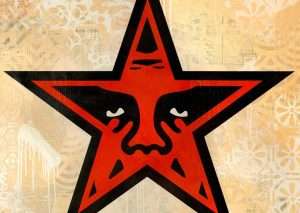 And/or..." A fundamental approach here is to consider these as a spectrum of perspectives, each useful at a particular step, until a new vantage point {key} is gained and a new perspective gives a view to new horizons." [Extract from the book 'The Magister' ].
And/or..." A fundamental approach here is to consider these as a spectrum of perspectives, each useful at a particular step, until a new vantage point {key} is gained and a new perspective gives a view to new horizons." [Extract from the book 'The Magister' ].
Question. Breathing easier?
A working example {i.e.,a work in progress}..."Typical lodge meetings consist of enacting a series of short plays that contain a moral message and encourage personal insight and understanding. All of this is contained in a complicated story involving the building of Solomon's Temple...I soon came to realize that there was a considerable difference between my understanding, based on what i had been taught at school and through religious teachings, and what had apparently happened based on historical records. In particular, it is what has been left out, deliberately or otherwise, that distorts the imagery. It is what we are not told that colours our perceptions. When one is aware of the intervening facts, a new angle {key} on events is presented." Try ''method''.
'Angle' in relation to..."At the commencement of the Masonic ceremonies, it is pointed out that Freemasonry is a 'peculiar system of morality, veiled in allegory'. I thought i knew what an allegory was, but i still looked up the word in an Oxford Dictionary to ensure i had a correct interpretation. The answer stated was: ''narrative describing one subject under the guise of another''. " [From the book by K. Gest].
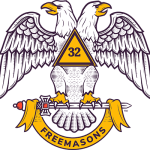
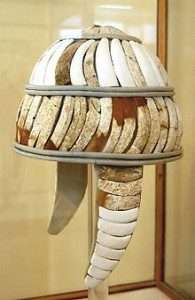 Analogy:..."The popular notion that pirates were nothing more than illiterates who sported peg legs and eye patches is largely an illusion. Some like Francis Drake were high nobles. Others like Henry Morgan and Captain Kidd were highly intelligent sailors and shrewd business people. Just as sophisticated were many members of crew. Doctors, masons, carpenters and experts in most professions." ['Curse of Oak Island' / Dec.2016]. Follow the title to see if you agree or disagree.
Analogy:..."The popular notion that pirates were nothing more than illiterates who sported peg legs and eye patches is largely an illusion. Some like Francis Drake were high nobles. Others like Henry Morgan and Captain Kidd were highly intelligent sailors and shrewd business people. Just as sophisticated were many members of crew. Doctors, masons, carpenters and experts in most professions." ['Curse of Oak Island' / Dec.2016]. Follow the title to see if you agree or disagree.
Side note: There are records of European sailors practicing tattoos since the 16th century, but the word ‘tattoo’ was introduced into European culture in the 18th century. Captain James Cook returned from Tahiti where he had learned the Polynesian word, “tatau,” meaning “to mark,” which was traditionally performed with tools made from boar tusks. The technique typically used by European and American sailors in the early 18th century was to poke a wound on the body and rub gunpowder or soot into it.....
Anchor/Crossed Anchors: This was a marker for a sailor who had crossed the Atlantic, someone who has served at sea or was promoted in the military. Crossed anchors, placed between the forefinger and thumb, indicated a boatswain’s mate. Sometimes the anchor was meant to commemorate a first-time sailor’s initiation into the service.
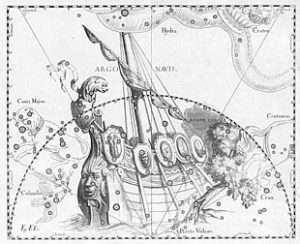

When the north wind blows. Heading south?
Crossed cannons or guns: Meant the sailor had been involved in naval service, sometimes seen in conjunction with specific symbols from the U.S. Navy.
Rope around the wrist: A sailor was a deckhand.
Harpoon: A sailor was a member of a whaling or fishing fleet.
Shellback or King Neptune: This tattoo was earned when sailors crossed the equator.
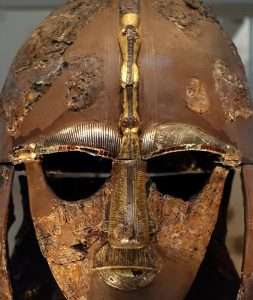
Golden Dragon: Sailors got this when they crossed the International Date Line.

Turtle or tortoise?
Golden Shellback: Reserved for the achievement of crossing the equator and international date line at the same time.
Dragon: Sailors with dragons usually had spent some time in China, while it was later on indicative of service in the Western Pacific Ocean. The dragon also represented good luck and strength.
REFRESHER: "Luck is preparation, waiting for an opportunity." {Brawn: The Impossible Formula 1 Story}.

''To bite ones tongue."
"The 'ordinary man' must make a spiritual start somewhere, sometime. The journey of a thousand miles begins with one step. Lao-tze observed."
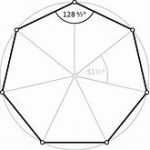
'Three and four' ?
Side note: ''Like 41 and 101, 1001 exceeds the great number and therefore comes to mean 'infinite / numberless'. One may think of Binkir kilise, 1001 churches, in Anatolia, or the best known example, 1001 Nights. This number leads to infinite extension, although attempts have been made to explain it as an allusion to the heptagon and mysterious relations between the prime numbers 7, 11, and 13." [Page 278 'Mystery of Numbers' / A. Schimmel].

Footstool?
Continued: Unlike shamanism they focus on certain words {archetypes?} and concepts [i.e.,'ritual' stuff] in order to 'gain access'{'experience'?} to learn more {lucid dreaming?}. Other books are by Gareth Knight and especially ‘The western way’. By C. and J. Matthews. Plenty of ‘nuggets’ to be found. Most important of all...easy on the mind. No headgear required...but don’t forget that pinch of salt.
Shamans access those same states but by way of certain ‘beverages’, i.e., Ribena plus supplements. Metaphorically speaking of course. Hopefully no Ribena addicts will take it literally. Its part of their culture. What they were taught from birth. Both in their own way are specialist sub-divisions of the overall subject. Both supposedly have different ways of gaining access to those ‘altered states’, [what the author of 'The Ancient Secret of the Flower of Life', calls "different levels of consciousness". First chapter]. Where more information can be ‘found’ {assessed?}.
What is commonly known as the ‘Akashic [or Akasha] records’. Or 'Cayces hall of records'. Symbolic, of a potential...to learn something further. Within what is loosely termed as the ‘etheric’ and/or ‘astral’ levels. [ ‘Astral doorways’. By J.Brennan ]. Or 'Initiation into Hermetics' by F. Bardon]. A good book that explains both those concepts in practical terms, 'The Zelator'. Mentioned within.
All enlarged elsewhere - find them to understand them - BEFORE those first impressions ''tell one'' {dictate?} - something else.
 "Likewise, a union of the opposite sides of our brains - a harmonious fusion of the left, or Logos side, with the right, or Eros side, is an ideal psychological state ['sacred marriage' and/or 'divine couple' link]. And to enter into a shamanic state/trance, shamans too depend on a harmonious union of the two hemispheres of the brain, relying on drugs, repetitive drumming, or some other repetitive stimulus to lull the left side of the brain into a relaxed state, which allows 'Logos' to combine with 'Eros', and which in turn allows the shaman to enter an altered state of consciousness." [Quote [in part] from Amazon customer in relation to the book 'The Grail: Relic of an Ancient Religion']. Emphasis, this readers.
"Likewise, a union of the opposite sides of our brains - a harmonious fusion of the left, or Logos side, with the right, or Eros side, is an ideal psychological state ['sacred marriage' and/or 'divine couple' link]. And to enter into a shamanic state/trance, shamans too depend on a harmonious union of the two hemispheres of the brain, relying on drugs, repetitive drumming, or some other repetitive stimulus to lull the left side of the brain into a relaxed state, which allows 'Logos' to combine with 'Eros', and which in turn allows the shaman to enter an altered state of consciousness." [Quote [in part] from Amazon customer in relation to the book 'The Grail: Relic of an Ancient Religion']. Emphasis, this readers.
The paragraph can be defined as the difference between the ''slow but sure way'' [i.e., study] and the short cut way.
"As steps in man's awakening..."
"...Yet all details could be clearly seen in the 'green' and faintly 'orange' lights that cast the 'purple' shadows of the sphere of Yesod where rules the Lord of the Moon who is king of this land of life. He who is first born of the Great Mother Dana, the ruler of the non-human peoples [i.e., archetypes] of the Etheric and Astral planes of consciousness." Recall what 'moon' and ''astral'' symbolism represents.
Understanding what all cultures imply, by the word ''divine'', regardless of time or place, in relation to that remaining framework [i.e., A/B/C ], allows the reader to make sense of the above - by study, ie.,the READERS Way; not the 'ritual' one. As it does with the following...
"Anamnesis literally means 'recollection'. It is a term used by Plato and by the later commentators on Plato, called the Neo-Platonists. In our context here, it signifies that the work in which we are engaged is to bring about a state which we already exist within - not a new state which must be created out of nothing. We aspire to a pre-existing state, not a new one." [Extract from the book 'The Magister'. Mentioned elsewhere]. For other 'connections' to evaluate the parts within the whole try ''remembering'' / ''forgetting'' as indicated elsewhere, i.e.,try Part 1.
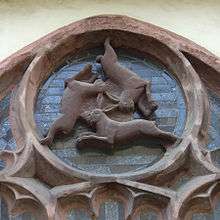
An intuitive leap? Or a leap of faith?
"The Ancient Wisdom is inscribed in glowing letters in the akasha of the heart: let the disciple plunge within and read its message for himself. He will find that the deathless Consciousness within, though separate from all the organs of the sense, yet shines with their powers. In fact the apparent power of the eye to see depends entirely on the power of vision inherent in that Light which sees through the eye but which the eye does not see; which hears through the ear but which the ear does not hear; which thinks through the mind but which the mind does not think. It is the unseen Seer, the unheard Hearer, the unthought Thinker. Other than 'It,' there is no Seer, no hearer, no thinker. It is the Self, the Inner Ruler {'archon'?} the Deathless." [Chapter 13, 'The Yoga of the Bhagavat Gita' ].
What the Dead Sea Scrolls describes as ''The Teacher''. See ''it''?
T.S. Eliot defines it [in part] as a ''timeless moment''. Enlarged elsewhere.
REFRESHER: "....the words 'idea', 'wisdom' and 'vision' ALL originate from the common Indo-European root which means ''to see''. An idea is an insight, an inner flash of illumination that can result in 'wisdom'." [From the book 'Alexandria' / Vol 3 ].
A practical example? {or a work in progress?}..."All that concerned Jesus was that his teachings and his life work should be 'inscribed in heaven' - that is, indelibly, eternally imprinted upon the Akashic Tablets of Life. He never wrote down anything himself. The teachings of the 'Christ' within him were universal, for all time: generalisations on such a cosmic scale that they can be applied anywhere, in any period of earth's history." [From the book by W.T.P].
''...eternally imprinted..." = 'Emerald Tablet'' link?
Question. 'See' anything, i.e.,any eureka moments yet?
REFRESHER: "My name means the one which is peculiar to me alone." [Num.vi.27].
And/or: "The following promise was therefore made, implying that mankind will at a certain future time understand this subject, and be free from the error it involves {i.e.,something other than the obvious}: 'In that day will the Lord be ONE, and his name one." Zech.xiv.9. [Page 90. 'Guide for the Perplexed'].
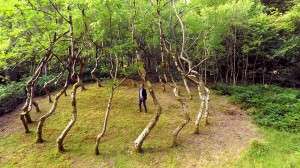
Ash Dome. N/W Wales. 30 foot circle, 22 Ash trees. Spiral in shape. Question. What does the Ash - represent - if only within this subject. Try 'The Lost Books of Merlyn' by D. Monroe to see it from the 'pagan' point of view {mindset?}.

"Behind Will, stands desire."
Synchronistic and/or ''Karma'' example [if only for this reader] - in reference to the creation by Q. S. Lam - what she defines as 'A Soul on a Scroll' - a thirty foot one...."Started the work in 2007, i completed a little every day or when i could. I recall writing the first line of the scroll and groaning at the prospect of beginning the journey, knowing it was going to be a feat of endurance. By the end [2012], my hand was aching and swollen. There was an addictive quality to working on the scroll plunging you into a meditative state and being transported to other 'worlds'."
"Astral plane was an old term for the realm of the visual imagination." [Chapter one, 'Astral Doorways' by J. H. Brennan]. Question 'shadow' or 'anima/s' aspect?
''visual imagination'' relative to an objective exercise - as opposed to a fantasy one. Anything?
"....Gradually, however, the word became identified with Karma or desire, and so was used for the plane of emotional reaction." [Same book].
Breathing easier?
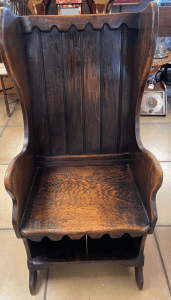
Lambing Chair.
'The Man Who Planted Trees' - animated short film - written by Jean Giono.
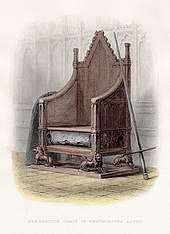 Trees in relation to valleys. Provence relative to the Alps. South / North. A shepherd beginning a 'story' in 19-thirteen. Coincidence or a meaningful one? Try ''mona Lisa'' for a similar 'view'.
Trees in relation to valleys. Provence relative to the Alps. South / North. A shepherd beginning a 'story' in 19-thirteen. Coincidence or a meaningful one? Try ''mona Lisa'' for a similar 'view'.
N.B. ''In Ancient Babylonia the constellation Orion was known as 'The True Shepherd of the Sky'. [From the book by Jane Sellers].
A present day {practical} example: Angus and his mates who look after 1500 acres of farmland and in excess of 1000 breeding yows, in one - if not the most - shit weathered region on earth. One thousand feet up on the fells. There's a saying here: 'You get nine months of winter and three months of bad weather'....'' [' The Lakes with Simon Reeve' / S1 EP1].
A TRUE hero.
Yow – Cumbrian/Northern/Scottish for Ewe. A female sheep, which has given birth.
''Nine is the single number with the HIGHEST value.'' ['Lightening' / BBC2].
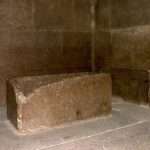
'Y' ?
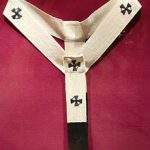 A stole used FROM early Christinan days to represent the lamb that the good shepherd carries on his SHOULDERS. Crosier also used. And the Pallium that can be seen underneath the altar, next to the tomb of St. Peter who was 'martyred' upside down {'corner stone?'} - as a WITNESS to his faith. Made from the pure white wool of a lamb. A Roman word from the Roman Empire {Buskin?}.''
A stole used FROM early Christinan days to represent the lamb that the good shepherd carries on his SHOULDERS. Crosier also used. And the Pallium that can be seen underneath the altar, next to the tomb of St. Peter who was 'martyred' upside down {'corner stone?'} - as a WITNESS to his faith. Made from the pure white wool of a lamb. A Roman word from the Roman Empire {Buskin?}.''
Altar of Witness or Sacrifice?
Isaiah 19:19 to enlarge.
'Nineteen'.
And/or: St. Peter's Roman Catholic Church in West Street, Drogheda is world famous for housing the shrine of St Oliver Plunkett. Plunkett's various body parts were buried in the courtyard at Saint Giles-in-the-Fields, though they were exhumed a couple years later. After spending brief stints in Rome and elsewhere in Ireland, his head arrived in Drogheda in 1929, where it has been ever since.

Eye of the needle? STONE/METAL. Spirit and soul - which and why?

A French Gothic church: within an intricate shrine that resembles both an ornate cage and an oversized golden crown....Oliver Plunkett, a 17th-century Irish martyr, became Ireland’s first new saint in nearly 700 years after being canonized in 1975. In 1997, he was deemed the country’s patron saint for peace and reconciliation....The martyr's head is just visible in the box under the spire.
This photograph shows a view of a Catholic reliquary in a church’s shrine. Encased in an ornate glass box, a gaunt, mummified head sits, its mouth slightly open, eyes closed and sunken in their sockets. While obviously inanimate—its emaciated flesh dried and leathery—it also appears to be resting in repose, its expression lending it an uncannily life-like aura. The case in which it sits is ornamented with gilded columns and trim, its top angled upwards like a church’s roof, an ornate curcifix adorning its peak. At the base of the case, engraved on a gilt banner in elegant script reads the latin words, “Beato Olivero Sacrum.” The photograph’s composition is highly symmetrical, and composed of multiple rectangular, concentrically framing shapes which encase one another, stopping at the saint’s head in the lower center of the image. The head belongs to that of an Irish Catholic Archbishop named Oliver Plunkett who was executed by the English in 1681 by being hanged, drawn and quartered. Plunkett’s remains were exhumed two years later, they were moved to Germany and his head was brought to Rome. Two hundred and forty years after his death, his head was returned to Ireland, where it has rested in it’s reliquary in St. Peter’s Church in the city of Drogheda. Plunkett was canonized as a Catholic saint in 1975.
 This sense of the word spire is attested in English since the 1590s, spir having been used in Middle Low German since the 14th century, a form related to the Old English word spir, meaning a sprout, shoot, or stalk of grass.
This sense of the word spire is attested in English since the 1590s, spir having been used in Middle Low German since the 14th century, a form related to the Old English word spir, meaning a sprout, shoot, or stalk of grass.
Karnak.
Elephant Island.
Side note: "The human mind, seen broadly, is vastly complex, and as a result the actual process of transforming the mind is if anything more complex than the simplified description given in the previous pages. It is to deal with this complexity and describe the progressive development of this process that the tradition uses an image that in its modern form is known as a magnetic center. Boris Mouravieff’s Gnosis describes this magnetic center as a 'cage'. This image seems at first sight unnecessary, because it seems obvious that a valid image would be the formation of a psychological or inner equivalent of the monk or hermit’ cell, into which he withdraws from distraction. This latter image is valid, but there are two good reasons for using the idea of the cage.
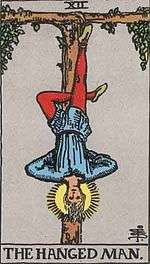
Spiritual gravity: Common factors?

Hercules: stretching from just west of the head of Ophiuchus to Draco, its eastern border on the Milky Way, is one of the oldest sky figures.
First, in a 'cage', nothing can enter or leave, yet you can see out quite clearly. The second reason is that this is, in fact, an ancient image. Saint Neilos the Ascetic (died ca. 4.p. 430) writes: “Now the food of the passions, as we have already stated many times, consists of sense-impressions. They nourish the passions by attacking the soul with a succession of mental fantasies or idols. That is why Moses put screens of lattice-work around the altar in the tabernacle (cf. Exodus 27:4), signifying that if we wish to keep our mind pure like a tabernacle we should do the same. Just as the lattices around the altar prevented anything unclean from entering, so we should weave a mental barrier against the senses by reflecting on the terrors of the coming judgement, and so bar the entry to unclean impressions. The ARK is an image of exactly the same thing....
Refresher: The Greek city of Rhodes emerged victorious from a yearlong siege by the Macedonian noble Demetrius Poliorcetes in 304 b.c. To commemorate their city’s resilience, the Rhodians built a towering bronze statue of the sun god Helios, their patron deity, who also appeared on their coinage. It took the local sculptor Chares 12 years to construct the Colossus of Rhodes, the tallest sculpture in the ancient world at some 120 feet. Chares created the statue using a revolutionary process known as casting in courses, which no other ancient sculptor is known to have employed. In order to cast each course, or level, of the Colossus in place, a huge earthen mound was built, enabling artisans to reach ever higher. They used metal bars to affix the bronze cladding to a stone core.

Magnetic north or south?

A leap across a void? 'Hebrew 'daath'?
CONTINUED: What does this image of the ark represent? The story of Moses and of the escape of the Israelites from the Egyptians has been seen since the earliest days of the church as a parable for the escape of the soul from the “Egypt” of worldly life. When Gregory of Nyssa, in his Life of Moses, writes about that other ark, in which the infant Moses was set adrift, he does so in terms that clearly express the need to establish certain inner disciplines that take the form of an artificial mental center or divinely created center in the mind.....
Whenever life demands that the sober and provident rational thoughts that are the parents of the male child launch their good child on the billows of this life, they make him safe in an ark so that when he is given to the stream he will not be drowned. The ark, constructed out of various boards, would be education in the different disciplines, which holds what it carries above the waves of life. {'Page 282 'A Different Christianity' / R. Amis}.
N.B. Planks found in the 'triangle' within the 'swamp' on Oak Island.

Isle of 'glass'.
Side step: ''Milk also seen with the shepherd walking his lambs represented as the ''Honey and milk of paradise.'' ['Fishermen and Shepherd / Ein Eyov Waterfull and Capernaum: Sea of Galilee / Pilgrimage of Grace / Spring 2022].
Y HVH?

"Three and four"?
And/or: Caer Wydr is Glastonbury, or Inis Gutrin, thought of as the glass castle in which Arthur's soul was housed after death; Glastonbury is also the Isle of Avalon ( Appletrees) to which his dead body was conveyed by Morgan le Faye. The heavy blue chain is the water around the Island of Death. The myth of Cwy, like that of Gwair and Arthur, is no longer extant, but the 'animal with the silver head’ is perhaps the White Roebuck of which we are in search, and the name of the Ox's headband is one of the prime bardic secrets which Gwion in his Cyst JVy'r Beirdd ('Reproof of the Bards') taunts Heinin with not possessing: About a hundred years before Gwion wrote this, the Glastonbury monks had dug up an oak coffin, from sixteen feet underground, which they claimed to be Arthur's, and faked a Gothic inscription on a leaden Caer Wydr (Glass Casde) is a learned pun of Gwion's.

'Opening of the mouth'? Swan Upping?
The town of Glastonbury is said by William of Malmesbury to have been named after its secular founder Glasteing, who came there from the north with his twelve brothers at some time before 600. The Latin equivalent of Gutrin was vitrinus; and the Saxon was glas. This colour word covered any shade between deep blue and light-green—it could be applied equally to Celtic blue enamel and Roman bottleglass. The 'glass' castles of Irish, Manx and Welsh legend are thus seen to be either island shrines, surrounded by glassy-green water, or star-prisons islanded in the dark-blue night sky; but in mediaeval legend they were made of glass, and their connexion with death and with the Moon-goddess has been preserved in the popular superstition that it is unlucky to see the Moon through glass....
Side note: "Luck is preparation, waiting for an opportunity." {Brawn: The Impossible Formula 1 Story}.
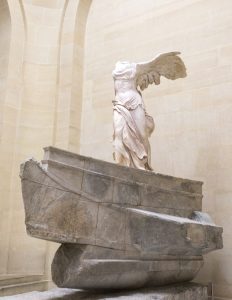
Winged Victory of Samothrace {head and armless: "remain a mystery"}, also known as Nike of Samothrace. Left leg in movement towards prow of ship. Possibly made in Rhodes. Marble ship made from twentythree blocks.
AND/OR: According to legend when Alexander died, he was embalmed in honey . Dressed in his military outfit, then encased in a golden coffin. Which was later replaced with glass. Sealed in a stone sarcophagus which could have belonged to the last native pharaoh of Egypt Nectanebo II {'thirtieth'}. His temple complex at Saqqara was lined on the approach {similar to Karnak-Luxor} with an avenue of human headed Sphinx's {not rams} - the entrance to which was surrounded with a semi-circular ring of Greek philosophers - some standing, some sitting. {Blowing Up History : Lost Tomb of Alexander / S10 EP10}.
During the reign of Nectanebo II, Egyptian artists developed a specific style that left a distinctive mark on the reliefs of the Ptolemaic Kingdom.[6] Like his indirect predecessor Nectanebo I, Nectanebo II showed enthusiasm for many of the cults of the gods within ancient Egyptian religion, and more than a hundred Egyptian sites bear evidence of his attention.[7]

Happy or sad?
Nectanebo is derived from the Greek form of his name, Nectanebо̄s (Νεκτανεβώς, or Νεκτανεβός in later sources). His Egyptian name was Nḫt-ḥr-Ḥbt (Nakht-hor-hebyt),[10] which means "victorious is Horus of Hebyt".[11] Although convention in English assigns identical names to him and his grandfather, Nectanebo I, the latter was in fact called Nectanebis (Νεκτάνεβις).[12]
"No sacrifice, no victory." {{'Transformers'}. All starts off with the Well of All Sparks {cube}.
Cubit?
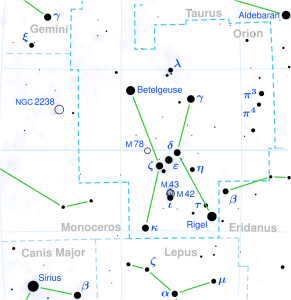
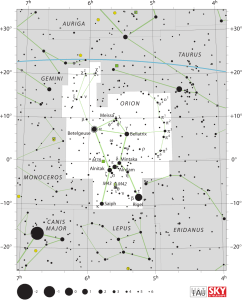
Her given name derives from Latin as the feminine form of the noun "warrior".
And/or: Victory in Europe Day is the day celebrating the formal acceptance by the Allies of World War II of Nazi Germany's unconditional surrender of its armed forces on Tuesday, 8 May 1945; it marked the official surrender of all German military operations. Most former Soviet countries, and some others, celebrate on 9 May, as Germany's unconditional surrender entered into force at 23:01 on 8 May Central European Summer Time; this corresponded with 00:01 on 9 May in Moscow Time. Several countries observe public holidays on the day each year, also called Victory Over Fascism Day, Liberation Day, or Victory Day. In the UK, it is often abbreviated to VE Day, a term which existed as early as September 1944,[1] in anticipation of victory.....
Bellatrix is the third-brightest star and a candidate binary star in the constellation of Orion, positioned 5° WEST of the red supergiant Betelgeuse (Alpha Orionis). It has the Bayer designation γ Orionis, which is Latinized to Gamma Orionis. With a slightly variable magnitude of around 1.6, it is typically the 25th-brightest star in the night sky. According to parallax measurements by the Hipparcos spacecraft, Bellatrix is located at a distance of 250±10 light-years.
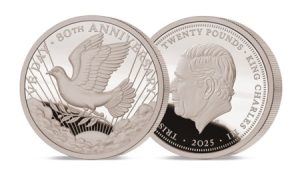
Magdala?
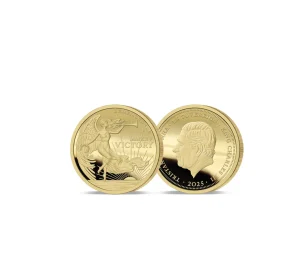
New one eighth sovereign gold coin showing the figure of VICTORY. The FIRST time 'Victory' ever shown on a gold one eighth sovereign. Only 3999 of these 22 carat gold coins have been produced. Which means one in every 7000 households may own one. A permanent reminder of remembrance." Trumpet? Torc? A dance or a 'leap'?
And/or: The NINE coins, struck in in solid 22 carat “Victory Gold” (a gold comprised of 22 carats of pure gold and two carats of pure palladium) are being issued to coincide with the 80th anniversary of VE Day on May 8 this year. This blend of metals provides the coins with a whiter hue than the normal yellow gold of Sovereign coins. The evocative imagery on the reverse side of the coins shows, on the smaller coins, a dove of peace clasping an olive branch with the legend “VE Day 80th Anniversary”. The larger coins have a more detailed version of this design with the addition of clouds and rays of sunlight in the shape of a “V for Victory” in the background. The obverse side features a portrait of His Majesty King Charles III.
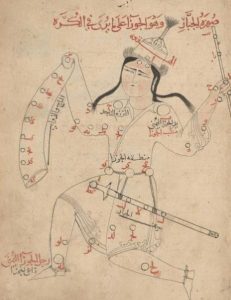
An illustration of Orion (horizontally reversed) in al-Sufi's Book of Fixed Stars. Betelgeuze is annotated as Yad al-Jauzā ("Hand of Orion"), one of the proposed etymological origins of its modern name, and also as Mankib al Jauzā' ("Shoulder of Orion").
'Twentytwo?
'Eight'?
'Seven'?
And/or: 2025 marks the 80th anniversaries of VE Day (Victory in Europe Day) on 8 May and VJ Day (Victory over Japan Day) on 15 August. It is an opportunity for the nation to come together to honour and pay tribute to the Second World War generation from across the UK and Commonwealth, through a series of national and local events and activities.
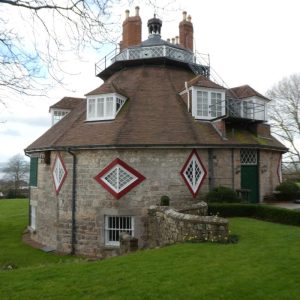 Continued: Perhaps the most ancient wren tradition is quoted by Pausanias in his Description of Greece: he says that Triptolemus, the Fleusinian counterpart of Egyptian Osiris, was an Argive priest of mysteries named Trochilus who fled from Argos to Attica when Agenor seized the city. Trochilus means 'wren' and it also means 'of the wheel', presumably because the wren is hunted when the wheel of the year has gone full circle. The connexion of the wren with the wheel was retained until recently in Somersetshire. Swainson records in his Birds (1885): 'It is customary on Twelfth Day to carry about a wren, termed the King, enclosed in a box with glass windows, surmounted by a wheel from which are appended various coloured ribbands.'
Continued: Perhaps the most ancient wren tradition is quoted by Pausanias in his Description of Greece: he says that Triptolemus, the Fleusinian counterpart of Egyptian Osiris, was an Argive priest of mysteries named Trochilus who fled from Argos to Attica when Agenor seized the city. Trochilus means 'wren' and it also means 'of the wheel', presumably because the wren is hunted when the wheel of the year has gone full circle. The connexion of the wren with the wheel was retained until recently in Somersetshire. Swainson records in his Birds (1885): 'It is customary on Twelfth Day to carry about a wren, termed the King, enclosed in a box with glass windows, surmounted by a wheel from which are appended various coloured ribbands.'
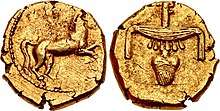
Egyptian gold stater of Nectanebo II. The design on the reverse consists of Egyptian hieroglyphs meaning "good gold": pectoral necklace (nebu, "gold") crossing horizontally over a windpipe and heart (nefer, "good").[20][21]
The Wren is the most common bird in the UK,
N/W 'tip' of Europe.
Europa?
 In the Snow White story a jealous stepmother, the elder aspect of the Goddess, tries to murder the young princess. First she is taken off into the woods to be killed, but the huntsman brings back the lung and liver of a young wild boar instead; and so, according to one account, a doe was substituted for Iphigeneia at Aulis. Then the stepmother, who darkens her face to show that she is the Death-goddess, uses a constrictive girdle, a poisoned comb and, finally, a poisoned apple; and Snow White is laid as if dead in a glass coffin on top of a wooded hill; but presently is rescued by the prince. The seven dwarfs, her attendants, workers in precious metals who save her from the first attempts on her life and recall the Telchins, stand perhaps for the seven sacred trees of the grove, or the seven heavenly bodies.
In the Snow White story a jealous stepmother, the elder aspect of the Goddess, tries to murder the young princess. First she is taken off into the woods to be killed, but the huntsman brings back the lung and liver of a young wild boar instead; and so, according to one account, a doe was substituted for Iphigeneia at Aulis. Then the stepmother, who darkens her face to show that she is the Death-goddess, uses a constrictive girdle, a poisoned comb and, finally, a poisoned apple; and Snow White is laid as if dead in a glass coffin on top of a wooded hill; but presently is rescued by the prince. The seven dwarfs, her attendants, workers in precious metals who save her from the first attempts on her life and recall the Telchins, stand perhaps for the seven sacred trees of the grove, or the seven heavenly bodies.  The glass coffin is the familiar glass-castle where heroes go to be entertained by the Goddess of Life-in-Death, and the comb, glass, girdle and apple which figure in the story are her well-known properties; the owl, raven and dove, who mourn for her, are her sacred birds. These deaths are therefore mock-deaths only—for the Goddess is plainly immortal—and are staged, perhaps during the period of intercalated days or hours at the end of the sacred saeculum, with the sacrifice of a young pig or doe; but then the annual drama is resumed, with the amorous prince chafing, as usual, at the ascetic restrictions of the Hawthorn, but free to do as he pleases in the Oak-month, the month of the hedge-rose, when his bride consents to open her half-closed eyes and smile. ['The White Goddess' / R. Graves].
The glass coffin is the familiar glass-castle where heroes go to be entertained by the Goddess of Life-in-Death, and the comb, glass, girdle and apple which figure in the story are her well-known properties; the owl, raven and dove, who mourn for her, are her sacred birds. These deaths are therefore mock-deaths only—for the Goddess is plainly immortal—and are staged, perhaps during the period of intercalated days or hours at the end of the sacred saeculum, with the sacrifice of a young pig or doe; but then the annual drama is resumed, with the amorous prince chafing, as usual, at the ascetic restrictions of the Hawthorn, but free to do as he pleases in the Oak-month, the month of the hedge-rose, when his bride consents to open her half-closed eyes and smile. ['The White Goddess' / R. Graves].

'Spirit' or 'Soul'? Male or female feet?
Side note: "Not only was Shiloh a promise and a person—our mighty Savior, but it was also a place. When it was built, it was located a little northeast of the center of Ephraim. It is mentioned thirtytwo times in the Old Testament.....

These chairs were generally believed to be used by farmers whilst waiting in draughty barns for sheep to lamb, and also to keep sickly lambs under the seat to keep them warm.
In 12th-11th century BC, the Israelites built the Tabernacle and the Ark of the Covenant rested in the city of Shiloh. Here, it rested for three centuries where the tribes of Israel would visit for feasts or peace offerings. From the time Israel entered the land until the time of the prophet Samuel, the Ark of the Covenant remained in the Tabernacle at Shiloh. This was also the central location where the land was divided up into the 12 sections for the 12 tribes (found in Joshua 18). And this was the background for Hannah when she visited the tabernacle to pour out her heart to God, begging Him for a child—whom God gave her Samuel (1 Samuel 1:1-28; 3:21).
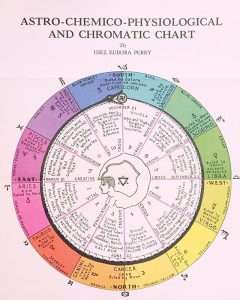
Head/Feet = Aries/Pisces?
When we first meet Hannah, we know she’s barren and wept bitterly for a child. So much so, the Priest Eli thinks she’s drunk. But God hears her prayers and helps her birth one of the greatest men in the Bible, Samuel.
She takes her son back to the tabernacle once he’s weaned because she promised to dedicate his life to God." ['Crosswalk.com'].
"Ephraim is a position apparently of some importance, since the position of Baal-hazor (probably = Tell `Asur) where Abraham's sheep-farm was located, is determined by the relation to it (2 Samuel 13:23). That it lay North of Jerusalem seems to be indicated in 2 Samuel 13:34. It may be identical with the Ephraim of Eusebius, Onomasticon, 20 Roman miles North of Jerusalem, and therefore to be sought somewhere in the neighbourhood of Sinjil and el-Lubban. 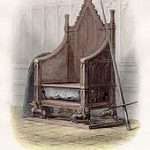 Connected with this may have been the name Aphaerema, a district in Samaria mentioned in 1 Maccabees 11:34; Ant, XIII, iv, 9.
Connected with this may have been the name Aphaerema, a district in Samaria mentioned in 1 Maccabees 11:34; Ant, XIII, iv, 9.
"The meaning of the word "Shiloh" is unclear. Sometimes, it is translated as a Messianic title, which means He Whose It Is[3] or as Pacific, Pacificator or Tranquility and refers to the Samaritan Pentateuch.[4] Regardless, the name of Shiloh the town is derived from שלה and may be translated as Tranquility Town."
New Zealand?
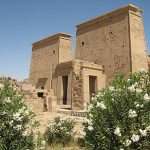
''H'' ?
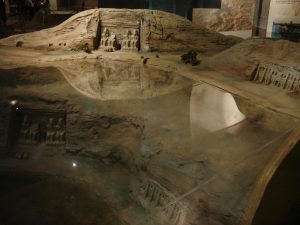
Above/below the water line at Abu Simbel.
From a different perspective: ''What happened next was a physical and unexpected manifestation of the goddess energy {synchronicity?}. I found myself in Egypt on a boat in the middle of the Nile, my period having arrived ten days early....I wasn't the only one. Everywhere the story was the same. Some five days early others seven and one who after several years without having any, having reached the age of sixtyfour - began the cycle again. The common factor it would seem was Philae. We asked for a cleansing and we got it.'' [Page 299/300 'Dreams of Isis: A Womans Spiritual Sojourn' / N. Ellis].
N.B. The total of just one Bank of England note and coin in circulation comes to 88 pounds and 88 pence.'' ['The One Percent Club' / 2023].
''Costly'' to enlarge.
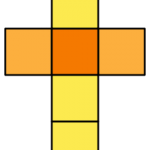
'Six'?
Side note: ''The volume in cubic centimeters of a cube whose edes are FOUR centimeters long is sixtyfour.'' ['The Chase' / 2018].
 A different perspective: {synchronistic?}..."Hovenweep is vast. I moved back and forth over the land, searching and ''feeling'' for the right place for this most important ceremony to be located. Finally, as i walked over a certain area, all the mountains and the ancient nearby Anasazi canyon seemed to come into alignment. Just off to the south, only a few feet away, was an Anasazi ruin that commanded primal importance long ago because it was on the highest point. I knew in my heart that this was the right place. As i looked around, a large rock ''spoke to me'' to be the central stone, and i placed it on the ground in what would become the very center of the medicine wheel. Four more living stones were found to mark the four directions. With this basic setup, the wheel ended up being about 'thirtyfive' feet in diameter..." ['Serpent of Light Beyond 2012'. Mentioned elsewhere].
A different perspective: {synchronistic?}..."Hovenweep is vast. I moved back and forth over the land, searching and ''feeling'' for the right place for this most important ceremony to be located. Finally, as i walked over a certain area, all the mountains and the ancient nearby Anasazi canyon seemed to come into alignment. Just off to the south, only a few feet away, was an Anasazi ruin that commanded primal importance long ago because it was on the highest point. I knew in my heart that this was the right place. As i looked around, a large rock ''spoke to me'' to be the central stone, and i placed it on the ground in what would become the very center of the medicine wheel. Four more living stones were found to mark the four directions. With this basic setup, the wheel ended up being about 'thirtyfive' feet in diameter..." ['Serpent of Light Beyond 2012'. Mentioned elsewhere].
Question. What's the difference between the 'X' and the cross symbol. The author of the above book defines it by way of ''a gift in understanding''. Enlarged elsewhere. Clue. Link to the song - 'Amazing Grace'
"Then Devlin spoke, and what he said gave goosebumps to those who were near enough to hear him. For he said that the medicine wheel {with his index finger he drew an imaginary circle on his t-shirt} has a cross in it {north-south and east-west}. And the problem was that some people were doing ceremony ''almost right.'' But instead of having energy in the form of a cross, he said, they had it in the form of an 'X'. He indicated the imaginary X inside the imaginary medicine wheel on his shirt and said, ''The X leads to the dark side.'' {And/or 'shadow' aspect?}. This was the exact same image given in my vision on the bus before we sang the Anasazi children on their way to freedom ['grace' link}.'' Emphasis, this readers.
The {story?} has to be read to understand the 'predicament' of the Anasazi children and parents in understanding why 'grace' {i.e., a true intent of mind; intent of purpose etc i.e.,by way of - as ONE example - as in the above example ''a ritual ceremony''} has, in relation, to the norm. Try ''bosom'' for its universal link.
Analogy. Different time - different place: "With the 19th century resurgence of interest in Celtic mythology, the Tor became associated with Gwyn ap Nudd, the first Lord of the Otherworld (Annwn). The Tor came to be represented as an entrance to Annwn or to Avalon. The Tor is supposedly a gateway into "The Land Of The Dead (Avalon)." Enlarged elsewhere.
S/W = ''dark side'' ?

It was the 'wall' that made him. Will it be the wall that breaks him?

Odysseus to enlarge.
A change of pace {analogy?}..."Moses made such a wall for himself when he said to the Israelites: 'Watch yourselfs, so that you do not try to follow them after they have been destroyed before you' {Deut. 12:30. LXX}. For if someone does not watch his mind attentively, he will find that, after he has cut down the passions, the images of past fantasies begin to emerge again like young shoots. If he constantly allows these images to force there way into his intellect and does not bar their entry {'flaming swords' at the 'boundaries' of Eden?} - the passions will once more establish themselves within him; despite his previous victory, he will have to struggle against them again.

In front or behind?
For, after being tamed and taught to graze like cattle, the passions can become savage once more through our negligence and regain the ferocity of wild beasts. It is to prevent this that Scripture says: 'Do not try to follow them after they have been destroyed before you'; that is, we must not allow our soul to form the habit of taking pleasure in fantasies of this kind, and so relapse into its previous condition." ['The Philokalia' / translated by G.E.H. Palmer etc]. Try ''cattle'' to broaden ones view {horizon?}.
Understanding ''cattle'' symbolism gives further clues to such places as Napta Playa and/or The Orkney Islands, i.e., from a N/E - S/W standpoint {and/or 'start/end' point?}.

Hestia: Guardian of the hearth. N/W?
Side note: The Serapeum of Saqqara {N/W of the Step Pyramid} - was the ancient Egyptian burial place for sacred bulls of the Apis cult at Memphis. It was believed that the bulls were incarnations of the god Ptah, which would become immortal after death as Osiris-Apis, a name which evolved to Serapis (Σέραπις) in the Hellenistic period, and Userhapi (ⲟⲩⲥⲉⲣϩⲁⲡⲓ) in Coptic. It is one of the animal catacombs in the Saqqara necropolis, which also contains the burial vaults of the mother cows of the Apis, the Iseum.[2]
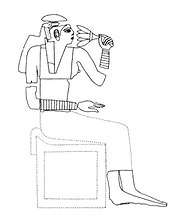
Wife / Mother / Grandmother of the Old Kingdom pharaohs. 'Twentyseven' to enlarge.
An Iseum is a "Hearth of the Goddess" where Fellowship members may draw strength, love and inspiration. An Iseum may provide spiritual offerings, seasonal rites, and overall fellowship. Each Iseum has its own magic, its own Divinity, and is dedicated to a Goddess (or a Goddess and a God). An Iseum may consist of one, or many members and its members may practice any other personal religion or path.
Each Iseum has its own unique purpose inspired by the overseeing Deity or Deities. Some objectives include (but are not limited to): performing healing work, celebrating the seasons of the year, environmental conservation, honoring of a particular pantheon, shamanic work, performing Fellowship ritual, studying cultural heritage, animal welfare, and exploring various spiritual subjects. The overseeing Deity motivates and provides each Founder with the individual Iseum intention. This purpose is free to change and evolve.
'Expand'.
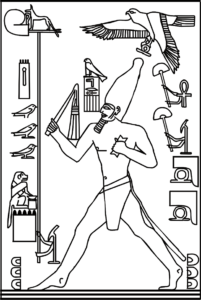
Djoser Heb-Sed {jubilee}. Every 30 years. In the moat surrounding the Step Pyramid complex was found a harpoon made of cedar. Fresh or salt water?
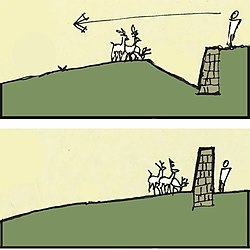
Comparison of a ha-ha (top) and a regular wall (bottom). Both walls prevent access, but one does not block the view looking outward. Hadrian's Wall?
CONTINUED: ''...made such a wall for himself..." = the 'HA HA' lawn? Landscape equivalent? Recall one of the meanings behind the name Apollo.
"Psychology and esotericism set out to explore the darkness outside of our knowledge, whether it be dwelling in the 'unconscious' or the 'astral', the mundus imaginalis, {Corbin} or the dark side {i.e.,shadow self?} of the Tree of Life {anima?}." [Extract from the book 'The Magister'. Emphasis, this readers].
"...5 and 7, the sacred numbers; they rest in the 12...for 12 was a very large circle of meanings and activities. It can be seen first of all as the product of 3 x 4, which makes it a combination in which both the material and spiritual are contained, and secondly as the sum of the two meaningful numbers 5 and 7; the sacred numbers: They rest in the 12 - the closed circle..."
"Thirty is a number connected with order and justice. In ancient Rome, a man had to reach the age of thirty to become a Tribune; and according to Biblical traditions, both Moses and Jesus began their public preaching [teaching?] at that age. The Old Testament book of Judges..." [Both 'pieces' of information from 'Mystery of Numbers'. Parenthesis, this readers. Mentioned elsewhere].
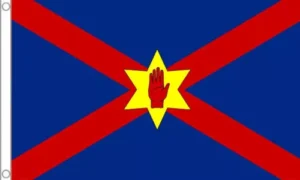
"Another interesting symbol, which later became a prime emblem of Northern Ireland, is the red hand....A myth descibes a race in which the first to reach land would win the throne {'House'} of Ulster. A certain prince called O'Neil was losing the race but cut off his hand and threw it to the shore, ensuring his hand touched land first. {Page 143 'Scota: Egyptian Queen of the Scots' / R. Ellis].
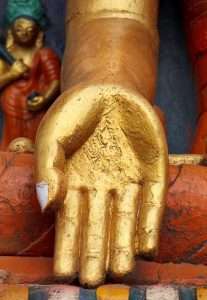
Buddha's hand. 'Fire' in the palm of the hand? or Temple? Firm foundations?
A working example: According to the myth as recounted at Heliopolis, Atum, the Self-Creator, was alone in the Nun, the cosmic ocean, at the time of the original creative impulse. Because of its role in the creative act (see p. 9), Atum’s hand was divinized as ‘the hand of Atum which gave birth to Shu and Tefnut’. Unnamed at first, it was later shown in the form of two female divinities, lusaas, mistress of the’sky, and Nebet-Hetepet, mistress of the sky, sovereign of the gods. These two were assimilated in their turn to Hathor, the sky, the cosmic milieu, as well as to Mut, . the feminine principle and counterpart of the Theban Amun. In a bas-relief in the Temple of Medinet Habu at Thebes, King Ramses III receives the royal emblem from Atum and is followed by Sechat, divinity of writing, who inscribes numerous re- newals and Jubilees for him.
'Thirty'.
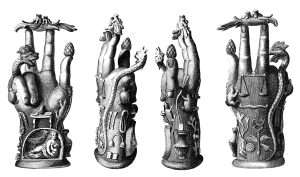
The hand of Sabazios. Thumb = pinecone? AND/OR: Coin flipping {using the thumb} was known to the Romans as navia aut caput ("ship or head"), as some coins had a ship on one side and the head of the emperor on the other.[1] In England, this was referred to as cross and pile.[1][2] fate one way or the other depending on each individual.
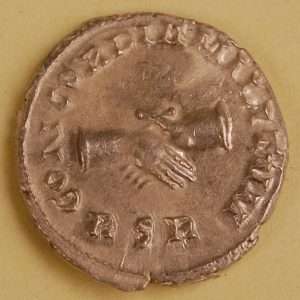
Reverse of a Carausius silver denarius from the Hoard, showing two clasped hands (symbolising the unity of the ruler and the army), alongside the abbreviation 'RSR'. This alludes to a line from Virgil's Eclogues - Redeunt Saturnia Regna or "The Golden Ages have returned".
It was probably conceived with 27 stanzas, numbered from 1 to 9, then from 10 to 90 in tens, then from 100 to 900 in hundreds; only 21 have been preserved. The first word of each is a sort of pun on the number concerned. Thus, stanzas 10 and 100 (1 is missing) are concerned with the Creation, the First Time: Stanza 10: ‘Thebes, more exact than any other city; whose water and earth date from the first time. … “
Karnac-Luxor i.e., middle ground.
Ishon.
Stanza 100: ‘He who began the be-becoming the first time. Amun who became at the beginning, whose mysterious emergence is unknown. No Neter had come before him who could reveal his form. His mother who made his name does not exist. A father who could say, “I engendered him” does not exist. It was he who hatched his own egg. ....... Amun is assimilated by turns to Atum with whom he forms but a single body, to Ré as the ‘Gold which is in Heliopolis’, to Ta-Tenenn (Ptah), the primordial hill which emerged from the Nun. ........
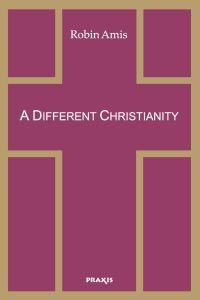 Stanza 30 has a curious and unexpected play on the words ‘thirty’ and ‘harpoon’, which are written in exactly the same way. A passage of the Pyramid Texts (1212) describes this weapon thus: ‘the harpoon [thirty] . . . whose handle resembles the [celestial] waters and whose barbs are the thunderbolts of Re'. In the hymn it is by virtue of this weapon, the harpoon, that the solar barque masters storm, thunder and the elements, a power also accorded to the 'hand of Atum' in certain 'magical' texts. {Pages 78-9 'Egyptian Mysteries' / L. Lamy}.
Stanza 30 has a curious and unexpected play on the words ‘thirty’ and ‘harpoon’, which are written in exactly the same way. A passage of the Pyramid Texts (1212) describes this weapon thus: ‘the harpoon [thirty] . . . whose handle resembles the [celestial] waters and whose barbs are the thunderbolts of Re'. In the hymn it is by virtue of this weapon, the harpoon, that the solar barque masters storm, thunder and the elements, a power also accorded to the 'hand of Atum' in certain 'magical' texts. {Pages 78-9 'Egyptian Mysteries' / L. Lamy}.
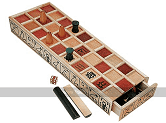
The 'middle' way.
REFRESHER: Twentyseven is interesting, from the mathematical viewpoint, as the third power of the sacred 3, thus, as Plutarch noted, as first odd, or masculine, cube. It also belongs to the lunar numbers, since the moon is at best visible 3 X 9 nights. Like 18, 27 appears frequently in traditions where 9 was of importance. Augustus prepared 3 X 9 sacrifices for the spirits of the netherworld, and in Russian folktales the hero often traverses 3 X 9 countries before reaching his goal. The number is common in the folk traditions of eastern Europe, such as collecting 27 flowers on St. John's night for protection or prognostication. A folksong from Lithuania describes the planting and growing of 3 X 9 rue, again for protective purposes. Twenty-seven is mentioned in ancient Egypt, but in a negative sense. In a board game with THIRTY squares, the twentyseventh, called water, means loss: the player who lands on it loses the game, and it has been speculated that dim memories of the dark moon are reflected in this negative result.

Refresher: "Monarchy of the eye, in relation to the democracy of the nose." Giving directions? Crown?
"Some heads are graced by golden crowns. Golden crowns and jewelled diadems detract from the beautiful tresses of other heads because the tresses of beauties are traps of love, which is the heart's throne. A golden crown is a lifeless thing; the wearer is the heart's beloved." 'Signs of the Unseen' / Jalaluddin Rumi]. 'Thirty' being the 'sign' spoken about.
Analogy: "...above the rose, sealing the vessel,[i.e.,the alchemists ''vessel''] which is a ''soul with no leak at the seams,'' is a crown. The crown - which is a triple crown - signifies Kether, the top of the tree. It bears a single pearl in its apex; 'the pearl of great price'...." Enlarged elsewhere. Try ''leak''.
N.B. 144000 divided by 30 = 4800. Relevant to anything?
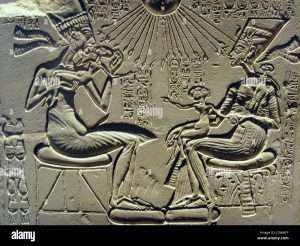
What are EACH sat on?
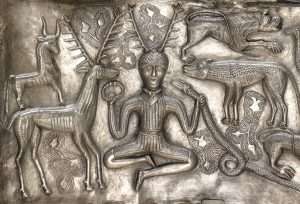
Seated on what?
"The astral plane is also the Kurukshetra, [Bhagavat Gita link] both of humanity as a whole and of the individual human unit. It is the battleground whereon must be found the Waterloo of every aspirant." [Extract taken from the book by A. Bailey]. Link to objectivity over subjectivity. Benefit of - especially in relation to those first impressions.
'Eighteen'?
Coming of age?

A work in progress?
"Even he with the worst of Karma who ceaselessly meditates [and/or studies etc.,this readers input] - on me, quickly loses the effects of his past bad actions. Becoming a high- souled being, he soon attains perennial peace. Know this for certain: the devotee who puts his trust in me, never perishes." [Bhagavad Gita. Quote taken from the book 'Autobiography of a Yogi'. Mentioned elsewhere].
"Everyone has an internal thought process: that silent other self who speaks to you; the one you debate with." [First sentence; first paragraph; first page of the book by Q. S. Lam].
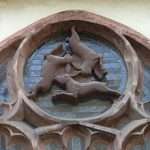 REFRESHER: ''The word 'mystery' comes from the Greek 'myein', to keep silent....The real secret about the mysteries is that they cannot be communicated by one being {'teacher'?} to another: the mystery guardian can only give guidelines and keys to knowledge, not actual knowledge itself, which is revealed to the initiate by personal experience and {or?} revelatory realisation." ['The Wester Way: A Practical Guide to the Western Mystery Tradition'. Chapter 1].
REFRESHER: ''The word 'mystery' comes from the Greek 'myein', to keep silent....The real secret about the mysteries is that they cannot be communicated by one being {'teacher'?} to another: the mystery guardian can only give guidelines and keys to knowledge, not actual knowledge itself, which is revealed to the initiate by personal experience and {or?} revelatory realisation." ['The Wester Way: A Practical Guide to the Western Mystery Tradition'. Chapter 1].
And/or..."You may care to dwell upon the parable which indicates that 'God' is not to be found in the strong wind nor the earthquake, nor in the fire but only within the silence of the still small voice." [From the book 'The Silent Road'. Mentioned elsewhere].
''WATER''?
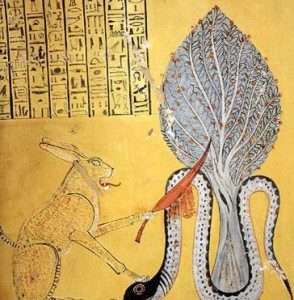
The phrase "cut the head off the snake" is a metaphorical expression that means to eliminate the source of a problem.....'Stop exercise'? Mount Athos to enlarge.
"...In that interior world is the battle ground of the 'gods'. There the gods of love and hate , the daemons of lust, and pride, and anger, the devils of malice, cruelty, and revenge, vanity, envy, and jealousy, may hold high carnival, they may stir up the emotions, and, unless subdued by Reason, they may grow strong enough to dethrone it..." Quote from within the book by F. Hartman. ''Throne'' in relation to the ''Seat of the first occasion". Anything?
Varys? {Game of Thrones}.
"Man becomes king of the brutes only by subduing or taming them...The world is a field of battle, where liberty struggles with inertia by the opposition of active force." Quote taken from the book by E.Levi.
''Tamer of Horses'' ?
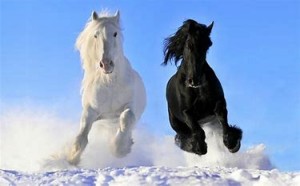 Astronomical equivalent {in part}: "Ares sister, Strife, 'whose fury never tires...who from being first low in stature, grows till she uprears her head to heaven'...is thought to record a notable aspect of Mars during its orbit around the sun, when it changes in brightness as its distance and position relative to the earth vary. When Mars is moving towards maximum brightness, we propose that the planet is represented by Strife, who in Book 4 is first involved in a minor skirmish that erupts into full scale war. Homer uses Ares to restate his almost obsessional concern with the apparent arc of the celestial sphere, and a sequence in Book 5 shows Mars ascending to the dome of the heavens. The sequence begins when Mars rises in the east and Homer says: 'She {Isis} found fierce Ares waiting on the left of the battle. As Mars rises in the skies, Homer says: 'Ares is now lording it in the field', and the planet reaches its highest point at the meridian when 'As a dark cloud in the sky when it comes on to blow after heat, even so did Diomedes see Ares ascend into the broad heavens'." ['Homer's Secret Iliad'].
Astronomical equivalent {in part}: "Ares sister, Strife, 'whose fury never tires...who from being first low in stature, grows till she uprears her head to heaven'...is thought to record a notable aspect of Mars during its orbit around the sun, when it changes in brightness as its distance and position relative to the earth vary. When Mars is moving towards maximum brightness, we propose that the planet is represented by Strife, who in Book 4 is first involved in a minor skirmish that erupts into full scale war. Homer uses Ares to restate his almost obsessional concern with the apparent arc of the celestial sphere, and a sequence in Book 5 shows Mars ascending to the dome of the heavens. The sequence begins when Mars rises in the east and Homer says: 'She {Isis} found fierce Ares waiting on the left of the battle. As Mars rises in the skies, Homer says: 'Ares is now lording it in the field', and the planet reaches its highest point at the meridian when 'As a dark cloud in the sky when it comes on to blow after heat, even so did Diomedes see Ares ascend into the broad heavens'." ['Homer's Secret Iliad'].
Refresher: Eastern equivalent = the purpose behind the epic 'The Bhagavat Gita', i.e.,"The astral plane is also the Kurukshetra, both of humanity as a whole and of the individual human unit. It is the battleground whereon must be found the Waterloo of every aspirant." [Extract taken from the book by A. Bailey]. Link to objectivity over subjectivity. Benefit of - especially in relation to those first impressions.
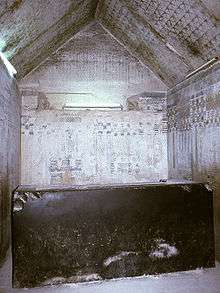
From a different perspective: The Lutheran church {having as its facade the same form as above} is now a boxing gym. "This has just done my head in because everything always comes full circle but never in such a poetic way as this. I feel so joyful, I couldn't have been more delighted by this whole thing." Sue Perkins' episode of Who Do You Think You Are / BBC2.

Happy or sad?
Egyptian equivalent..."The central and most popular character within ancient Egyptian 'religion' of Asar [Osiris] is Heru [Horus] who is an incarnation of his father Asar. Asar is killed by his brother Set who, out of greed and demonic tendency, craves to be the ruler of Egypt. With the help of Djehuti, the god of wisdom, Aset [Isis], the great mother and Hetheru, his consort - Heru prevails in the battle against Set for the rulership of Egypt. Heru's struggle symbolizes the struggle of every human being to regain rulership of the Higher Self and to subdue the lower self. With this understanding, the land of Egypt, is equivalent to the Kingdom/Queendom concept of Christianity." [Extract from the book by S. Ashby].
Greek equivalent = Cronos. Enlarged elsewhere. Try part 1.
Hebrew equivalent... ''he who wrestles with 'god.' Enlarged elsewhere.
Islam equivalent - ''to submit to god.''
Celt equivalent {of Set}? ''Efnissien the jealous brother, stands in the long tradition of 'disruptive elements at the feast'. Central to the story is the Cauldron of Rebirth..." [Page 38 'Mabon and the Mysteries of Britain']. Try ''cauldron''.
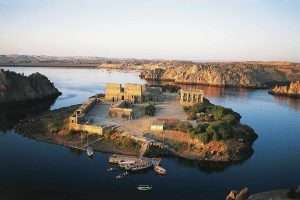
Philae: Sycamore and Thorn. N-S.
A practical [day to day] example could be [i.e.,'micro']..."To conclude the end of my journey; i assess where i am now? It was a meandering and protracted wrestle to cut the umbilical cord and finally set this book free from the brambles of my brain". [Quote from within the book by Q. S. Lam].
".......the passing through the baptism and entering of the stream." [Quote from within the book by A. Bailey].

Higher/lower: which and why?
Understanding the above gets us closer to a ''mind set''. Closer to understanding such 'unknowns' as: "A great picture could be seen on the hill and a tale had to be made up to account for it. The actual tale has no bearing on the original purpose of the figures, but it does tell us how many were there and give some idea of what they seemed to be doing. This may be the clue to how such stories should be treated. The witches associated with 'springs' will perhaps have been goddesses formerly worshipped there. The 'giant', Hiccafrith, was a visible figure with 'wheel' and club. He is still associated with a particular spot because that is where his rites were enacted. It seems evident that there must have been two giants on Plymouth Hoe, not because it is thought that a new one may have been made, but because Geoffrey of Monmouth tells of 'two contestants' in a wrestling match." [Page 64 'Gogmagog: The Buried Gods' / T. Lethbridge].
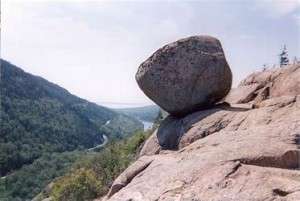 A side step: ".........and the meaning of the Greater joy of seeing is when the faithful sees the truth of 'god' with the secret eye of the heart."..."Man is my secret and I am his secret. That secret is a light from the divine light of god. It is the center of the heart, made out of the finest of matter. It is the soul which knows all the secret truths; it is the secret connection between the created one and his Creator. That secret does not love nor lean towards anything other than 'god." [Chapter 17, 'The Secret of Secrets'].
A side step: ".........and the meaning of the Greater joy of seeing is when the faithful sees the truth of 'god' with the secret eye of the heart."..."Man is my secret and I am his secret. That secret is a light from the divine light of god. It is the center of the heart, made out of the finest of matter. It is the soul which knows all the secret truths; it is the secret connection between the created one and his Creator. That secret does not love nor lean towards anything other than 'god." [Chapter 17, 'The Secret of Secrets'].
Understanding the 'divine bit' [or 'word'] relative to that framework [i.e.,A -C], gives a ''credibility'' a possible one; to those quotes and paragraphs. Can you see it yet?
The real question however, is why? Why go to all this effort?
Side note: "Laurens van der Post reported that shortly before his death, Jung had a dream. In his dream he saw ''high up on a high place'' a boulder in the full sun. Carved into it were the words: 'Take this as a sign of the wholeness you have achieved and the singleness you have become." [Epilogue - 'The Gnostic Jung'].
And/or: ''Albert Einstein's surname when translated into English is - One Stone...'' ['The Chase' / 2018].

A 'rose' that blooms at the center of E/W? Double snake? Neck {S/N?} - in relation to 'shoulders'? {i.e., non-existent}.
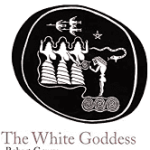
Oblique or erect?
And/or: ''Seven exhortations to the dead, written by Basilides of Alexandria, the city where east and west meet {'crossroads'?}...There is little doubt that Alexandria, rather than the Jewish-Christian sacred city, was his spiritual home.''
Question. Where along the Nile river does it rise above the horizon? {E/W?}.
''...The last entry made by jung in the RED BOOK and bearing the date 1959 - contains among others, his admission that he worked on the Red Book for sixteen years, a period of time far in excess of the one usually assumed.'' [ Pages 44/66/219 'The Gnostic Jung' / S. Hoeller].
Therefore possible symbolic intent?
'16' steps of Tutankhamun?
And/or: ''Red'' in relation to the 'fire' triangle and/or ''Pyr'' of the word Pyramid.
''Red Pond''?
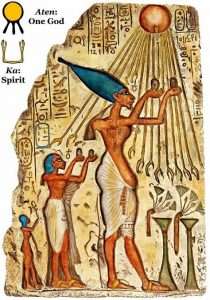
Which ones a ''vision''? Clue. Solomon and Shulamite. Question. How can the Lotus flowers be alive {''blooming''} when roots are exposed? Bulbous headgear?
"The phrase ''the one who meditates'' relates to the soul. Arjuna, the aspiring disciple, resigns the struggle and hands the weapons and reins of government to Krishna, the soul, and is rewarded at last by understanding and by a vision of the divine form [eureka moment link] which veils the 'Son of God' who is himself."
"Clement of Alexandria elucidates the idea that Jesus is the 'son of god' by explaining: 'The Son is the consciousness of the Father.' The 'Father' is the Mystery...the dazzling darkness of UNconscious Consciousness." [From the book by T. Freke and P. Gandy. Emphasis, this readers].
 Analogy of same? "He who begets something which is alive must dive down into the primeval depths in which the forces of 'life' dwell. And when he rises to the surface, there is a gleam of madness in his eyes because in those depths death lives cheek by jowl with life." - "It is obvious that Otto was concerned not with a medical definition of what the Greeks called mania and he and Schelling called ''madness,'' but with a kind of visionary attempt to explain a state in which man's vital powers are enhanced to the utmost, in which consciousness and the unconscious merge as in a breakthrough." [From the book by C. Kerenyi]. Recall the Gilgamesh analogy in Part 1.
Analogy of same? "He who begets something which is alive must dive down into the primeval depths in which the forces of 'life' dwell. And when he rises to the surface, there is a gleam of madness in his eyes because in those depths death lives cheek by jowl with life." - "It is obvious that Otto was concerned not with a medical definition of what the Greeks called mania and he and Schelling called ''madness,'' but with a kind of visionary attempt to explain a state in which man's vital powers are enhanced to the utmost, in which consciousness and the unconscious merge as in a breakthrough." [From the book by C. Kerenyi]. Recall the Gilgamesh analogy in Part 1.
'Victory from the jaws of defeat'.
Gog Magog.

A "created form" - from the 'unconscious'?
Try ''epiphany'' or ''eureka''.
#BINGO!
'Midnight sun'?
Working example: " You sole god without equal! You have created the earth as you desired, quite alone, with people, cattle and all creatures....You are unique when you have risen in all your manifestations as the living Aten, who shines and gleams, distances himself and comes near; you create millions of forms from yourself alone...." [Page 13 'Ancient Egypt' / Jan-Feb 2024].
In the Macro sense of the word: ''Thousands of individuals praying ''cheek to jowl'' at Mecca.'' [Hajj: A Journey Through Mecca / ITV].
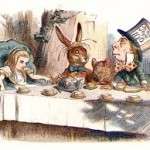
Mad March hare?
And/or: ''Since four is a very 'material' and practical number, it rarely occurs in superstitious customs. An exception is the 4 - leaf clover, which is supposed to bring good luck, probably because it is so rare. Following an old German custom {Celtic?}, on EPIPHANY, girls would plant one bulb each in the four corners of the house, and each bulb would be given a man's name, and the one that sprouted first was believed to point to her future husband.'' ['Mystery of Numbers'].
Side note: "Luck is preparation, waiting for an opportunity." {Brawn: The Impossible Formula 1 Story}.
Continued: The bulb is an archaic term for the medulla oblongata.[1] In modern clinical usage, the word bulbar (as in bulbar palsy) is retained for terms that relate to the medulla oblongata, particularly in reference to medical conditions. The word bulbar can refer to the nerves and tracts connected to the medulla such as the corticobulbar tract, and also by association to those muscles innervated, including those of the tongue, pharynx and larynx.
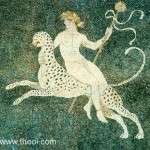
Try ''panther'' and/or ''pine cone''
"In certain cult forms, Dionysos { 'youngest' link } is represented as the god who 'arrives'. Otto, who far more than all other students of the subject saw Dionysos as the ''Coming One, the epiphanic god,'' adds that his 'appearance' is far more urgent, far more compelling than that of any other god. Historical reconstruction makes possible a far more concrete statement. Here we shall attempt to define the types and forms of the epiphanies of Dionysos as accurately as possible. The epiphany of a god was known in Greece not only as 'epiphaneia', but also as 'epidemia' - ''arrival in the land'' {'foreigner'?}...The unpredictable emergence of a new experience, on which a new religion could be based or by which an old one could be enriched, is the form to which, if it were reliably transmitted, a historian of religions would have to give priority. In the connection of the mythological religions, however, reliable knowledge of this form is seldom available. Such an experience must rather be assumed to have occurred BEFORE the emergence of the traditional religion and mythology, before they began, and constitute their foundation." [From the book by C. Kerenyi. All emphasis, this readers]. Think about it, in relation to the books written by W. Burkert and M. Eliade. See Part 1.
''Daughters''?
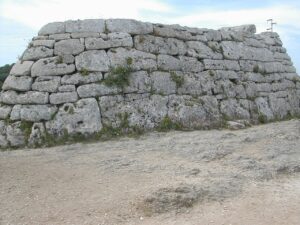
Naveta. Mastaba?
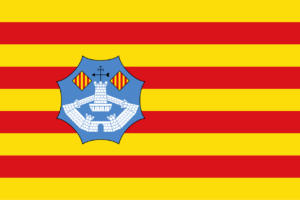
Minorca: Lozenge for eyes?
Zeus {island/cave and/or 'foundation'?} in relation to Dionysos.
'Cave' in relation to..."The Dionysos year is the year of the vineyards and wine cellars. Its events take place on the surface {'horizon' link?} of the earth." [Same book]. Therefore S/W - S/E?
Question. One stage further - relative to an 'understanding' ?
Question 2. Understanding of what?
Defining that 'understanding' gives clues as to Alexanders possible final resting place.
 "The Agnisuryans respond to the sound. The waters ebb and flow. Let the 'magician' guard himself from drowning, at the point where land and water meet. The midway spot, which is neither dry nor wet, must provide the standing place whereon his feet are set. When water, land and air meet there is the place for 'magic' to be wrought {'fire'?}." Anything?
"The Agnisuryans respond to the sound. The waters ebb and flow. Let the 'magician' guard himself from drowning, at the point where land and water meet. The midway spot, which is neither dry nor wet, must provide the standing place whereon his feet are set. When water, land and air meet there is the place for 'magic' to be wrought {'fire'?}." Anything?
"We are thinking at the edge, where the shoreline of sense meets the wild ocean of mystery." [From the book by T. Freke and P. Gandy]. Try ''Lily''.
"The truth is that man gets the fruit of his actions from 'above', and the fruits correspond to the nature of his actions." [Part one, 'Play of Consciousness'. Mentioned elsewhere].
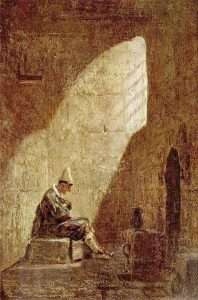
Ash Wednesday by Carl Spitzweg: the end of Carnival.
"Nicholas Tesla, recently described by a historian of science as ''the ultimate visionary crank,'' was a Serbian Croat who became a naturalized American. There he patented some seven hundred inventions including fluorescent lights and the Tesla coil that generates an alternating current. Like Newtons most important breakthroughs, this last one arose out of his belief in an etheric dimension between the mental and physical planes." ['Chapter 23, 'The Secret History of the World']. Question. What exactly is/ are...''altered states''. Find within.
"Astral plane was an old term for the realm of the visual imagination." [Chapter one, 'Astral Doorways' by J. H. Brennan]. Question 'shadow' or 'anima/s' aspect?
"....Gradually, however, the word became identified with Karma or desire, and so was used for the plane of emotional reaction." [Same book].
Understanding the 'divine bit' [i.e.,what it implies] - relative to the remaining 'framework' - makes sense of the above.
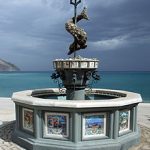
'TRI' = 'triple' analogy. 'DENT' = 'teeth' link. Coincidence or a meaningful one? Something to get ones teeth into?
Remember objectivity. It has a certain logic to it but only when you understand that full framework. It also links in; at least for this reader; with J.Naydlers in depth work. Mentioned elsewhere. Or for a more possible practical example...in order to attempt to understand the same...the ‘dentist’ example given above in relation to Mr Basil Spences ’experience’. Together with Mr Colin Wilsons example of the same, [strangely, again at the dentists. Alien contacts? Or synchronistic link to ''teeth'' symbolism?], In his ’Introduction to the new edition’, [ later part of ] in the book.. ’Beyond the occult’. Together with the most up-to-date example of same. The Chairman of Wigan football club having a "dream" about his club winning the F.A.cup 1-0 [ 2013 ]...Understanding that full framework offers a possible solution. By the way...Wigan won.
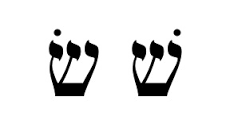
Hebrew Shin. Question. Inverted 'M' ? 'Lower' in relation to 'higher' ? As a means to something? TRY ''M''. Question 2. Agree or disagree?
Another possible example...''I asked my nine year old lad to go find some fossils in the grove of the valley. Within a minute he found a fossil next to a lightening struck tree. As i approached i saw a hominoid clavical [he also noted other bones that he had a PHD on]... As i came closer i put my hand on the wall and then two hominoid teeth fell into my hand''. In relation to the Malopa find in 2008 by Lee Berger [and son]. Same man also identified recent finds in nearby location called ''The Rising Star Cave System''[South Africa] -in 2013- eventually called Homo Naedi [star]. N.B. Don't forget those first impressions - follow through with a second then a third, i.e...
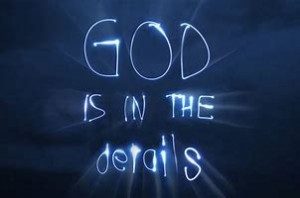 "In 1882 an anonymous book named OAHSPE, A Kosman Bible, was published in New York. It was subsequently revealed in a letter to the editor of 'The Banner of Light'; a Boston periodical; that its author was a dentist named Dr. John Ballou Newbrough and that the book had been written, mostly in the dark, through the agency of automatic writing. Newbrough claimed indeed that the book was written not by himself but through 'some other intelligence' using him as a vehicle. His interest in spiritualism was long standing. When he was a boy his father felt obliged to discourage his clairvoyant leanings...Later on Newbrough discovered that when he sat in circles at seances and calmed his mind, his hands would 'fly off into tantrums' producing messages reading in all directions. So it was that he became interested in researching similar 'spiritual' incidents. After examining over 200 cases, he became convinced that such phenomena was 'angelic' in nature and he himself began to 'crave for the light of heaven'. By this he meant that he wished to become the vehicle for something spiritually profound, rather than mere scribblings and doodles." [Taken from the book by Drury and Skinner]. Similar to the experience of the author 'Mind to Mind'? Found elsewhere.
"In 1882 an anonymous book named OAHSPE, A Kosman Bible, was published in New York. It was subsequently revealed in a letter to the editor of 'The Banner of Light'; a Boston periodical; that its author was a dentist named Dr. John Ballou Newbrough and that the book had been written, mostly in the dark, through the agency of automatic writing. Newbrough claimed indeed that the book was written not by himself but through 'some other intelligence' using him as a vehicle. His interest in spiritualism was long standing. When he was a boy his father felt obliged to discourage his clairvoyant leanings...Later on Newbrough discovered that when he sat in circles at seances and calmed his mind, his hands would 'fly off into tantrums' producing messages reading in all directions. So it was that he became interested in researching similar 'spiritual' incidents. After examining over 200 cases, he became convinced that such phenomena was 'angelic' in nature and he himself began to 'crave for the light of heaven'. By this he meant that he wished to become the vehicle for something spiritually profound, rather than mere scribblings and doodles." [Taken from the book by Drury and Skinner]. Similar to the experience of the author 'Mind to Mind'? Found elsewhere.
Question. Actual 'individual' or archetype? Question 2. Anima or shadow aspect? Question 3. If so, one of those 'experiences' could be classed as top/down; the other bottom/up relative to a learning curve. Which and why?
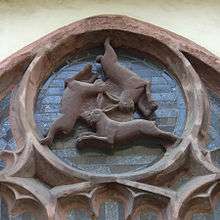 A {working?} example: "At one of the following lectures G. returned to the question of consciousness: 'Neither the psychical nor the physical functions of man can be understood,' he said, 'unless the fact has been grasped that they can both work in different states of consciousness. In all there are 'four' states of consciousness possible to man...The two 'higher' states are inaccessible to him, and although he may have flashes of these states, he is unable to understand them and he judges them from the point of view of those states in which it is usual for him to be'." ['In Search of the Miraculous'. Emphasis/italics, this readers]. Try ''four''.
A {working?} example: "At one of the following lectures G. returned to the question of consciousness: 'Neither the psychical nor the physical functions of man can be understood,' he said, 'unless the fact has been grasped that they can both work in different states of consciousness. In all there are 'four' states of consciousness possible to man...The two 'higher' states are inaccessible to him, and although he may have flashes of these states, he is unable to understand them and he judges them from the point of view of those states in which it is usual for him to be'." ['In Search of the Miraculous'. Emphasis/italics, this readers]. Try ''four''.
'Waters of the Gap'.
Follow the title of the book to 'see' it in its broader {i.e.,inclusive of those higher two?} 'environment'.
As an example: ''Point of view'' in relation to: "But in a state of self consciousness a man can have flashes of objective consciousness and remember them." Same book.

Any paisley?
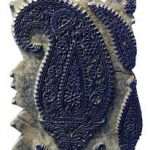 That link to Plato's 'forms' . Represented [in part] in the night sky within those zodiac signs. Symbolic of those different aspects of the individual. Now only twelve. Using 'twelve' with a purpose in mind. All with a destination in mind - by way of - that ''inner'' one. The 'micro' within the 'macro'. Represented by those 'patterns' in the night sky, within that very large cycle. Known in ancient days as the ''Great year.'' All those different aspects within the 'whole.' Each pattern containing both positive and negative distinctions {'conjunction'?}. The Kabbala uses '72' a direct link [number symbolism] to the modern equivalent of what was known as the ''Great Year'' - The Precession of the Equinoxes - [Use 'box' to understand why]. The ''middle way'' being its main symbolic intention. The ''outer'' by way of that ''inner'' one. Representation of.
That link to Plato's 'forms' . Represented [in part] in the night sky within those zodiac signs. Symbolic of those different aspects of the individual. Now only twelve. Using 'twelve' with a purpose in mind. All with a destination in mind - by way of - that ''inner'' one. The 'micro' within the 'macro'. Represented by those 'patterns' in the night sky, within that very large cycle. Known in ancient days as the ''Great year.'' All those different aspects within the 'whole.' Each pattern containing both positive and negative distinctions {'conjunction'?}. The Kabbala uses '72' a direct link [number symbolism] to the modern equivalent of what was known as the ''Great Year'' - The Precession of the Equinoxes - [Use 'box' to understand why]. The ''middle way'' being its main symbolic intention. The ''outer'' by way of that ''inner'' one. Representation of.
144.
"When i began drawing the mandalas - i saw that everything; all the paths i had been following; all the steps i had taken - were leading back to a single point - namely to the mid-point. It became increasingly plain to me that the mandala is the center. It is the exponent of all paths. It is the path to the center, to individuation...I knew that in finding the mandala as an expression of the self, i had attained what was for me, the ultimate. Perhaps someone else knows more, but not me." [C. G. Jung].
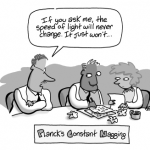 Seen from a different perspective: "So for our ancestors the connection to the night sky would have been incredibly intimate. They looked to the skies to understand their place in creation. And the movement of the stars told them one thing - they were at the center of the universe. Up there is Polaris {North/Pole star}. Its almost aligned exactly with the earths spin axis. As the earth rotates everything moves around that one point. So it looks for ALL THE WORLD as IF the earth is the center of the universe....And that is of course what the ancients believed in for thousands of years - and why not - because its obvious - its wrong. To understand the earths real position in the solar system..." ['Wonders of the Solar System: Order out of Chaos' / B. Cox].
Seen from a different perspective: "So for our ancestors the connection to the night sky would have been incredibly intimate. They looked to the skies to understand their place in creation. And the movement of the stars told them one thing - they were at the center of the universe. Up there is Polaris {North/Pole star}. Its almost aligned exactly with the earths spin axis. As the earth rotates everything moves around that one point. So it looks for ALL THE WORLD as IF the earth is the center of the universe....And that is of course what the ancients believed in for thousands of years - and why not - because its obvious - its wrong. To understand the earths real position in the solar system..." ['Wonders of the Solar System: Order out of Chaos' / B. Cox].
 To TRULY understand what our ancestors in the past and descendants in the present are attempting to define - firstly within themselves and then to others - 'SEE' something other than the obvious, i.e., as one example 'Solar' in relation to 'lunar' - left eye / right eye in relation to the eyes of Horus in order to 'define' something - that inner {center?} of something.
To TRULY understand what our ancestors in the past and descendants in the present are attempting to define - firstly within themselves and then to others - 'SEE' something other than the obvious, i.e., as one example 'Solar' in relation to 'lunar' - left eye / right eye in relation to the eyes of Horus in order to 'define' something - that inner {center?} of something.
Now try ''geocentric''.
Question: ''Does something - 'unbelievable' - become any less of a possibility?
And/or: ''As has been said, Ra is not the sun itself, but rather the solar energy {'spirit'?} which, during the course of its daily cycle, animates all the organic {'soul'?} functions of the human body, one after the other, at each hour of the day and night. It is in this way that we are subject to it.''
Try Sirius....
And/or 3:8 to enlarge.
A working example: {One example}: "Caer Arianrhod is the circumpolar stars, to which souls withdraw between incarnations thus she is identified as a goddess of reincarnation. The Mother aspect { 'Hippo'?} of the triple goddess in Wales, her palace was Caer Arianrhod { Aurora Borealis} - or the secret center of each individuals being." [www.thewhitegoddess.co.uk].
Therefore Sirius' related and by implication the 'Dog Star'...….
"But why the Dog/Roebuck/Lapwing? The author goes on to explain by the objective process that the 'Dog' represents ''Guard the Secret'' / The Roebuck = ''Hide the Secret'' / The Lapwing = ''Disguise the Secret''. All in relation to deciphering the Battle of the Trees. All in relation to:
REFRESHER: ''My thesis is that the language of poetic myth anciently current in the Mediterranean and Northern Europe was a ' magical' language bound up with popular religious ceremonies in honour of the moon goddess, or muse, some of them dating from the Old Stone Age, and that this remains the language of TRUE poetry....'' [ Foreword to the book 'The White Goddess' / R, Graves].
MIND SET?
''In its entire history EIGHT people have only been made Honorary citizens of the U.S.A.''
And/or: ''Brennius and Belinus are generally acknowledged to be the gods Bran and Beli; and Beli in the Welsh Triads is described as the father of Arianrhod {'Silver Wheel'}, the sister of Gwydion and Amathaon. Amathaon evidently entered the 'Battle of the Trees' as champion of his father Beli, Supreme god of Light." [Page 56 'The White Goddess' / R. Graves].
Try the 'Battle of the Trees' to get closer to a MIND SET beyond: "If the story of Cad Goddeu concerns the capture of the national necropolis on Salisbury Plain from its former holders, this is most likely to have happened during either the first or the second Belgic invasion." [Page 56. Same book].

Something 'hidden'?
REFRESHER: "Sirius is sometimes called the 'Sun behind the sun', indicating that while the star we call the Sun is related to our physical center of Self in our Solar Plexus and the expression of our Selves within the physical earth, Sirius represents a more hidden center." ['Red Tree, White Tree'].
''Westward leading still proceding....?

That ''duality'' clause again. Male/female: Unconscious/Conscious. Which and why?

Higher or lower aspect of Self?
Anology: ''In today's psychological language we can understand the Sungod as a symbol for the source of consciousness. At the collective level, he is then the creative spirit of the UNconscious that brought about the evolution of human consciousness; at the personal level he is a symbol for a higher ego or the Self.'' [Page 25 'Knowledge of the Afterlife: The Egyptian Amduat - A Quest for Immortality' / E. Hornung].
A working example: "What the eye is in corporeal things'', says Pico, ''that very thing is the mind in the realm of the spirit.'' So in Leone we find a passage in which the eye is to the microcosm what the sun is to the macrocosm. " [From the chapter entitled 'Speaking in Hieroglyphics' {Page 311} from the book 'Alexandria' Vol 3. D. Fideler].
Think about all the above {minds 'eye'?} in relation to that universal ''bit''.
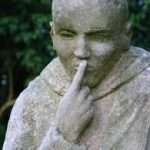 "Every man has a certain feature in his character which is central. It is like an axle round which all his 'false personality' revolves. Every mans personal work must consist in struggling against this chief fault. This explains why there can be no general rules of work and why all systems that attempt to evolve such rules either lead to nothing or cause harm. How can there be general rules? What is useful for one is harmful for another. One man talks to much; he must learn to keep silent. Another man is silent when he aught to talk and he must learn to talk; and so it is always and in everything." [' In Search of the Miraculous'].
"Every man has a certain feature in his character which is central. It is like an axle round which all his 'false personality' revolves. Every mans personal work must consist in struggling against this chief fault. This explains why there can be no general rules of work and why all systems that attempt to evolve such rules either lead to nothing or cause harm. How can there be general rules? What is useful for one is harmful for another. One man talks to much; he must learn to keep silent. Another man is silent when he aught to talk and he must learn to talk; and so it is always and in everything." [' In Search of the Miraculous'].
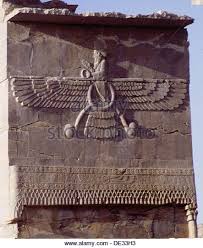
Ahura Mazda. ''Who was this strange figure. What did it mean.'' {Quote by Sam Willis 'Silk Road' 3/3]. Question. Where have you seen something similar before? {i.e.,without the male {shadow?} form / figure}.
And/or: "The Law of Octaves naturally gave rise to many talks in our group, eventually G. warned us against to much theorizing. 'You must understand and feel this law in yourselves', he said, 'only then will you see it outside yourselves'. This of course is true. But the difficulty was not only in this. Merely a ''technical'' understanding of the law of octaves requires a lot of time. And we returned to it continually, sometimes making unexpected discoveries, sometimes again losing what had seemed to us already established. It is now difficult to convey how at different periods now one and now another idea became the center of gravity in our work, attracted the greatest attention, gave rise to most talks. The idea of the law of octaves became it its way a permanent center of gravity. We returned to it on every occasion, we spoke of it and discussed its various aspects at every meeting until we began gradually to think of everything from the point of view of this idea," ['In Search of the Miraculous'. Emphasis, this readers].
Follow the title of the book to 'see' it within its broader context. To 'see' it within and without {center?}.
"The 'ordinary man' must make a spiritual start somewhere, sometime. The journey of a thousand miles begins with one step. Lao-tze observed."
"The word 'spiritual' should be associated with the word 'eyes'. This is a reference to the eyes of the mind or heart. To see is to understand." [From the book by T. Nottingham].
From a different perspective, i.e., ritual stuff..."The student of Jungian psychology will by now have recognized that the table {i.e., King Arthur's round table} is what is known as a 'mandala'. The circle {and/or 'round'} appears to be a universal symbol of wholeness. The grail itself is a symbol of the wholeness for which man is ever searching; its quest is a kind of conferring of the benefits of the Blessed Sacrament in Arthurian and Parsifal legend. Rightly perceived, the Grail romances are a kind of poetic accompaniment to the chivalry of old Christendom of which Logres is an archetype."
 '
'

Serekh of Khufu. Chick?
'Table'' in relation to..."The preliminaries having been performed, the student concentrates upon the Sephirah Tiphareth as subjectively situated in the region of his heart. From this he 'projects' a 'round table' expanding it from a point of light to a diameter of about six inches. The table is then furnished. It is of indigo colour and there are twelve golden lines radiating from the centre dividing the table into the twelve segments of the zodiac. In the centre of the table, standing in a circle, and covered by a transparent veil, is a golden chalice {Ganymede?}, symbol of refreshment. At each place at the table is found a small silver chalice engraved with a zodiac sign. The table having been constructed and furnished is then enlarged in the imagination, big enough to sit at. This is the first exercise of visualization. At this early stage, a golden ray is visualized in the mind's eye, striking down from Tiphareth into the chalice. The subject for meditation, or the problem to be solved, is then brooded upon in the confidence that some esoteric illumination will be received. When the exercise is completed, the table is deliberately diminished, withdrawn into the heart, and a deliberate break made. Notebook and pencil are then set to work." [From the book by A. Duncan]. Together with...
"...Crowley once said that the magician's sole aim was to interpret his own 'magical' record, and after many years, i have come to agree with him." [Extract from the book 'The Magister'].
Remember - before those first impressions dictate something else {especially if you are the 'casual' reader/visitor type} - the common factor between all the above - are ''archetypes'' - regardless of how obtained. But you should by now {unless the 'casual' type} be seeing the relevance and usefulness of the study of the subject as a whole, and not just the parts we are comfortable with. Hence the link to Jung's final sentence...'Perhaps someone knows more, but not me'. Others elsewhere. Try ''mandala'' Part 4.
Side note. The author of 'Galactic Alignment' {enlarged elsewhere} defines those ''centers'' throughout all cultures. - but {if only for this reader} not in its broader view.
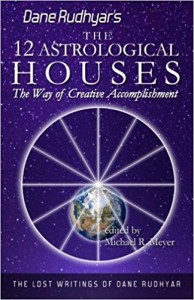 Something closer to the 'mark' could be: "With the 4th house we reach one of the most significant, yet generally one of the least understood sections of modern astrological chart...Astrology still draws a great of its symbolism and meanings from a Ptolemaic worldview; thus it still associates the fourth house with the idea that below the surface of the earth there is nothing but solid substance extending forever in depth...A foundation upon which to build on {'houses'}, and from which to 'raise' crops and extract sub-soil wealth. The fourth house has undoubtedly such a meaning; but as we come not only to know with our brains - but also to feel with the whole of our personality {body and psyche} that the earth is a sphere and that we are living on the curved surface of a globe - the fourth house takes on a much deeper meaning. It takes on a global significance, for it represents not only the productive soil, the foundation for the home and earth into which to dig graves - the ''end'' of all things {death/rebirth link} - above all it carries the meaning of the 'center of the globe'...It represents the 'tap-root' of the human organism; that is the point of deepest sustainment and most secure foundation for anything that rises above the ground. It symbolizes the rootedness of all things." [From the book by Dane Rudhyar].
Something closer to the 'mark' could be: "With the 4th house we reach one of the most significant, yet generally one of the least understood sections of modern astrological chart...Astrology still draws a great of its symbolism and meanings from a Ptolemaic worldview; thus it still associates the fourth house with the idea that below the surface of the earth there is nothing but solid substance extending forever in depth...A foundation upon which to build on {'houses'}, and from which to 'raise' crops and extract sub-soil wealth. The fourth house has undoubtedly such a meaning; but as we come not only to know with our brains - but also to feel with the whole of our personality {body and psyche} that the earth is a sphere and that we are living on the curved surface of a globe - the fourth house takes on a much deeper meaning. It takes on a global significance, for it represents not only the productive soil, the foundation for the home and earth into which to dig graves - the ''end'' of all things {death/rebirth link} - above all it carries the meaning of the 'center of the globe'...It represents the 'tap-root' of the human organism; that is the point of deepest sustainment and most secure foundation for anything that rises above the ground. It symbolizes the rootedness of all things." [From the book by Dane Rudhyar].
Side note: "Alcyone represents in the sky the Atlantid nymph who became the mother of Hyrieus by Poseidon; but, though now the Light of the Pleiades, its mythological origin was by no means considered the most beautiful. Riccioli wrote the word Alcione and Alcinoe, and some early manuscripts have it Altione.
The early Arabs called it Al Jauz, the Walnut; Al Jauzah or Al Wasat, the Central One; and Al Na'ir, the Bright One; -- all of Al Thurayya. The later Al Achsasi added to this list Thaur al Thurayya, which, literally the Bull of the Pleiades, i.e., the Leading One, probably was a current title in his day...Hipparchos has been supposed to allude to it in his Oxus...the Bright One, and the Brightest One, of the Pleiad. Yet, in the face of these epithets, Ptolemy apparently did not mention it in the Syntaxis; while Baily, in his edition of Hyde's....to the 32d star of Taurus, which is described as stella externa minuta vergiliarum, quae est ad lotus boreale, -- our Atlas.
In Babylonia it determined the 4th ecliptic constellation, Temennu, the Foundation Stone."
 Side note: ''The head of Orion correlates to the Sinagna ruins at Walnut Canyon {'valley'?} National Monument together with a few smaller ruins in the immediate region.'' [Page 29 'The Orion Zone: Ancient Star Cities of the American S/W' / G. A. David].
Side note: ''The head of Orion correlates to the Sinagna ruins at Walnut Canyon {'valley'?} National Monument together with a few smaller ruins in the immediate region.'' [Page 29 'The Orion Zone: Ancient Star Cities of the American S/W' / G. A. David].
A hard nut to crack?
Alcyone /ælˈsaɪəniː/,[11] designated η Tauri (Eta Tauri, abbreviated Eta Tau, η Tau), is a star in the constellation of Taurus. Approximately 440 light-years from the Sun, it is the brightest star in the Pleiades open cluster, which is a young cluster, around 100 million years old. There are a number of fainter stars very close to Alcyone, some of which are members of the same cluster.[citation needed]

'M'?
"The Pleiades (/ˈpliː.ədiːz, ˈpleɪ-, ˈplaɪ-/),[7][8] also known as the Seven Sisters, Messier 45, and other names by different cultures, is an asterism and an open star cluster containing middle-aged, hot B-type stars in the north-west of the constellation Taurus. At a distance of about 444 light years, it is among the nearest star clusters to Earth. It is the nearest Messier object to Earth, and is the most obvious cluster to the naked eye in the night sky. It is also observed to house the reflection nebula NGC 1432, an HII region....The name of the Pleiades comes from Ancient Greek: Πλειάδες.[14] It probably derives from plein ("to sail") because of the cluster's importance in delimiting the sailing season in the Mediterranean Sea: "the season of navigation began with their heliacal rising".[15] However, in mythology the name was used for the Pleiades, seven divine sisters, the name supposedly deriving from that of their mother Pleione and effectively meaning "daughters of Pleione".[16] In reality, the name of the star cluster almost certainly came first, and Pleione was invented to explain it....

What are the numbers either side of that GAP at the stern end? Poop deck? Add/subtract or multiply?
 Pleione (Ancient Greek: Πληιόνη or Πλειόνη[1]) was an Oceanid nymph in Greek mythology and mother of the Pleiades. Pleione presided over the multiplication of the flocks, fitting, since the meaning of her name is: "to increase in number"....Pleione was the daughter of Oceanus and Tethys who were the Titan God and Goddess of bodies of water....Pleione was mother to seven daughters, known as the Pleiades. Their names were: Maia, Electra, Taygete, Alcyone, Celaeno, Sterope and Merope.[3] She is often said to be the mother of Calypso with Atlas as well....Among her grandchildren were the god Hermes and the demigod Iasion....
Pleione (Ancient Greek: Πληιόνη or Πλειόνη[1]) was an Oceanid nymph in Greek mythology and mother of the Pleiades. Pleione presided over the multiplication of the flocks, fitting, since the meaning of her name is: "to increase in number"....Pleione was the daughter of Oceanus and Tethys who were the Titan God and Goddess of bodies of water....Pleione was mother to seven daughters, known as the Pleiades. Their names were: Maia, Electra, Taygete, Alcyone, Celaeno, Sterope and Merope.[3] She is often said to be the mother of Calypso with Atlas as well....Among her grandchildren were the god Hermes and the demigod Iasion....
Pleione lived in a southern region of Greece called Arcadia, on a mountain named Mount Kyllini. She married the Titan Atlas and gave birth to the Hyades, Hyas and the Pleiades. She was also the protectress of sailing.
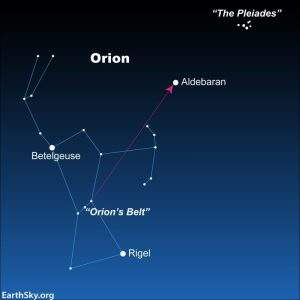
Seventytwo to enlarge.
In some accounts, when Pleione once was travelling through Boeotia with her daughters, Orion who was accompanying her, fell in love with the mother and tried to attack her. She escaped but Orion sought her for seven years and couldn't find her, until at last, Zeus pitying the girls, changed them into stars which still continue to fly from Orion.
- A small genus of (predominantly terrestrial) orchids (Pleione) is named after her."
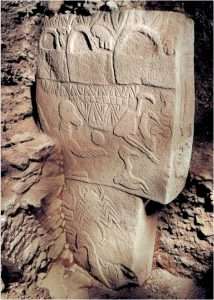
Chicks?
Continued: ''In India it was the junction star of the nakshatras Krittika and Rohint, and individual Amba, the Mother; while Hewitt says that in earlier Hindu literature it was Arundhati, wedded to Vashishtha, the chief of the Seven Sages, as her sisters were to the six other Rishis of Ursa Major; and that every newly married couple worshiped them on first entering their future home {'threshold'?} before they worshiped the pole-star. He thinks this is a symbol of the prehistoric union of the northern and southern tribes of India {Scorpion king?}.
We often see the assertion that our title is in no way connected with Alkuon, the Halcyon, that "symbolic or mystical bird, early identified with the Kingfisher," the ornithological Alcedo or Ceryle; so that although the myth of of the Halcyon Days, that "element and temperate time, the nurse of the beautiful Halcyon," - When birds of calm sit brooding on the charmed wave - is not yet understood. Some of Thompson's conjectures as to its stellar aspect will be found interesting. He writes that the story originally referred to some astronomical phenomenon, probably in connexion with the Pleiades, of which constellation Alcyone is the principal star. In what appears to have been the most vigorous period of ancient astronomy (not later than 2000 B.C., but continuing long afterwards to influence legend and nomenclature) the sun rose at the vernal equinox, in conjunction with the Pleiad, in the sign Taurus {Northern gate?}: the Pleiad is in many languages associated with bird-names ... and I am inclined to take the bird on the bull's back in coins of Eretria, Dicaea, and Thurii for the associated constellation of the Pleiad {recall what is normally seen on the 'lions' back}. ... Suidas definitely asserts that the Pleiades were called Alkuones. At the winter solstice, in the same ancient epoch, the Pleiad culminated at 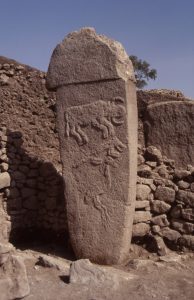 nightfall in mid-heaven. ... This culmination, between three and four months after the heliacal rising of the Pleiad in Autumn, was, I conjecture, symbolized as the nesting of the Halcyon {Southern gate?}. Owing to the antiquity and corruption of the legend, it is imopssible to hazard more than a conjecture; but that the phenomenon was in some form an astronomic one I have no doubt. Madler located in Alcyone the 'center of the universe',{ or a ''centering'' within? } but his theory has been shown to be fiction. As is the doubtful assumption by Miss Clerke that 'it shines to its sister stars with eighty three times the lustre of Sirius in terrestrial skies, while its intrinsic brilliancy, as compared with that of the sun is a 1000 times greater {therefore symbolic of something? That inner something?}....It culminates on the 31st of December {i.e., the 'eve' of something}..." [Page 403-405 {The Pleiades} 'Star Names and their Meanings'].
nightfall in mid-heaven. ... This culmination, between three and four months after the heliacal rising of the Pleiad in Autumn, was, I conjecture, symbolized as the nesting of the Halcyon {Southern gate?}. Owing to the antiquity and corruption of the legend, it is imopssible to hazard more than a conjecture; but that the phenomenon was in some form an astronomic one I have no doubt. Madler located in Alcyone the 'center of the universe',{ or a ''centering'' within? } but his theory has been shown to be fiction. As is the doubtful assumption by Miss Clerke that 'it shines to its sister stars with eighty three times the lustre of Sirius in terrestrial skies, while its intrinsic brilliancy, as compared with that of the sun is a 1000 times greater {therefore symbolic of something? That inner something?}....It culminates on the 31st of December {i.e., the 'eve' of something}..." [Page 403-405 {The Pleiades} 'Star Names and their Meanings'].

'Master' or 'mistress' of the house?
Halcyon days pl (plural only): Period of calm during the winter, when storms do not occur. (idiomatic) A period of calm, usually in the past and often nostalgic.
''Halcyon ultimately derives via Latin alcyōn from Greek alkyṓn “kingfisher.” In ancient myths, the halcyon named a bird, usually identified with the kingfisher, that was said to breed around the time of the winter solstice in a nest floating on the sea, and was believed to have the power to charm the winds and waves.''
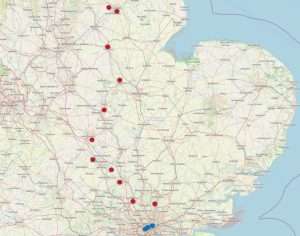
Analogy: ''The map shows the distance covered by the procession taking Eleanor’s body from the site of her death in the small village of Harby at the very top all the way to London. Each of the red circles indicates one of the overnight stopping points which I have covered in previous posts. The procession left Waltham Abbey on Thursday the 14th of December 1290, headed to the location of the future Waltham Cross, where it turned south towards London.''
A working example: ''The Faiyum {Fayum} is a temperate climate, which is why many pharaoh palaces were built there. Moses is most likely to have been brought up here. You can imagine in your minds eye how the Hebrews came up from the Delta to the Faiyum - up and down towards the south from the north - on a daily basis to build for pharaoh; and Moses would be a part of this.'' ['Pilgrimage of Freedom: Lent: 2023' / Magdala / Israel].
''Straight South'' to enlarge.
From a different perspective: West Woods in relation to Stonehenge RELATIVE to the Sarsen stones.
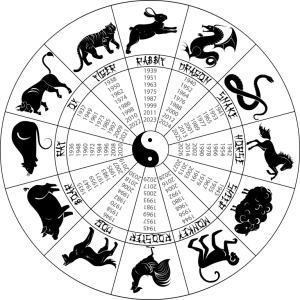 Continued: ''Saint Luke has blessed most of Britain this autumn with his "little summer", the brief period of calm, dry weather which often begins on his feast day on eighteen{th} October....He was the first Christian physician and was venerated by the Catholic Church as the patron saint of physicians and surgeons. Saint Luke is also considered the patron saint of painters because, according to tradition, he had painted images of Mary and of Jesus....Luke the Evangelist, the author of the third gospel account (and the Acts of the Apostles), is symbolized by a winged ox or bull – a figure of sacrifice, service, and strength.''
Continued: ''Saint Luke has blessed most of Britain this autumn with his "little summer", the brief period of calm, dry weather which often begins on his feast day on eighteen{th} October....He was the first Christian physician and was venerated by the Catholic Church as the patron saint of physicians and surgeons. Saint Luke is also considered the patron saint of painters because, according to tradition, he had painted images of Mary and of Jesus....Luke the Evangelist, the author of the third gospel account (and the Acts of the Apostles), is symbolized by a winged ox or bull – a figure of sacrifice, service, and strength.''
Gebel el Silsila?
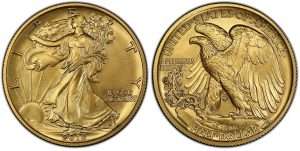
"The derivation of the word 'money' comes from the Latin verb Moneo, which means to warn, to teach, to admonish....The Latin lexicon states that this is traced directly to the noun Men or Mens which means mind. The Latin lexicon states that Moneta {derived from moneo}, the name of the mother of Moses {goddess of learning or of the fine arts - meaning material or substance used in creative thinking}, was also a surname of Juno Moneta, the temple became known as Moneta or mint....The word 'coin' according to Webster's Dictionary is derived from the Latin Cuneus, which means a wedge, peg or shaft - hence ARROW...." [Page 201].
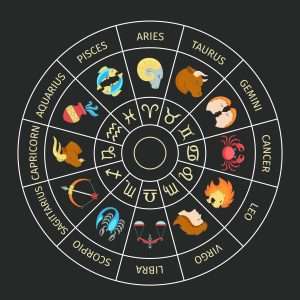
"The Fall equinox is reached when the sun starts on its journey south of the equator. When the days and nights are equal....The fall equinox begins approximately on the 22nd of September {twentytwo}....The name Libra is Latin for pound. Pound is the unit of weight for the scales....October means eight and is the eighth month beginning with March, the spring equinox...The sign Libra represents the seventh day on which the Lord RESTED...The earth itself must regain its balance, which represents the the beginning and end of Labour {labor}." { Page 187/9 {The Zodiac and the Salts of Salvation' / G. Carey + I. Perry}.
''Celebrate the second animal in the Chinese Lunar Calendar with this limited edition Brilliant Uncirculated Year of the Ox Five Pound Coin. Made by the Royal Mint. Although the ox is the second animal in the Chinese Zodiac, this Royal Mint coin is the 8th release in the renowned Shengxiao coin collection. The year of the ox began on the 12th February 2021.''
The Lunar Year of the Rat being the first.
Question. Why a 'five' pound coin. And why the 'Royal' mint?
East is a beginning. West its ending?
''A £5 note contains the poem The Owl and the Pussycat.''
Lunar or Solar animals?

'M'?
"Normandi says that the most perfect hieroglyphs were found here [Saqqara}. She draws in the sand the variations of the owl hieroglyph, which was represented in sound, image, and myth in its original form, down through the hieratic, the demotic, and the Greek, where the now shorthand symbol was just the symbol for the 'M' sound. There is a frieze of djed pillars nearby, said to be the earliest known depiction of Osiris’s backbone symbol....
 Tucked away to the north of the Step Pyramid under a pile of rubble lie the Pyramid Texts of Unas. From the outside, the pyramid seems like an old woman who has lost her shape, but inside riches abound. The oldest spiritual text in the world emerges from the walls in hieroglyphs that are so precise and exquisitely executed that one can see in fine detail every feather on the wing of an owl whose function is simply to represent the consonant 'm'...."
Tucked away to the north of the Step Pyramid under a pile of rubble lie the Pyramid Texts of Unas. From the outside, the pyramid seems like an old woman who has lost her shape, but inside riches abound. The oldest spiritual text in the world emerges from the walls in hieroglyphs that are so precise and exquisitely executed that one can see in fine detail every feather on the wing of an owl whose function is simply to represent the consonant 'm'...."
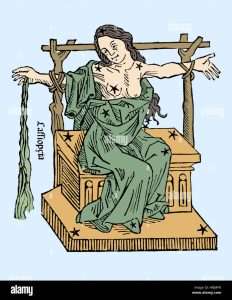 This is where the tomb of Unas is located, the tomb that contains the first inscriptions that would eventually be called the Egyptian Book of the Dead, which was part of the source material Normandi used when she wrote Awakening Osiris, based on the Book of Coming Forth by Day....Saqqara is a vast area of tombs and temples from the earliest dynastic periods. It was the cemetery for Memphis and was sacred to Ptah, the one who opens, so Saqqara is the place of opening and closing....Saqqara is a place of Sekhmet and Ptah, a place of healing and sound." [Pages 238-44 'Invoking the Scribes of Ancient Egypt'].
This is where the tomb of Unas is located, the tomb that contains the first inscriptions that would eventually be called the Egyptian Book of the Dead, which was part of the source material Normandi used when she wrote Awakening Osiris, based on the Book of Coming Forth by Day....Saqqara is a vast area of tombs and temples from the earliest dynastic periods. It was the cemetery for Memphis and was sacred to Ptah, the one who opens, so Saqqara is the place of opening and closing....Saqqara is a place of Sekhmet and Ptah, a place of healing and sound." [Pages 238-44 'Invoking the Scribes of Ancient Egypt'].
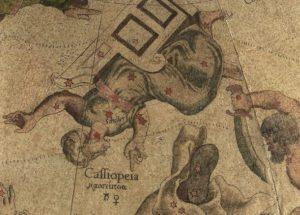
Folded or UNfolded?
More than simply an architect, Imhotep reached the status of a deified man as a physician, scholar, high priest, and chief vizier of the pharaoh. Saqqara, the oldest temple complex in the world, included an expansive festival hall (also built by Imhotep) where the pharaoh reenacted an Osirian mystery and passion play reminiscent of shamanic initiations around the world. During his death-in-life experience, the pharaoh entered a trance, died, communed with his ancestors, and then returned triumphantly to celebrate his long life and wisdom before Egypt’s gathered dignitaries and citizens....Standing on the Saqqara plateau amid the dazzling sunlight reflecting off the sand, one can see a thin line that almost seems to separate the green fields of Egypt's Nile-fed, fertile fields and the emptiness of the Sahara Desert that stretches out of sight to the other side. Here, in Saqqara, one feels poised upon the edge of a great mystery, standing at the juncture between life and death, or perhaps between mortality and eternity.
Side note: It takes 88 days for the planet Mercury to 'journey' around the sun. And/or the piano has 88 'keys'.
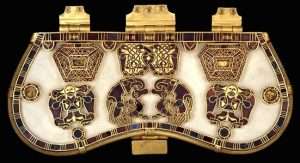
Sutton Hoo purse clasp: Wolfs / eagles and ducks.
Side note: {Something extra}: "Therefore, when the Scorpion no longer stings, but becomes instead the WHITE EAGLE, soaring aloft to the heights (Aries, the cerebrum the Most High), the Higher Mind (Sagittarius, the Archer) will begin to function at last, and will direct (aim his arrow) man to the heights.

The Foundation Stone in the floor of the Dome of the Rock shrine in Jerusalem. The round hole at upper left penetrates to the Well of Souls below. The cage-like structure just beyond the hole covers the stairway entrance to the cave.
He will thus become the INITIATE (Capricorn) — will start out on the path of return — will travel the road which the Higher Mind (Sagittarius-Arrow) points out. It becomes possible then, and then only, to arrive at a certain stage of that journey which coincides with that of our brother, the Freemason. When he has reached the thirteenth DEGREE, he is no longer UNLUCKY. He is then able to create his own pay, and becomes both payer and payee. Thus the NEW MAN, JESUS, is formed within him; he becomes the true Aquarian, ruled by Uranus, the Ancient of Days. The last sign Pisces is the completion of the task. BALANCE (PERFECTION) HAS AT LAST BEEN ATTAINED. A solid-rock foundation has been built ." [Page 195].
Pay-land.
Pay-dirt?
And/or: It has been suggested that the term Stada originated from the Aramaic satat da, meaning 'gone astray', which may have been a reference to the quote saying Miriam had had a paramour or 'lover'. However, since all the other names from the biblical family have had Egyptian origins, perhaps this name does too. If this were the case, then the obvious derivation would be stata, meaning 'archer'....It has long been thought that the name Pandira was derived from the Latin pantera meaning 'panther', and so some historians have sought to associate this title with a Roman legionary of the same name...a cohort of archers. [Page 101 'Cleopatra to Xhrist' / R. Ellis].
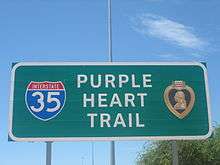
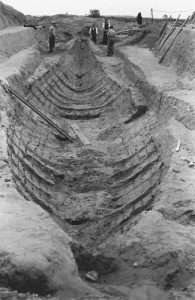
'Eightyeight' feet in length {Sutton Hoo}.
Continued: ''The old St. Pauls Cathedral dated from the 11th century. Took '153' years to complete...Became one of the largest buildings in Europe.''......And/or: ''It took 'thirtyfive' years for Christopher Wren to rebuild - after the 1666 fire...'Star' shaped pattern in the 'middle' of the transcept {'right angle' link}....It has 'eightyeight' spiral steps in the S/W Tower leading up to the Clock Tower.'' ['Mirthy' /July 2022].
'navel'.
Greenwich Mean Time?
When the clock strikes 'twelve'?
Saturn?

Towie Ball. What does 'three' represent in that UNIVERSAL mindset?
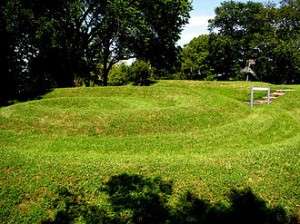
'Why lies the mighty dragon here, let him who knoweth tell. With its head to the land, and its huge tail near the shore of the fair loch Nell?" [page 259. Douglas Monroe]. ''gnashing of teeth''?
CONTINUED: ''The festival of the Tall Ships was held in Londons Greenwich in 2017.'' ['The Chase'].
"Cedar"?
'Longships'?

The striped Hyena. Lebanon's national animal.
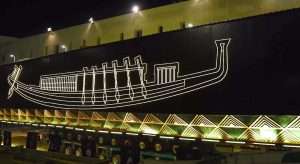
The cedar boat of Khufu. 1224 parts.
''On 5 to 9 September, Greenwich hosted the Tall Ships Regatta. This was the largest Tall Ships event on the Thames in twentyfive years – the Tall Ships last visited the capital in numbers at the end of a Tall Ships race from Hamburg to London in 1989.''
''Greenwich - one of the Royal Boroughs in London is home to the historic Royal Artillery Barracks.'' ['Impossible' / S8 EP28].
Understanding the above gives more info. on Mr Bauvel's hypothesis within the book 'Imhotep the African' i.e., ''The simultaneous sighting of the rising of Sirius together with a bright star in the circumpolar constellation {in this case, Dubhe in the constellation that we call the Big Dipper and the ancient Egyptians called the Bull's Thigh} - originated at Nabta Playa, and was later taken to the Nile."
The most important word is the highlighted one - REGARDLESS of target. Try same word for a mind set.
REFRESHER: "Sirius is sometimes called the 'Sun behind the sun', indicating that while the star we call the Sun is related to our physical center of Self in our Solar Plexus and the expression of our Selves within the physical earth, Sirius represents a more hidden center." ['Red Tree, White Tree'].
 The solar plexus, or celiac plexus, is the name given to the network of nerves near the stomach. “Celiac” comes from the Greek word for “belly” and “plexus” means “braid” in Latin. ... We call this region the solar plexus because the network (braid) of nerves looks like the rays of the sun.
The solar plexus, or celiac plexus, is the name given to the network of nerves near the stomach. “Celiac” comes from the Greek word for “belly” and “plexus” means “braid” in Latin. ... We call this region the solar plexus because the network (braid) of nerves looks like the rays of the sun.
Continued: Try ''center'' and/or ''belly'' and or ''soil'' and/or ''In/Of the horizon'' to get that inner {mind set?} perspective on those universal themes.

'Flat top' ?
Hence: ''Without such an 'experience of center' an individual can never fully demonstrate the fullness of its human stature {'framework' link}. The individual remains a creature of the flat layer of productive soil which contains the surface of the earth - whether he walks upon it like a superior animal or settles in rigid vegetable rootedness to a particular spot called ''my home'' and ''my country''.

Dionysos, the god of zoe, was the only one among the gods who came into the world as an embryo, as a being whose first movement in the womb was the most direct manifestation of life, something which only women can experience. If Ariadne gave birth and her child did not remain in the underworld, this too was a premature birth in a sense. It is certain that in some form of the Cyprian myth her child was not nameless. In myth there is no such thing as pregnancy without birth, and the child never remained unnamed, regardless of whether it was to belong to the mythology of the gods or that of the heroes. In the various tales, Ariadne gave birth to various Dionysian children. She even bore Theseus a child, and this was the extreme humanization— in fact, the utter secularization— of the myth. All these children were distinctly earthly beings, in some way connected with viticulture, as for example was Staphylos, "the grape." None of them was subterranean. A birth in death is something that must be termed "mystic" in the ancient sense, since the Mysteries of Eleusis revolved around such a birth. How much more "mystical" it was if Ariadne was impregnated by Dionysos, as Koronis was by Apollo, and if, like Semele, she gave birth to Dionysos! Such a widening of the "ancient mystic" realm must be taken into consideration. {'Dionysos: Archetypal Image of Indestructible Life' / C. Kerenyi}.
And/or: ''But any seed capable of germinating, growing, and fructifying requires proper soil...he has to ask the mineral kingdom for it...this second work will involve more fatigue and time than the first...the means to separate the metalic mercury; the mother and wet nurse of this seed from which our embryo is to be born....'' [Page 358 'The Dwqellings of the Philosophers'].
Understanding the above - by way of - those universal {concepts?} of the eye {'eyes of Horus'} defines those two types of soil / wheat grain etc., that such authors as E. Reymond attempt to define.
'To Have a Center' / Frithjof Schuon.
Try ''labyrinth''. Purpose of. As a means....?
A {working?} example: "I once asked G. about the ballet which had been mentioned in the papers and referred to in the story 'Glimpses of Truth' and whether this ballet would have the nature of a 'mystery play'...''My ballet is not a mystery''' said G. ''Of course there is a certain hidden meaning beneath the outward form...An important place in the ballet is occupied by certain dances...Imagine that in the study of the movements of the heavenly bodies, let us say the planets of the solar system, a special mechanism is constructed to give a visual representation of the laws of these movements and to remind us of them...Such dances are called sacred dances..." ['In Search of the Miraculous']. Try ''planetary'' and/or ''feast of fools'' - for an alternative point of 'view'. Part 5.
Search out the title of the book to 'see' it in its broader context.
Dance of the Giants. West Wales. {Waun Mawn}. Enlarged throughout.
Static/Dynamic?
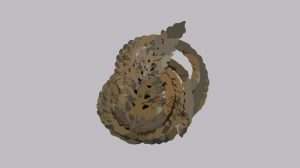
Created from two threads and three spirals. Found on Oak island. A feather in the CAP?
Analogy of same; but now with different KEYS..."There is a third way, and that is the approach to the center - the center of the spiral. That is, to the mid point of the web of creation. Here may be found a very ancient feminine symbol in the spider who spins and designs and builds the web of manifestation. The symbol is also found in Rosicrucian diagrams. She represents in other symbolic formulations the Three Sisters, the Fates, spinning, weaving and cutting the thread of life. Whoever becomes a 'victim' of the Spider is, when bound and eaten by her, transformed. She is also the sleeping Lady Venus who, if awakened, gives birth to a 'King'. Whoever has found her secret door is translated from questing querent into guardian of her Mysteries. In other words, a change of function, or a transformation, takes place." [Chapter 6, 'The Rose Cross and the Goddess: The Quest for the Eternal Feminine Principle ' by G. Knight].
"...a transformation takes place." As it does in any learning curve - REGARDLESS of subject - yes or no? The only difference is; understand what they all imply by the ''divine bit'' makes a further ''connection'' {and/or 'development'?}.
Importance of 'Anima' {female} over 'shadow' {male} - in understanding something?
'Mother of Dragons' ? {Game of Thrones}.
REFRESHER: "Clement of Alexandria ........ 'The Son is the consciousness of the Father.' The 'Father' is the Mystery...the dazzling darkness of UNconscious Consciousness."
'Daughter' of the Father?
Analogy of same: "I cognized the center of the empyrean [eclipse?] as a point of intuitive perception in my heart. Irradiating splendor issued from my nucleus to every part of the universal structure. Blissful 'amrita,' nectar of immortality, pulsating through me with a quicksilver-like fluidity. The creative voice of god i heard resounding as Aum; the vibration of the Cosmic motor."[ Extract from the book 'Autobiography of a Yogi']. Together with...
"The tide draws out, the Sun is eclipsed; our emotional world is withdrawn and our awareness vanishes. There is a period of divine emptiness, a 'holy' moment like no other - the house is now prepared for the master's return." [Extract from the book 'The Magister'. Emphasis this readers]. Try ''house'' and/or ''eclipse'' in attempting to understand something further in order to make it ''intuitive''. Representation of, [i.e.,Aum/logos link].
A practical example: ''I hate emptiness''. Eric Cantona ['Rise of the Premier League' / 13.2.21].

The 'middle' way.

karnac: In the middle of Egypt when Gebel Barkal is 'added'. Divide/Multiply to enlarge.
Analogy {in the abstract sense of the word}: "If one understands that things produced by causal conditions are inherently empty, without needing to be broken down and annihilated, yet they cannot be immediately identified with the conditional and the Middle Way, even if they are taken to be conditional and the Middle Way, all empty into emptiness. Why? Because all things are themselves empty, having no sense of self....Suppose one takes the statement that all things are empty, conditional, and in the middle as meaning the three are interconnected but each has difference. Taking all three as expressions of emptiness, things have no MASTER and are therefore empty; they are unreal definitions and therefore empty; they have no extremes and are therefore empty....
Colossi / Pillars / Obelisks?

Spots and stripes.
Continued: "Taking all three as expressions of conditionality, they all have names and are therefore conditional. Taking all three as expressions of the Middle Way, they refer to the truth of the center, the potential of the center, and the reality of the center, and are therefore all the Middle Way.
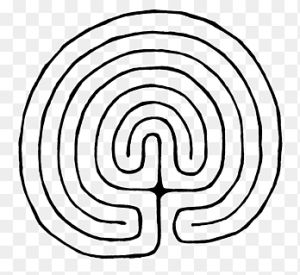
A centring within {a brain or maze}? Troy Town?
This interpretation gets the separate but not the complete. Suppose one takes the statement that all things are empty, conditional, and in the middle as meaning that even though the 'three are one', while one they are three, without mutual interference....Speaking ultimately, the first three are in terms of temporary expedients, the last one in terms of the true...How is it one? In terms of one truth not being false, one path being pure {'spotless'?} - all unimpeded people leaving the cycle of birth and death on one path. How is it great? Its nature is vast and inclusive {that 'bit' i.e., represented with the word quintessence }, it is ridden by great people {of all types} - of great knowledge and resolution; and great lion roar greatly benefits the ordinary and the sage. Therefore it is called great." [Pages 22-38 'Stopping And Seeing' / Translated by T. Cleary. Brackets - this readers].
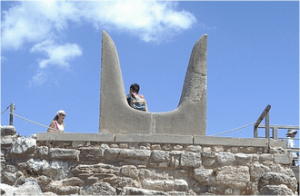
The Pleiades constellation within those horns in the night sky. Spirit or soul? 'Lost' Pleiade as with the lost tribe......as a means...? Only seen in the Northern hemisphere at ''harvest'' time?

'Twin horned'?
Analogy of same?: "...Vestiges of the superstructure {i.e.,the surrounding wall that contained the mastaba of the Egyptian 'Serpent King'} - show evidence of 30 niches and 34 projections {sixtyfour?} spread along its periphery. The structure is built on a wide platform on which, placed at regular intervals, were clay bovine heads with real horns. At the rate of 7 to each niche and 4 on the facade,{eleven?} there must have been a total of 346 of them. The bull played a considerable role in the Old Kingdom, and in the Pyramid Texts the king is often called 'bull of the sky'. But because of its horns the bull was also related to the moon. Thus it is tempting to note that the number of bull heads here approximates to that of 12 lunations {354 days} - and, even more closely, to the number 346.6 which Fred Hoyle, in his examination of Stonehenge, relates to the periodical return of eclipses." [Extract from the book by L. Lamy].
Refresher: "In the later centuries of the Egyptian worship of Osiris it was said that Apis, the Bull, was the spirit of Osiris. This saying gives a direct clew to the evolution of the religious thought."
And/or: ''The marriage of opposites...the theme of alchemy....is the essence of the practice of the law of the Cross. The Cross is the union of two pairs of opposites. Two vertical and two horizontal. The eagle and bull are vertical opposites - towards the heights and the depths, the general and particular. The angel and lion = the other opposites. The transformation of combative courage into moral courage.'' [Page 259 'Meditations on the Tarot'].
Example: Montu - the Egyptian god of war - or more properly - the 'spirit of battle'....'' [Wiki].
Try ''Struggle''.
Spirit/soul / shadow/anima - all as a means...?
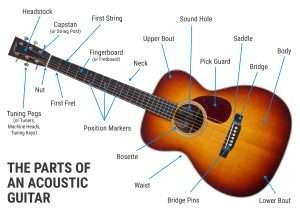 Practical analogy: A musician { Walter Renton: 'The Scotsman'} - who hasn't been able to use his guitar for at least a year - due to the medical condition cryoglobulinemia - circulation to feet and fingers blocked. Some fingers amputated. The guitar hasn't been used since 1986 - 'put in the loft'. Repair shop 'never seen one in a worse condition' : ''What happens to your body, happens to your body, it shouldn't affect your spirit - and i hope that what happened to that guitars body wont affect its spirit either.'' {laughter}. ['The Repair Shop' / BBC2 / Series 7. Episode 28].
Practical analogy: A musician { Walter Renton: 'The Scotsman'} - who hasn't been able to use his guitar for at least a year - due to the medical condition cryoglobulinemia - circulation to feet and fingers blocked. Some fingers amputated. The guitar hasn't been used since 1986 - 'put in the loft'. Repair shop 'never seen one in a worse condition' : ''What happens to your body, happens to your body, it shouldn't affect your spirit - and i hope that what happened to that guitars body wont affect its spirit either.'' {laughter}. ['The Repair Shop' / BBC2 / Series 7. Episode 28].
''The long fretted part of a guitar is known as the neck.'' ['The Chase'].
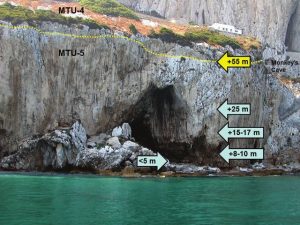
Neanderthal caves in Gilbraltar. Double horned? Others triangular in shape. Purposely done?
Continued: 346 degrees in relation to true North relative to the ''money pit'' as seen from the observer at the 'triangle of stones' {South} on Oak Island. Anything? ['Curse of Oak Island' entitled 'New Sword Play' History Channel/10.2.16]. Question. What does the apex of the 'marsh land triangle' point to? OR maybe more importantly - what lies within it?
A Further headscratch: The fiftysix Aubrey holes together with..."Eleven is the number of 'Magic' and the great work. It is the conjunction and equilibrium of the Pentagram {5} and Hexagram {6}. The name Hoor-Pa-Kraat has eleven letters {Greek = Harpocrates}. Eleven is also the number of letters in ABRAHADABRA, the Great Word of Magick, which represents the formula and accomplishment of the Great work...For it is the true law which unites the Micro with the Macro; the Pentagram and the Hexagram, or the Rose and Cross of Light and Life." [Extract from the book 'The Cosmic Trigger'].
Put those keys together before asking - coincidence or a meaningful one or nothing more than mumbo jumbo?
''Beauty and the Beast'' {bull?}. A 'rose' begins it all.
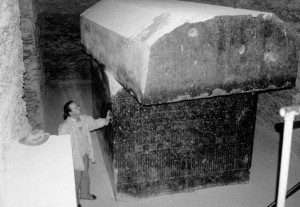
Serapeum. 'Lord of the herd.' South as a start point.
''Dithyrame and Boukoleion connected the feast of the Anthesteria with one ancient stratum of the Dionysos religion. The dithyramb was the accompaniment for the sacrifice of a bull, and correspondingly a bull was the prize given to the leader of a victorious dithyrambic chorus {named ''Bull driver''}. The bull was the representative sacrificial animal offered up as the ship procession entered the city {'New' one? i.e., as one example Qena} - for the Great Dionysia {i.e.,Greek equivalent of higher/lower mysteries}....The bull killing servant of Dionysos is the dithyramb points in the same direction. Another solution to the riddle would be the double Ax....Simonides won the ''bull and tripod'' fiftysix times....The Anthesteria, the oldest Athenian festival of Dionysos, preserved the old style; it was rooted in a broad stratum of Greek culture reaching back to the Mycenaean era." [Pages 316/6 'Dionysos' / C. Kerenyi].
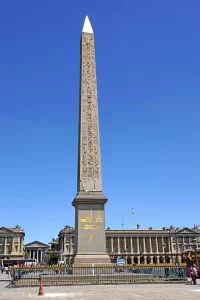
Ayra Stark's sword was named 'needle'. Question. What are needles used for. 'To prick ones conscience' ? REFRESHER: ''The word conscience contains the idea of balance, i.e., knowledge of the facts of the two scales suspended at the extremities of the beam of balance.'' LIBRA? Fire/Spindle wheel to enlarge.
N.B. Fiftysix holes around Stonehenge = ? And/or: Many ''ax heads'' imprints found on the outer sides of the Sarsen stones.
''There is a lot of speculation about the 56 wooden post holes at Stonehenge. All speculation. Nothing has as yet been proven one way or the other.'' [Malcolm Coe / Mirthy / 2022].
N.B. Three massive PINE posts - reaching to the sky - planted close to Stonehenge thousands of years prior to it. Aurochs {ancient bulls} mentioned as to its possible erection. Enlarged elsewhere.
Side note: ''On the backs of scarabs is inscribed the {'hero'?} activities of Amenhotep III as a young man - killed 56 bulls on day 1 and 40 others on day 2. A total of ninetysix'' ['Legends of the Pharaoh's: Amenhotep III - the Great Builder' / S2 EP3].

'Triple' aspect.
Question. Any link to the speculation that is was the ancient gathering {'drivers'?} of ancient Aurochs into the valley where Stonehenge sits - that is one of the primary reasons for the sites location. THREE ancient post holes found nearby MADE for PINE trees that ''reached up to the sky'' {Egyptian 'Bull of the Sky'?}. Together with the convergence of the north and south CHALK lines onto Salisbury Plain.
'Fir' to enlarge.
'Battle of the Trees'. And/or: ''It was Birch and Alder forests that grew up after the retreat of the last glaciation.'' ['World of Stonehenge' / S1 EP1].
Recall what ''limestone'' represents REGARDLESS of culture.
Carapace/tree bark/stone as a means...?
Something UNmanifested becoming ''manifested'? Something unknown becoming known. Representational of.
Quantity/Quality {'inscribe'}.
N.B. Pine Tar Kiln found on Oak Island. ['Curse of Oak Island: Drilling Down' / Series 8].
'ALCHEMICAL STUDIES' / C. G. Jung].
Side note: ''An obelisk (/ˈɒbəlɪsk/; from Ancient Greek: ὀβελίσκος obeliskos;[1][2] diminutive of ὀβελός obelos, "spit, nail, pointed pillar"[3]) is a tall, four[citation needed]-sided, narrow tapering monument which ends in a pyramid-like shape or pyramidion at the top. Originally constructed by Ancient Egyptians and called tekhenu, the Greeks used the Greek term obeliskos to describe them, and this word passed into Latin and ultimately English.[4] Ancient obelisks are monolithic; that is, they consist of a single stone. Most modern obelisks are made of several stones.''
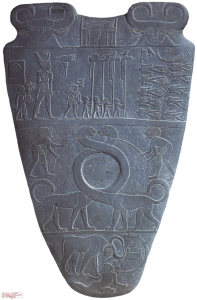
The coming together of something. By way of a ''driven'' desire?
 Continued: A working example: Ancient hieroglyphs found of two Stork birds with the Ibis bird inbetween. The oldest known depiction of the 'horizon' symbol. {Confirmed with an exact symbol by the Scorpion King}... Found at the ancient crossroads of ELKAB - not far from Gebel el-Silsila. A bull motif to the top-right of same hieroglyph: ''Overlooking crossroads....Meant to be seen and to be seen from a distance....The symbol of the bull represented the royal leader {''driver''?}...'' ['Egypt's Unexplained Files' / S1 E6].
Continued: A working example: Ancient hieroglyphs found of two Stork birds with the Ibis bird inbetween. The oldest known depiction of the 'horizon' symbol. {Confirmed with an exact symbol by the Scorpion King}... Found at the ancient crossroads of ELKAB - not far from Gebel el-Silsila. A bull motif to the top-right of same hieroglyph: ''Overlooking crossroads....Meant to be seen and to be seen from a distance....The symbol of the bull represented the royal leader {''driver''?}...'' ['Egypt's Unexplained Files' / S1 E6].
IN/OF THE HORIZON?
Side note: The Omphalos of Delphi is an ancient marble monument that was found at the archaeological site of Delphi, Greece. According to the Ancient Greek myths regarding the founding of the Delphic Oracle, the god Zeus, in his attempt to locate the center of the Earth, launched two eagles from the two ends of the world, and the eagles, starting simultaneously and flying at equal speed, crossed their paths above the area of Delphi, and so was the place where Zeus placed the stone.[1] Since then, Delphi has been considered by Greeks to be the center of the world, the omphalos – "navel of the Earth."
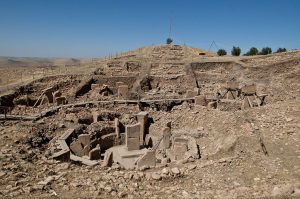
Navel = placenta?
The original stone is held in the museum of Delphi; there is a simplified copy at the site where it was found...The marble-carved stone that constituted the omphalos in the monument with the tripod and the dancers troubled the excavators, because they could not decide if it was the original or a copy from Hellenistic and Roman times.[clarification needed] In the 2nd century AD, Pausanias traveled to the area of Delphi and has provided us with rare evidence through his work. The stone of the omphalos seems to have been decorated in high relief and had an oval shape. It is possible that in ancient times it was covered by a mesh of wool cloth, and it was kept in the adyton (inner sanctum), beside the tripod and the daphne (bay leaves) – the other sacred symbols of the god. As described by Pausanias, within the woolen cloth that was wound around the stone, there were precious stones designed in the shape of a mermaid, while two gilded eagles were fixed on top of it.
Continued: ''Ancient Egyptian religion at its very core is a solar religion.'' {Colleen Darnell}.
Question. What about the 'Moon'? Seen/UNseen? ''Afar''?
''Line of sight'' to enlarge {i.e., that ''duality'' clause}.
Side note: ''When a planet is at its greatest elongation, it appears farthest from the Sun as viewed from Earth, so its apparition is also best at that point.''
''A planet in opposition rises when the Sun sets and sets when the Sun rises. Inferior planets can never be in opposition. Greatest elongation is when an inferior planet is as far from the Sun in angle on the sky as it can be.''
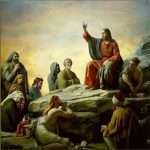
Seated on what?

Stone?
And/or: ''The sleeping lady Venus if awakened can give birth to a king.''
Venus rules Taurus.
Minos?
And/or: ''On June 4, the sun’s second planet reached its greatest elongation, which just means it is as far as it can get from the sun. (So close to the sun, Venus is bound to our star as if by an invisible string, and is always found near sunrise or sunset, never midnight.)
The next few evenings will be a good time to look at Venus with your naked eyes, through binoculars, or through a telescope. The latter option might well blow your mind: Through a telescope’s magnification, Venus won’t look like a round planet, but instead like a half-moon, first quarter phase.
Side note: If you’ve ever heard anyone mention the morning star(s) and the evening star(s) and didn’t know what they meant, here’s what’s really going on up there in the heavens. First off, the names are misleading. “Morning star” and “evening star” both originally referred to the same celestial object, and it’s not a star at all. It’s Venus, the third brightest object in the sky, behind the sun and the moon. Venus always appears close to the sun, but because of its orbit, it sometimes appears to be leading the sun and sometimes following it. When Venus is trailing the sun, it appears in the sky moments after the sun goes down. This is when it is called an “evening star.” When it’s “leading” the sun, it appears to rise near dawn, just before the sun comes up. That’s when it’s called a “morning star.”
Followers of Horus.

A beginning or end?
Continued: Venus is beautiful in its own right, but it is also one of the simplest waypoints to orient yourself in the night sky. To the left of Venus, a few degrees higher on the horizon, you can find another bright star: the planet Mars. The fourth planet is dimmer, but should still be easy to find with its reddish tinge {Phoenician?}. If you found both of those, congratulations: You are a citizen of the solar system. Then look above them both, to one of the most familiar asterisms in the night sky: The Big Dipper, or part of the constellation Ursa Major. Its “scoop” will be pointing away from Mars and Venus.
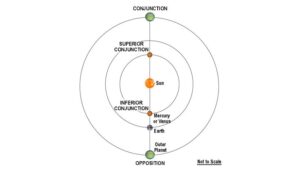
This diagram shows where the inner and outer planets reach conjunctions and oppositions in their orbits.
These objects, including the stars of Ursa Major, are very bright and should be visible from almost anywhere in the Northern Hemisphere. When you first step outside, their light may seem feeble at first, especially in or near urban areas. But sit out in the darkness for a while, and your pupils will dilate enough to see more and more.''
''In spring, only five planets can be seen - Mercury, Venus, Saturn, Mars and Jupiter.'' [Spring Constellations / Mirthy].
Side note: Ancient Egyptians considered 'silver' more important than 'gold'. Had to import it. Question. Would they use that 'natural dependency' to represent something of that inner quality?
'Foreign/Stranger'?
Noble's?
Nefertiti?
 ''El Kab (or better Elkab) is an Upper Egyptian site on the east bank of the Nile at the mouth of the Wadi Hillal about 80 kilometres (50 mi) south of Luxor (ancient Thebes). El Kab was called Nekheb in the Egyptian language (Coptic: ⲛ̀ⲭⲁⲃ Enkhab), a name that refers to Nekhbet, the goddess depicted as a white vulture.[1] In Greek it was called Eileithyias polis, "city of the goddess Eileithyia {i.e., birth of the divine child}. ....El-Kab is in Upper Egypt, located on the east side of the Nile River, almost to the opposite of Hierakonpolis (on the other side of the river) and about fifty miles above Thebes. With the way the river meandered and eroded the rocks and sand, the Nile River is almost level with the town, but according to Somers Clarke in his journal article “El-Kab and the Great Wall,” “in its early youth the town must have stood well above the flood waters.”[5] The site could be described as a bay between sandstone cliffs to the north and south, and this same sandstone was used to build the temples found in this site.'' [Wiki].
''El Kab (or better Elkab) is an Upper Egyptian site on the east bank of the Nile at the mouth of the Wadi Hillal about 80 kilometres (50 mi) south of Luxor (ancient Thebes). El Kab was called Nekheb in the Egyptian language (Coptic: ⲛ̀ⲭⲁⲃ Enkhab), a name that refers to Nekhbet, the goddess depicted as a white vulture.[1] In Greek it was called Eileithyias polis, "city of the goddess Eileithyia {i.e., birth of the divine child}. ....El-Kab is in Upper Egypt, located on the east side of the Nile River, almost to the opposite of Hierakonpolis (on the other side of the river) and about fifty miles above Thebes. With the way the river meandered and eroded the rocks and sand, the Nile River is almost level with the town, but according to Somers Clarke in his journal article “El-Kab and the Great Wall,” “in its early youth the town must have stood well above the flood waters.”[5] The site could be described as a bay between sandstone cliffs to the north and south, and this same sandstone was used to build the temples found in this site.'' [Wiki].
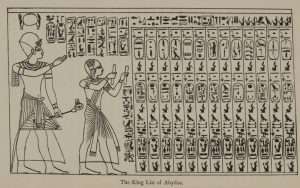
Offerings to Ptah-Seker-Osiris. What about the 'female' aspect? Any 'gaps'?
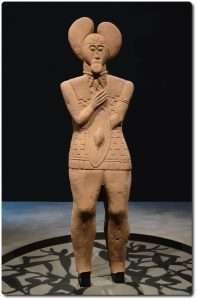
Happy or Sad?
Working example: ''The temple of Nekhbet-Hathor at Elkab - started by Thutmose IV and finished by his son Amenhotep III - {'eighteen' Dyn} or perhaps built at the beginning of the reign of Amenhotep III as there are scenes of him honouring his father...On the east side of the Nile...Old graffiti of one form or another {'tattoo'?}, in the form of votive inscriptions, and possible pilgrim texts from antiquity. Many references to Amun have been defaced during the reign of Akhenaten, BUT were subsequently RESTORED by Sety{i} I, according to a restoration inscription.''
Question. Why would Seti I restore ANYTHING to do with Akhenaten when he was purposely omitted from the Abydos King list?
David / Solomon?
 The frequency of eclipses varies depending on the type of eclipse12. In most calendar years, there are two lunar eclipses, but in some years, one, three, or none occur1. Solar eclipses occur two to five times a year, with five being exceptional1. The average number of total solar eclipses in a century is 66 for Earth as a whole1. Approximately once every 18 months, a total solar eclipse is visible from some place on the Earth’s surface.
The frequency of eclipses varies depending on the type of eclipse12. In most calendar years, there are two lunar eclipses, but in some years, one, three, or none occur1. Solar eclipses occur two to five times a year, with five being exceptional1. The average number of total solar eclipses in a century is 66 for Earth as a whole1. Approximately once every 18 months, a total solar eclipse is visible from some place on the Earth’s surface.
'Eighteen'.
Continued: ''On a curious scene {'peculiar'?} on the facade {'H'} of the temple {just to the right of the main door as you approach}, Prince Khaemwaset is seen in front of his father Ramesses II, with a text announcing his father's Year 42 {'fortytwo'} jubilee. Khaemwaset was known to inscribe momuments with restoration texts, but this seems simply to be an announcing or recording of an event.'' [Page 54-56 'Ancient Egypt' / March-April 2023].
'Ancestors' / to enlarge.
Charles I and II {Stuarts}.
 And/or: "Immediately after his 49th {'fortynine'} name, Marduk, is called 'Lord of the Lands'
And/or: "Immediately after his 49th {'fortynine'} name, Marduk, is called 'Lord of the Lands'
''Mountains Low. Valleys High.'' {i.e., between Karnac and Gebel el-Silsila} - as a means....
The Nile rising above the horizon? Question. To where?
And/or: ''In Judaism the Festival of Weeks (Hebrew: שבועות Shavuot) is a harvest festival that is celebrated seven weeks and one day after the first day of Passover (the Feast of Unleavened Bread) in Deuteronomy 16:9 or seven weeks and one day after the Sabbath referred to in Leviticus 23:16.[11] The Festival of Weeks is also called the feast of Harvest in Exodus 23:16 and the day of first fruits in Numbers 28:26.[12] In Exodus 34:22 it is called the "firstfruits of the wheat harvest."[13] The date for the "Feast of Weeks" originally came the day after seven full weeks following the first harvest of grain.[14][15] In Jewish tradition the fiftieth day was known as the Festival of Weeks.[12][13] The actual mention of fifty days comes from Leviticus 23:16.'' [Wiki].
And/or: Wheat is a grass, while barley and corn are both grains. Additionally, wheat is a winter crop, while barley and corn are both summer crops. Finally, wheat is typically milled into flour, while barley and corn are both used as animal feed.

6th sense?
Something extra: "....archetypal forces are perceptible. Essential wisdom teachings are available to those who have the correct keys; it is the realm of quest and achievement, of challenge and encounter, of initiation and enlightenment. It is not illusory, a figment of the imagination or an anthropological invention. It is not 'heaven', hell or analogous to any drug induced vision. The 'Otherworld' is the mythological reality or symbolic continuum within which we can encounter the archetypal energies of the 'gods' and their acts. The Otherworld has its own valid reality which is not accessible to the 'five' senses, though it is appreciable by the 'sixth' {11th hour?}. It is often spoken of as a state of consciousness, though this is itself an unclear definition, implying a merely psychological foundation for its existence. The Otherworld {'domain'?} exists in its own right, is consistent to its own rules and as a visitable reality is not merely confined to the 'psychic' people." [Page 11 'Mabon and the Mysteries of Britain'].
'Six' petalled flower?
 Side note: A 6 petalled flower head can be seen on the Narmer Palette.
Side note: A 6 petalled flower head can be seen on the Narmer Palette.
N.B. Stoke-On-Trent = The City of Six Towns {in a N-S direction}.
And/or: Sun temples followed large pyramid buildings - beginning with Userkaf {5th Dyn}. Six in total - possibly seven.
'Sixes and sevens'.
''Former Stoke City manager and Celtic and Manchester United player Lou Macari now dedicates his life to running a homeless shelter. In a warehouse in Stoke-on-Trent, he has placed individual 'pods' for people to stay in, providing them with a base from which to turn their lives around.''
Macari for Prime Minister?
And/or: Cheltenham = Spa town. {Alice Roberts}.
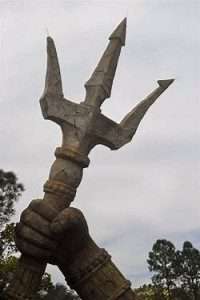
Metal of the mind?
Side note: Waterford. A natural harbour at the mouth of the 'Three Sisters'. S/E Ireland {Munster}. Oldest city in Ireland. Creators of crystal glass.
''The tale of the Westcar papyrus. In this story, King Khufu of the Fourth Dynasty is foretold the demise of his line and the rise of a new dynasty through the accession of three brothers, sons of Ra, to the throne of Egypt.''
At the apex of one.
Memphis. Oldest city? N/W?
And/or: Norwich {'canaries' / ''The Yellows''} = ''The town that WOOL built''. ['Britains Most Historic Towns: Tudor Norwich' / A. Roberts].
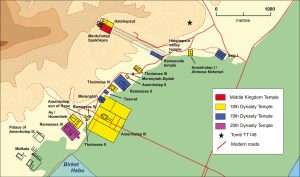
Any 'gaps'?
A work in progress: ''Khufu is well pleased and then says how he has heard that Djedi knows the number of shrines in the enclosure of Thoth, but Djedi claims he does not, he only knows where they are kept. When Khufu asks him to bring them, he says he cannot because it is written that only the eldest son of Reddedet will be able to bring them. When Khufu asks who Reddedet is, he is told that she will bear three sons who will hold high office in the land and replace Khufu's line. Khufu is upset to hear that his own sons will not inherit the throne but is assured that they will rule and, only after one of his sons (Khafre) and then his son (Menkaure), will the son of Reddedet come to the throne. Unlike the earlier tales, this one does not end with the set piece of the king commanding sacrifices but rather with him setting Djedi up with an allowance and a place to live with Hardedef. The story prepares a reader for the last of the five in which the sons of Reddedet will be born.
Khufu and the Magician is often cited by scholars (such as Barbara Watterson) as depicting the king as callous and insensitive. It has also been claimed that the Westcar Papyrus may have influenced the later view (famously expressed by Herodotus) that Khufu was a cruel monarch and despised by the people.....The last story has no narrator and is given in the third person. It tells the tale of the magical birth of the first three kings of the 5th Dynasty: Userkaf, Sahure, and Kakai. Reddedet, wife of a priest of Ra, goes into a difficult labor, and the god Ra, hearing it, sends Isis, Nephthys, Meskhenet, Heket, and Khnum to help her....'' ['World History Encyclopedia'].
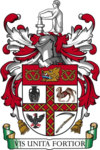
The Potteries.
REFRESHER: "Your code for yes and no, or positive and negative, is a way in which the inner you can make a simple communication with the outer self. The inner you has a great many more senses {'six'?} than the outer five..." [Page 79 'Magic for the Aquarian Age' / M. Green].
Analogy: Elephant Island in Egypt = The Potter {N-S along the Nile}.
Try 'yes or no'. To 'see' if you agree or disagree.
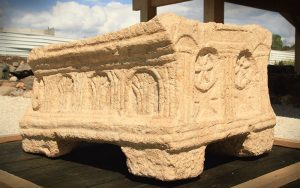 "The basalt sarcophagus of King Menkaura or Merkerinos found in the burial chamber of his pyramid at Giza, was destined to sink in 1938 near the Spanish coast with the ship carrying it to England. Thus there remains only the descriptions and drawings of it made at the time of its discovery. These, however, are of considerable value, since this sarcophagus was a scaled down model of the brick mastabas of the First Dynasty, and thus makes possible a mental reconstruction of the general outlines of these tombs, of which nothing remains but the lower portions....
"The basalt sarcophagus of King Menkaura or Merkerinos found in the burial chamber of his pyramid at Giza, was destined to sink in 1938 near the Spanish coast with the ship carrying it to England. Thus there remains only the descriptions and drawings of it made at the time of its discovery. These, however, are of considerable value, since this sarcophagus was a scaled down model of the brick mastabas of the First Dynasty, and thus makes possible a mental reconstruction of the general outlines of these tombs, of which nothing remains but the lower portions....
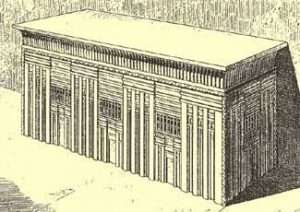
Unconscious = 'shadow' = ''recesses'' = 'crevice'?
The facades of these UNfired brick buildings were composed of broad vertical piers alternating with recesses {niches?} at the back of which narrow, recessed panels simulate the doors through which the deceased's Ka {the permanent part of the being} might come and go at its pleasure. Above each 'false door' is a simulacrum of a lintel {key stone?} under which a roller is often found, intended for the rolled up mat or blind. Each vertical pier is normally composed of four pilasters separated by three niches, {7?} as in the stone sarcophagus. This motif of stepped recesses caused the four facades of these ancient tombs to be animated with light and shadow...The theme of the facade with stepped recesses plays a very important role during the whole of Pharaonic history. We find it once more imitated in stone in the form of the 'false door stele' for the passage of the Ka, before which offerings were made in the Old Kingdom mortuary chapels. It is painted on the coffins of the Middle Kingdom. It is used as a foundation for the King's 'Horus name' during the entire historical period. The oldest known example - found on the stele of the Serpent King, King Djt of the 1st Dynasty.'' [Lucie Lamy].
''Three and four''?
Side note: A wooden coffin found in Menkaure's pyramid. Put there many centuries after the original burial. Speculation as to why {Mark Lehner}. What it does prove is that for what ever reasons persons of authority or ''persons in the know'' - will if a need arises - change things around.
Question. What else has been ''changed around''?
'Possessions' of Tutankhamun?

Lower listening to higher Self?
From a different perspective: ''Follow the way of constant self-enquiry and you will make thinking serve you as a means to freedom, and the very questions you ask yourself will be the stepping stones to the questionless state of the Overself. You will better understand the rationale of the threefold practice - mental quite, placid breathing and self observation - by studying the following picture of man's relation to his Overself. We may say that the person exists by virtue of, through the life force of, and by permission of the Overself......We may picture the personal self {as opposed the Overself} - as sitting in mans body and constantly engaged in viewing the world around through the doorway of the FIVE-physical sense organs.....It has entirely forgotten its place of birth, which is the Overself. Thus it has fallen into the ironical position of being which has not only lost all memory of its 'Father', but actually denies all possibility of the very existence of that father. THAT out of which thought arise is the true being of man, the true Self.'' [Pages 110/111 'The Secret Path' / P. Brunton].
Collective Unconscious and/or Cacye's Hall of Records / Akashic Records etc. - to get into that mind set.
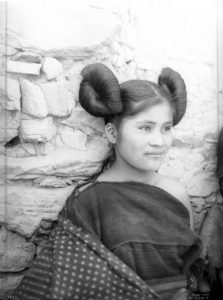
The Hopi Squash Blossom Butterfly Whorls. ''Flowers bloom abundently in the worlds described by visionaries and mystics, and they bloom not just with luminosity but with MEANING for the one who beholds them.'' Same book.

A Celtic Warrior. 'Three' {petals?} that close the loop on the golden torc. AND/OR: Same expression on the face of a stone sculpted head of a woman found on 'Dead Queen's Moor' with a torc in her HAIR. ['Expedition Unknown: The Warrior Queens Treasure' / Disc.History / 25.9.20]. Question. Where would 'live queen moor' be represented? In other words. Whats the ''remedy'' for snake bite? Enlarged THROUGHOUT.
Primordial soup to enlarge.
And/or Torc {a closed one} in relation to the Egyptian Shen Ring? One loop or two?
''I encountered another old gentleman, the writer A. Huxley.....We discussed what happens when one looks at flowers in the psychedelic state.....How the three ordinary flowers {lotus?} as described in his 'Doors of Perception' - flung open doors into the very heart of the universe....I understand why in so many of the worlds myths and scriptures, we find that god began by making a garden....In paradise....which in itself is a Persian word, meaning 'enclosed garden'....'' [Page 185 same book].
Side note: ''Tacitus described the result of the battle between Boudica and the Romans as 80000 dead but only 400 Romans.''
Question. What does '8' and '4' represent within subject material. What about the total? And/or: Was Tactitus a member of any Mystery club i.e., Mithraic/Eleusis etc.
Side note: ''There is a mystery in the number three that must not be 'forgotten', for it represents the operation of 'Fire'..... for 1,2,3, makes 6, the six days of creation , where the work was perfected, and then rested on the 7th day.'' [Page 21 'A Discourse of Fire and Salt'].
N.B. The letters 'pyr' of the word pyramid = 'fire' link.
Reason for its chose?
Imhotep? i.e., externalizing that inner awareness.
Shamanism?
And/or - it was taught in the old days kings were 'sacrificed' in year 6 but could 'resurrect' in the 7th or 8th. ['The Sky Religion of Egypt' / G. Wainwright].
Try Menkaure.

First male or 'female'?
And/or: ''According to ancient and Neoplatonic systems, 6 is the most purrfect number as it is both the sum and the product of its parts: it is formed either by adding 1+2+3 or by multiplying same numbers. Furthermore it is the product of the first male {2} and the first female {3} numbers. From the psychologists viewpoint, it represents a combination of analysis and synthesis in its simplest form: 2x3. It summarizes all the plane figures of geometry {point, line and triangle}, and since the cube is composed of 6 squares, it is the ideal form for any closed construction. Biblical exegetes were delighted to discover these mathematical qualities, for they knew that god had completed his work of creation in 'six' days....Six is not purrfect because god had 'created' the world in 6 days; rather, god has purrfected the world in 6 days because the number was perfect." [ From the chapter : The Perfect Number of the Created World / 'The Mystery of Numbers' / Annemarie Schimmel].
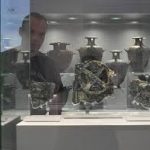 Continued: "The occultist who uses elaborate diagrams of astral planes and etheric bodies liberally sprinkled with Sanskrit words can be as far from Gnosis as can the psychologist who employs clever two-dimensional maps of the psyche with short hand expressions such as the ''shadow,'' the ''anima,'' or the ''wise old man,'' as though these were concrete realities instead of symbolic pointers to incomprehensible mysteries in the vast recesses of the unconscious." [Page 36 'The Gnostic Jung' / S. Hoeller].
Continued: "The occultist who uses elaborate diagrams of astral planes and etheric bodies liberally sprinkled with Sanskrit words can be as far from Gnosis as can the psychologist who employs clever two-dimensional maps of the psyche with short hand expressions such as the ''shadow,'' the ''anima,'' or the ''wise old man,'' as though these were concrete realities instead of symbolic pointers to incomprehensible mysteries in the vast recesses of the unconscious." [Page 36 'The Gnostic Jung' / S. Hoeller].

Menkaure with a goaty in a 'pyr'amid shape. 'Flat' top?
Working example {i.e., especially in relation to ''basalt''. Other 'keys' highlighted}: "It has taken me virtually 45 years to distil within the vessel of my scientific work the things I experienced and wrote down at that time. As a young man my goal had been to accomplish something in my science. But then, I hit upon this steam of lava, and the heat of its fires reshaped my life...." [Page 225 'Memories, Dreams and Reflections' / C. G. Jung].
Question. If the 'offset' pyramid = Basalt. OR more importantly what ''basalt'' represents. What about the other two. One step back - two forward? Which implies a direction.Or more importantly - a mind set.
 continued..."In the oldest inscribed tomb discovered, going back to the time of Djoser, a long corridor is found whose smooth east wall is covered with paintings {unrolled?}. The west wall is the exact copy of a stepped facade from the 1st Dynasty, with the difference, that at the back of the eleven niches contained between the twelve pilasters there are eleven wood panels admirably sculpted with the titles and representations of the tombs owner, Hesy. The pilasters represent in paint the wooden piers held together by dowelled crossbeams {'tongue/groove': Stonehenge?} on which brightly coloured tapestries were hung. The geometric motifs of these tapestries evoke a particular technique: 'tissage aux cartons'. On the facade of the First Dynasty tomb of King Kaa {Aha?} {i.e.,last king of 1st Dynasty} are vestiges of paintings identical to those in the tomb of Hesy...
continued..."In the oldest inscribed tomb discovered, going back to the time of Djoser, a long corridor is found whose smooth east wall is covered with paintings {unrolled?}. The west wall is the exact copy of a stepped facade from the 1st Dynasty, with the difference, that at the back of the eleven niches contained between the twelve pilasters there are eleven wood panels admirably sculpted with the titles and representations of the tombs owner, Hesy. The pilasters represent in paint the wooden piers held together by dowelled crossbeams {'tongue/groove': Stonehenge?} on which brightly coloured tapestries were hung. The geometric motifs of these tapestries evoke a particular technique: 'tissage aux cartons'. On the facade of the First Dynasty tomb of King Kaa {Aha?} {i.e.,last king of 1st Dynasty} are vestiges of paintings identical to those in the tomb of Hesy...
11th hour ?
Refresher: ''Taking a long route to a destination is to 'go round the houses'....''

Left or right eye? Recall Horus 'losing' an eye to Set. When did he get it back?
continued..."In the book of Coming Forth into Day, written on papyrus rolled up and placed close against every mummy, the 'Osiris name' {deceased} identifies themselves one by one with all the Neterw {aspects of, i.e.,represented by some as '' I's '' - both pos./neg.} - the divine entities, whom he declares that he {now?} knows. These numerous divinities {polytheism?} are, it is written, the very 'limbs' of god, {i.e.,as one example the multiple 'limbs' of Shiva?}, his attributes or hypostases {'raised arms'?}. Thus by virtue of the 'divine spark' which enlivens him during his existence, the human being participates at every moment in the process of becoming conscious...Of the images chosen from natural phenomena to serve as symbols for these abstract notions, one of the most typical is the daily disappearance of the sun and its rebirth in the morning {Book of Aker link -therefore 'horizontal' link?} Now the sun is one of the two Eyes of the 'supreme being', and the recovery of this Eye represents, for man, the victory over all negative powers and the enrichment of his own consciousness {Maat}, the ultimate goal of existence..." ['Ancient Egyptian Mysteries' / Lucie Lamy].
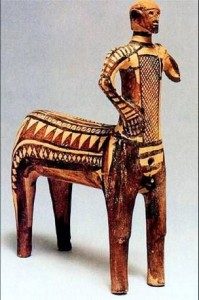
'Higher' or 'lower' ?
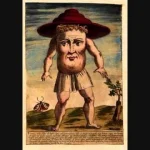
Master or servant.
Side note {Analogy; in relation to ''rolled/UNrolled''}: "Some I's of course, are stronger than others. But it is there own conscious strength; they have been created by the strength of accidents or mechanical external stimuli. Education, imitation, reading, the hypnotism of religion, caste and traditions, or the glamour of new slogans, create very strong I's in mans personality, which dominate whole series of other, weaker, I's. But their strength is the strength of the 'roll's' in the centers. And all I's making up mans personality have the same origin as these 'roll's' ; they are the result of these external influences; and both are set in motion and controlled by fresh external influences. Man has no individuality. He has no single big I. Man is divided into a multiplicity of small I's...This explains why people so often make decisions and so seldom carry them out...Thus in one teaching, man is compared to a 'house' {'Temple'?} in which there is a multitude of servants but no master and no steward {'squire'?}. The 'servants' have all forgotten their duties; no one wants to do what he aught; everyone tries to be 'master'...The comparison of a man to a house awaiting the arrival of the master is frequently used in Eastern teachings which have preserved traces of ancient knowledge, and, as we know, the subject appears in various forms in the Gospels." ['In Search of the Miraculous'].
Weak 'legs' / Strong legs?
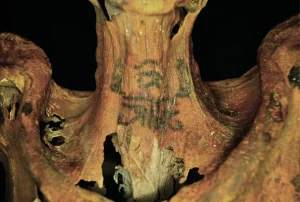
A heavily tattooed woman from Deir el-Medina. The Eyes of Horus and nfr tattoos on her neck mean ‘to work well’.

Above or below the belt?
Something extra: The four birds which are released at the coronation of the Horus-King bear the names and distinctive heads of the Four Sons of Horus, protectors of the four principal organs of the body. They are themselves guarded by four female protective divinities. Each flies towards one of the cardinal points, which are given in the following order: ‘Imset: go to the south and announce to the divinities of the south that the Horus [the king] has taken the White Crown and has united it with the Red Crown. ‘Hapi: go to the North and say to the divinities of the North... ‘Dwa-mwut-f: go to the West and say to the divinities of the West... ‘Kebehsenwf: go to the East and say to the divinities of the East …
Imset, with human head, is protector of the liver and is under the guardianship of Isis, and Isis is said to come from the west (Pyramid Texts, 1255). Hapi, with baboon’s head, is protector of the lungs, and is under the guardianship of Nepthys who, according to the same source, comes from the east. Dwa-mwt-f, with dog or jackal head, is protector of the stomach, and is under the guardianship of Neith, divinity of weaving and of the red crown of the north. Kebehsenwf, with falcon’s head, is protector of the intestines, and is thus under the guardianship of Selket, the scorpion divinity, called ‘she who causes the throat to breathe’, and who is associated with the white crown of the south (Pyramid Texts, 1375).
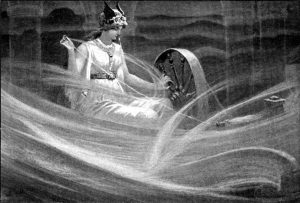
Whilst often thought of in terms of a stern woman, Ananke is also often depicted in serpent form, and it was said that the serpentine coils of Ananke and Chronos crushed the egg of creation to bring order to the cosmos and then encircled the universe, directing the passage of the heavens and the forward motion of time.
With most surviving ancient sources following the Hesiod genealogy of the gods it is perhaps not surprising that Ananke is rarely mentioned in surviving sources, although her name is used occasionally in Prometheus Bound (Aeschylus) and the Argonautica (Apollonius Rhodius). The Greek traveller and writer Pausanias would also state that in Corinth there was a temple dedicated to Ananke and Bia.
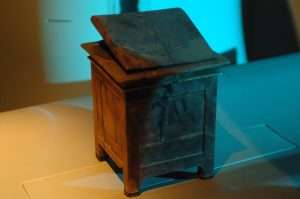
Solitary 'tooth' {and liver} found in a 'square' box belonging to Hatshepsut.
This arrangement, suggested by-the texts, is actually that of the female divinities encircling the outer Canopic Chest of gilded wood in Tut-ankh- Amun’s tomb. The ‘function’ of each of these divinities then reveals itself as follows:
Imset, with human head, protector of the liver, under the guardianship of Isis at the west, is the steward par excellence. From the material received by the stomach (which precedes the liver) he stores what is necessary for the manufacture of sugar, fats, the albumens and urea. He thriftily sets aside the iron from the used red corpuscles to be reutilized at a given time, and he transforms their haemoglobin into bilirubin, the pigment that colours the bile which he secretes in large quantities. {'Egyptian Mysteries' / L. Lamy}.
And/or: "There is some debate as to whether or not there were two Scorpion kings. The owner of the Scorpion Macehead is thought to be Scorpion II (who ruled sometime between c.3200 and 3000 BC), to distinguish him from a possible earlier Scorpion I, a ruler of Upper Egypt in the Naqada III period, and a possible owner of tomb U-j at Abydos. King Scorpion II is the largest figure on the macehead, identifiable by his regalia and size. He wears the White Crown of Upper Egypt and a bull’s tail hangs from his belt – the tail a symbol of royal strength in early iconography. Flanking him are fan-bearing attendants who emphasise his status.
Elephant ivory 'girdle' belt rings with {house keys?} hanging?

''Chicks''? Try ''basket'' to attempt a MIND SET.
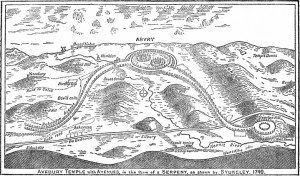
Silbury Hill {bottom middle}. Final 'structure' to be made. Made from baskets of soil - limestone brought from afar. 'Antlers' found on top layer.
Notably, the king is depicted with bare feet, which in Egyptian art indicates a sacred context
(going barefoot implies ritual purity). In his hands, he holds a hoe. This is no ordinary farming scene, however. The king’s action – cutting into the ground with the hoe - almost certainly represents a ceremonial act to restore the land’s fertility or irrigation trench. Two assistants help: one carries a basket (perhaps to remove soil) and another holds a bundle of what could be grain or reeds. Beneath their feet runs a carved channel of water or mud, where smaller figures are shown waist-deep, as if wading or clearing debris.

The cedar boat of Khufu.
In the background, a palm tree grows inside a walled enclosure, and the prow of a boat juts into the scene, hinting that the Nile River is nearby. All of these details evoke the idea of bringing water to the land. Instead of depicting the king in battle, King Scorpion is portrayed as a provider – literally digging to let life-giving waters flow. By opening a waterway, he is symbolically ensuring a bountiful harvest and the renewal of his realm. Some scholars consider this scene the earliest depiction of the ‘Opening of the Dykes’, a ritual ceremony that probably took place at the start of the Nile flood season. In that ceremony, a ruler or official would cut through earthen banks to release the inundation into the fields, activating the agricultural cycle. On the macehead, King Scorpion’s act of digging could represent just that: the pharaoh personally initiating the floodwaters that will nourish the land.
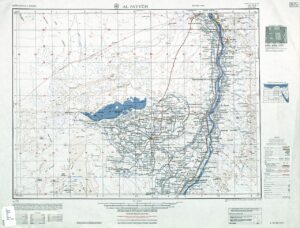
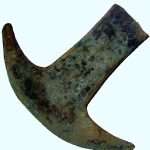
'Hoe' money.
This portrayal casts the king not as a warrior, but as a steward of the earth – the one who makes the Nile rise and the crops grow. Beyond its practical agricultural meaning, the scene carries a deeper cosmic significance. In later Egyptian mythology, the act of separating land from water was the first step in creation: the primeval mound emerged from the waters of chaos (Nun) to establish the world. By ritually digging a canal and separating the soil, King Scorpion is re-enacting this moment of creation. In essence, he is not just irrigating fields; he is replaying the first act of creation and bringing order out of chaos. The simple hoe in his hand becomes a tool of divine power. Seen in this light, the canal scene is a profound statement about kingship: the king as a renewer of the world, merging practical duties with a sacred, cosmic role." {'Ancient Egypt' / Nov-Dec 2025}.
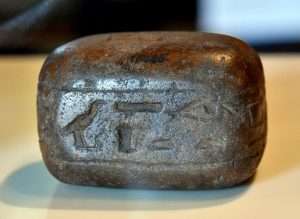
A stone inscribed with_the name_of Senenmut from Thebes Egypt. Question. ''Set in Stone'' therefore...? {Help section to enlarge}. Sarcophagus shape with closed lid? Where would it be opened?
A working example: ''Senenmut first enters the historical record on a national level as the "Steward of the God's Wife" (Hatshepsut) and "Steward of the King's Daughter" (Neferure). Some Egyptologists place Senenmut's entry into royal service during the reign of Thutmose I, but it is far more likely that it occurred during either the reign of Thutmose II or while Hatshepsut was still regent and not pharaoh. After Hatshepsut was crowned pharaoh, Senenmut was given more prestigious titles and became high steward of the king.''

Astro ceiling in Senenmut bare tomb chamber. 'Folded / UNfolded'? Naked/Clothed?
And/or: ''Cleopatra may be the most famous woman of ancient Egypt, but far more significant was Hatshepsut, a female pharaoh who reigned for nearly twenty years in the 15 century B.C, during the early period of the New Kingdom....The book investigates the circumstances that allowed her to become king; her relationship with her young-NEPHEW -stepson Thutmose III and particularly Senenmut, Hatshepsut's architect and STEWARD...'' [Inset cover 'Hatshepsut: From Queen to Pharaoh' / Metropolitan Museum of Art].
N.B. "In the Pagan Mysteries, beginners were known as 'mystae', meaning 'those with eyes closed', and enlightened initiates were known as 'epopteia' meaning, 'those who can see'." [From the book by T. Freke and P. Gandy].
'Mans Search for Meaning' / Viktor Frankl.
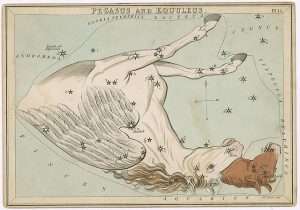 continued..."The King is the 'son of Re'. As king of the north and south, master of the two crowns {Horus - Seth} - he is felt to have mastery over antagonistic natural forces, and be capable of assuring cosmic order. The royal tombs are of an 'anthropocosmic' character. At Thebes, for example the burial chambers {of some} are painted as though a huge papyrus were UNrolled around the walls on which is inscribed the Book of What is in the Dwat. This 'book' tells the nightly journey of Re - through the regions of the twelve hours of the night, each of which has a 'gate' 'guardians' and 'pilots'...Hour after hour, phase after phase, whether imagined by the scarab's gestation or by the human metabolism, the metamorphosis of the densest matter, into the most volatile and subtle energy is accomplished - the return, now conscious - to the origin. [All above extracts from the book 'Egyptian Mysteries'. Emphasis - this readers].
continued..."The King is the 'son of Re'. As king of the north and south, master of the two crowns {Horus - Seth} - he is felt to have mastery over antagonistic natural forces, and be capable of assuring cosmic order. The royal tombs are of an 'anthropocosmic' character. At Thebes, for example the burial chambers {of some} are painted as though a huge papyrus were UNrolled around the walls on which is inscribed the Book of What is in the Dwat. This 'book' tells the nightly journey of Re - through the regions of the twelve hours of the night, each of which has a 'gate' 'guardians' and 'pilots'...Hour after hour, phase after phase, whether imagined by the scarab's gestation or by the human metabolism, the metamorphosis of the densest matter, into the most volatile and subtle energy is accomplished - the return, now conscious - to the origin. [All above extracts from the book 'Egyptian Mysteries'. Emphasis - this readers].
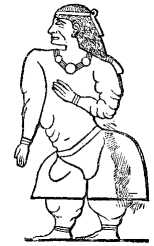
'Fat' of the land?
Side note: On the navel of king Tut was found a scarab. 'Middle' of the human form - as with the senet board game - ''the middle way'' {or 'passing game'}.
''In {'Pop'} music - the 'middle eight' = eight bars.'' ['The Chase' / 10.1.22].
And/or: ''In music there are eight semi quavers in a Minim.''
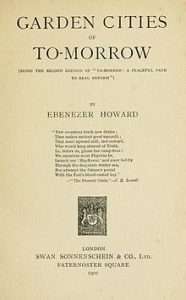 N.B. In the game of Bingo, the number eight can be represented with ''garden gate'' and/or one ''fat lady.''
N.B. In the game of Bingo, the number eight can be represented with ''garden gate'' and/or one ''fat lady.''
Rolled/UNrolled...Fired/UNfired...East/West/South/North...represented in one form or another with analogies to 'light' and 'dark', {''stepped recesses''} - i.e., with the Book by ...'Day'.. and/or the one by 'night' {i.e.,'in the Dwat'}. ALL as a MEANS to an understanding - from the dawn of human kind. Question. Conspiracy obsessives?
Side note: "The occultist who uses elaborate diagrams of astral planes and etheric bodies liberally sprinkled with Sanskrit words can be as far from Gnosis as can the psychologist who employs clever two-dimensional maps of the psyche with short hand expressions such as the ''shadow,'' the ''anima,'' or the ''wise old man,'' as though these were concrete realities instead of symbolic pointers to incomprehensible mysteries in the vast recesses of the unconscious." [Page 36 'The Gnostic Jung' / S. Hoeller].
Analogy..."There is a mosque whose foundation was laid from the first day on piety; it is more worthy of thy standing forth therein. Which then is best? - he that layeth his foundation on piety to God and his good pleasure? - or he that layeth his foundation on an undermined sand cliff ready to crumble to pieces?" [Quran 9:108/109].
In answer to that question, you could say: maybe these authors who do write about this subject material are obsessive - if only in the sense of their own point of view - after all nothing 'concrete' has yet been proven by it. At the end of the day {or night} - it seems nothing more than opinions - personal ones? It seems nothing more than ''abstract'' stuff - passed around - and regurgitated {'jackal' / 'vulture' or both?} each generation by different authors.
So the {inner?} question to that answer could be - who are these authors who constantly spend the time and effort to write about it ,i.e.,what type of persons are they? Do they all belong to a certain 'family' or tribe or profession or religion or church or monastery or club or... etc, etc,. In other words using the above {as one example only} - who is Lucie Lamy?

The Olmec heads. Holes/blotches PURPOSELY made into the face. ''It was probably done by marauding conquerors trying to break up evidence of this ancient culture, but it was to big to damage so they just pushed it over onto its side.'' ['Raiders of the Lost Past: The Olmec Heads']. 'Spots/Stripes' to enlarge.
James the Just?
'Justified and Ancient' / The KLF. ''Fishing in the rivers of life.''
''The swan is white without spot..." quote by Leonardo da Vinci.
Sacha Dench - 'The Human Swan'.
"In Greek mythology the swan was the bird consecrated by Apollo; the symbol of harmony..."
"46 bronze water birds were found in a pit north of the Emperor's tomb {1st Dyn/China}. Feeding in an ornamental pond. Herons and Swans. The type of bronze sculpture that seem to appear almost overnight. Nothing like it had be seen before the 1st emperor." ['Greatest Tomb on Earth: Secrets on Ancient China' / BBC / 2016}.
Side note: 46 skeletons found in the {'tomb'?} complex at West Kennet Long Barrow/England.
2:1`to enlarge.
The program indicates a connection between East and West 1000 years earlier than today's academics thought possible. Can you see other 'connections' that the narrators have not even considered? Others enlarged - from same program - elsewhere, i.e.,a bronze chariot was also discovered. Try ''chariot''.
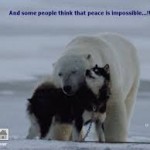
One of a few animals brave enough to venture deep into the north.
A change of pace...The author of the 'Source Field Investigations,' [chapters 6 and 19] attempts to understand the same {i.e.,''esotericism'' in general} within his own field of interest, but because this subject has not been added to the 'equation' a full understanding cannot be the result. As proven by the authors understanding within the books, Zoroastrianism chapter. His main references, being from a book that only explain it in its historical context. Exoteric equivalent, {similar to the authors of the 'Master Game'. Explained elsewhere}. External as opposed to that inner one. Hence the reason he concludes - that their ancient home must have been in the Arctic, ''because of the weather patterns mentioned in the Vedas.'' 'Arctic conditions,' within this subject is indicative of a learning process [potential of, i.e.,once learnt]. Cold in relation to warm. 'Lower' in relation to 'higher.' South in relation to North. {or vice versa, depending on the 'intention' of author}. Atlantic {Nova Scotia link} - relative to the Mediterranean. Boundaries that have to be 'investigated' for an understanding to take place.
'The World Turned Inside Out: Henry Corbin and Islamic Mysticism' by T. Cheetham.

Analogy: ''The Myth of Horus narrated on the second register of the inner walls of the Edfu Temple for example, features an epic victory of good versus evil in the killing scene where Horus the Son of Isis impales Seth in the form of a red Hippopotamus (Fairman, 1935: p. 27). The concept of such an encounter can be traced back to pre-historic Hierakonpolis, where the figurines of a falcon and a hippopotamus were found buried together inside a post-hole as a foundation deposit in the southeast corner of a pillared hall (structure 7) in the elite cemetery HK-6 (Droux & Fried-man, 2007: pp. 7-9). This structures dates to the mid-4th Millennium B.C.E. The southeast corner hints that the two contenders were imagined dwelling in that area of the horizon where Sirius, Venus, and Mercury at times hover.''

Perhaps someone may say, why fret concerning a thing that ought to be left to fall peaceably into oblivion? Books, such as those written by Moses, were for times of obscurity. The best thing to do in radiant ages such as ours is to abandon them to the people who reverence them without understanding them. The savants have no need of being instructed in what the law-maker of the Hebrews thought four thousand years ago in order to build the cosmogonical and geological systems; our encyclopedias are full of admirable things on this subject. Admirable indeed, if one judges by the number; but so vain, so futile, that whereas the book of Moses has sustained itself for forty centuries and held the attention of peoples, a few days suffice to overthrow those with which one attempts to oppose him and to extinguish the trifling sparks which are raised against this imposing meteor. {Hermetic Interpretation of the Social Origins of the State in Man / F. d'Olivet}.
"That these examples of canine cosmic tricksters, manifesting in the sky's as planet killers such as comets and asteroids, come from Europe and not Anatolia need not concern us, for similar cosmological themes exist in the sky lore much closer to Gobekli -tepe. The Bundahishn, a sacred text of Zoroastrianism, a 'religious' doctrine that once thrived in Iran, India, and Armenia, contains its own graphic account of a Ragnarok-style scenario, which includes the following somewhat enigmatic lines: 'As Gokihar falls in the celestial sphere from a moon-beam on to earth, the distress of the earth becomes such like as that of a sheep when a wolf falls upon it'. Gokihar is generally translated as 'meteor', that is, an incoming comet fragment, asteroid, or bolide of some sort, while the name itself has been interpreted as meaning 'wolf progeny'. The double allusion in this statement to the wolf is significant, and one can envisage, and even feel, the force of the assumed impact, here likened to the manner that a sheep's legs bend and collapse when pounced on by a wolf. That Gokihar's appearance heralds some kind of apocalyptic event seems confirmed in the verse that follows: 'Afterward, the fire and halo melt the metal of {the archangel} Shatvair, in the hills and mountains, and it {the molten metal} remains on this earth like a river.' If the impact of a comet fragment or asteroid is implied, then the presence afterward of firestorms and rivers of molten 'metal' caused by the eruption of volcanoes would be inevitable." [From the book by A. Collins. Emphasis, this readers]. Try ''metal/mettle'' and/or ''wolf'' to 'see' subject material in its broader 'form'.
The Settlers of Catan.
And/or: ''In artworks a halo is known as a 'gloria'....'' ['The Chase'].
''Grace''?
'Dark night of the Soul'?
''The element Palladium is named after the asteroid Pallas.'' ['The Chase'].
''It has the atomic number fortysix.'' [Wiki].
And/or: ''Ares = Mars: The prime nature of things...gives individual form...The 'wolf' is the animal of mars...'' [Pages 140/1 'Alchemical Studies' / C. G. Jung].
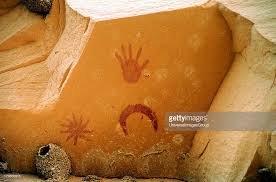
Sighting of a Supernova? Or is that information used to define something else? Question. Where would the 'horned' moon fit into that equation?
Side note: Comet or supernova {nova?} as the most likely {prediction; therefore ''Oracle'' link} - that forewarns - the further development of something. That inner one. Recall the information of ''Antares'' - the 'heart' of the Scorpion. That link to the foundation of something.
'Saturn and the Theoretical Foundation of an Emerging Discipline'. Enlarged throughout.
Continued: As it is with the Mona Lisa painting. Those icy topped peaks that represent something of that 'inner' journey. Explained elsewhere. The word 'Atlantis' also mentioned, {next page of same book, i.e.,by D. Wilcock} as are the words ''apocalyptic quality'' in relation to ''Zoroastrians concepts about the end of the age,'' {next page on}. Both only understood in that 'external' sense. The word 'Atlantis' indicative of water and copper,{red ochre link. Symbolic of}. That link to the Great Pyramid, i.e.,"Strangely, the Great Pyramid is also located at the exact center of the earths land mass, the one true axis mundi. Its East - West axis sits precisely on the longest land parallel, covering the greatest amount of land and the least amount of water on earth.....'' [Chapter seven, D. Wilcock book].

'Flag' of Ethiopia . Within the 'Horn' of Africa. Supernova?
'Red' indicative of the shadow/negative aspect, [explained within], of which the 'smallest' of the three pyramids has more of it 'externally' than the other two. The two 'others' more limestone than red granite. Limestone; being 'lighter', both in structure and texture: used as a representation of that 'internal awareness'; as most know within this subject. Positive relative to negative. Known in relation to unknown. Which again if correct, gives a possible indication as the order of each 'build'.
Atlantis story indicative of same. But now in relation to what 'water' represents, within this subject. Both salt and fresh. Explained elsewhere. As is the meaning of the word ''apocalyptic,'' if only in relation to this subject.
Atlantic/Pacific {''duality''}?
Understanding this subject {as a 'whole'} gives an answer to the true ''mindset of the peoples'' - beyond a comet explosion...
Question. If East to West represents a ''land mass.'' Where on that same map would be a representation of a ''water mass?''
Continued: "Most likely a disintegrating comet was the culprit, although we cannot discount other possibilities, such as an asteroid or meteor impact, or a close supernova event. What IS important, however, is its impact on the mind set of the peoples existing in the Euphrates Basin at the termination of the Paleolithic age, for there is compelling evidence that a memory of this devastating cataclysm lingered on in the minds of the Gobekli tepe builders themselves." [From the book by A. Collins].
Something did indeed linger on in those minds - and still does - that universal one.
Side note: The monasteries of Meteora are one of the world's most spectacular sacred sites. Located in the Thessaly region of north central Greece, the towering rocks of Meteora, meaning 'rocks in the air', have long evoked awe in human beings.
Paleolithic remains indicate settlements around the stones from between 100,000 to 40,000 BC, and hermits and ascetics have lived in the area since long before the Christian era. The arrival of Christianity began in the 8th century, organized monastic communities had developed by the 12th century, and by the mid 1500's sixteen Greek Orthodox monasteries had been constructed upon the spires of stone.
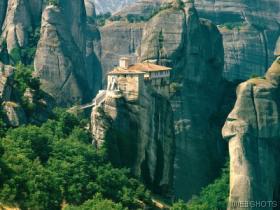
Above or below the clouds?
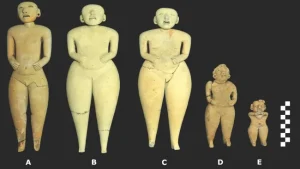
Found on the top of one. Femurs?
The monasteries, accessible only by baskets lowered by ropes, became a center of scholarship and art until the mid 18th century when popular interest in monasticism declined. Most of the monasteries were abandoned and today only six survive, of which four can be visited (they can now be reached by bridges and rock-cut steps).
Previously a remote area, the construction of a highway in the early 1960's made the monasteries accessible to pilgrims and tourists. This influx of visitors however, has discouraged new monks from joining the monasteries and compelled others to move to Mt. Athos in search of solitude and privacy.
The word Meteora, as previously mentioned, means literally ‘hovering in the air’ and of course brings to mind the word meteor. What created this rare geological phenomenon is one of the mysteries of nature and there are many theories though they remain theories and none have been proven. But as amazing a marvel of nature as these giant rocks are the buildings on the top of these is a marvel of man and seem just as miraculous."

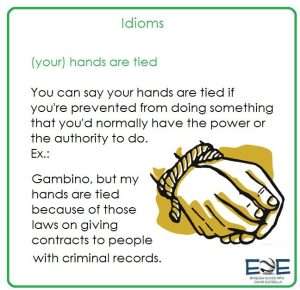 Side note: In Canis Minor such keys mentioned as Pit / sycamore / Weeping one / Sisters of Canopus and lastly 'Crossing of the Water Dog' . [Page 133/4 'Star names: Their Lore and Meaning].
Side note: In Canis Minor such keys mentioned as Pit / sycamore / Weeping one / Sisters of Canopus and lastly 'Crossing of the Water Dog' . [Page 133/4 'Star names: Their Lore and Meaning].